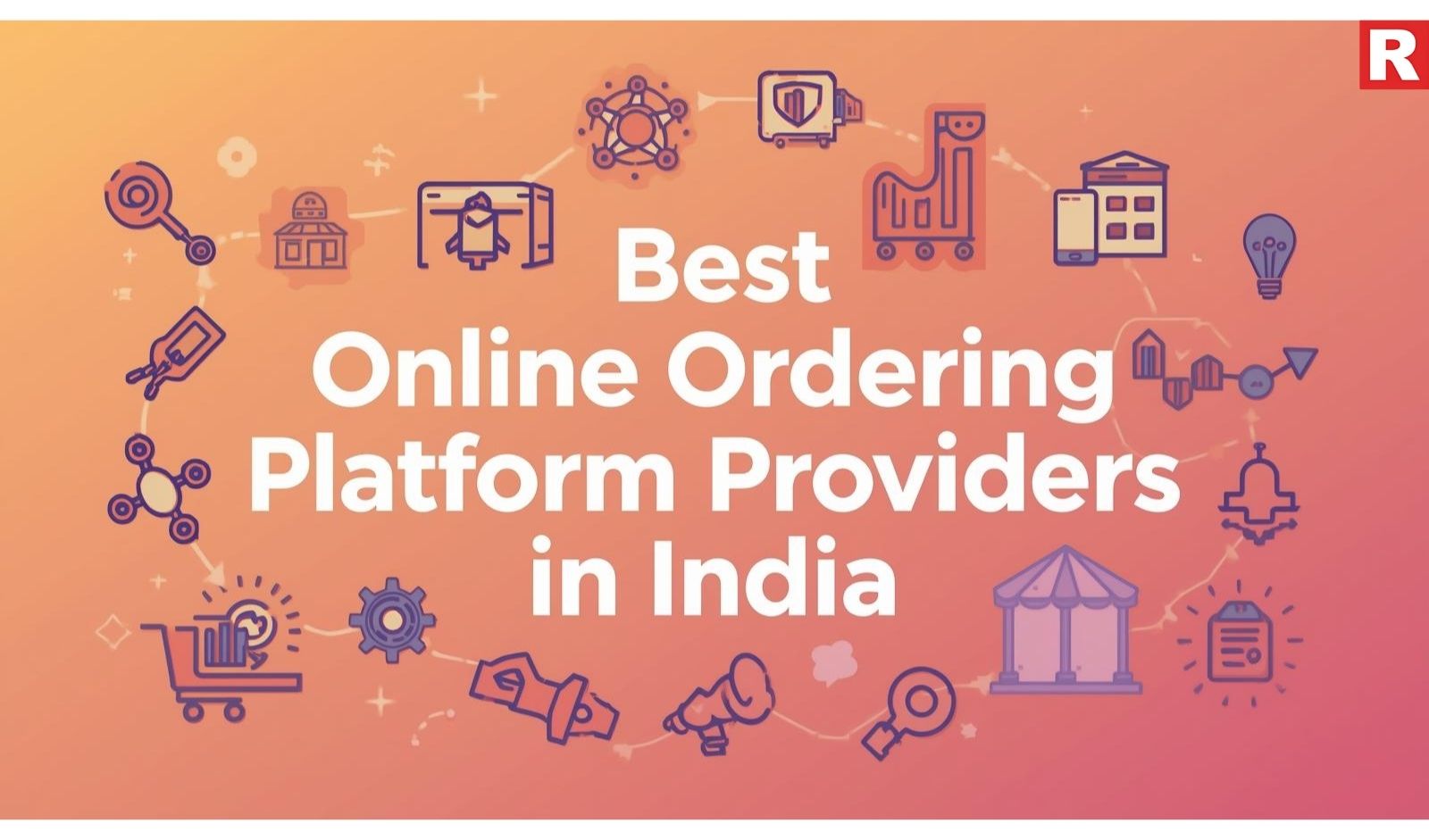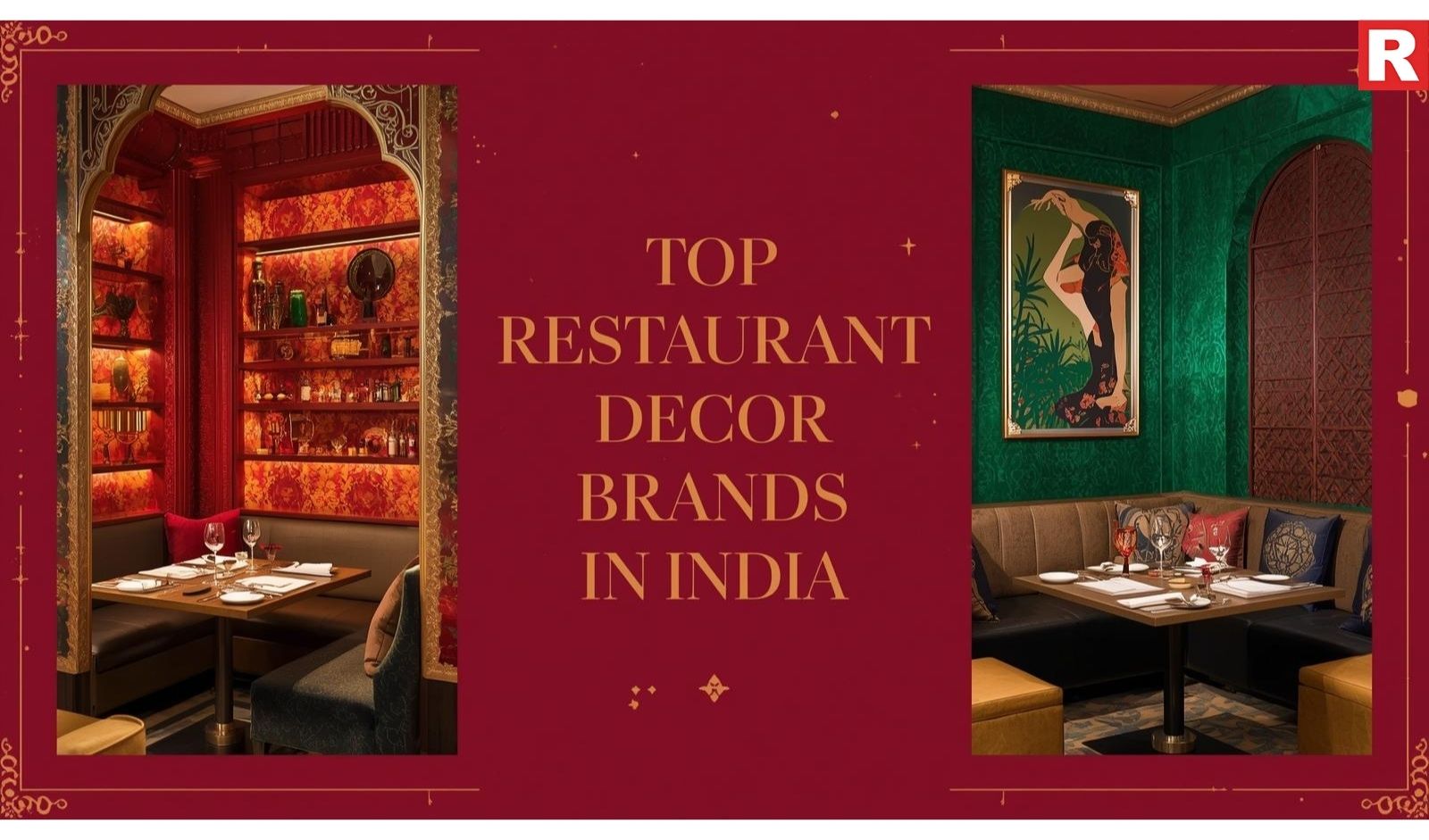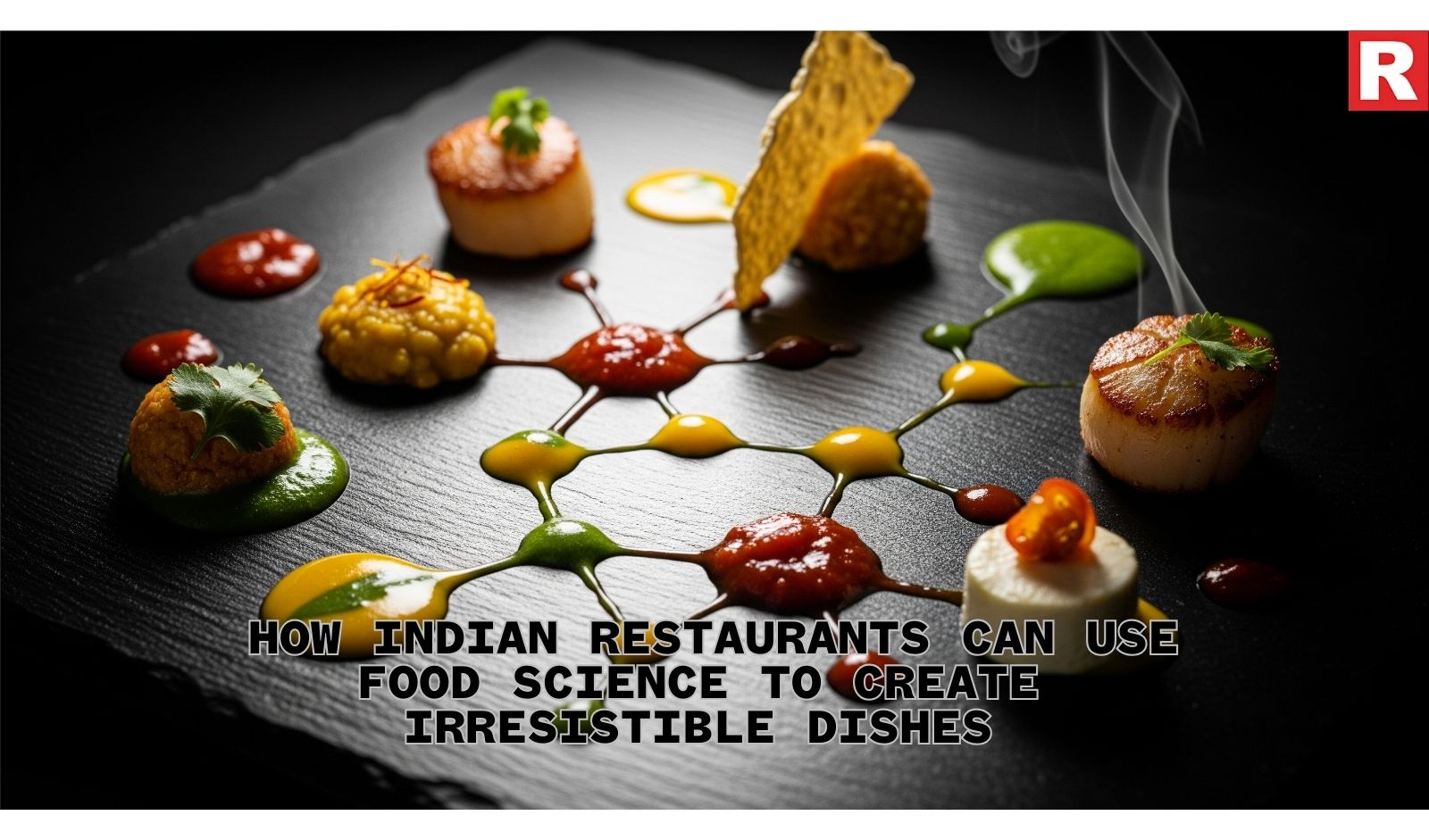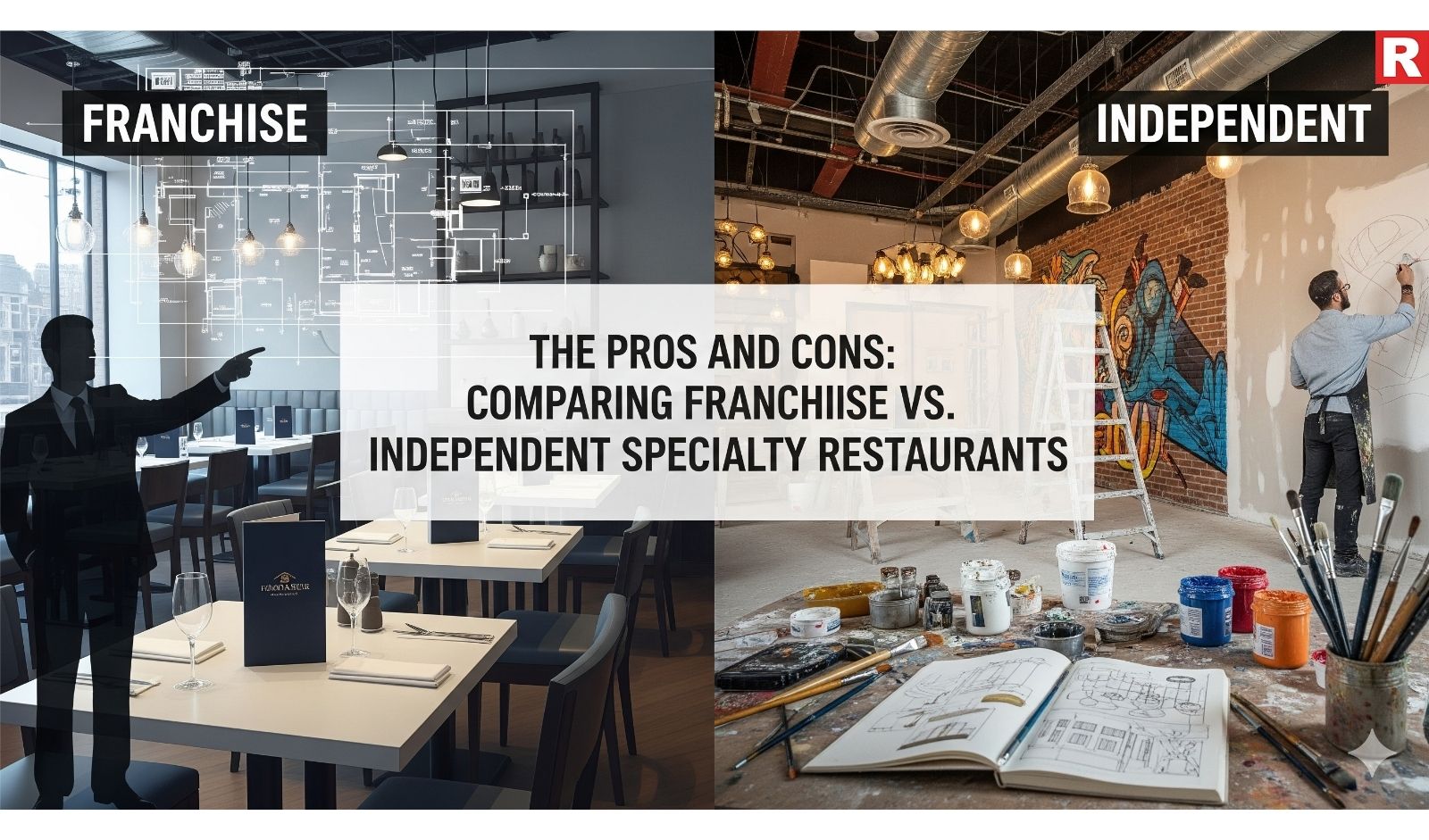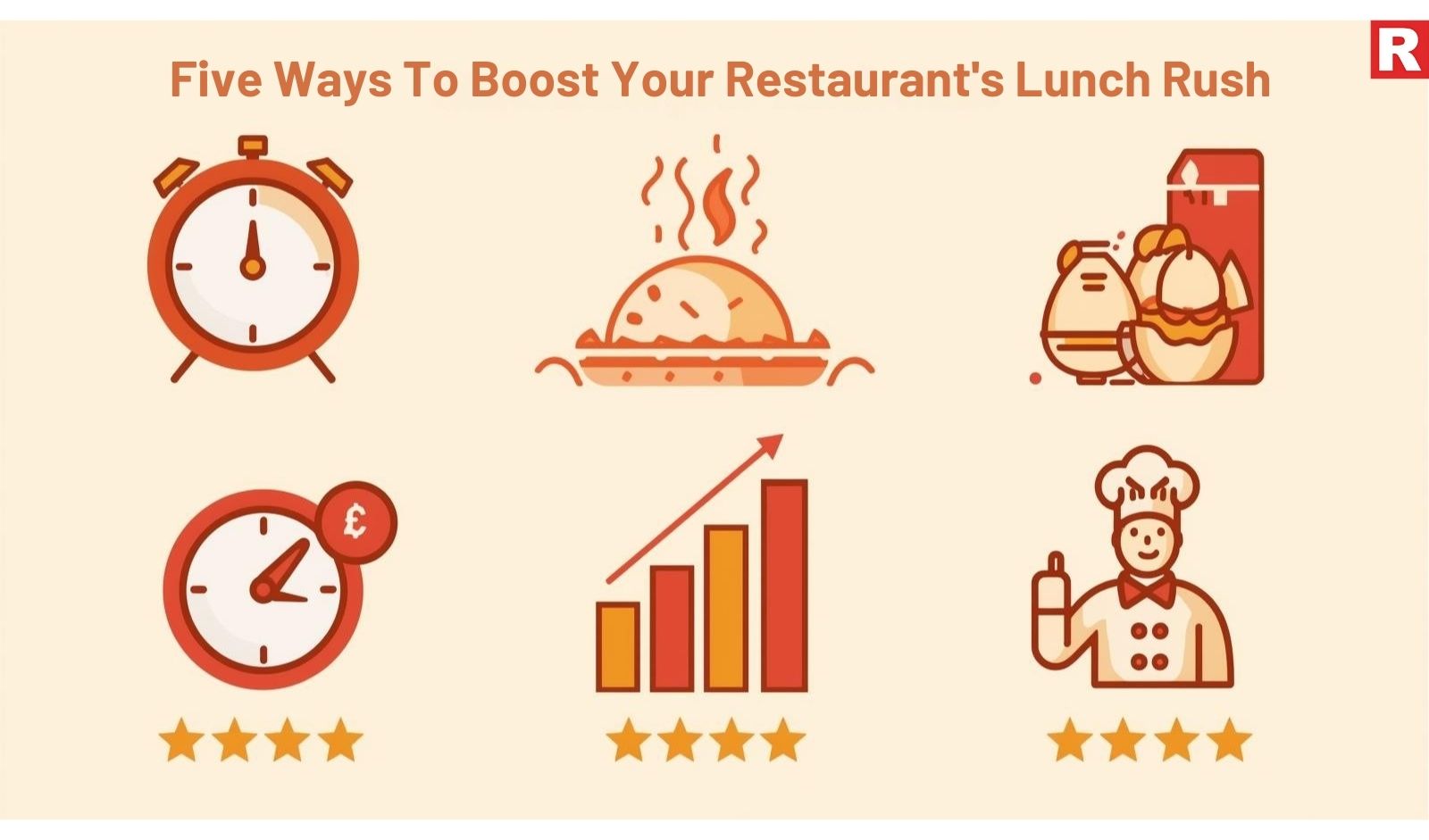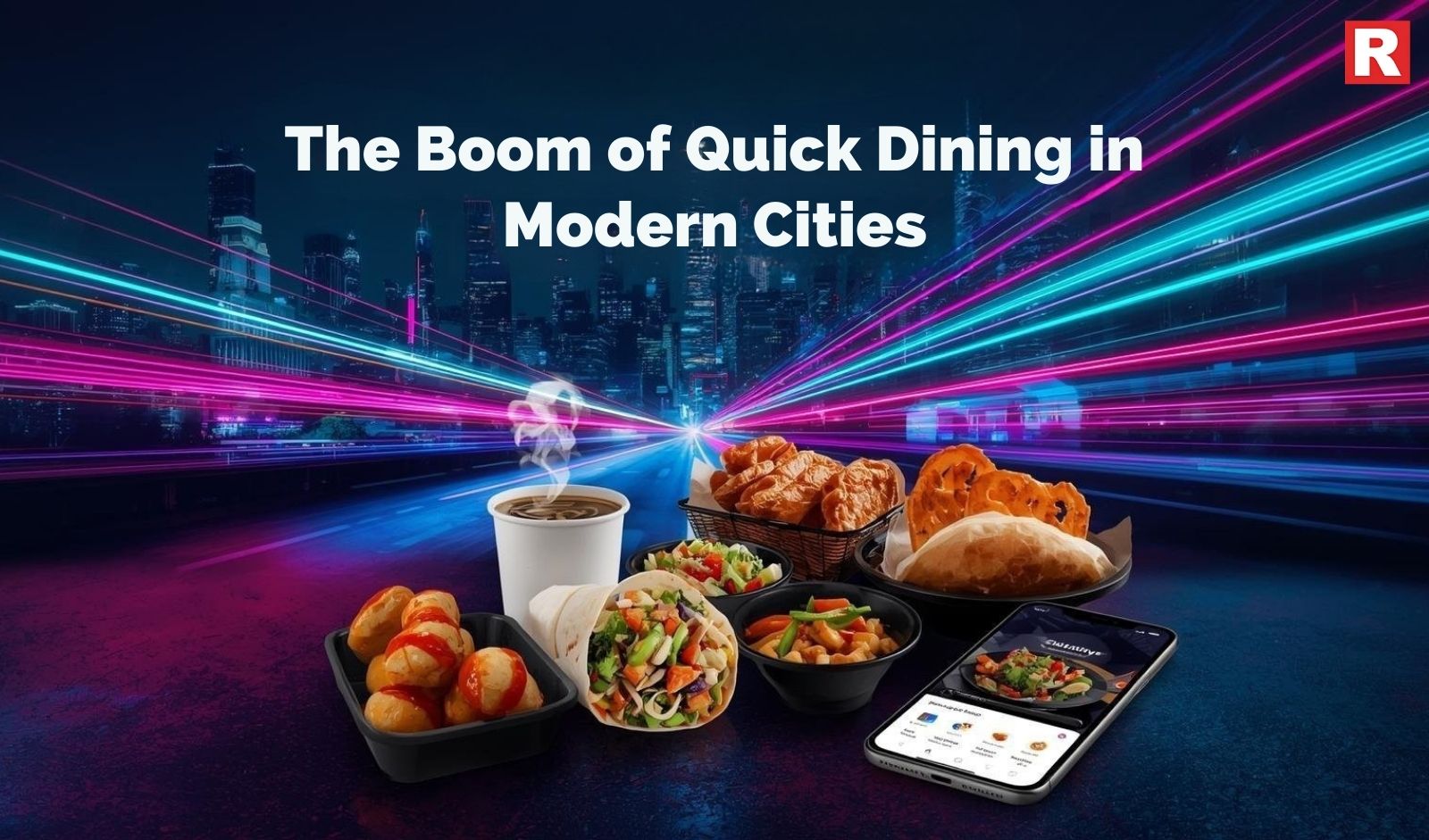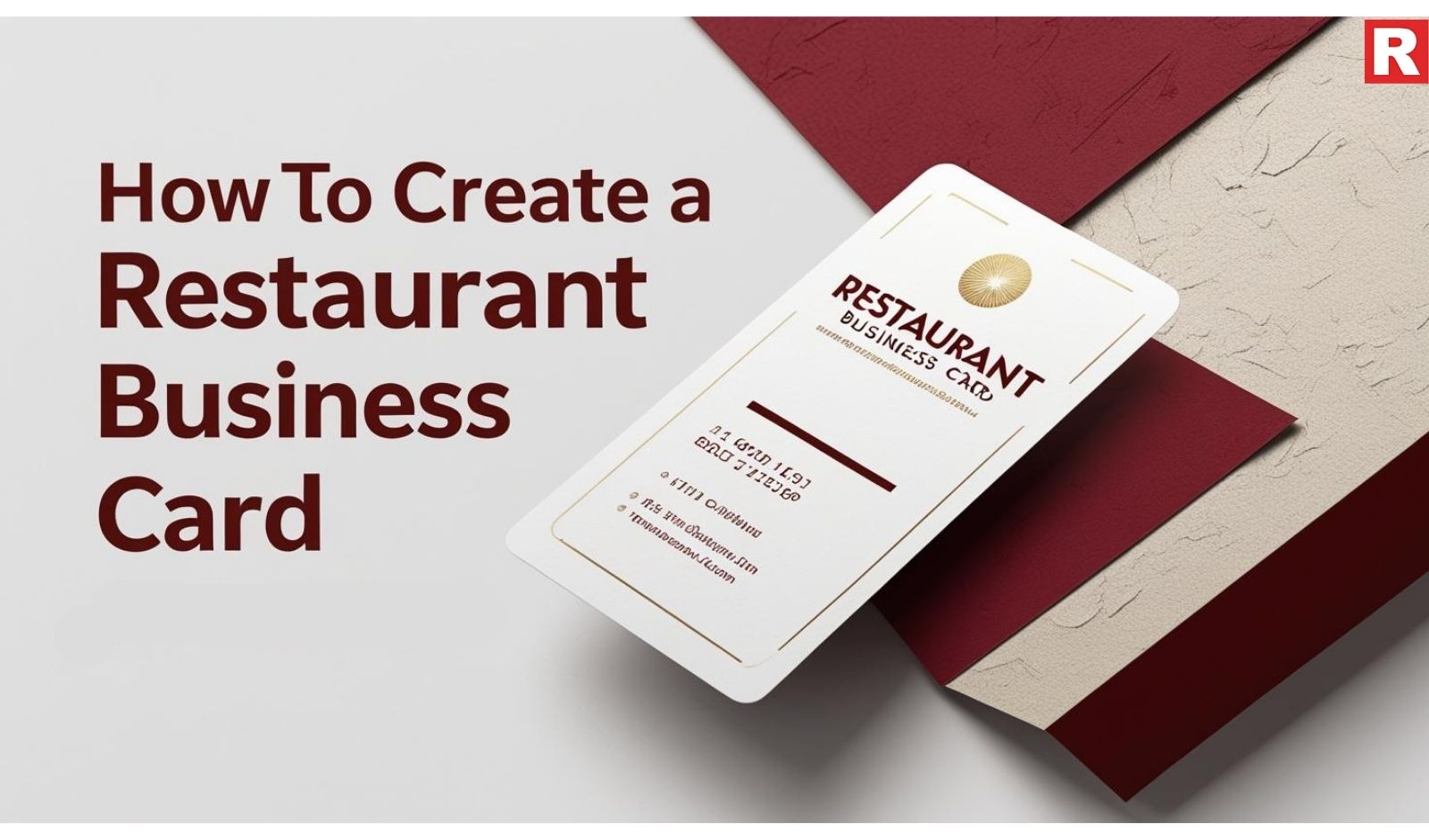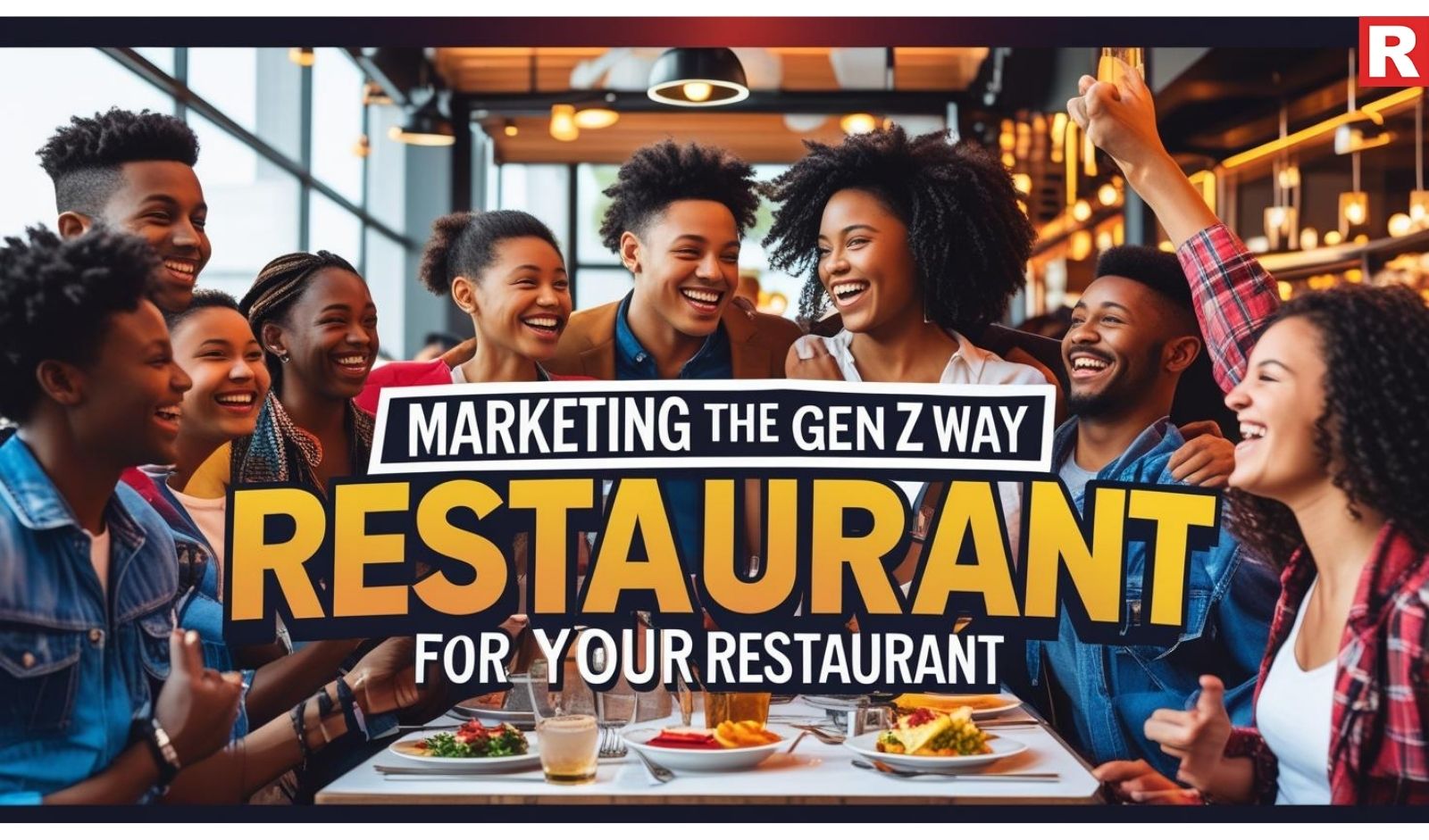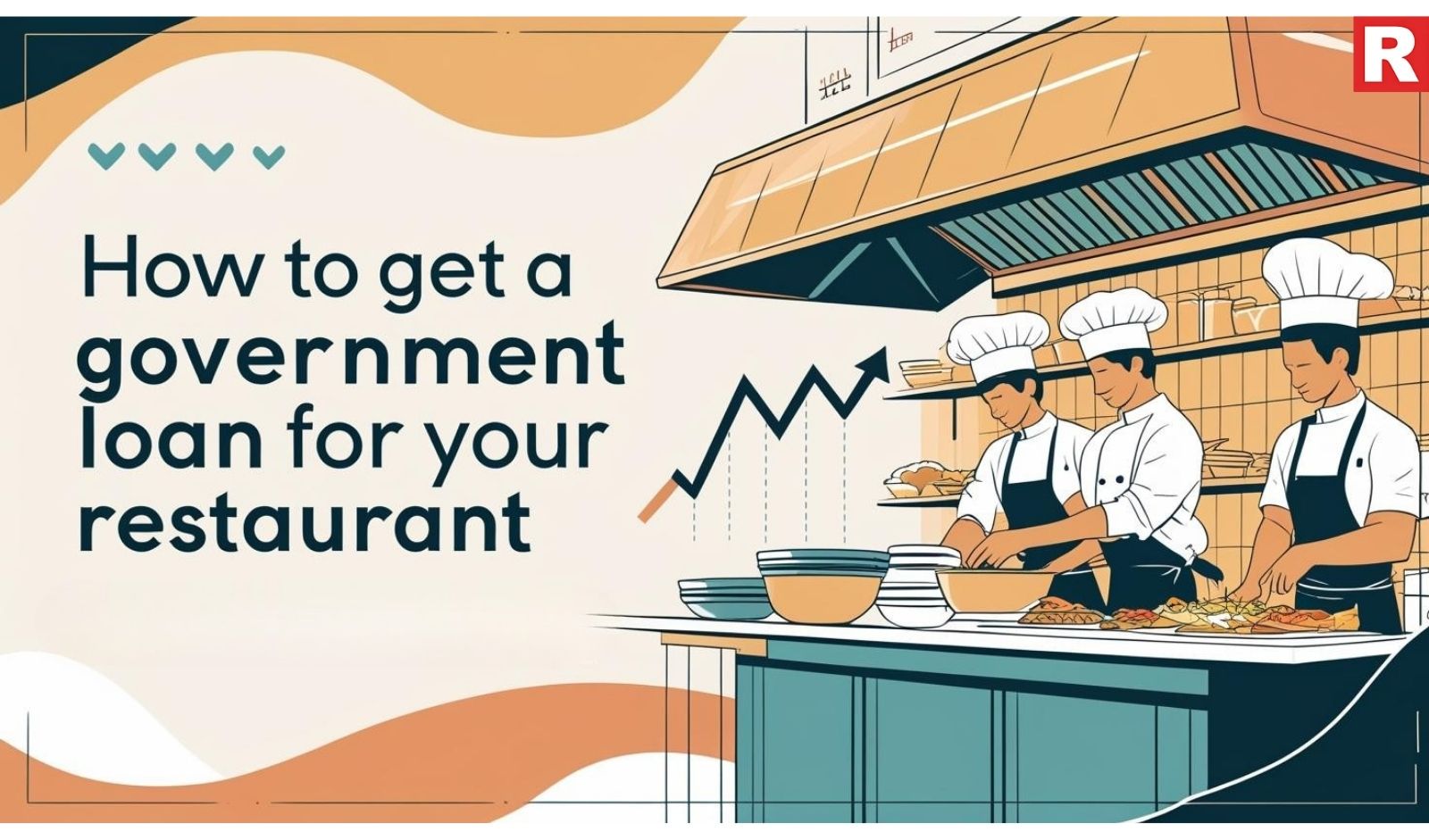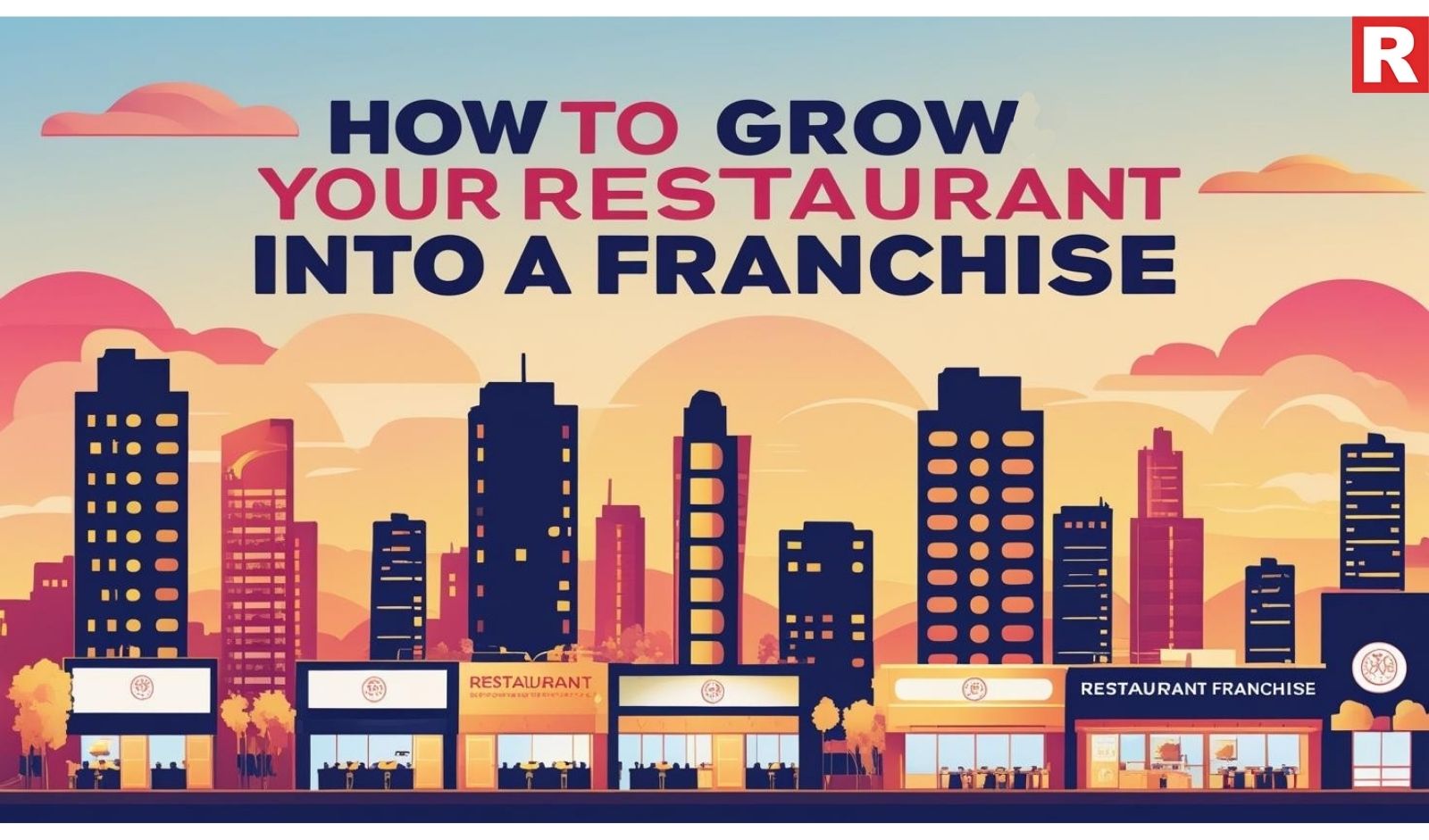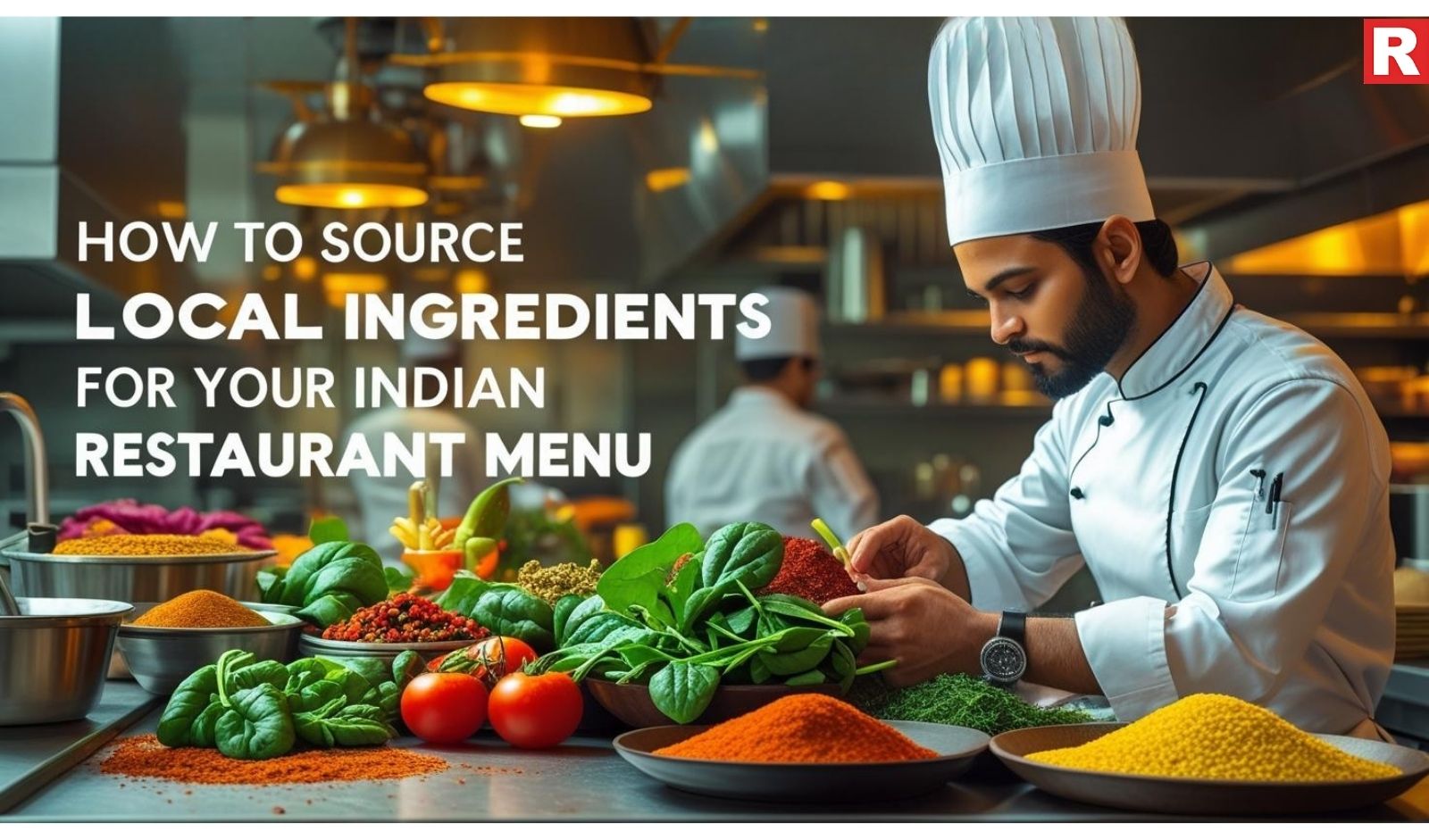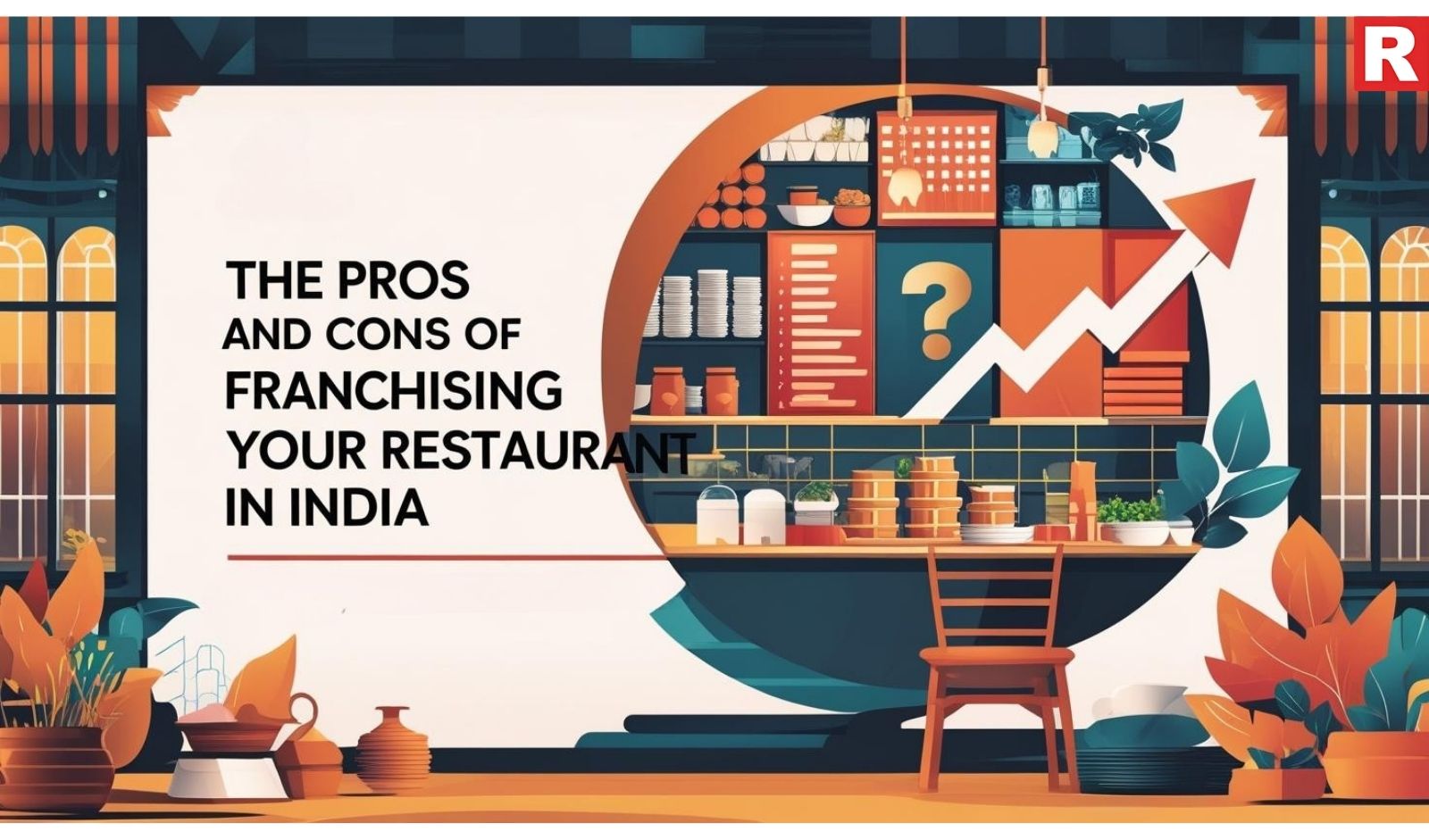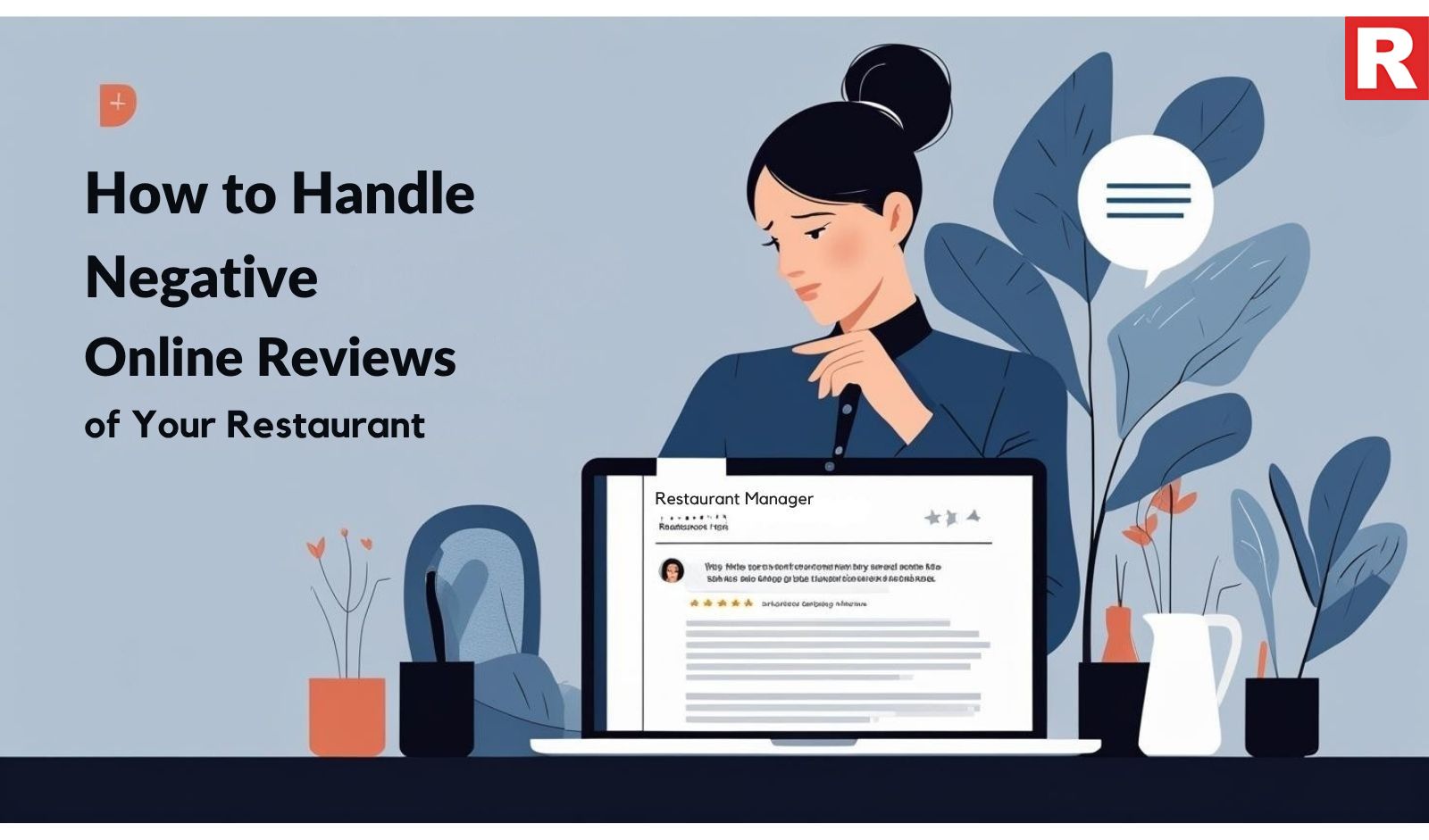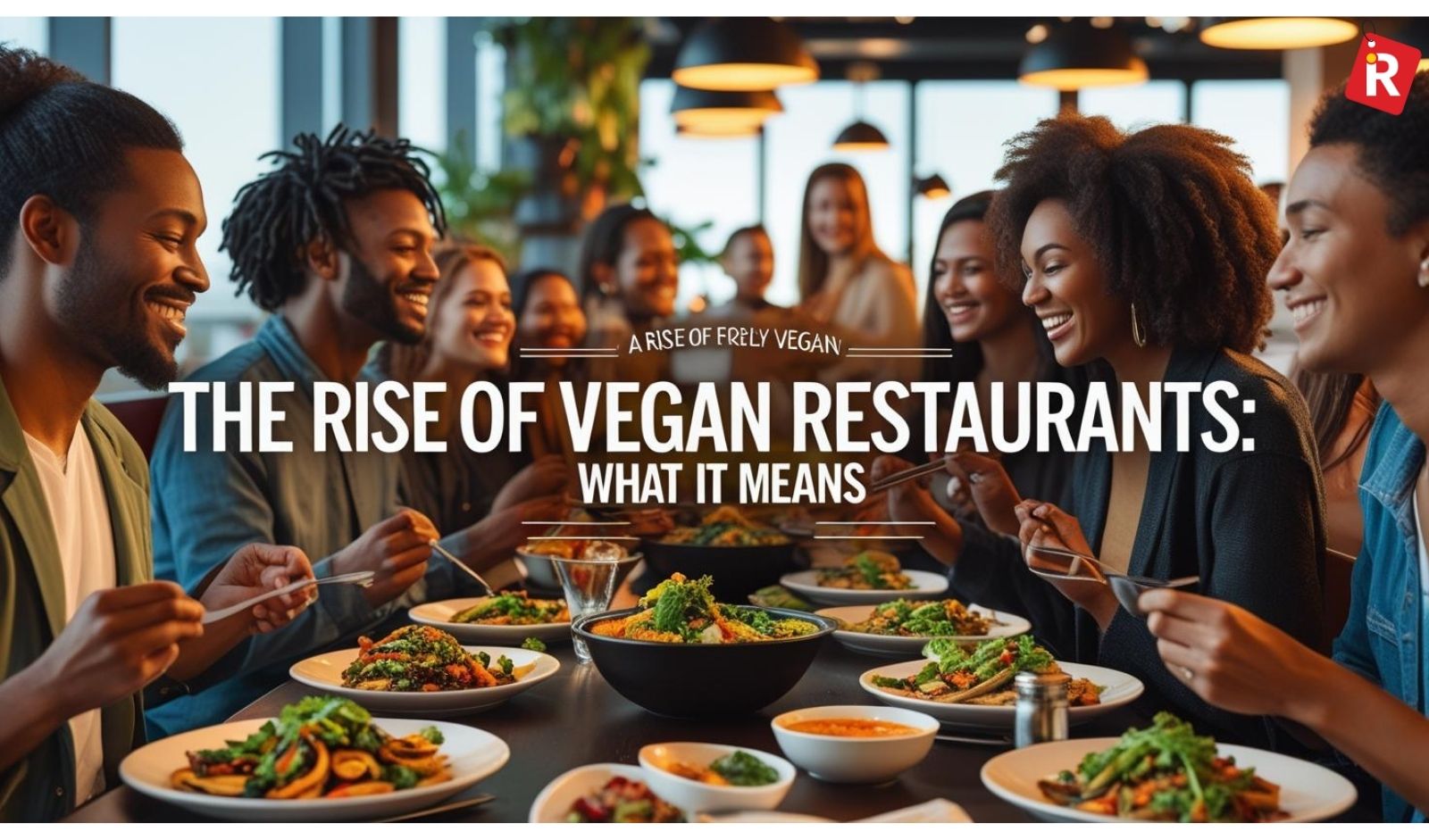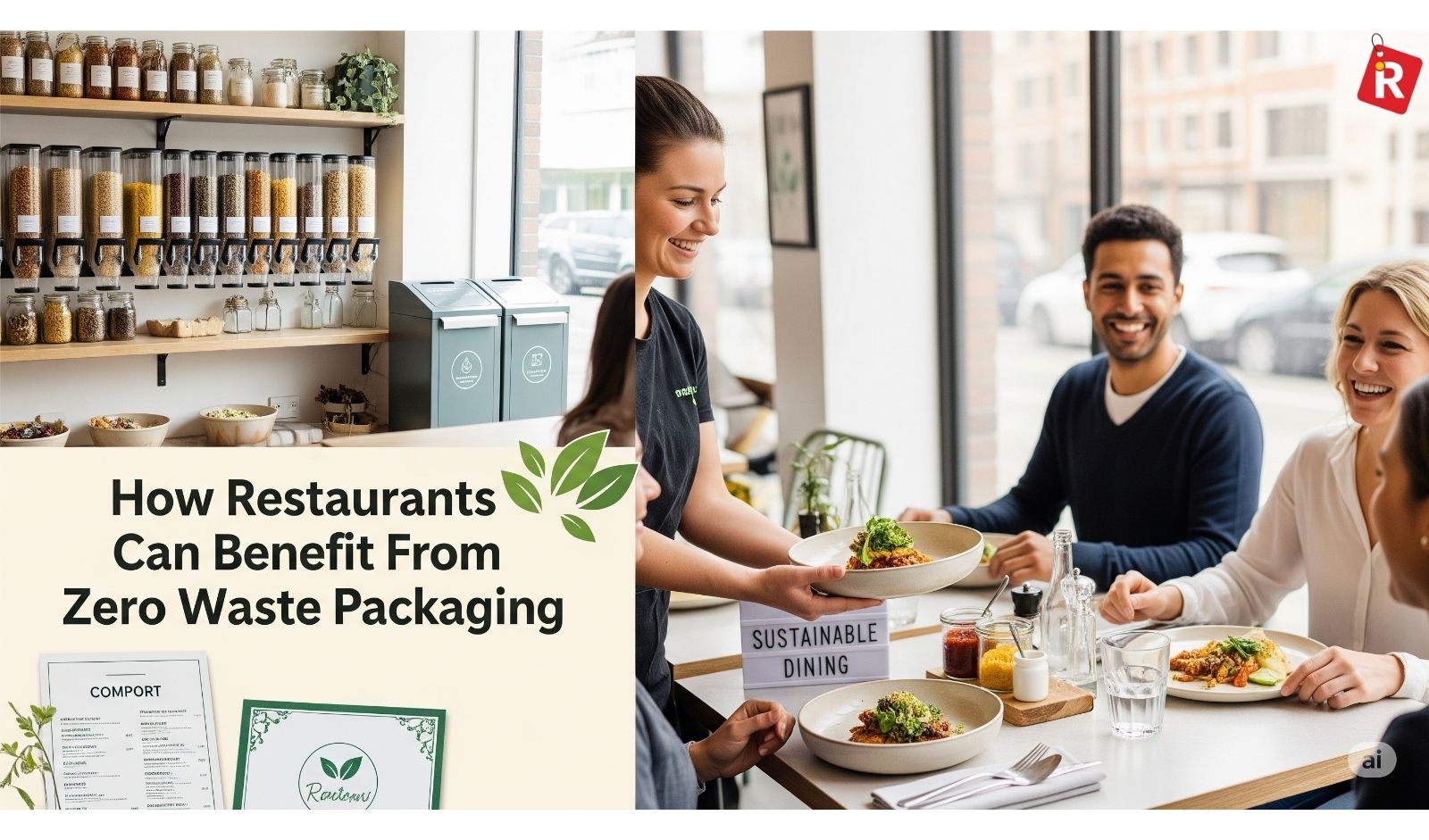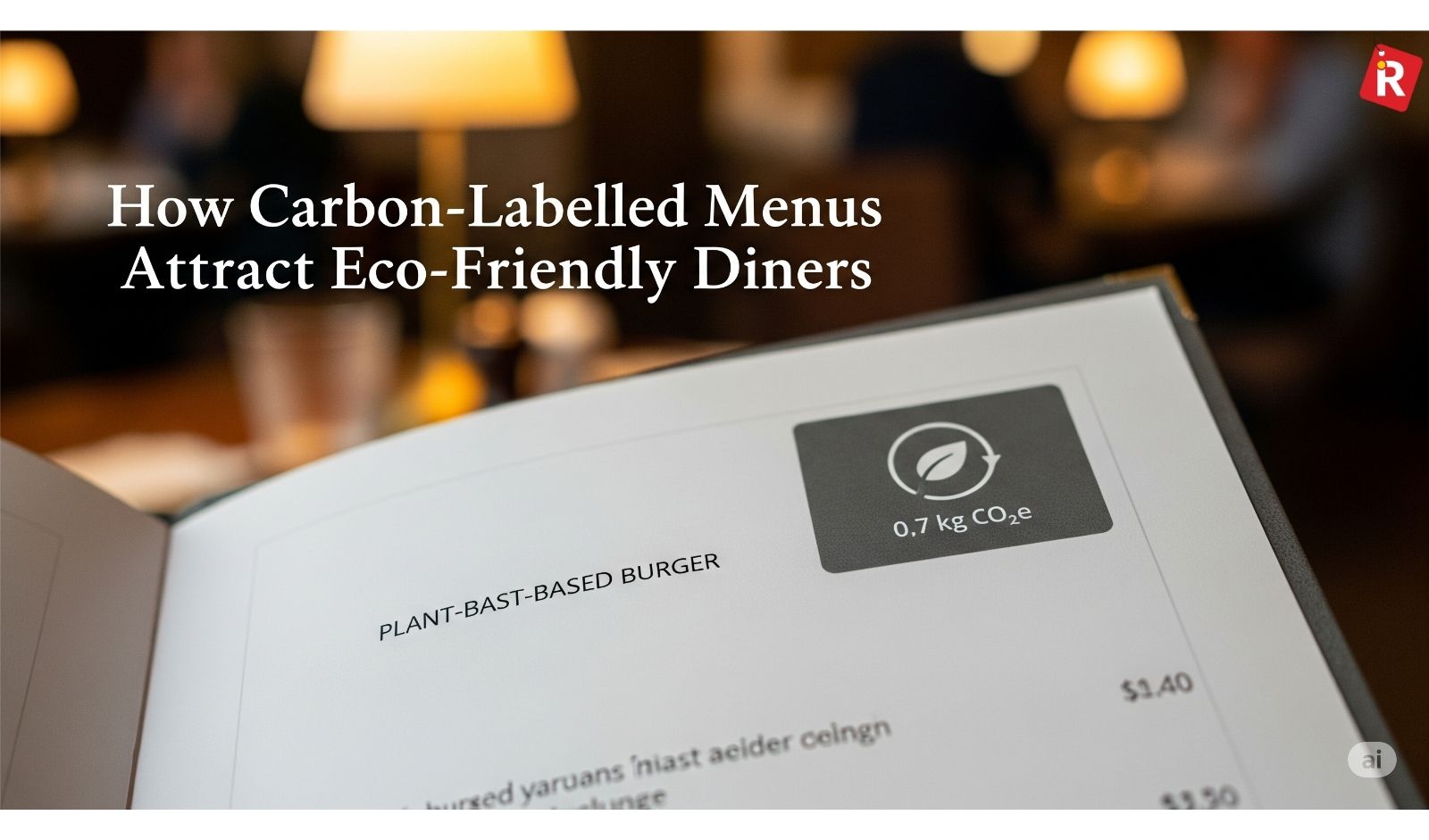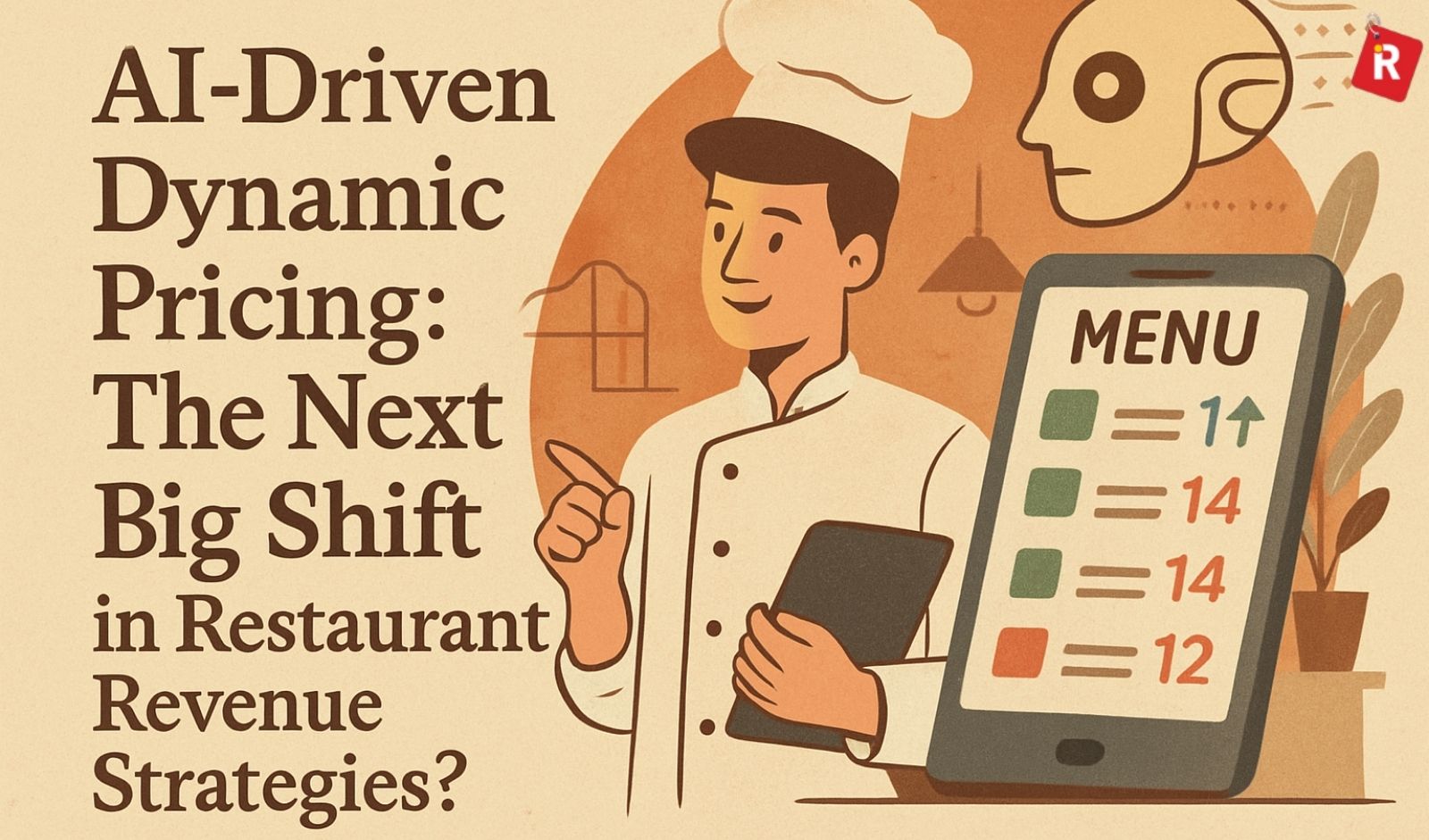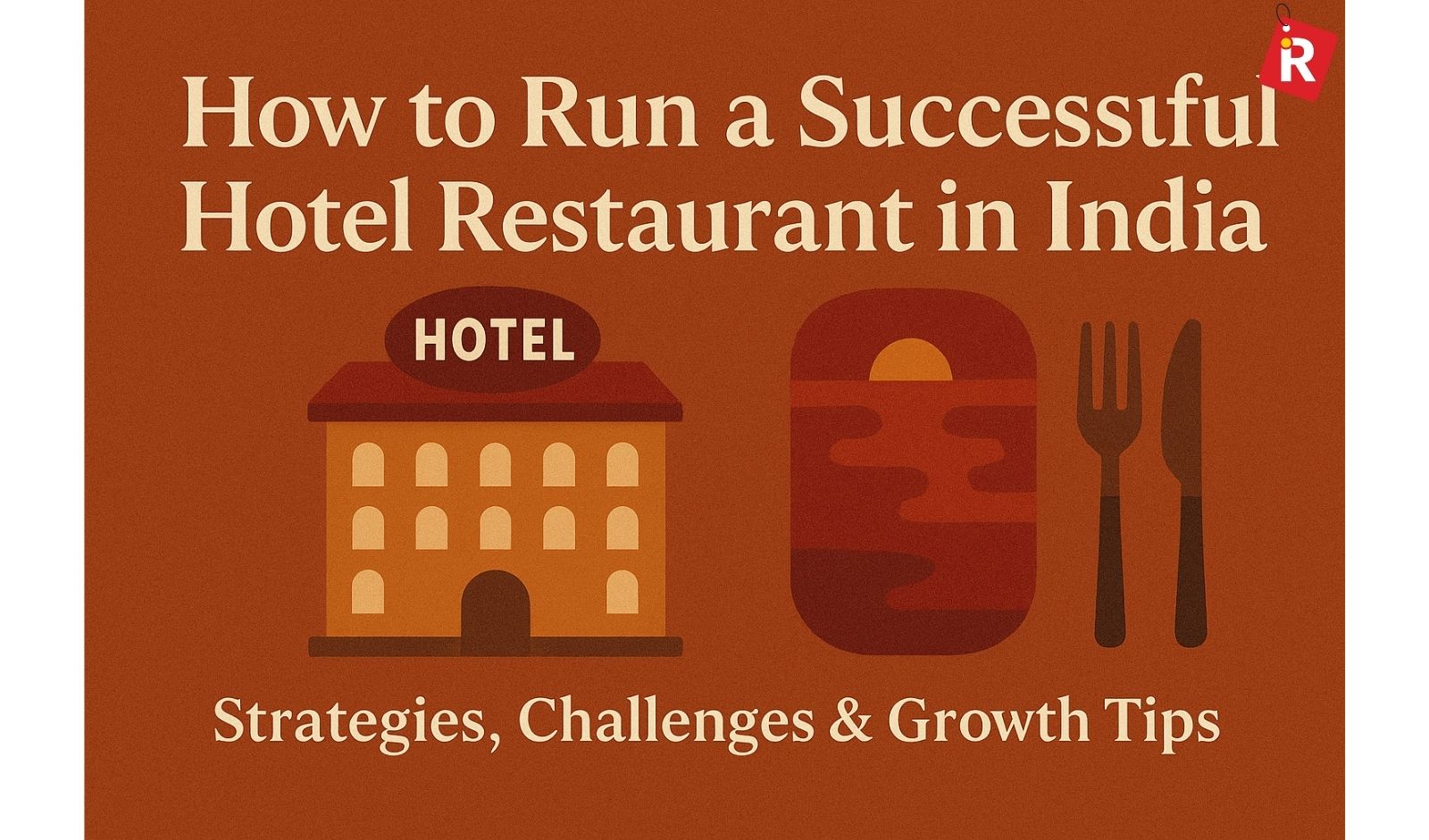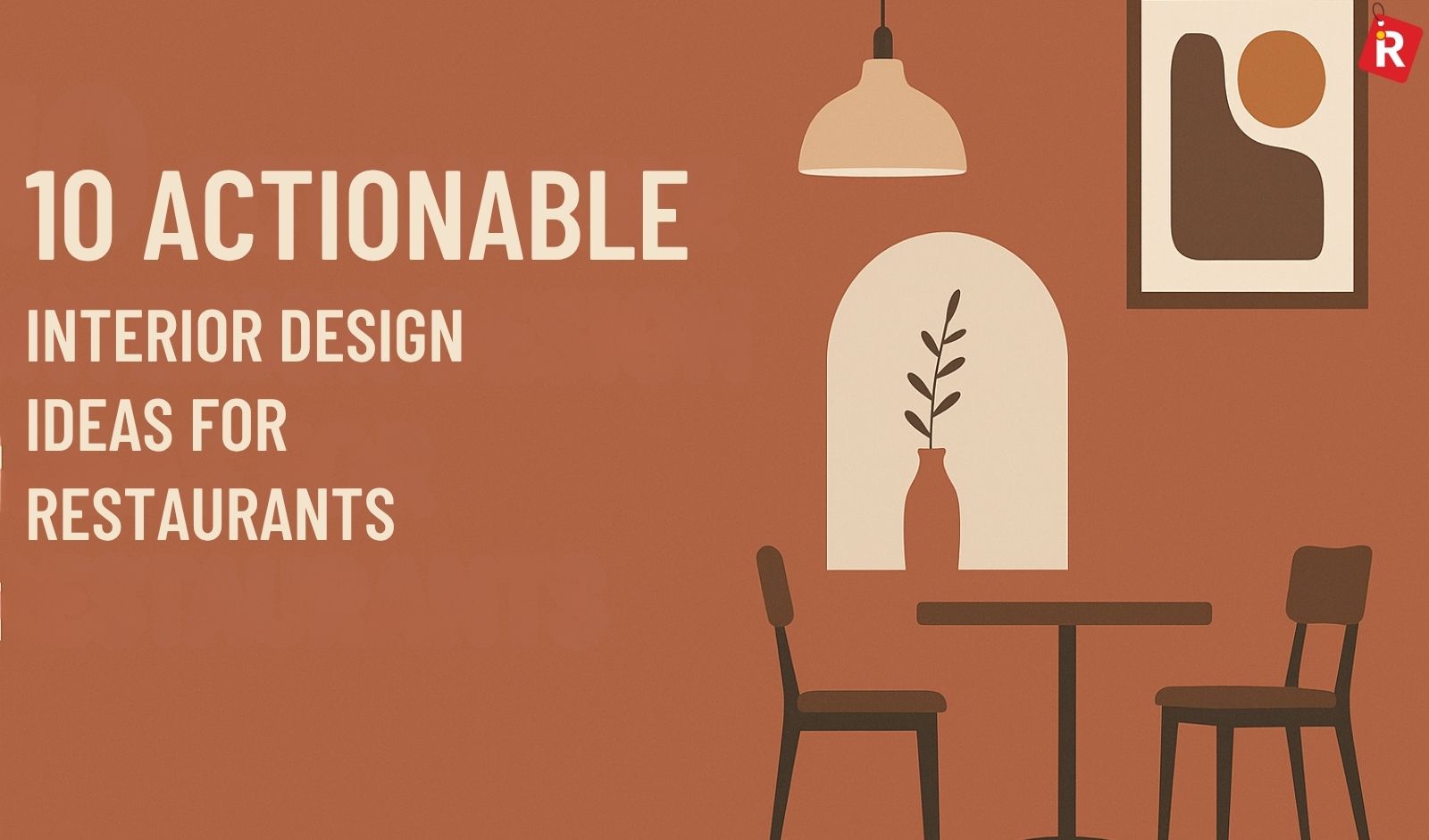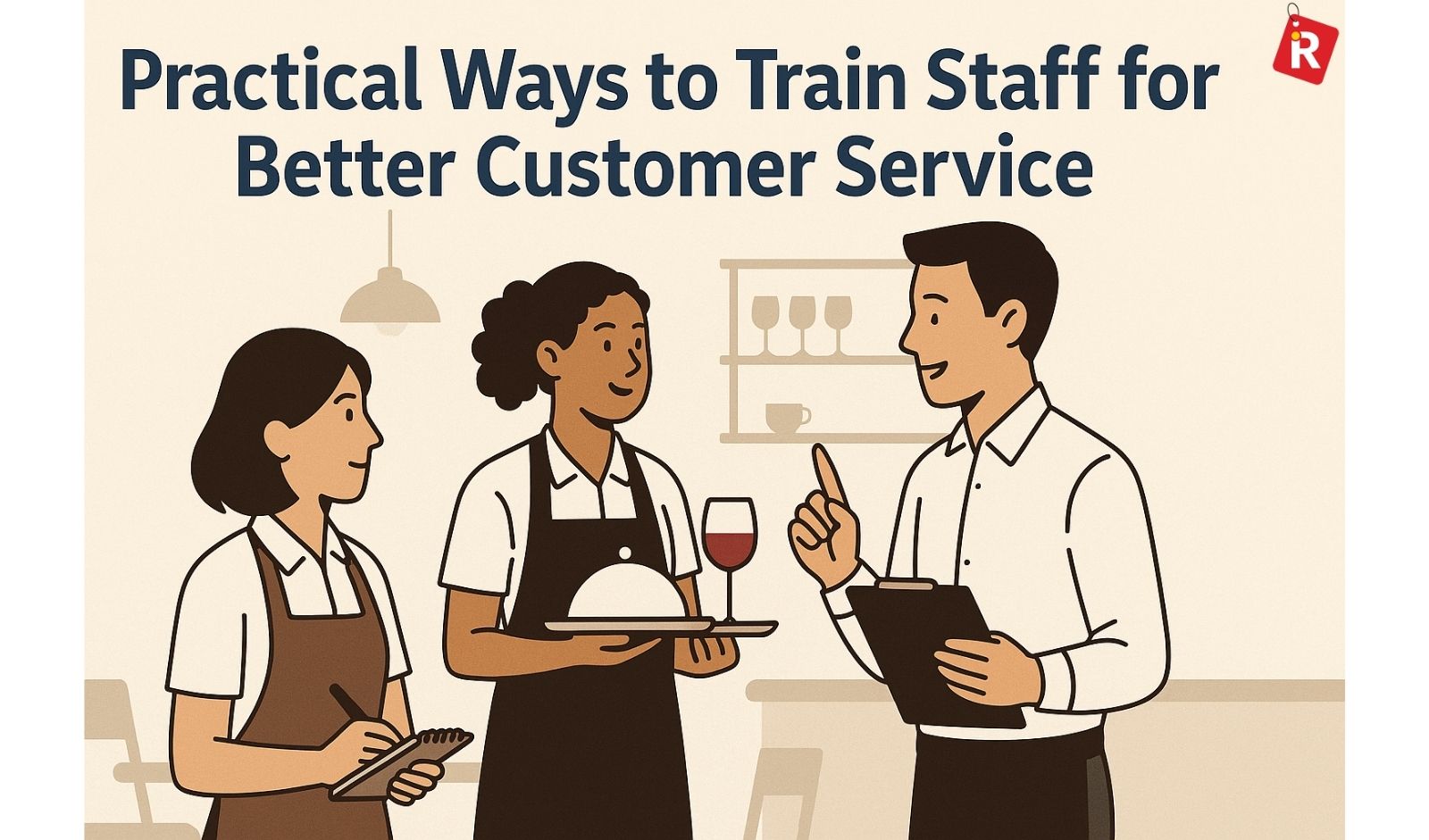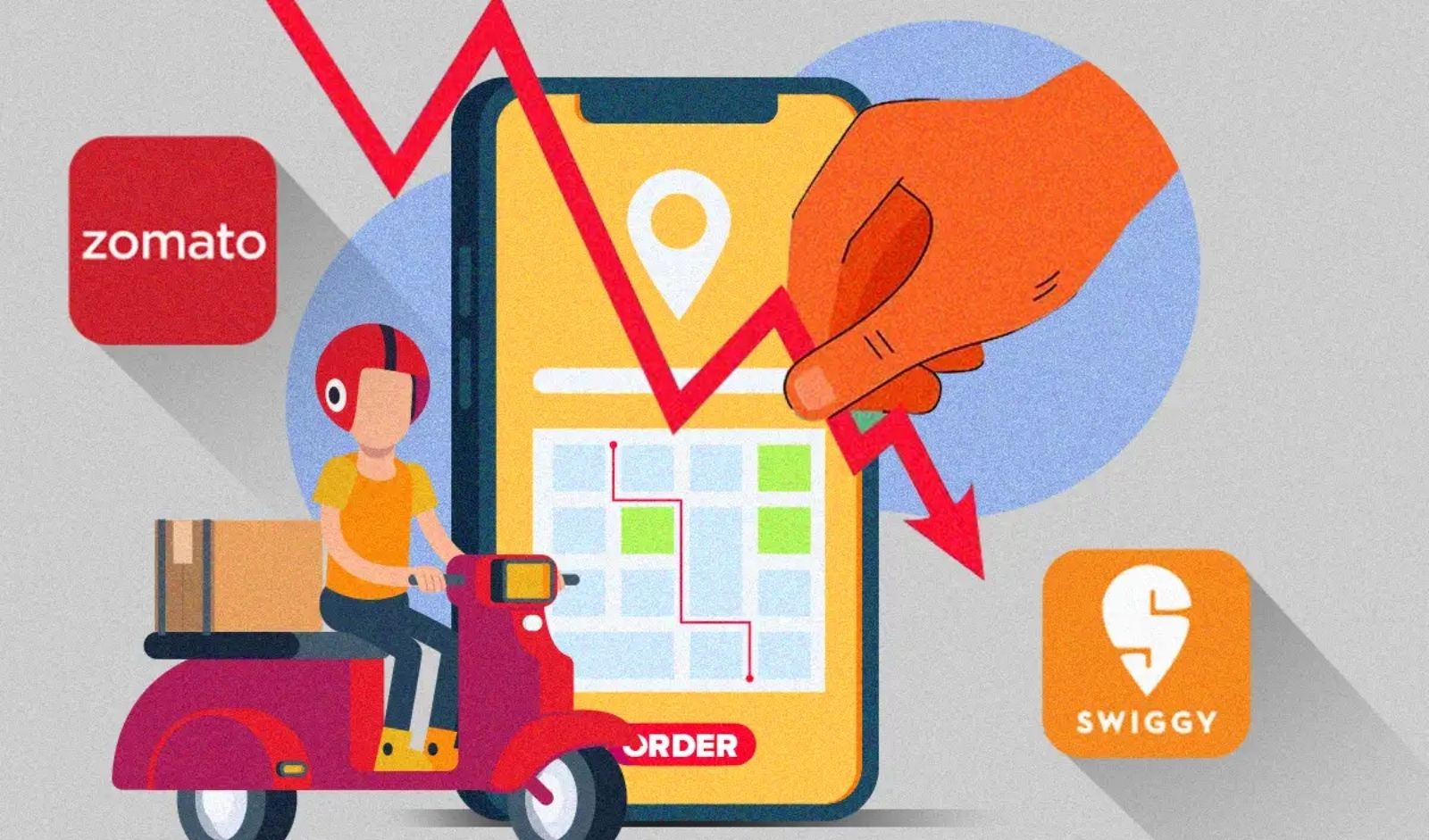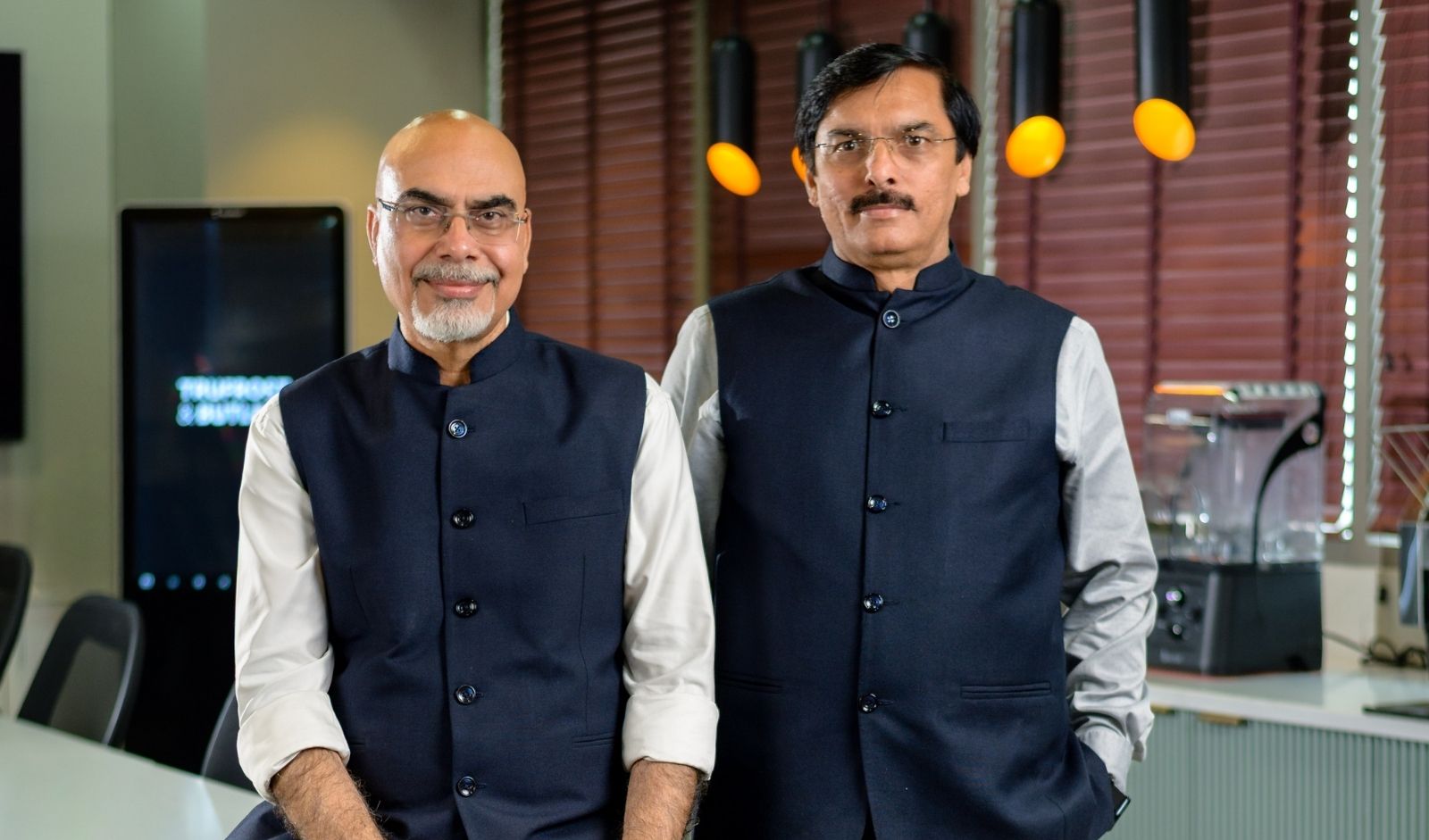
In the highly competitive and quickly changing Indian food service sector, having a digital presence has become essential rather than optional. The days of just walk-ins and orders placed by phone are long gone. Customers today are accustomed to a smooth ordering process via their smartphones, tech-savvy, and convenience-driven. For restaurants, coffee shops, and cloud kitchens, this has meant adopting online ordering systems that are ideal for data-driven growth, customer interaction, and brand building, in addition to facilitating transactions. For a food business, selecting the appropriate platform can be the most crucial choice, affecting everything from profitability to operational effectiveness.
This in-depth article explores the essential purpose of these platforms and lists the top Indian suppliers of online ordering systems. In order to assist restaurateurs in making a strategic choice that will enable their business to prosper in the digital era, we will examine the key characteristics, unique selling points, and target market of these major names.
What are Online Ordering Platform Providers?
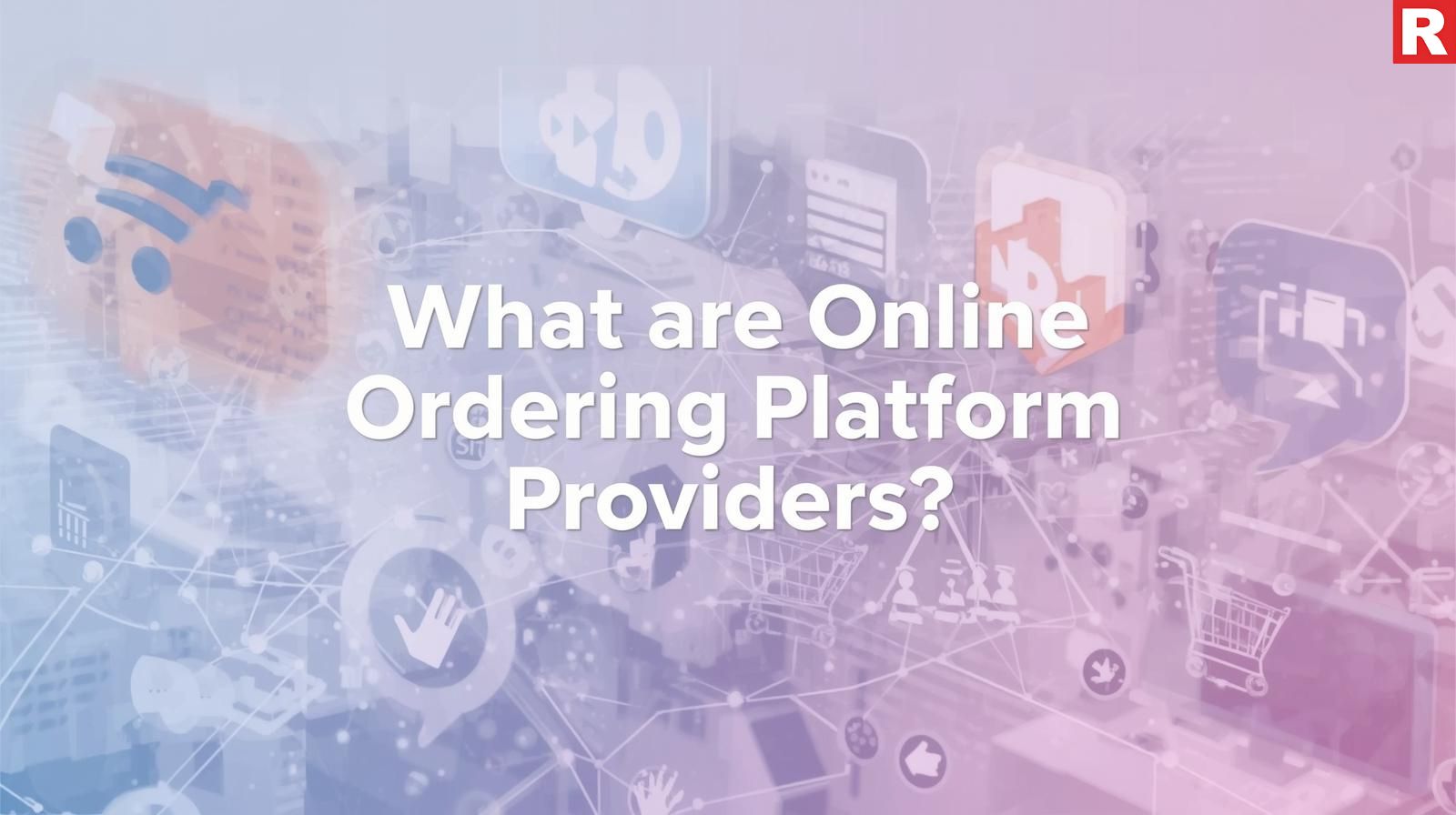
An online ordering platform provider is a tech business that provides restaurants with software to set up and run their own branded online store. They provide a private label service, in contrast to food aggregators such as Swiggy and Zomato, which function as a broad marketplace for multiple restaurants. This means your logo, colors, and unique menu presentation are all fully branded to your restaurant, giving customers a smooth and consistent brand experience. These platforms offer a mobile-friendly page, a separate website, or a complete mobile application that allows customers to place purchases with you directly. From order placing and safe payment processing to customer service and order tracking, they manage the full digital transaction process.
Read more: Top Draft Beer Dispenser Brands in India for the Perfect Pour
How They Help Restaurants
Restaurants benefit greatly from online ordering platforms, which solve some of the most important issues in the present-day food industry.
- Increased Profit Margins: Restaurants can avoid paying the hefty commissions that food aggregators demand by having their own direct ordering channel, which enables them to keep a far higher portion of their earnings.
- Direct Customer Relationships & Data Ownership: You are in complete control of your customers' names, order histories, and other data when you have your own platform. With the help of this data, you can directly and consistently connect with your most loyal customers and customize the marketing efforts.
- Total Brand Control: You have total control over the digital identity of your brand when you use a private platform. The appearance and user experience can be customized to precisely fit the theme of your restaurant, guaranteeing that every digital interaction captures the essence of your brand.
- Enhanced Marketing & Loyalty Programs: To promote repeat business and cultivate a community of devoted customers, you may develop complex, data-driven marketing campaigns, send customized offers, and establish your own loyalty programs.
- Operational Efficiency: A restaurant's current Point of Sale (POS) system can be easily integrated with a number of online ordering systems, which simplifies the order management procedure and lowers the possibility of human mistakes.
What to Look for When Choosing an Online Ordering Platform Provider
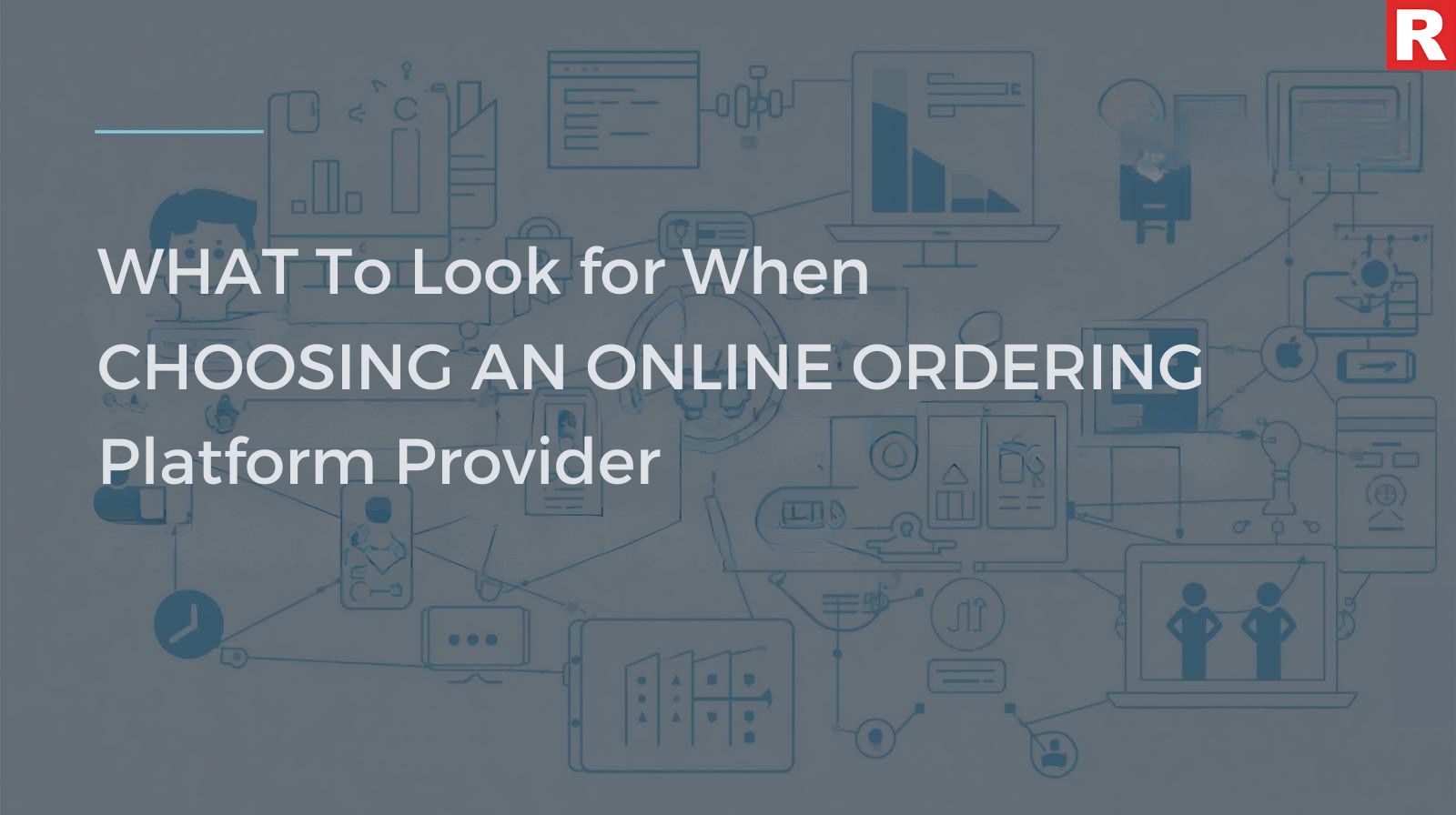
Selecting the best online purchasing platform is a crucial business choice. Locating a partner who shares the unique requirements and objectives of your business is more important than simply choosing a service.
- Usability: The platform needs to provide a user-friendly interface on both sides. Customers should be able to place orders quickly and easily. The back-end dashboard should have a short learning period and be easy to use for your employees.
- Pricing Structure: Find out if there is a fixed monthly subscription charge or a commission based on a percentage of each order. Ask about any possible hidden costs, including setup fees or further payments for marketing tools.
- Integration Capabilities: Your current technology, especially your point-of-sale system, should be able to connect easily with a genuinely successful online ordering platform. This is essential for optimizing processes, guaranteeing order correctness, and offering an overall view of your business's success.
- Customization and Branding: Your brand is reflected in your online ordering system. Choose a supplier that gives you extensive customization options so you can manage the menu layout, color scheme, design, and images.
- Customer Service and Dependability: Pick a supplier who has a solid track record of providing exceptional customer service and dependable platforms. To reduce downtime and guarantee that your digital activities are always operating efficiently, you need a responsive support staff.
Know more: Best Commercial Mixer & Blender Brands For Restaurants
The Best Online Ordering Platform Providers in India
Now that you know what to look for, let's examine some of India's largest and popular suppliers of online ordering platforms, each with unique plans for digital transformation.
Thrive: Commission-Free Ordering

Consider a platform that pays you for the money you have been donating to aggregators. That's the promise of Thrive, a brand that has swiftly established itself as a symbol of helping restaurants go direct. Thrive, a Bengaluru-based company, has made a name for itself as a major force because of its smooth, commission-free platform that gives restaurateurs back control. Their main product is an ordering system that is fully branded and accessible online and on smartphones, which seems and feels like a natural extension of the restaurant's own brand. Businesses with large quantities to order find Thrive's fixed monthly fee pricing model appealing since it enables them to precisely forecast their costs and save a substantial amount on commissions.
The seamless connection of Thrive with well-known POS systems like POSist, Petpooja, and Gofrugal is what makes it a great option. This eliminates errors and manual entry by ensuring that orders placed by customers on your Thrive-powered website appear immediately on the POS screen in your kitchen. With its wide range of marketing tools, which includes creating promo codes and running SMS/email campaigns, this robust and user-friendly platform does more than just handle orders; it also helps you cultivate customer loyalty and promote repeat business. Thrive provides a free and lucrative option for any restaurateur who has been annoyed by aggregator fees.
What's new: Best Bar Chair and Stool Brands for Indian Bars & Lounges
Dotpe: The Simplicity of the QR Code

A straightforward approach is frequently the most appealing approach when it comes to online ordering. With its straightforward yet effective QR code-based approach, Dotpe, which has its headquarters in Gurugram, has completely transformed the digital ordering industry. Their strategy is simple and brilliant: customers are directed immediately to the restaurant's customized menu for ordering by scanning a QR code that is displayed on the dining table, on fliers, or on a social media website.
Because of its well-known zero-commission policy and remarkably simple setup process, Dotpe is especially appealing to small and medium-sized businesses looking to launch their websites rapidly without having to deal with the hassles or excessive expenses of a traditional platform. Dotpe provides a central order management interface, a variety of safe payment methods, and insightful customer data for delivery, dine-in, and takeout. Its emphasis on providing local businesses with an affordable and easy-to-use solution has made it a national favorite, particularly for those seeking a quick yet effective entry into the world of digital ordering.
Petpooja: The All-in-One POS Solution

For a business searching for a complete IT solution, Petpooja stands out. Known primarily as one of Ahmedabad's top providers of point-of-sale software, it has developed into a full-fledged digital ecosystem with an integrated online ordering platform. This means allowing online ordering for current Petpooja users only requires turning on a switch.
The ability to manage online orders, inventory, reporting, and paying from a single, centralized dashboard is a huge benefit of seamless connectivity. A crucial part of Petpooja's offering is its online ordering capability, which lets restaurants design their own branded website and application. It is a strong and practical option for businesses seeking a single platform for all of their operational requirements, from front-of-house to back-of-house, since it offers crucial capabilities for order administration, customer relationship management (CRM), and analytics.
Check out: Top Tea Brand options to consider for Restaurateurs in India
How to Choose the Perfect Spooky Theme for Your Restaurant
Blinkit: The Speed & Simplicity of Delivery

Blinkit began as a local delivery service but has since grown to offer an advanced and easy online ordering system for restaurants. Blinkit, which is now a part of Zomato, is well-known for emphasizing simplicity and quickness. The platform is made for businesses that wish to go online with the least amount of hassle. It focuses on fast delivery management, has a clear interface, and is quick and simple to set up.
Restaurants that use both platforms can have a smooth experience because of the strong connection that Blinkit and Zomato have built. Blinkit is a strong choice for companies seeking a simple, uncomplicated online ordering system with a dependable delivery network that can quickly get you up and running.
UrbanPiper: The Connecting Master

For a busy restaurant, navigating the many screens and dashboards from many aggregators can be a nightmare. This issue is resolved by Bengaluru-based UrbanPiper. This connecting technology is well-known for its capacity to link a restaurant's point-of-sale system with both its own branded website and all of the main online food aggregators. This eliminates the need for several tablets and tedious data entry by allowing a restaurant to receive and manage orders from Swiggy, Zomato, and its own direct channel on a single screen.
Additionally, UrbanPiper offers restaurants a toolset to create their own websites for online ordering. Their system is incredibly flexible and adaptable, making it suitable for both major chains with complex online ordering systems and single-outlet restaurants. UrbanPiper is an amazing business-grade solution that serves as a central nerve system for all of your digital orders, giving much-needed efficiency to a hectic kitchen. It is ideal for restaurants looking to optimize their online order processes while also developing a direct ordering channel.
Read this: Top Eco-friendly Packaging Brands for Restaurants
Conclusion
Selecting the best online ordering platform is a calculated decision that requires carefully balancing the platform's features with the objectives of a restaurant. While a tiny café or cloud kitchen would favor a simpler, less expensive solution, a large, well-established restaurant with a lot of customers might prioritize an all-in-one solution or advanced middleware to speed complex operations.
In addition to cutting expenses, businesses that establish a direct channel are gaining loyal customers and an immense amount of data that can be used to boost future expansion. The success of a restaurant is fueled by the appropriate online ordering platform.

The effectiveness and dependability of a restaurant's kitchen equipment are just as important to its success in the fast-paced, highly competitive Indian food service sector as the chef's talent. Commercial mixers and blenders are among the most important of these devices. These powerful appliances are far more useful in professional kitchens than in homes, and they are necessary for everything from making velvety purees and creamy milkshakes to making the basic gravies and batters that characterize Indian cooking. A commercial blender or mixer with great performance guarantees consistency in quality, reduces preparation time, and enables a kitchen to manage the enormous amount of orders that a profitable restaurant generates.
This is why having a great commercial mixer & blender is a necessity. But how does a restaurant find a good mixer and blender for them? What are the best brands? What does a good commercial mixer and blender need to have? In this article, we will be answering these questions. We will explore the vital role of this strong equipment as well as the top brands of commercial mixers and blenders for restaurants, examining what makes them a popular option for Indian chefs, kitchen managers, and restaurateurs. We'll look at their key characteristics, uses, and things to think about before investing wisely in these essential instruments.
Read more: Celebrate Onam with 41 Sadya Menus Across India
Why a Commercial-Grade Appliance is a Non-Negotiable Investment?

Every professional kitchen needs a commercial-grade blender or mixer. It is not only a luxury to choose one over typical residential equipment. The operating efficiency of a restaurant is directly impacted by the wide variations in engineering and design.
- Motor Power & Durability: Heavy-duty, continuous operation is the design of commercial motors. With greater RPMs (Revolutions Per Minute) and stronger construction, they can handle challenging ingredients like ice, frozen fruits, and spices without overheating or degrading.
- Capacity: Chefs can save time and work by preparing big batches of a product at once with commercial blenders, which come with larger jars that range in size from 1.5 to 4 liters.
- Material of Blade and Jar: The blades are composed of stainless steel that has been toughened to endure continuous wear and tear. Usually composed of Tritan or high-impact, shatterproof polycarbonate, the jars are meant to withstand harsh conditions.
- Advanced Features: A lot of commercial models have noise reduction enclosures, pre-programmed settings for particular activities, and easy-to-use controls that make operation simple and guarantee consistent results for any user.
Key Factors to Consider Before Buying

Make sure the commercial mixer or blender you choose fits your restaurant's needs and budget before making the purchase.
- Menu & Usage: For what purposes will you use it most frequently? A high-speed blender with a strong motor is essential if smoothies are a major part of your menu. It is better to use a heavy-duty planetary mixer for batters and doughs.
- Volume: While a major hotel kitchen or catering service will need numerous units with high capacity, a tiny café with a limited menu of shakes might do well with a compact, single-serving blender.
- Noise Level: A loud blender can cause a lot of noise in a small café or an open kitchen. Models with noise-reducing coverings are accessible in certain brands.
- Service & Warranty: One of the most important factors in the Indian market is service and warranty. Make sure the company has a strong market presence, a dependable service network, and a thorough warranty to reduce downtime in the case of an issue.
Know more: 5 Key Strategies to Focus While Rebranding your Restaurant
Top Commercial Mixer & Blender Brands for Restaurants
Each of the most well-known and popular industrial mixer and blender manufacturers is included below, each adding something special to the professional kitchen.
1. Vitamix
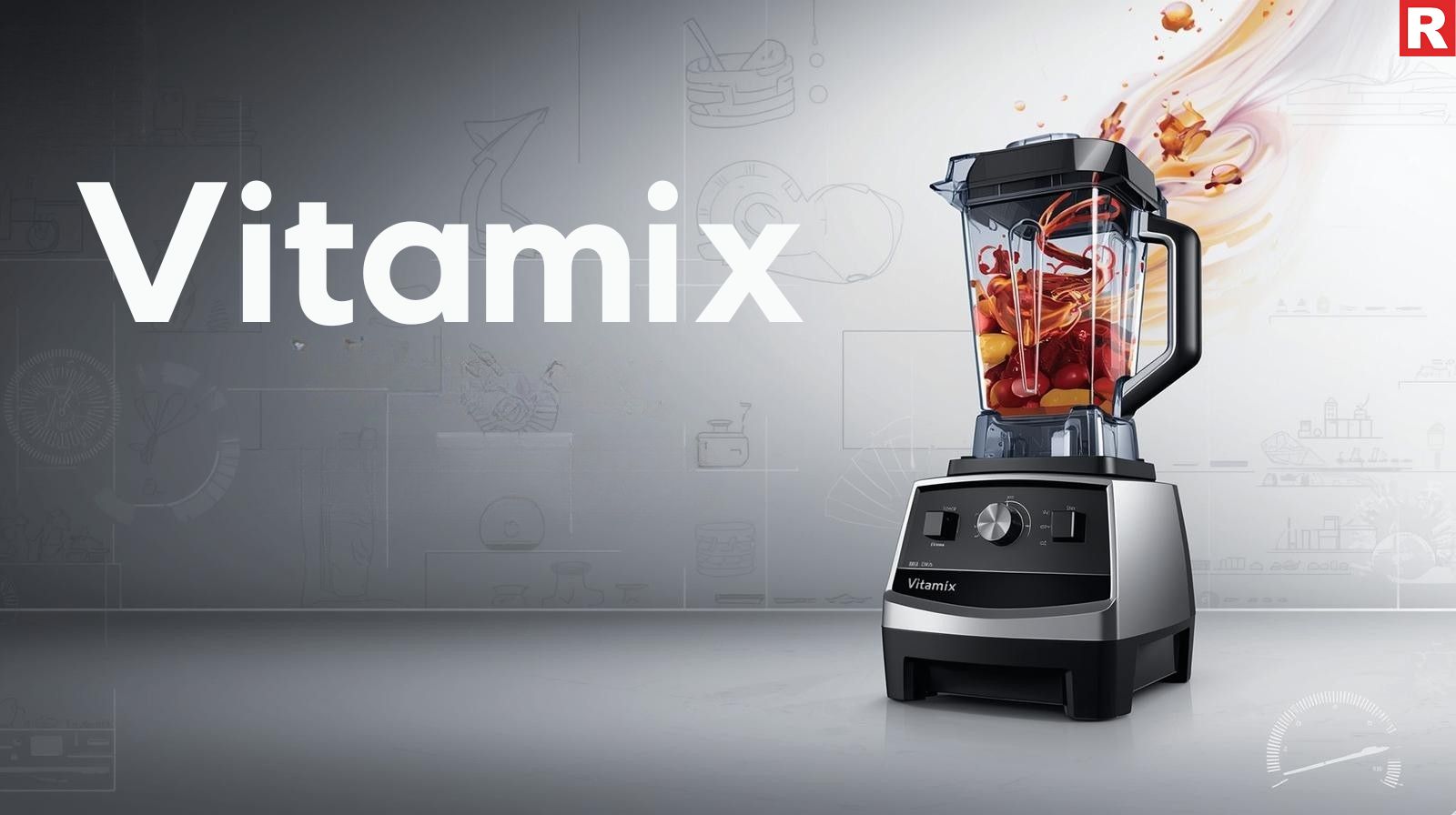
One brand that is widely associated with the highest quality of industrial blending is Vitamix. High-end restaurants, cafes, and hotels all around India choose Vitamix since it is regarded as the industry standard. Their devices are well-known for their unmatched strength, remarkable robustness, and consistent production of wonderfully smooth blends. Even under the most difficult circumstances, they are designed to persist for years. Hardened stainless steel blades, high-impact containers, and strong motors (up to 3 HP) are included on Vitamix blenders.
Their equipment can be used for anything from making silky smooth purees, hot soups, and even batters to smashing ice for drinks and blending frozen fruits for smoothies. Even though their price range is on the upper end, their performance, dependability, and long-term minimal maintenance expenses make the investment worthwhile. Because Vitamix consistently produces results of a professional standard, many renowned chefs and restaurant chains rely on it.
2. Blendtec

Blendtec, another industry leader renowned for its innovative designs and pre-programmed cycles, is a direct rival of Vitamix. Their distinctive soft blades, which are safer and more durable than conventional sharp blades, are a hallmark of their commercial blenders. The main selling feature of Blendtec is its "pre-programmed" settings, which let a chef choose a particular cycle for a task (such as making soup, milkshakes, or smoothies), and the machine automatically modifies its duration and speed to always produce the ideal blend. A busy kitchen can greatly benefit from this automation since it guarantees consistency and eliminates the need for manual monitoring. Additionally, Blendtec has models with sound barriers, which makes them an excellent option for cafés with open kitchens or where minimizing noise is a top concern.
What's new: Top Tea Brand options to consider for Restaurateurs in India
3. Hamilton Beach Commercial
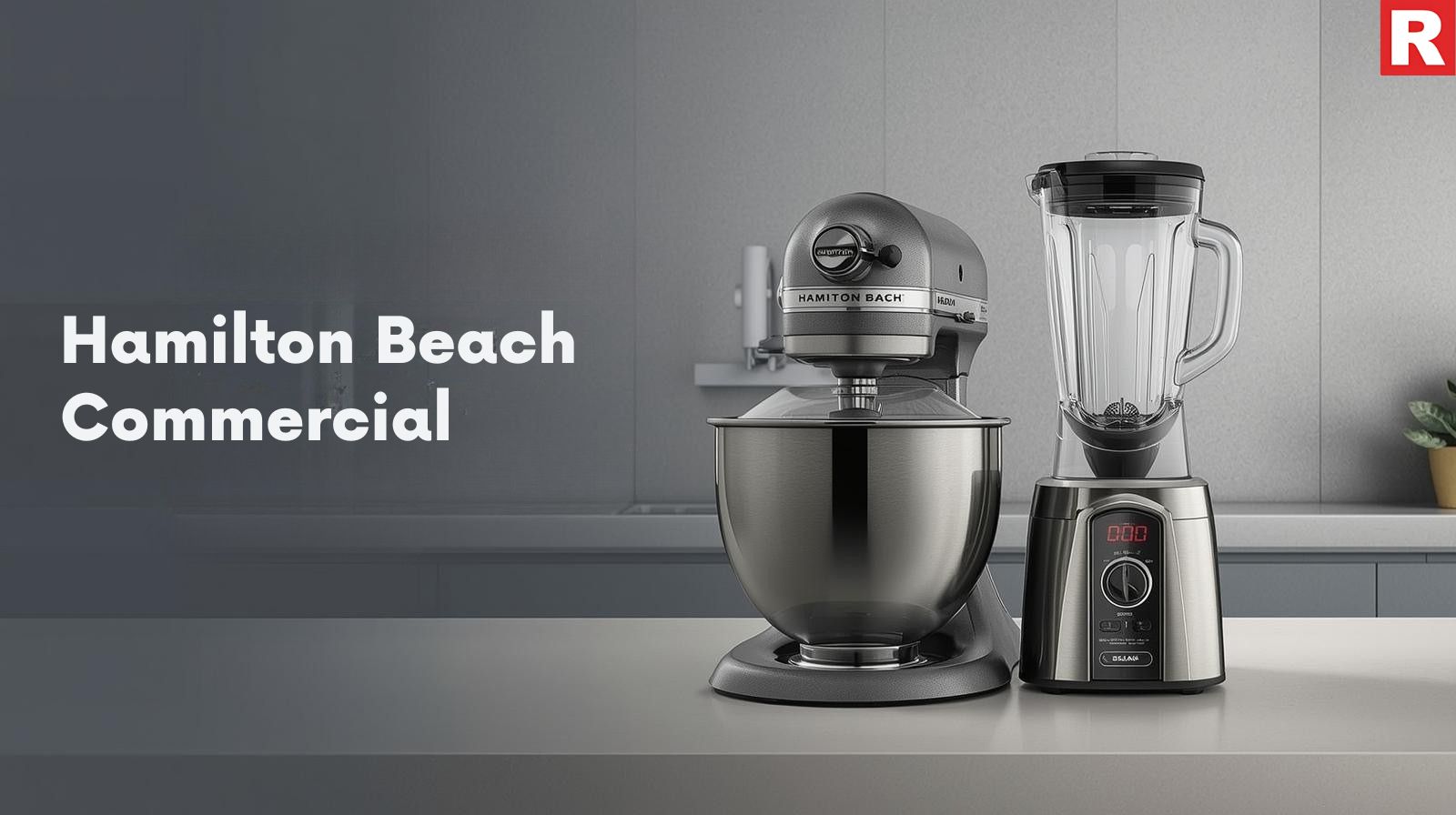
Many mid-to-high-range restaurants in India, like Hamilton Beach's commercial line, which is a well-known brands in the worldwide hospitality sector. They have a wide range of mixers and blenders that strike a fantastic balance between price and functionality. The brand is well-known for being dependable and adaptable. Their product line ranges from compact versions for bars and cafés to high-volume blenders made for busy smoothie shops. Products from Hamilton Beach Commercial are renowned for their strong motors, tough parts, and logical designs. They provide a range of jar models and sizes, including ones with a sound enclosure, so a business may easily choose the ideal equipment for its demands and price range. They are also a popular option for many restaurants, providing peace of mind due to their broad supply and service network in India.
4. Preethi
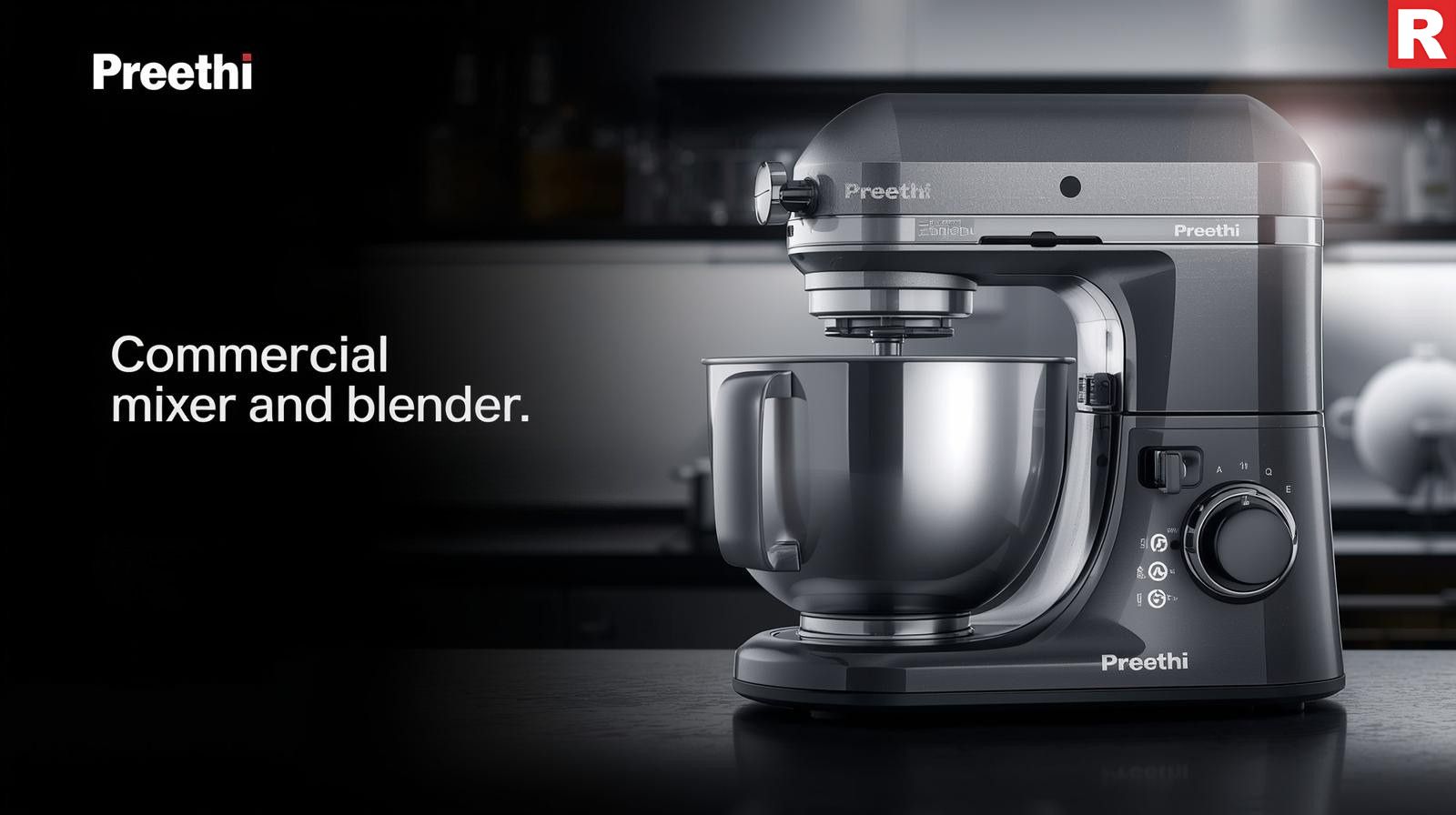
In the Indian market, Preethi is well-known and especially popular for its strong and long-lasting mixer grinders. Their commercial-grade models are made for the rigorous conditions of a restaurant, even though they are a common fixture in many Indian homes. To tackle the demanding tasks of grinding spices, preparing batters (such as dosa or idli batter), and producing thick purees, Preethi's commercial mixer grinders are constructed with sturdy jars and heavy-duty motors. Being able to handle traditional ingredients is crucial for Indian restaurants, which makes them a popular option. A major benefit of Preethi is its wide service network and strong local presence throughout India, which makes maintenance and repairs easily accessible. This is essential for reducing a restaurant's downtime.
Check out: How to Choose the Perfect Spooky Theme for Your Restaurant
Top Eco-friendly Packaging Brands for Restaurants
5. Bajaj Electricals & Philips
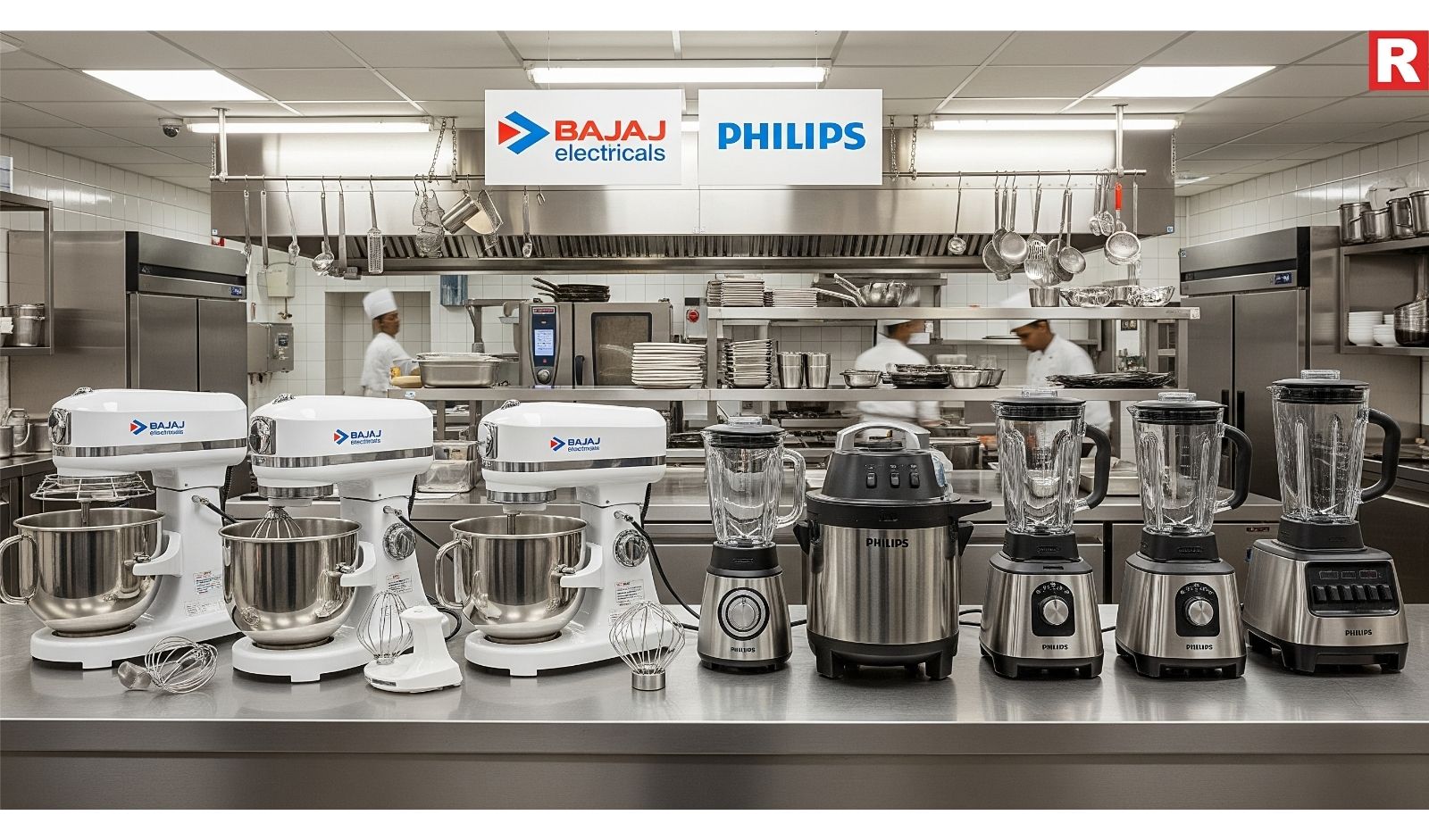
Two additional well-known companies with a significant following in India are Bajaj and Philips. They provide a variety of blenders and mixer grinders that are used in many commercial kitchens. Small to mid-sized cafes and restaurants frequently use their heavy-duty models, even though their main target market is mostly consumers. They are well-known for being dependable, reasonably priced, and widely accessible. Their strong blenders can do a wide range of jobs, from grinding spices to creating milkshakes, and their mixer grinders are adaptable enough for everyday prep work. These companies, supported by their wide service networks, offer a dependable and affordable entry point into the world of commercial-grade cooking equipment for a new restaurant or a business with a tight budget.
Choosing the Right Blender for Your Restaurant's Menu
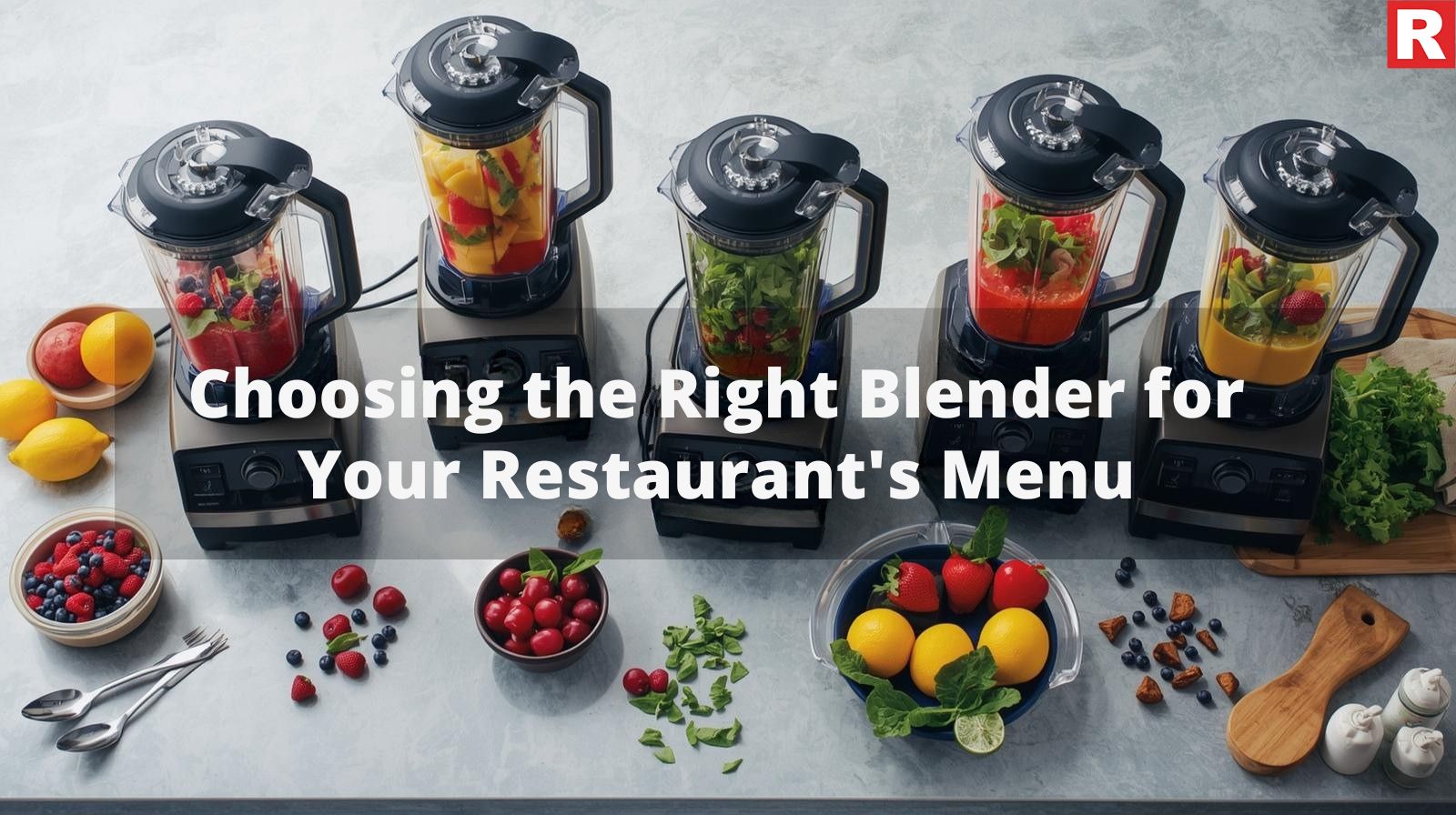
The menu and the particular uses of the blender will determine which one is best for your restaurant.
- For Smoothie & Juice Bars: If your business specializes in smoothies and juices, you'll need a powerful engine and a large jar for your high-speed blender. Because they can easily smash ice and fibrous fruits, brands like Vitamix and Blendtec are the best option for creating a smooth, uniform beverage with little air pockets.
- For Fine-Dining & Gourmet Kitchens: Texture and consistency are crucial in a gourmet setting. For making smooth, lump-free gravies, purees, and sauces without any grainy texture, a Vitamix or a high-end Blendtec is ideal. Chefs can always obtain the ideal consistency thanks to their precise controls.
- For Indian Restaurants: A sturdy mixer grinder from Preethi or Bajaj is necessary for a classic Indian restaurant. These devices are designed to manage the demanding tasks of preparing batters for dosas and idlis, grinding spices for masala mixes, and creating thick chutneys. Their robust jars and strong motors are made especially for these jobs.
- For Cafes & Bars: A mid-level commercial blender from Hamilton Beach Commercial is a fantastic option for a tiny business that needs a multipurpose tool for a number of jobs. They can be used to prepare soups, milkshakes, and cocktails without spending a lot of money.
Read this: Best Frozen Food Brands for Quick Service Restaurants
Conclusion
Every piece of equipment is essential in the tough game of managing a profitable restaurant. Investing in a high-quality industrial mixer or blender is not an extravagant purchase; instead, it is a strategic investment in efficiency, consistency, and the overall quality of your product. Every brand mentioned in this article has a different value proposition. You can choose the ideal gadget that will not only satisfy the needs of your kitchen but also serve as an enduring companion on your culinary adventure by carefully weighing your menu, volume, and budget. A modern kitchen's engine is a good blender or mixer, which allows chefs to concentrate on their creativity while maintaining the constant quality that attracts repeat business.

In the competitive restaurant market of India, where new restaurants keep popping up every now and then, keeping up with the competition becomes tough. And more tough is attracting customers to your restaurants from the sea of many. This is why you need to distinguish your restaurant from the other ones so that customers can find your restaurant easily and be impressed by it. One such way of doing this is to open a themed restaurant. Themed restaurants are all the rage these days, where people who are looking for a new and unique experience come. If you are confused about what theme would suit your restaurant, then we have an idea for you. How about opening a spooky theme restaurant? This will surely attract a lot of horror enthusiasts and provide a magnificent experience to the customers if executed properly.
So, how does one create a spooky theme restaurant? That aside, how to actually choose a spooky theme that is perfect for you? This is what this article is all about. From the design to the food, menu, and attire, every factor contributes to the narrative of your restaurant. So, in this article, we will be helping you choose the spookiest theme for your restaurant and also tell you how to execute it properly.
Read more: Best Frozen Food Brands for Quick Service Restaurants
Defining Your Spooky Theme

The term spooky doesn’t refer to any specific genre or decoration. It is a vast and diverse universe. So, to create a perfect spooky theme, you need to think about the conventional ghosts, cobwebs, or pumpkins, and pinpoint a specific niche. A theme that is well-defined and identified is much easier to market, more attractive to customers, and much simpler to execute. Below are some sub-genres of the spooky. Let’s take a look at them and their potential for your restaurant:
Classic Gothic Horror

Taking cues from works of literature such as Mary Shelley's Frankenstein or Bram Stoker's Dracula. Dark, dramatic aesthetics—think elaborate chandeliers, velvet curtains, antique furniture, and candlelight—are what define this type of design. It is ideal for a fine-dining or cocktail bar concept and creates an air of mystique from the past.
Know more: Top Tea & Coffee Brewer Brands in India These Days
The Haunted Asylum

A darker, more dramatic concept that capitalizes on psychological terror is The Haunted Asylum. Chipped paint, corroded metal fixtures, and dim, flickering lights would make for a harsh and unsettling interior design. "Unhinged" or "experimental" foods can be on the menu. This theme appeals to a specialized, thrill-seeking audience since it is high-risk, high-reward.
What's new: Top Eco-friendly Packaging Brands for Restaurants
Witchcraft and Folklore

A more magical and enchanted approach is provided by witchcraft and folklore. Crystal balls, apothecary bottles, magic books, and organic elements like moss and twisted branches can all contribute to this theme's visual richness. It enables a creative menu featuring foods with magical names and beverages that resemble potions. This is a fantastic option for a bohemian-style restaurant or a whimsical café.
The Zombie Apocalypse

A contemporary topic with elements of pop culture. Boarded-up windows, improvised barriers, and caution tape would all be part of the post-apocalyptic, industrial décor. With "brain-matter" cocktails and "survival-kit" platters, the menu might be lighthearted. For a themed pub or casual eating restaurant looking to draw in a younger, social media-savvy customer base, this concept is perfect. Dr. Zombie - Restaurant and Beyond in Connaught Place, New Delhi, is also a restaurant based on this theme.
Indian Folklore and Paranormal

For a local market like India, the theme of Indian folklore and the paranormal has tremendous potential. In India, the word "spooky" refers to an entire universe that is home to a wide variety of supernatural beings. Consider the following sub-genres of the spooky and their potential for a restaurant concept:
- Indian Folklore: The most powerful and culturally significant theme is Indian folklore. A profoundly dramatic and culturally unique experience can be produced by drawing inspiration from the stories of bhoots (ghosts), pret (vengeful spirits), chudails (female demons), and pishachs (flesh-eating demons). A "Haunted Haveli" restaurant, which tells the narrative of a maharaja and his malevolent spirit, or a "Jungle of the Pret" restaurant, which focuses on spooky forest spirits, are two possible restaurant themes.
- The Chudail's Den: Inspired by tales of tantrics and dain (witches), the Chudail's Den is a more magical and enchanted theme. Rudraksha beads, yantra symbols, antique patras (scrolls), and shelves brimming with mysterious jars and concoctions would all contribute to the visually stunning décor.
- The Gufa of the Yaksha: This subject, which is based on the legendary and much-feared nature spirits, can be carried out with an emphasis on pure, natural elements and cave-like constructions. Dim lighting, stone-like textures, and a menu that seems like a "hidden treasure" from a vanished civilization would create an intriguing and prehistoric atmosphere. This is a high-concept theme that appeals to those looking for a genuinely immersive and one-of-a-kind dining experience.
Decide on the spooky theme first before moving towards the ambiance of your restaurant. Like Halloween The Dark World in Sitapuri, New Delhi has a Halloween theme.
Check out: From Flavor to Emotion: The Future of Experiential Restaurants
Top Restaurant Decor Brands in India
The Art of Ambiance

The next step after selecting a topic is to make it come to life through a multisensory experience. Just hanging a few Halloween decorations isn't enough. A permanent, realistic world is key to a great eerie theme.
- Lighting: The most effective weapon in your toolbox is lighting. For a frightening vibe, lighting must be strategically dimmed. To add depth and drama, combine task, ambient, and accent lighting. Flickering lanterns and antique candlesticks are ideal for a Gothic theme. Use flickering sconces, classic mashaal (torches), and ancient diyas (oil lamps) for a Haveli feel. Use spotlights or stark, single bulbs to generate shadows for a more contemporary horror vibe. Blood-red or eerie-green colored LED lights can be employed for effect.
- Props and Décor: Each item of furniture and prop should contribute to the story. Purchase props from specialty prop makers, flea markets, or antique stores. Consider faded tiles, rusty chains, and ancient hospital beds for a spooky asylum theme. Use boiling pots, mortar and pestles, and shelves brimming with mysterious jars to create a witchcraft vibe. Purchase goods from Puranan Bazaar marketplaces, Indian antique stores, or specialized prop creators. Consider brass trunks, antique charpais (rope beds), elaborate wooden carvings, and old photographs featuring ghostly figures for a haunting Haveli theme.
- Soundscape: Sound is an important but frequently disregarded component. A diner can get chills with the proper sound. Stay clear of generic eerie sound effects. Make a soft, multi-layered soundscape instead. This might be anything from a classical raga played on a loop, the sorrowful tune of a bansuri (flute), the faint sound of ghungroos (anklet bells), or a distant temple bell. The music should never overshadow discussion but should be a persistent, unsettling presence.
- Scent: Emotion and memory are closely linked to the sense of smell. An eerie aroma might be an effective weapon. Think of a subtle scent that suggests ancient rites, such as moist dirt, old manuscripts, or a special blend of spices. Steer clear of strong smells that could dominate the food's aroma. Like the smell of a rotten corpse would be great, but it might be too unsettling for your customers.
Haunted Restaurant in Mylapore, Chennai, has a perfect combination of all these elements that make its ambiance truly spooky.
Menu, Staff, and Storytelling

Decor is something that stages the narrative. But the menu, staff, and storytelling are what will fuel the narrative.
- Menu: The main purpose of the restaurant is to serve food. The food menu is where you can truly appreciate the concept. There should be a name and description for each dish and cocktail that corresponds with the theme. Dishes like "Kali's Brew" (a dark, rich coffee-based beverage) or a "Bhoot Jolokia Curry" could be on a menu with a gothic theme. A "Brain-Eating Burger" or a "Zombie Antidote" cocktail might be served with a zombie theme. The Just Behind You restaurant in Rajouri Garden, New Delhi, gives a welcome drink in test tube glasses to its customers.
- Employee Uniform and Training: Your employees serve as the face of your spooky business. The costume should include their uniforms. Employees could dress in old-fashioned maid or butler uniforms for a haunted home theme. They could dress in mystical-looking clothing or dark cloaks for a witch theme. Above all, teach your employees to behave honorably. They ought to be familiar with the restaurant's history, its "hauntings," or the folk tales behind the concept. They can turn a delicious dinner into a memorable performance.
- Interactive Storytelling: A spooky theme restaurant needs its own spooky storytelling. This can be as easy as including a brief, entertaining story on the menu or as complex as having actors go around the restaurant and engage with customers. Like an old man on the front gate of your restaurant that warns customers about the danger ahead. The feeling of surprise and interaction make the encounter social media-worthy and viral. Like in Scary Mansion Lounge And Bar in Malviya Nagar, Jaipur, Rajasthan, customers can have drinks on top of a fake coffin.
Read this: How Farm-to-Table Restaurants Have Become Trendy These Days
Marketing Your Spooky Restaurant

A great spooky theme is useless if no one is aware of it. Your theme needs to be as creative as your marketing plan.
- Visual-First Marketing: Excellent photography and videography should be a major part of your marketing campaigns. The primary selling aspect of your restaurant is its appearance. Showcase the staff in character, the food with unusual names, and the décor with expertly taken pictures and films. This visual material is ideal for viral platforms like Facebook, Instagram, and Twitter.
- Influencer Partnerships: Join forces with lifestyle influencers, food bloggers, and content creators with a horror theme. Organize a launch party or a special "sneak peek" for them. Their real reviews and interesting material have the power to create a lot of talk and increase foot traffic.
- Promotions and Themed Events: Arrange unique activities centered around your topic. This may be a "Paranormal Investigator's Night," a "Murder Mystery Dinner," or a Halloween-themed party (which ought to be a regular occurrence for you). These gatherings give customers a reason to return and support the development of your brand as a destination for thrilling experiences.
Conclusion
Selecting and implementing a spooky theme for a restaurant in India is a big task that calls for creative thinking, careful preparation, and a solid understanding of your target market. When executed well, this daring decision has the potential to turn a modest dining restaurant into a well-known entertainment destination. The choices are boundless, ranging from the fun anarchy of a zombie-themed cafe to the chilling beauty of gothic horror. Restaurant owners in India can establish a unique market niche by painstakingly creating an engaging atmosphere, a dramatic menu, and an interesting story.

It's been about 118 years since the discovery of plastic. And since then, the total production of plastic waste has accumulated up to 6.3 billion tonnes. This has turned into a big issue that needs to be solved as soon as possible. A recent study showed that a big chunk of plastic waste is created by the food and beverage industry (F&B). To reduce the use of plastic and help the environment, the government imposed strict laws on the usage of plastic by the food and beverage sector. This led to a big problem for the industry, as the industry needs plastic as a packaging source for many products. In fact, the restaurants suffered the most because they needed a good packaging source for deliveries and takeouts. But a solution has been discovered for this problem and has been actively used by many restaurants. That is, eco-friendly packaging.
The eco-friendly packaging is made from materials that are biodegradable and also durable. Many brands are creating eco-friendly bags and containers that can preserve food for a long time. In this article, we will be looking at the top brands that are the driving force in this sector. These brands are not just providing an alternative to plastic; they are innovating this industry and gradually bringing a change to the restaurant industry.
Read more: Best Frozen Food Brands for Quick Service Restaurants
The Importance of Sustainable Packaging in the Food Industry
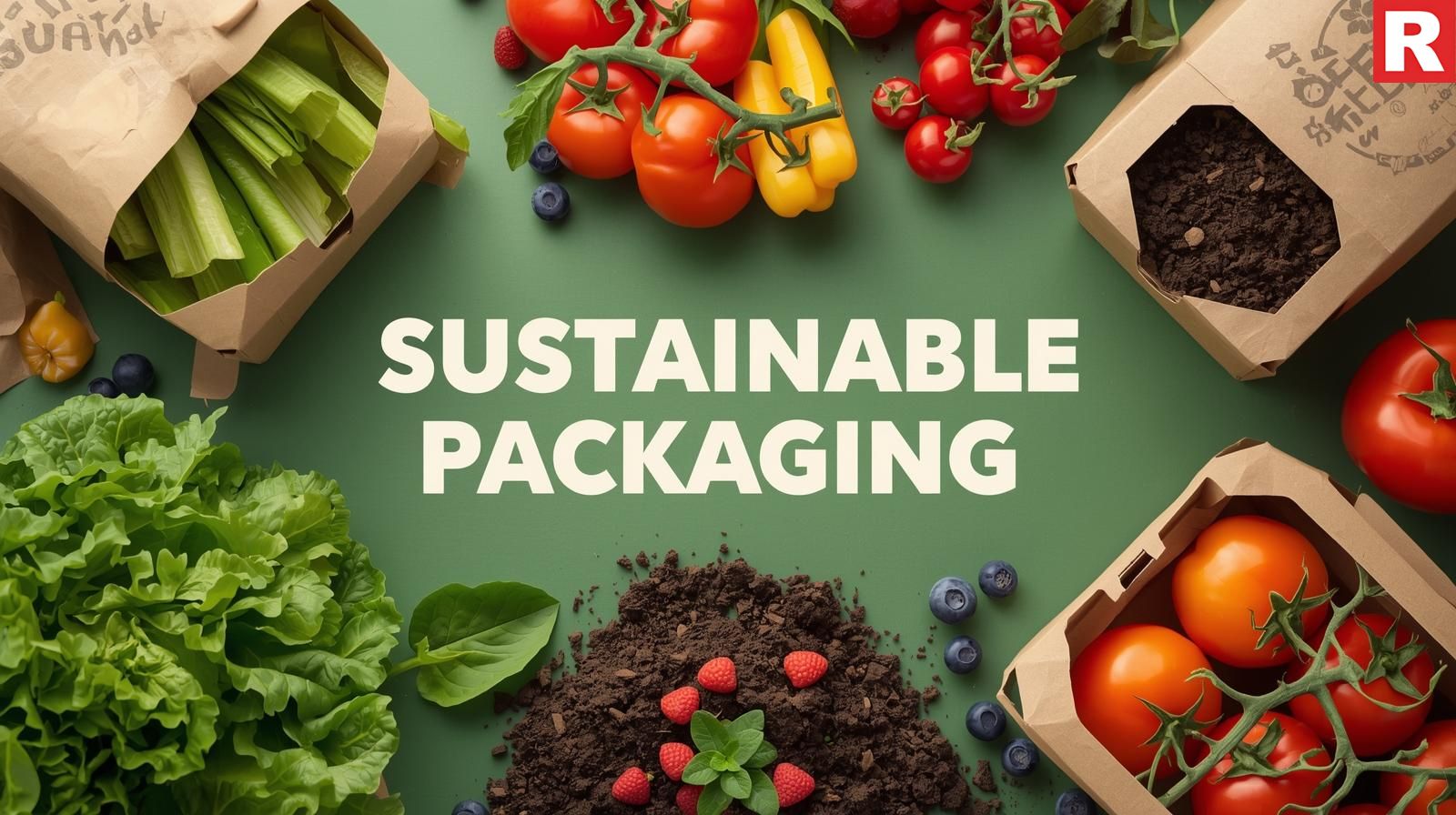
The rise of food-delivering platforms like Swiggy and Zomato has created a situation where the convenience only comes at the price of the environment. As much as modern dining is popular, so is its impact on the environment. There is a mountain of non-biodegradable plastic containers, cutlery, and bags that have become a byproduct of modern dining. And the customers who are environmentally conscious are not happy with it. They need a restaurant that aligns with their restaurants and uses eco-friendly packaging only. Therefore, there are multiple benefits of a restaurant can gain from moving towards sustainable packaging:
- Improved Brand Image: It draws in a loyal customer base by projecting the business as responsible and progressive.
- Regulation Compliance: Since single-use plastics are now prohibited by governments and localities all over India, sustainable packaging is now required instead of being a choice.
- Customer Loyalty: According to a Nielsen study, 66% of consumers worldwide are willing to pay more for goods from environmentally friendly businesses.
- Decreased Environmental Footprint: The biggest advantage is the decrease in resource usage, carbon emissions, and plastic waste.
Making the switch to eco-friendly packaging is a difficult task that requires restaurants to strike a balance between price, durability, and aesthetics. Thankfully, an entirely new generation of Indian companies has stepped up to the opportunity, providing creative answers to these problems.
Know more: Top Tea & Coffee Brewer Brands in India These Days
Understanding the Materials: A Guide to Sustainable Packaging

Before we look into the top brands, it is crucial to understand the materials they work with. The definition of the term "eco-friendly" can refer to a variety of categories, each with distinct characteristics and effects on the environment.
- Compostable Materials: Plant-based materials such as bamboo, maize starch, and bagasse (sugarcane pulp) are used to make these items. In a commercial composting facility, they decompose in a matter of months, producing nutrient-rich soil.
- Biodegradable Materials: Microorganisms can break down biodegradable materials over time, although the process can be sluggish and may result in the formation of microplastics. Compared to compostable products, it's a less desirable choice.
- Recycled Content: Packaging composed of recycled plastic, cardboard, or paper helps keep materials out of landfills and lowers the need for new resources.
- Edible Packaging: Although it's still a relatively new trend, several businesses are experimenting with packaging that may be consumed with the meal, such as seaweed or rice flour.
The listed brands offer a wide variety of products to meet various restaurant needs, specializing in a mix of these materials.
Top Eco-friendly Packaging Brands for Restaurants in India

Below are the top brands that lead the eco-friendly packaging industry. They are the first to offer the restaurant industry creative and eco-friendly packaging options.
Ecoware

Location: Noida, Uttar Pradesh, India (Headquarters)
Specialty: Producing and distributing packaging that is entirely biodegradable and compostable using renewable resources.
Type of Material: Bagasse (sugarcane fiber)
Usage/Good For: Disposable bowls, plates, cutlery, portion cups, and food containers (such as clamshells and meal trays). Great for dry, damp, hot, and cold foods. Safe for the freezer and microwave.
Degradability: Compostable
Price range: Larger containers may cost between ₹8 and ₹20, while disposable plates might cost between ₹3 and ₹5 per piece.
About Ecoware:
Since its founding, Ecoware has built a solid reputation as a reliable brand, making it a pioneer in India's compostable packaging market. Their main resource, bagasse, is a relatively abundant and sustainable byproduct of processing sugarcane. According to international standards like ASTM D6400 and EN 13432, Ecoware's products are 100% biodegradable, which means they entirely decompose into natural components without leaving behind any harmful residue. This is a crucial difference from "biodegradable" polymers, which might not completely break down or require particular environmental conditions.
What's new: Top Restaurant Decor Brands in India
Pappco Greenware
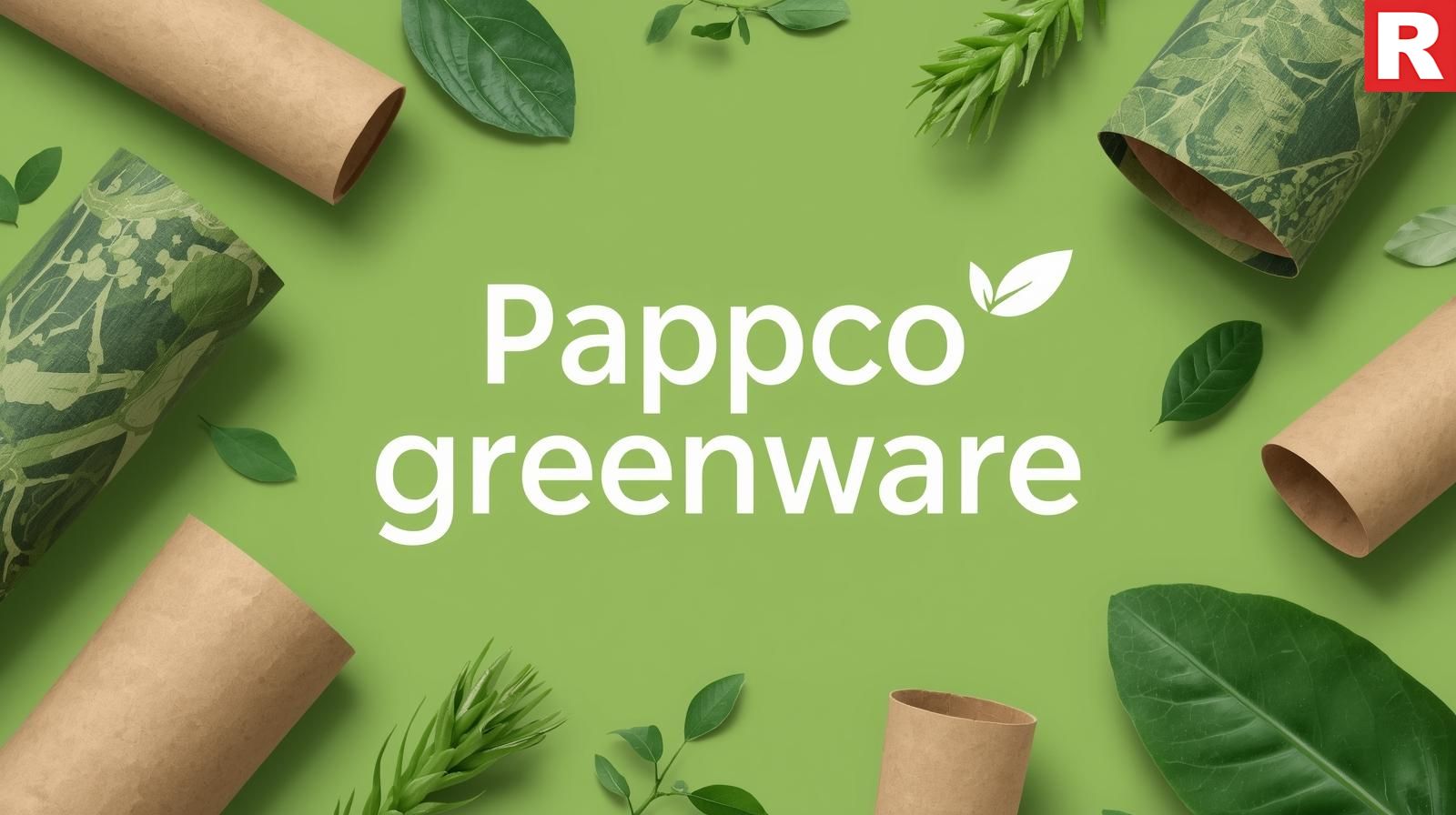
Location: Mumbai, Maharashtra, India (Headquarters)
Specialty: Providing a wide range of eco-friendly and compostable disposable products.
Type of Material: Bagasse (sugarcane pulp), Corn Starch (PLA), Bamboo, Paper
Usage/Good For: A broad variety that includes food trays, whisks, bowls, clamshells, glasses, cutlery, and plates. It works well with a variety of food types and temperatures.
Degradability: Compostable
Price range: A pack of 50 bagasse bowls can be around ₹250-₹350, while clamshell containers might be priced from ₹10-₹25 per unit.
About Pappco Greenware:
With its wide range of products, Pappco Greenware has swiftly emerged as a significant force in the sustainable packaging sector. Their goal is to "make plastic disposables history" and provide a range of options to meet the needs of various restaurants. They are an important component of the sustainable economy since their goods are made from renewable agricultural byproducts, particularly sugarcane and maize starch. For some product lines, they also use paper and bamboo, providing a wider range of environmentally friendly choices.
Pappco stands out due to its emphasis on providing a comprehensive solution. They offer a variety of specialty items, including coffee cups, stirrers, and portion cups, in addition to basic plates and containers, enabling a business to completely switch to environmentally friendly disposables.
Chuk

Location: Ayodhya, Uttar Pradesh, India (Headquarters)
Specialty: Manufacturing and supplying 100% compostable tableware.
Type of Material: Bagasse (sugarcane fiber)
Usage/Good For: Superior containers, lunch trays, bowls, and plates. All meal varieties can be prepared using this oven-safe, microwave-safe, and long-lasting product.
Degradability: Compostable
Price range: Plates and bowls are priced per piece or in bulk packs, typically ranging from ₹5 to ₹15 per unit.
About Chuk:
A member of the CK Birla Group, Chuk is a cutting-edge brand from the famous Orient Paper & Industries. Chuk has an advantage thanks to its support in terms of scale, technology, and quality control. Their commitment lies in creating a variety of dinnerware that is not only safe and practical, but also visually appealing. Even for a takeout lunch, their goods' sleek, simple design improves the dining experience.
Their products are a popular option for cafés and fine-dining establishments that wish to preserve a high-end brand image because of their reputation for robust construction and luxurious feel. They are free of plastic coatings and dangerous chemicals, and they are resistant to leaks and a broad range of temperatures (from freezer to microwave/oven).
Check out: How Farm-to-Table Restaurants Have Become Trendy These Days
Best International Cuisines You Should Try Once
Naturapack

Location: Gurugram, Haryana, India (Headquarters)
Specialty: Supplier and distributor of a variety of environmentally friendly food packaging options.
Type of Material: Bagasse, Paper, Wood (cutlery), PLA (lids, cups)
Usage/Good For: Compostable containers, paper bags, food wraps, corrugated boxes (like pizza boxes), wooden cutlery, and clear PLA cups and lids are all part of this versatile collection. Perfect for a variety of restaurant requirements, providing personalized branding.
Degradability: Compostable (for bagasse, PLA, wood) / Recyclable (for paper/cardboard)
Price range: Varies based on the source and the product. Paper bags and compostable containers are often in the inexpensive to mid-priced category.
About Naturapack:
In the supply chain for environmentally friendly packaging, Naturapack is an essential component. Rather than producing their own goods, they focus on locating and offering a wide range of environmentally friendly products from reputable manufacturers. This business approach enables them to provide a wide range of packaging supplies and solutions in one location, giving eateries of all sizes a practical and flexible choice.
They have a wide variety of products, including wooden cutlery, corrugated boxes for pizza and other baked items, several kinds of paper food wrappers and bags, and compostable bagasse containers. Additionally, they provide customized printing services, which enable restaurants to use their logo and design as a branding strategy on their packaging.
Bio-Lutions

Location: Headquarters in Germany, with a significant manufacturing facility in India (near Bengaluru).
Specialty: Utilizing agricultural waste to develop an innovative self-binding natural fiber material for environmentally friendly dinnerware and packaging.
Type of Material: Agricultural waste (e.g., straw, bagasse, cotton stalk, rice husk)
Usage/Good For: Strong and long-lasting containers, dinnerware, and overall packaging. Ideal for both hot and cold food, it provides a high-quality and durable substitute for plastic.
Degradability: 100% Compostable
Price range: Since the company works with big businesses and on specialized projects, their pricing is usually project-based.
About Bio-Lutions:
A well-known worldwide brand with a sizable presence in India, Bio-Lutions stands out for its innovative production method. They have created a patented process that produces a special self-binding natural fiber from agricultural wastes, including cotton stalk, bagasse, and straw. Because no chemical binders are used in this technique, the goods are entirely natural, chemical-free, and certified compostable. Their goods are renowned for being incredibly strong and long-lasting, competing with conventional plastic and providing a luxurious feel.
Their concept, which addresses waste management and sustainable product creation, has a particularly significant impact on the Indian market, where agricultural waste is abundant. Restaurants and major food service businesses that are dedicated to a completely sustainable and chemical-free supply chain choose Bio-Lutions as their partner because of their creative approach and reliable goods.
Read this: How Indian Restaurants Can Use Food Science to Create Irresistible Dishes
The Future of Food Packaging
India's transition to a sustainable food business is growing. Although these innovative brands offer great substitutes, it is also the duty of customers and companies, ranging from neighborhood restaurants to large franchises, to embrace and encourage these practices. Making the move to environmentally friendly packaging is a smart business move for restaurants that will benefit their long-term environmental sustainability, customer loyalty, and brand reputation. It is an effective technique to demonstrate a sincere concern for the environment and to contribute to the solution rather than the issue.

If mouthwatering food is the heart of a restaurant, then the ambiance and decor are its soul. In the competitive world of Indian hospitality, determining the success of a restaurant is not decided by the menu alone. Nowadays, the restaurant needs to have a good decor to stay and compete with others. Customers have urbanised now, especially the social media-driven millennials and Gen Z people. They seek more than a meal; what they are looking for is a brand new experience. One that captivates them at first glance and keeps them coming for more and more. Every component of the restaurant’s ambiance, from furniture to lighting and design, should contribute to a story that distinguishes a restaurant.
This article explores the potential for transformation of restaurant décor and features some of India's leading restaurant décor brands that are influencing the country's culinary scene going forward. From custom furnishings and cutting-edge lighting to eco-friendly materials and creative displays, these businesses are the hidden talents behind some of the nation's most recognizable and breathtaking restaurants.
Read more: A Modern Guide to India's Fitness-Focused Restaurant Concept
Key Elements of an Irresistible Restaurant Ambiance

It's crucial to understand the fundamental elements of a great restaurant interior to appreciate the work of these décor brands. Every component is essential to the whole sensory experience.
- Furniture: Bar stools, tables, and seating are not just functional pieces; they also determine flow and comfort. Commercial-grade seats from a company need to be long-lasting, comfy, and visually appealing. They set the atmosphere, whether it's the sleek elegance of metal frames or the rustic appeal of wooden tables.
- Lighting: Perhaps the most potent weapon in a designer's toolbox is lighting. Drama, warmth, or lively energy can be produced by it. Lighting-focused brands provide anything from task and ambient lighting to ornamental fixtures like pendant lamps and showpiece chandeliers. It is about creating a multi-layered lighting design that improves the area.
- Flooring and Wall Décor: Wall décor and flooring serve as the backdrop and base of any design and have the power to define an area. These companies offer the supplies and know-how required to achieve a vision, whether it is the raw, industrial appeal of polished concrete floors or the beauty of delicate tile work, or the textural simplicity of exposed brick walls or colorful, artistic murals.
- Art and Installations: A restaurant's custom artwork and installations frequently contribute to its unique personality. A custom sculpture at the entrance, a collection of well-chosen paintings, or an interactive wall that brings nature indoors are all examples of this.
Know more: Fundraising For A Restaurant: How it Works?
Top Restaurant Décor Brands in India
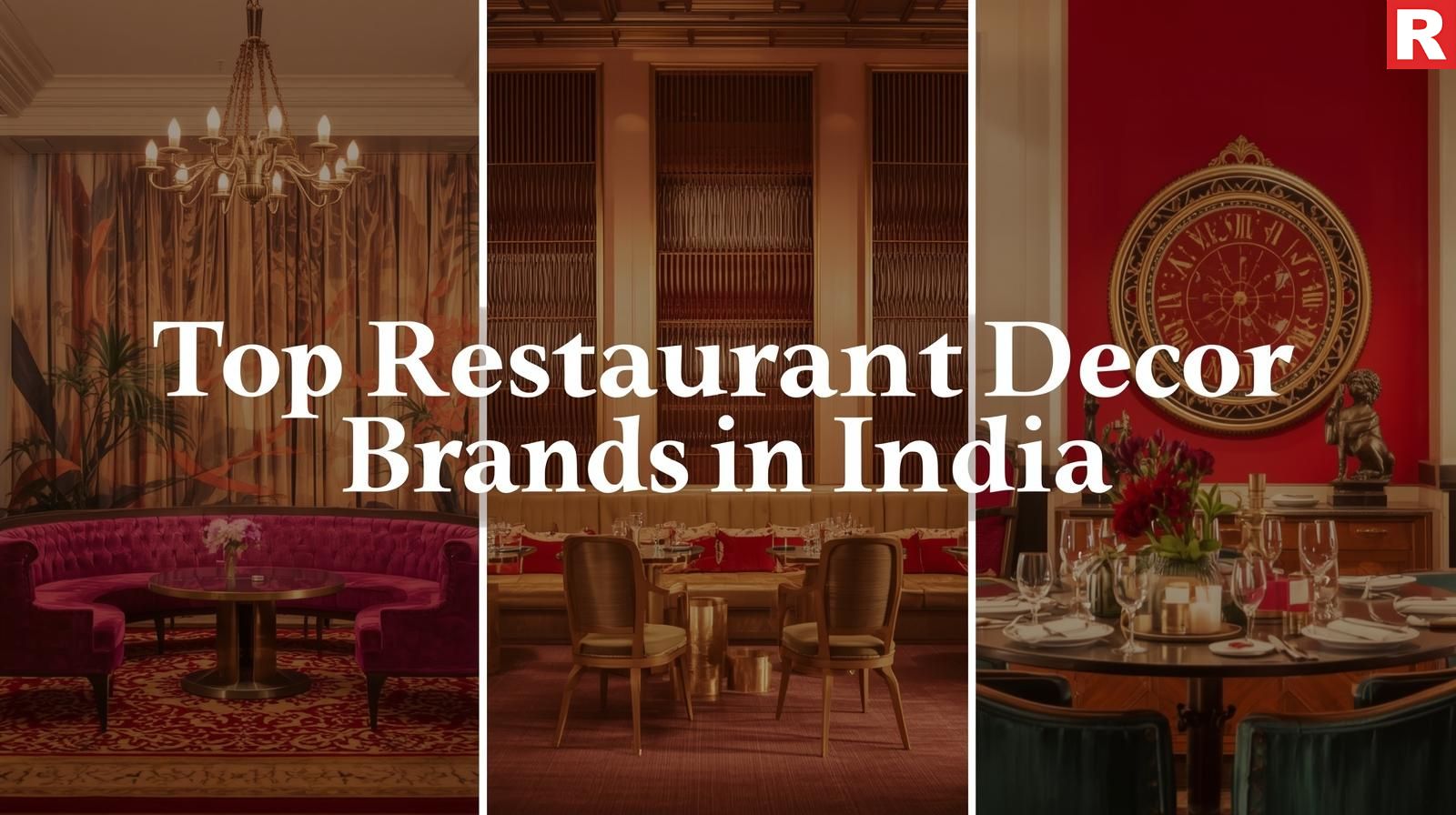
1. Suren Space
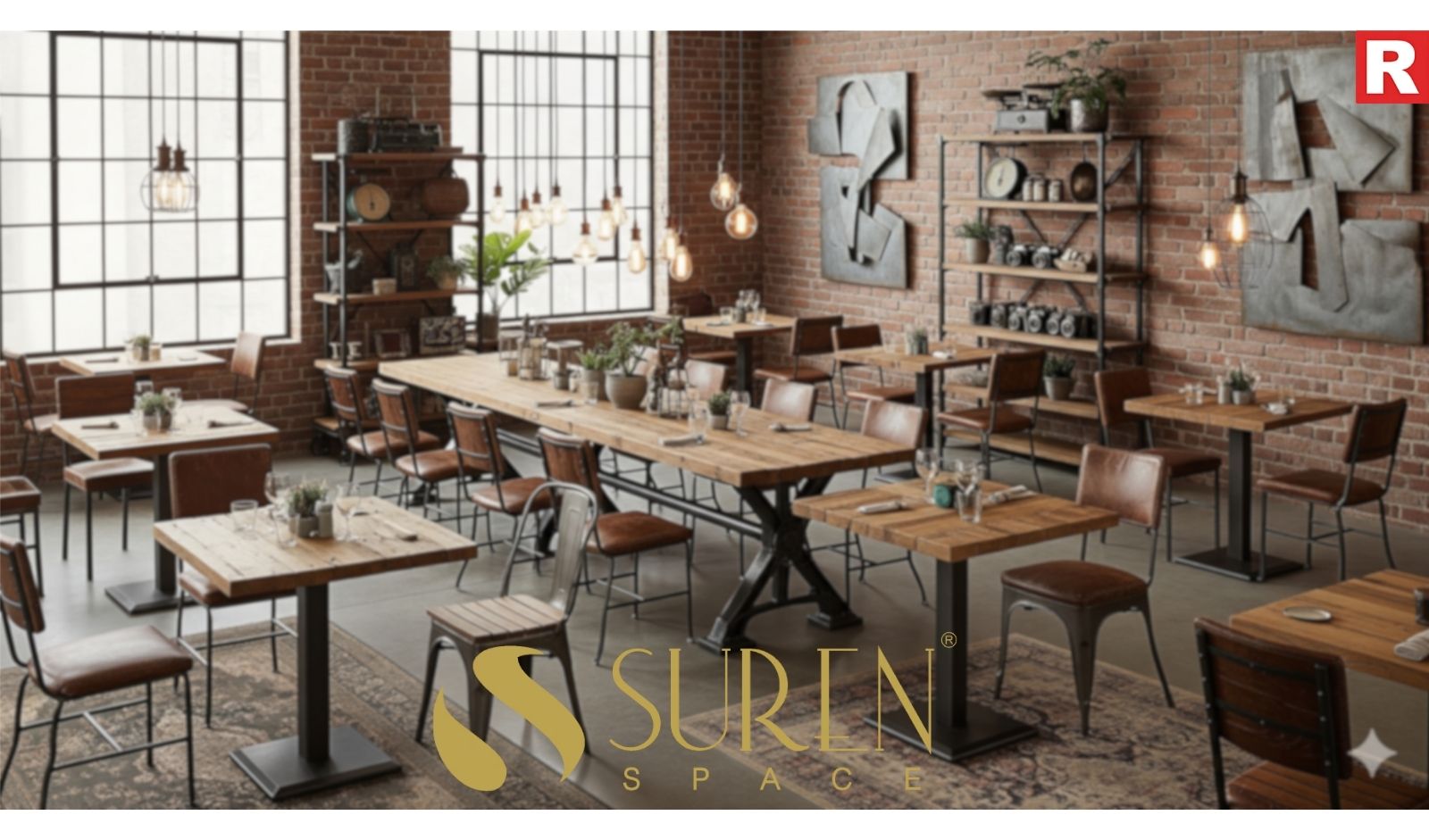
Website: https://www.surenspace.com/
Location: Jodhpur, India
Specialty: Handcrafted, wide variety of furniture designed to cater to diverse tastes and preferences
Price range: ₹1,200 for a bar stool to over ₹1,000,000 for a large furniture set
About Suren Space:
With over 15 years of experience under their belt, Suren Space is a big international exporter, manufacturer, and supplier, shipping their products worldwide.. They specialize in a broad variety of furnishings for both residential and commercial properties, with a particular emphasis on the hospitality sector, which includes hotels, resorts, restaurants, coffee shops, and bars. They provide a wide range of furniture, including handcrafted, custom, outdoor, hospitality, and commercial pieces. From vintage and modern to industrial and rustic, their portfolio offers a wide range of designs. The business is renowned for utilizing premium materials like leather, metal, teak, mango wood, and Sheesham wood. They blend contemporary design ideas with traditional Indian craftsmanship, especially from Jodhpur.
2. Durian Furniture

Website: https://www.durian.in/
Location: Mumbai, Maharashtra, India (Headquarters)
Specialty: Complete office and home furnishings, including a special collection for hospitality projects, as well as doors, wood veneers, and other construction supplies.
Price range: Depending on size and material, dining tables may cost anywhere from ₹15,000 to ₹50,000+, while restaurant chairs can start at ₹3,000 to ₹5,000.
About Durian Furniture:
An Indian success story, Durian Furniture began as a plywood factory in 1985 and has since grown to become one of the most recognizable and reliable names for complete interior design solutions. With a strong online presence and a network of more than 55 retail locations around India, Durian has made quality and design affordable for a wide range of consumers. Providing long-lasting, aesthetically beautiful, and useful furniture for both residential and business areas is central to their brand philosophy.
Durian offers restaurants a harmonious blend of modern styles, sturdy construction, and a wide range of material options. They are well-known for their timeless and contemporary furniture collections, which can be used in a variety of restaurant settings, from informal eating to more formal settings. Their dedication to sustainability, demonstrated by ethical wood sourcing and environmentally sustainable production, also appeals to modern businesses and customers.
What's new: A Comprehensive Guide to In-house Restaurants in the Indian Market
3. The White Teak Company

Website: https://www.whiteteak.com/
Location: New Delhi, India (Headquarters)
Specialty: Chandeliers, pendant lights, floor lamps, wall lights, and outdoor lighting are examples of luxurious and decorative lighting options.
Price range: Larger chandeliers range from ₹30,000 to over ₹1,00,000, while pendant lights start at ₹5,000 to ₹10,000.
About The White Teak Company:
The White Teak Company, which is known for its exquisite design and quality, has quickly become the biggest decorative lighting company in India. They are aware that lighting is about more than just providing light; it's also about establishing the atmosphere, improving aesthetics, and producing a memorable experience. Restaurant lighting fixtures frequently become focal features, giving the dining area personality and refinement.
A variety of outdoor lighting is also available from The White Teak Company, which is essential for restaurants with outside dining spaces or eye-catching exteriors. They are the preferred choice for restaurateurs wishing to enhance their dining experience with outstanding lighting because of their emphasis on premium materials, superb craftsmanship, and creative designs.
4. Pepperfry Business

Website: https://business.pepperfry.com/
Location: Mumbai, Maharashtra, India (Headquarters)
Specialty: Online marketplace and business-to-business (B2B) solutions supplier for modular solutions, furniture, and home décor that serves commercial ventures, including cafes and restaurants.
Price range: Prices can range from inexpensive chairs (₹1,000–₹3,000) to more expensive dining sets and tailored solutions (₹20,000–₹1,00,000+) because of its marketplace model.
About Pepperfry Business:
Although Pepperfry is well-known in India's e-commerce furniture market, its "Pepperfry Business" category focuses only on business customers, such as cafes, restaurants, and hotel accommodations. It serves as a comprehensive online marketplace with a huge variety of furniture and décor pieces, giving restaurateurs a scalable and practical way to furnish their restaurants.
Pepperfry Business's strength is its accessibility and tremendous variety. In a single showroom, restaurants can browse thousands of items from different manufacturers and brands, such as dining tables, chairs, bar stools, lounge chairs, outdoor furniture, and decorative accessories. For new businesses or those wishing to quickly renovate, this makes it a great choice.
5. Wipro Lighting
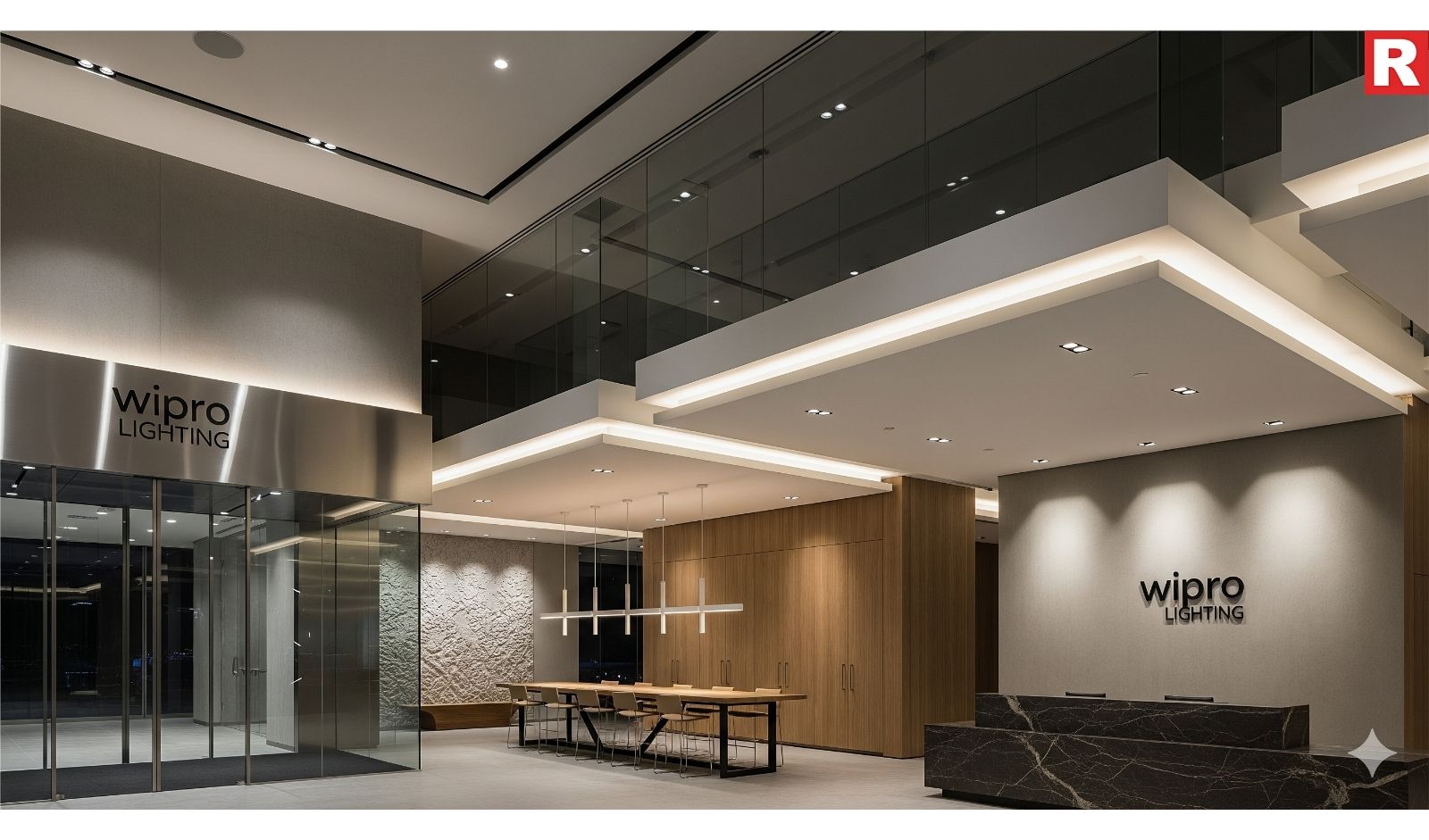
Website: https://wipro-lighting.com/
Location: Bengaluru, Karnataka, India (Headquarters)
Specialty: Smart lighting, LED bulbs, and human-centric lighting are examples of commercial and architectural lighting solutions for a variety of industries, including cafes and restaurants.
Price range: Usually project-based, pricing is determined by the size and particular needs of a restaurant's lighting design. Fixtures might cost anything from ₹1,500 to ₹15,000+.
About Wipro Lighting:
A major force in the Indian lighting sector, Wipro Lighting is a division of the diversified Wipro Enterprises and is renowned for its cutting-edge and energy-efficient products. Wipro Lighting concentrates on the architectural and practical elements, offering complete lighting designs for commercial spaces that are both visually beautiful and functional, whereas The White Teak Company is an expert in decorative lighting.
Wipro Lighting provides a variety of options for restaurants that go beyond simple lighting. Accent lighting to draw attention to decorative features, task lighting for the kitchen and service counters, ambient lighting for the dining area, and even smart lighting systems that enable dynamic mood changes are all included in this. Their proficiency with LED technology guarantees better light quality, reduced operating costs, and energy sustainability.
Check out: How Indian Restaurants Can Use Food Science to Create Irresistible Dishes
How Farm-to-Table Restaurants Have Become Trendy These Days
Choosing the Right Partner for Your Vision

One of the most important company decisions is choosing the appropriate decor brand. Here are some important things to think about:
- Brand Alignment: Do the aesthetics and philosophy of the brand complement the concept and target market of your restaurant?
- Durability and business Grade: Verify that the fixtures and furniture are made for heavy business use as well as household use.
- Sustainability Practices: Take into account companies that place a high value on environmentally friendly products and ethical production.
- Customization Capabilities: Are you limited to their current supply, or can they realize your original ideas?
- Budget and Timeline: Verify that the company can produce high-quality goods within your project's and your budget's limitations.
- After-Sales Support: Verify warranties, maintenance assistance, and part replacement simplicity.
Read this: Best International Cuisines You Should Try Once
Conclusion
The goal of the Indian restaurant industry is to provide a comprehensive experience where the ambiance, food, and service all work together harmoniously. The best restaurant décor companies in India are more than just suppliers; they are innovative collaborators that assist in transforming a culinary concept into a practical, welcoming area. These companies are giving restaurateurs the means to draw in audiences, create strong brands, and prosper in a constantly changing industry by comprehending the science of design and the art of ambiance. Investing in well-considered, high-quality design is now a need for a successful restaurant, not just a luxury.

For centuries, Indian food has captivated people with different palates all around the world with its rich, multi-layered flavors, vivid colors, and complex scents. It is said that only a chef who has mastered the art of dish balancing through generations of knowledge inherited from their predecessors can possess this magic. However, what if we told you there's a science behind this artistry? This is known as Food Science in the modern world.
In an already competitive food sector, simply serving good food is no longer enough. Most of today’s modern restaurants have started using the art of food science to bring magic to their food. This technique can help the restaurants attract more customers who are looking for a great dining experience. Food science is a way of understanding the chemical reactions that can help the food become more delicious. This knowledge can also help to elevate traditional Indian recipes. In this article, we will be exploring the ways that can help the Indian restaurateurs apply the principles of food science to create unforgettable dishes.
Read more: Best International Cuisines You Should Try Once
What is Food Science? How does it work?

The study of food's physical, biological, and chemical composition, as well as the biological foundations of food preparation, is known as food science. It is an art form that enhances food safety, quality, and nutrition by utilizing chemistry, biology, physics, and engineering.
Key Aspects of Food Science
- Food Chemistry: Investigates the components of food, such as the vitamins, minerals, fatty acids, proteins, and carbs. It also investigates the chemical alterations that food goes through while being processed, stored, and cooked, like the Maillard reaction that gives food its savory, browned crust.
- Food Microbiology: Focuses on the microbes that are present in food, both good (such as those that aid in fermentation) and bad (such as those that lead to spoiling or foodborne illness). This area is essential for creating preservation techniques and guaranteeing food safety.
- Food Engineering: Designing and creating systems and equipment for food processing is the focus of food engineering. It enhances food production by using engineering concepts for everything from packaging and quality control to pasteurization and refrigeration.
- Nutrition: The study of food's nutritional content and how it affects human health. This covers the creation of dietary supplements and food supplements.
Know more: Fundraising For A Restaurant: How it Works?
Different Types of Food Science Techniques and How to Use Them
Let us take a good look at some food science techniques and their reactions. We will also see the ways to incorporate them into the restaurant’s kitchen:
1. The Maillard Reaction: The Secret to a Perfect Sizzle

One of the most important chemical reactions in cooking is the Maillard reaction, which is also known as the best friend of a chef. It's what gives a nicely seared paneer a rich, nutty crust, why a tandoori chicken has a lovely, smoky char as it comes out of the oven, and why caramelized onions give a curry such a deep sweetness.
In simpler terms, this is a complex process that involves amino acids and reducing sugars. These compounds react when the food is heated to a certain temperature (typically above 140°C or 285°F). This creates hundreds of new flavor and aroma molecules in the food.
How to use it in your kitchen:
- Tandoori Excellence: The Maillard process performs well in a tandoor oven's high heat. Make sure the marinated meat or veggies are dry on the outside before cooking to improve them. That golden-brown crust can also be achieved with a thin layer of fat, such as ghee.
- Caramelizing Onions: Take your time. The natural sugars in onions caramelize when they are cooked gently over low heat, giving any curry a rich, sweet, and deep foundation. This is an essential step in making a traditional Dal Makhani or a rich Rogan Josh.
- Searing Proteins: Proteins that are seared in a hot skillet before being added to a curry, such as chicken, fish, or even tofu, can maintain their flavor and offer a level of depth that might otherwise be missing.
2. The Art of Acidity: Balancing the Palate

Indian food is renowned for its strong flavors, which are flavorful, spicy, and frequently creamy. In the absence of a complementary acidic component, a dish may feel flat or heavy. A key element that clears the palate, enhances flavors, and encourages you to take another mouthful is acidity. Consider it the high note in a symphony of flavors.
How to use it in your kitchen:
- Final Touches: A dish can be transformed with a dash of amchur (dried mango powder) or a squeeze of fresh lemon juice right before serving. For this reason, a chhole bhature or dal tadka requires a last squeeze of lime.
- Tamarind and yogurt: They are essentials for a reason. In addition to softening meat, yogurt gives a sour taste that balances the richness of korma or biryani. Likewise, tamarind gives South Indian soups like sambar a rich, tangy sourness.
- Pickles and chutneys: These are expertly prepared acidic ingredients that are meant to enhance a dish; they are more than just accessories. While a sweet-and-sour tamarind chutney might cut through the richness of a snack like samosas, a sharp, tangy pickle can balance a fatty meal.
What's new: A Modern Guide to India's Fitness-Focused Restaurant Concept
3. Umami: The Fifth Taste in Indian Cuisine

Umami is a more subtle, savory flavor that gives food a rich, fulfilling depth, whereas salt, sweet, sour, and bitter are all readily identifiable. This naturally occurring element, which is frequently referred to be "meaty" or "broth-like," is what gives a dish its authentic flavor.
How to use it in your kitchen:
- Tomatoes: The umami potency of slow-cooked tomatoes is immense. Glutamates, the chemical ingredient that gives them their umami flavor, are released and concentrated during cooking.
- Mushrooms: A natural source of umami is mushrooms. Their earthy, savory flavor will be enhanced by sautéing them until they are well-browned, which makes them a fantastic addition to vegetarian curries.
- Fermented Foods: The chemical process of fermentation adds taste to food. Idli and dosa batters, as well as buttermilk (chaas), are examples of fermented Indian cuisine that have a mild umami flavor.
- Aged Cheeses: You may add a powerful umami boost to fusion recipes by using aged cheeses like Parmesan (or an Indian substitute).
4. The Role of Texture: A Feast for the Senses

Texture is a key component of the multisensory experience that is food. It is much more intriguing and fulfilling to consume a food with a range of textures rather than one that is continuously mushy.
How to use it in your kitchen:
- Crunch & Crispness: To add a pleasing crunch, finish with a final garnish of roasted cashews, crispy sev, crushed peanuts, or fried onions. The combination of crisp, soft, and moist textures is what makes pani puri and bhel puri tempting.
- Creaminess & Smoothness: To make a silky, creamy sauce for a malai kofta or shahi paneer, use a finely ground nut paste (almond or cashew).
- Contrast is key: Serve a flaky paratha or a crispy dosa beside a warm, tender curry. Additionally important is the contrast between a hard protein (such as a paneer cube or a well-cooked chicken breast) and a silky sauce.
5. Flavor Pairing: Beyond the Basics

Through the analysis of the chemical compounds found in various foods, food science has revealed many secrets of flavor pairing. This enables chefs to create surprising yet delicious pairings that go beyond traditional pairings. For instance, basil shares some of the flavor molecules found in coconut and ginger, so a recipe that combines them can seem both familiar and unique at the same time.
How to use it in your kitchen:
- Spices and Fruits: Spices such as cardamom, nutmeg, and cinnamon have volatile components in common with apples and pears. With this information, you can make elegant desserts with an Indian twist.
- Chocolate and Chili: A well-known example of a scientifically proven combination is chocolate and chili. A surprise and well-balanced flavor experience is produced by the flavanols in chocolate and the capsaicin in chili peppers.
- Mint and Cucumber: These two fresh, cooling ingredients are frequently used in salads or raitas. Knowing the science underlying this combination can lead to new applications, such as cucumber-and-mint chutney or water infused with mint.
Check Out: A Comprehensive Guide to In-house Restaurants in the Indian Market
Making your Restaurant Future Ready: Building Experiential Brands
6. The Science of Spices: From Bloom to Boost

One essential method in Indian cooking is the tempering of spices, also referred to as tadka or chaunk. In itself, this is a scientific procedure. Adding whole spices, such as cumin seeds, mustard seeds, and asafoetida, to hot oil or ghee causes their flavor compounds to "bloom," giving the oil a deep flavor and aroma.
How to use it in your kitchen:
- Timing is Everything: Timing is crucial since every spice has a unique smoke point and ideal release period for its flavor. To keep them from burning and becoming bitter, it's important to add them in the right order. Add the whole spices first, then the powdered spices.
- Control of Temperature: The oil should be hot enough to release the flavors without burning the spices right away. A sizzle is good, a flaming cloud of smoke is not.
7. Temperature and Presentation
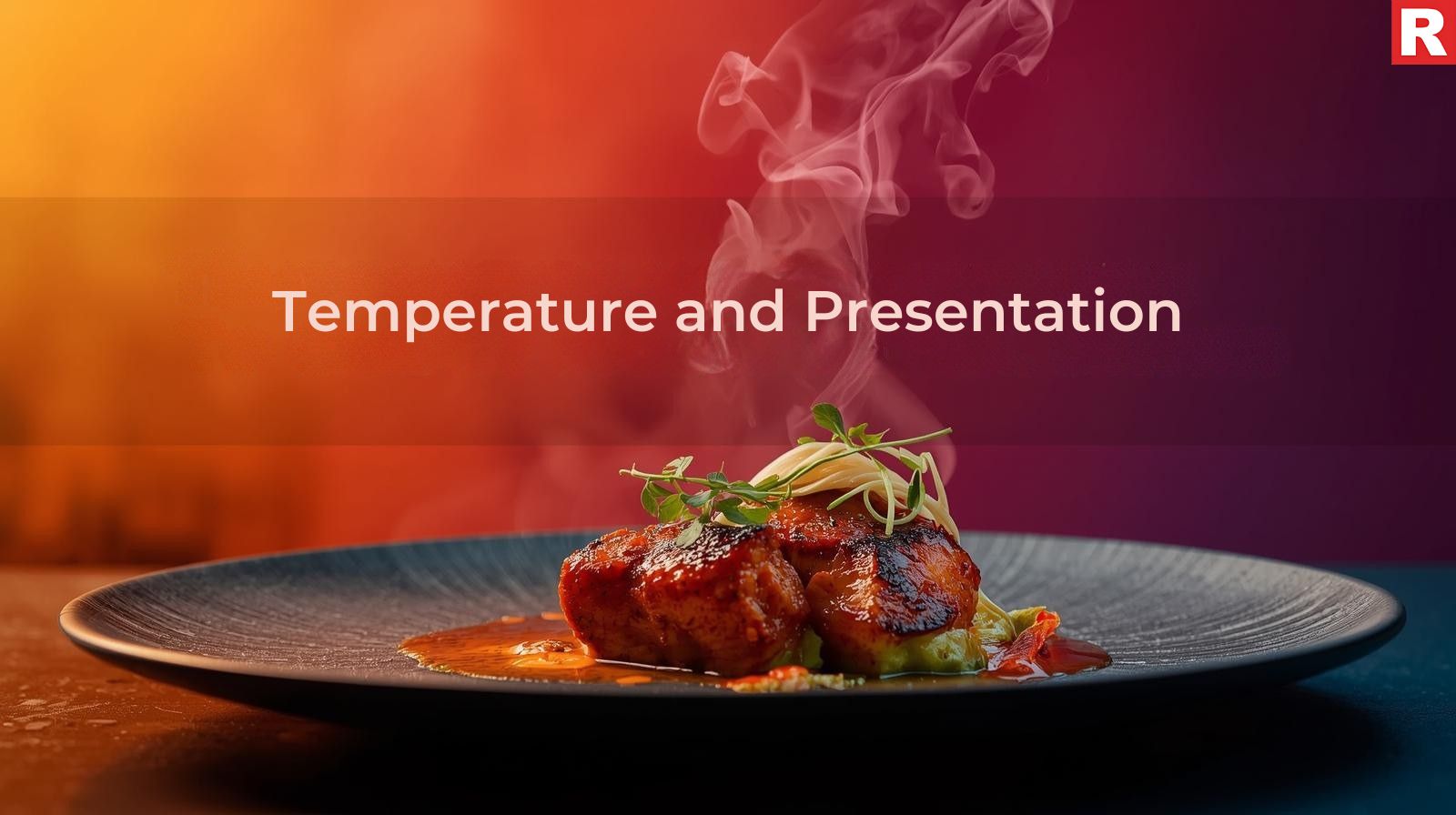
The last two components that can improve a dish are frequently disregarded.
- Serving Temperature: How we taste a meal is significantly influenced by its serving temperature. It is best to serve a raita or salad cold to highlight its refreshing features, and a hot curry hot to enhance its scents.
- Visual Appeal: Our eyes are the first to take in the food we eat. A wonderful meal starts in motion by an elegantly prepared dish, featuring an organized arrangement of garnishes and a balance of colors. An eye-catching garnish, such as a sprinkling of paprika, a spoonful of contrasting yogurt, or fresh cilantro, can enhance the appearance of a dish just as much as its flavor.
Read this: How to Find Your Niche in the Restaurant World
Conclusion
Food science is not about using a sterile laboratory method to replace the natural artistic talents of Indian cooking. Rather, it aims to give a more thorough explanation of the "why" underneath traditional techniques. A new level of culinary perfection can be achieved by Indian restaurants by fusing the knowledge of centuries-old recipes with contemporary scientific ideas.
Indian cuisine's future is in improving upon its traditional dishes rather than merely re-creating them. It's about a chef who knows why a bit of tamarind makes a rich curry delicious, why a nicely charred onion produces a deep umami, and why a pinch of sugar balances a tomato sauce. Indian eateries may create a new generation of genuinely remarkable meals by embracing this blending of art and technology.

The culture of restaurants in India has increased over the past years a lot. That’s why, with new models of establishments appearing over the years, the traditional models of restaurants are also expanding. While standalone restaurants are doing well continuously, a significant and incredibly profitable market is emerging, which is the in-house restaurant. An in-house restaurant refers to a culinary business that is operating within another main business, such as a hotel, resort, club, mall, hospital, corporate office, or even a retail store. In a market where real estate is highly valued, and consumers seek convenience and personalised experiences, the in-house models work perfectly by offering a compelling route to profitability and brand building.
So, in this article, we will be dissecting the world of in-house restaurants in the Indian market. We will discuss the special benefits and difficulties of this model, describe the different kinds of in-house setups, provide a step-by-step guide for starting and running one, and point out important factors for prospective restaurateurs hoping to succeed in this specialized market, from a corporate cafeteria to a hotel's signature dining room.
Read more: Best Food Delivery Apps & Quick Commerce Platforms in India
What Exactly is an In-house Restaurant? Defining the Model

An integrated dining facility is referred to as an in-house restaurant. This is another type of food and beverage (F&B) activity that plays a crucial role in another company or business. Compared to standalone restaurants, which operate independently, an in-house restaurant's primary function is bigger and frequently goes beyond simply providing customers with food. The in-house restaurant business's primary goals are:
- Enhance the Core Business: The in-house business provides a key service that helps to enhance the guest experience in the hotel. In a corporate office, they provide convenience that helps boost employee morale and productivity in their work.
- Generate Additional Revenue: While it serves the core business, it is also an additional profit center for the business.
- Support Brand Image: The style and quality of the restaurants contribute significantly to the overall opinion of the brand of the host company.
Its symbiotic relationship with the parent company is its primary feature; the success of the whole business is frequently linked to its own.
Types of In-house Restaurants in India

The in-house model is quite flexible and quickly adaptable. So it can be tailored to meet the demands of various primary businesses.
- Hotel Restaurants: The most prevalent and frequently varied are hotel restaurants, which include:
- All-Day Dining: Breakfast, lunch, and dinner are served separately and at buffet-style stations.
- Specialty Restaurants: These are fine-dining establishments that specialize in a single cuisine. Like an authentic Italian restaurant or a regional Indian specialty restaurant within a hotel.
- Cafes/Lounges: These are casual spaces for light snacks and drinks.
- Pubs and bars: Serving customers seeking drinks and pub fare.
- Resort & Club Restaurants: Like hotels, but frequently with more of a focus on casual meals, cafes by the pool, and event catering. Numerous F&B establishments are frequently found in member-only clubs.
- Corporate Cafeterias/Canteens: Large offices, IT parks, and industrial complexes all need corporate cafeterias or canteens to provide their staff with inexpensive or subsidized meals.
- Hospital Cafeterias: Providing meals to patients, employees, and guests, frequently emphasizing diet-specific and healthful selections.
- Food Courts at Multiplexes: In addition to popcorn and drinks, several modern multiplexes now have authentic mini-restaurants serving a variety of cuisines.
- Retail Store Cafes: Often found in huge bookshops, fashion boutiques, or lifestyle stores, these places provide a cozy setting for customers to unwind and refresh.
- Educational Institution Canteens: Faculty and students can eat at schools, colleges, and universities.
- Airport restaurants and lounges: serving passengers, frequently with quick service.
Know more: Five Ways To Boost Your Restaurant's Lunch Rush
Opening an In-house Restaurant in India: A Step-by-Step Blueprint
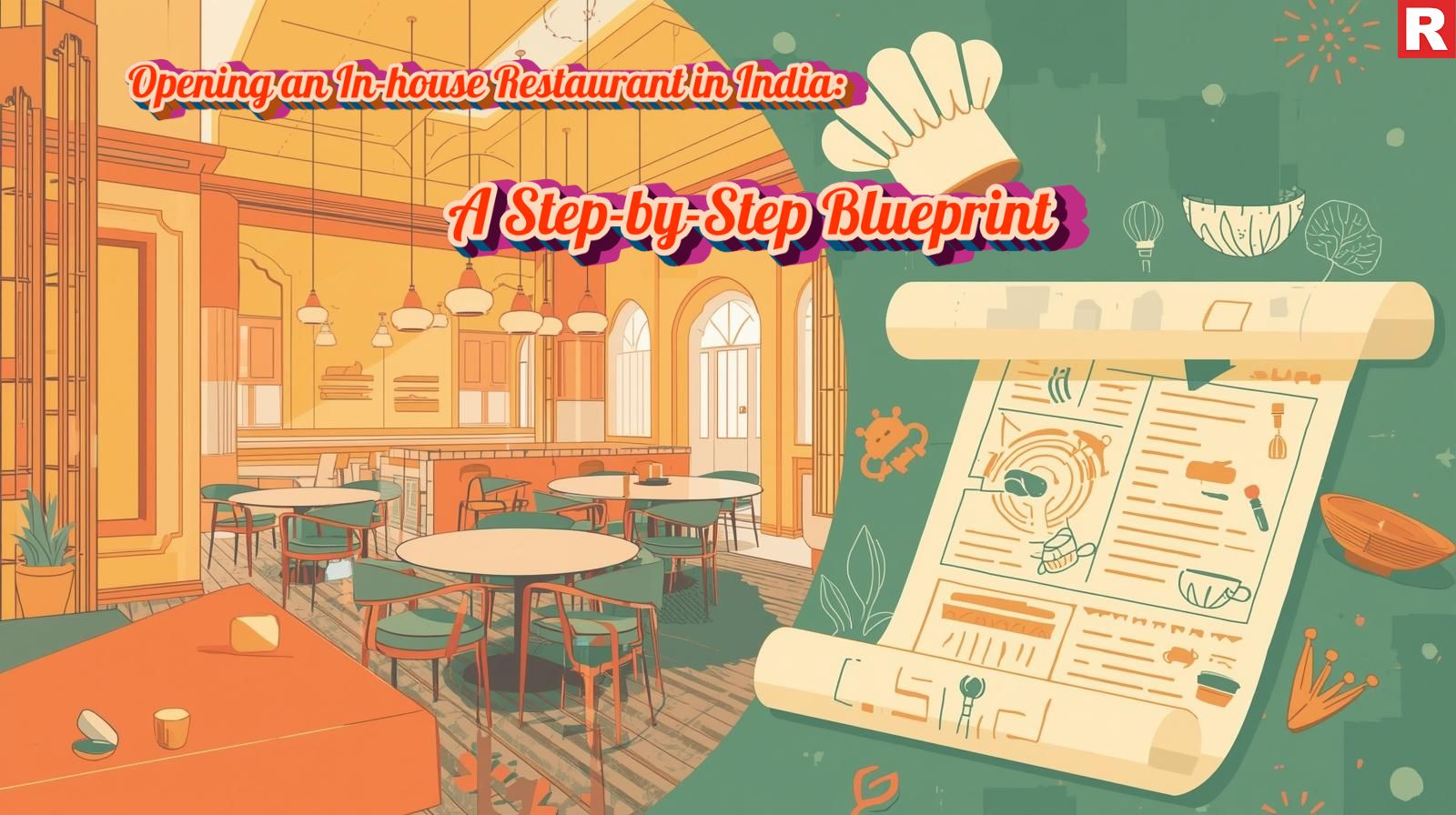
Step 1: Identify the Opportunity & Host Business
- Research on the Market: Examine the demand. Is a F&B partner required for a new hotel that is opening soon? Does an important corporate campus want to contract out its cafeteria?
- Host Business Analysis: Comprehend the target market, brand values, current F&B gaps, and overall operational philosophy of the host company.
- Building Relationships: Make connections with executives in the corporate, retail, and hospitality industries.
Step 2: Develop a Concept & Business Plan
- Concept Alignment: Develop a restaurant concept that precisely fits the target market and brand of the host company. A fast-casual, healthful cafe would be appropriate for a business workplace, whereas a fine-dining specialty restaurant might be appropriate for a luxury hotel.
- Menu Engineering: Create a menu that meets the needs that have been identified (e.g., varied alternatives for hotel visitors, quickness for corporate lunches). Pay attention to operational viability and profitability.
- Detailed Financial Projections: Taking into account the distinct internal cost structure, create reasonable estimates for sales, expenses, and profitability.
Step 3: Secure the Agreement & Legalities
- Negotiate the Contract: Contract negotiation is essential. Provide clarification on the terms of the agreement, including the duration, marketing responsibilities, operational control, rent/revenue split, shared resource costs, and departure conditions.
- Licencing and Compliance: Obtain the required fire safety certifications, health permits, local municipal licenses, GST registration, and food licenses (FSSAI). The F&B division frequently needs its own set of licenses, even in a bigger company. In India, this might be a difficult procedure.
- Insurance: Make sure your F&B operations are fully covered by insurance.
What's new: The Pros and Cons: Comparing Franchise vs. Independent Specialty Restaurants
Step 4: Design & Setup
- Kitchen layout and design: Create a kitchen that complements your cuisine and improves operational effectiveness. The design of the dining room must blend nicely with the aesthetics of the host property.
- Equipment Sourcing: Invest in or rent top-notch dining and kitchenware.
- Technology Implementation: Set up a reliable inventory management program, Point-of-Sale (POS) system, and possibly link with the host's property management system (PMS) for lodging establishments.
Step 5: Recruitment & Training
- Talent Acquisition: Employ F&B managers, seasoned chefs, and wait staff who are aware of the complexities of in-house dining. Seek out people who can positively represent the host brand and your business.
- Thorough Training: Educate employees on the host property's policies, safety procedures, and brand standards in addition to the menu and service. This covers banqueting processes and room service for hotels.
Step 6: Soft Launch & Grand Opening
- Trial Runs: To find and fix operational issues, do trial runs with a smaller menu and fewer employees.
- Soft Launch: To get input, hold a soft launch for management, internal employees, and a small sample of clients.
- Grand Opening: To get the most impact, work with the marketing team of the host company to plan the grand opening.
Check out: How to Find Your Niche in the Restaurant World
How to Choose the Healthiest Cooking Oil for Your Kitchen
Unique Advantages of the In-house Model
- Built-in Customer Base: The most important benefit is the built-in customer base. A corporate office supplies its staff, a hotel its visitors, and a multiplex its moviegoers. Compared to a stand-alone project, this drastically lowers the costs associated with acquiring new customers and initial marketing efforts.
- Reduced Initial Marketing Spend: The interconnected facilities, such as the F&B outlets, are frequently promoted by the host company's marketing campaigns. This lessens the restaurant's need to start from scratch while developing brand awareness.
- Shared Infrastructure & Resources: Depending on the agreement, you may be able to take advantage of shared resources such as cleaning personnel, utilities, security, and even HR assistance from the parent firm, which might reduce operating costs.
- Enhanced Credibility: The restaurant instantly gains credibility and trust when it is linked to a well-known brand, such as a reputable hotel chain or a well-known business house.
- Premium Pricing Potential: Because of the targeted audience and the perceived quality of the host brand, in-house restaurants, particularly in hotels or exclusive clubs, can frequently fetch higher rates.
- Diversified Revenue Streams: In addition to serving meals, in-house restaurants frequently handle banqueting, room service (in hotels), and event catering, which opens up a number of different sources of income.
Navigating the Challenges: The Flip Side of In-house Dining

- Dependency on Host Business: The parent company holds the key to the restaurant's success. Restaurant revenue is immediately impacted by a drop in hotel occupancy, business downsizing, or a drop in moviegoers.
- Brand Alignment & Control: You need to match the host brand's identity with the idea, menu, and service standards of your restaurant. Compared to a restaurant that operates independently, there can be less room for creativity. The host management must frequently approve all operational decisions.
- Operational Stability: Because hotels, for example, are open around-the-clock, there are demands for room service, banqueting needs, and different meal times. This requires an extremely adaptable and staff-oriented business.
- Complex Cost Structures: Unbundling expenses (rent equivalent, shared personnel, utilities) can be challenging, and profit-sharing arrangements require careful negotiation.
- Talent Recruitment & Management: It can be difficult to find qualified employees who can adjust to the unique requirements of an internal setting (e.g., multitasking in a hotel, discreet service in a corporate context).
- Limited External Foot Traffic: Despite having a captive audience, it may be more difficult to draw in outside customers (non-guests or non-employees) because of opinions, distinct entrances, or parking concerns.
Read this: How to Make a Failing Restaurant Successful Again
Critical Considerations for Success in the Indian Market
- Thorough Knowledge of the Host's Clientele: Customize your offers to the exact needs, whether it is a value-driven family, the picky business executive, or the budget-conscious visitor.
- Flexibility & Adaptability: Be ready to modify your menu in response to seasonal demands, special events, and dietary requirements (such as vegan or Jain food).
- Relationship Management: Keep up a great working relationship with the management of the host company. To resolve disputes and take advantage of collaborations, open communication is essential.
- Make Use of the Host's Marketing Channels: Promote the hotel on its website, in-room guides, social media accounts, and its personal assistants. Use internal communication channels for corporates.
- Cost Control & Profit Sharing: Keep a careful eye on all expenses and make sure the profit-sharing arrangement is just and clear. Seek chances to increase your share through operational optimization.
- Technology Interface: For operations to run smoothly, there must be a fluid interface with the host's current technological infrastructure (such as payment and reservation systems).
Conclusion
In the Indian F&B industry, the in-house restaurant model is now a major force rather than a supporting actor. It offers unmatched benefits, including an existing clientele, pooled resources, and increased brand recognition to restaurateurs who are prepared to handle its own unique complications. In the vibrant Indian market, from the busy center to the most remote corners of the hospitality industry, you can achieve substantial growth and establish a genuinely successful culinary enterprise by comprehending the various kinds of in-house establishments, carefully organizing your concept, and cultivating strong relationships with your host company.

If you are an aspiring restaurateur and still think that a standard, multi-cuisine menu is a surefire way to succeed in India’s thriving and fiercely competitive food and beverage sector, then you are completely wrong. The diners of today have become more sophisticated, adventurous, and globalized than ever before. As the era of globalisation has increased, so has the restaurant sector, which has become more crowded. In such a situation, where you have multiple competitors, and the customer wants a unique dining experience, it becomes difficult to meet all standards. Therefore, finding your own niche is a strategic choice that can help you to not just survive, but also thrive. After all, if you try to give everything to everyone, then you might end up being nothing to everyone. Now, the question comes: how to find your specific niche?
This is what we’re going to discuss in today’s article. A restaurant niche is a specialized segment of the market that you serve with a unique concept, menu, or experience. It is one of the characteristics, or you can say, a unique concept that makes you stand out in the crowd. This article will serve as your culinary guide, helping you step-by-step through the process to find your restaurant niche. We'll look at how to examine your own interests, research the market, and turn an innovative idea into a well-known and successful food restaurant.
Read more: How to Choose the Healthiest Cooking Oil for Your Kitchen
Why a Niche is No Longer Optional: The Shift in the Indian Market
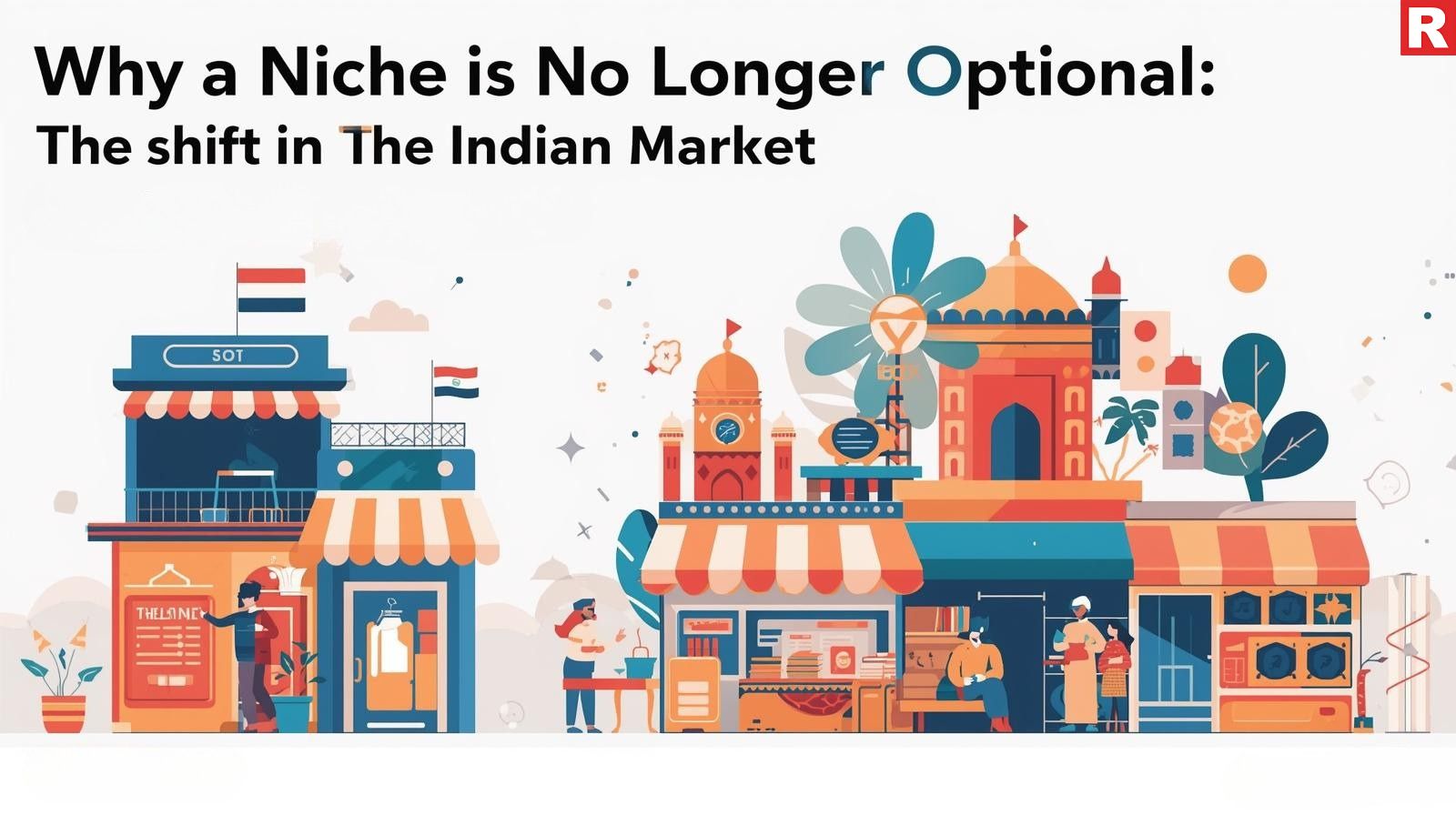
The "anything and everything" restaurant is becoming less popular. One obvious sign of the growth of specialty restaurants is the fundamental change in customer behavior. Here's why having a niche is now essential:
- The Search for Authenticity: Indian diners have become seasoned travellers who are beginning to value real cuisines. A restaurant that advertises that it specializes in both lasagna and biryani is frequently seen as a master of neither. By focusing your knowledge, resources, and enthusiasm on honing a particular dish or idea, you may establish a reputation and confidence in your niche.
- Creating a Powerful Brand Identity: A unique concept stands out in a sea of generic multi-cuisine restaurants. It provides you with a clear and lasting brand identity. A restaurant that serves genuine Goan seafood, for instance, is immediately more distinct than one that is just known as "The Global Kitchen."
- Targeted Marketing: Marketing to a specialized, well-defined audience can be made possible by a niche. Higher acceptance rates and a better return on your marketing effort might result from creating offers and content that appeal directly to their interests.
- Operational Efficiency: Kitchen operations are made simpler with a targeted menu. Less inventory is needed, less food is wasted, and your employees can specialize in a small number of dishes, which improves quality and consistency.
Know more: The Global Diner: Redefining Restaurants Through Quality, Quantity, and Presentation
The Self-Evaluation: Discovering Your Passion by Looking Within

Looking inward is the first and most important step before you ever consider the market. A genuine passion is the foundation of a successful niche. To find your perfect niche and your passion, you only need to ask yourself these three questions.
- What do you have a strong interest in? Does your family have a particular regional cuisine? Is it a specific component, such as sourdough or coffee? Or is it a concept, such as healthy eating or sustainability? You will keep going despite the unavoidable difficulties of running a restaurant because of your passion.
- What knowledge and abilities do you possess? Be practical. Do you have baking skills? An expert in a specific cooking method? Or are you a born host who is skilled at setting a special mood? Make the most of your current strengths in your niche.
- Which tales would you like to share? A story is the foundation of a strong niche. It might be the history of a cuisine, the path taken by a particular ingredient from farm to table, or the tale of your grandmother's recipes. Your brand's core will be this story.
The Market Analysis: Looking Outward for the Gap

It's time to evaluate your niche ideas versus the market once you have a few ideas, depending on your interests. Here's where you find possibilities and gaps in the market.
Determine the Population: Who works and lives in the area you are targeting? Is it a stylish, youthful student crowd? Or is it a mix of office workers and families? It is essential to comprehend their lifestyles, income levels, and preferences. For instance, a business that caters to lunch breaks would have to emphasize value and speed.
Analyze the Competition: Identify your direct and indirect competitors by conducting a competitive analysis. Which markets have become overcrowded already? Does the large number of generic restaurants in your neighborhood present a chance for a unique concept?
Find the Gaps: See what's lacking
- Geographic Gaps: Is there a certain cuisine that is in high demand but not being served in your neighborhood?
- Price Gaps: Does the market have too many expensive restaurants but not a good, affordable niche option?
- Concept Gaps: Is there a lack of health-conscious or vegan options in a market that is showing interest in those trends?
- Occasion Gaps: Is there a need for a late-night cafe or a brunch-focused spot?
What's new: The Pros and Cons: Comparing Franchise vs. Independent Specialty Restaurants
Types of Restaurant Niches
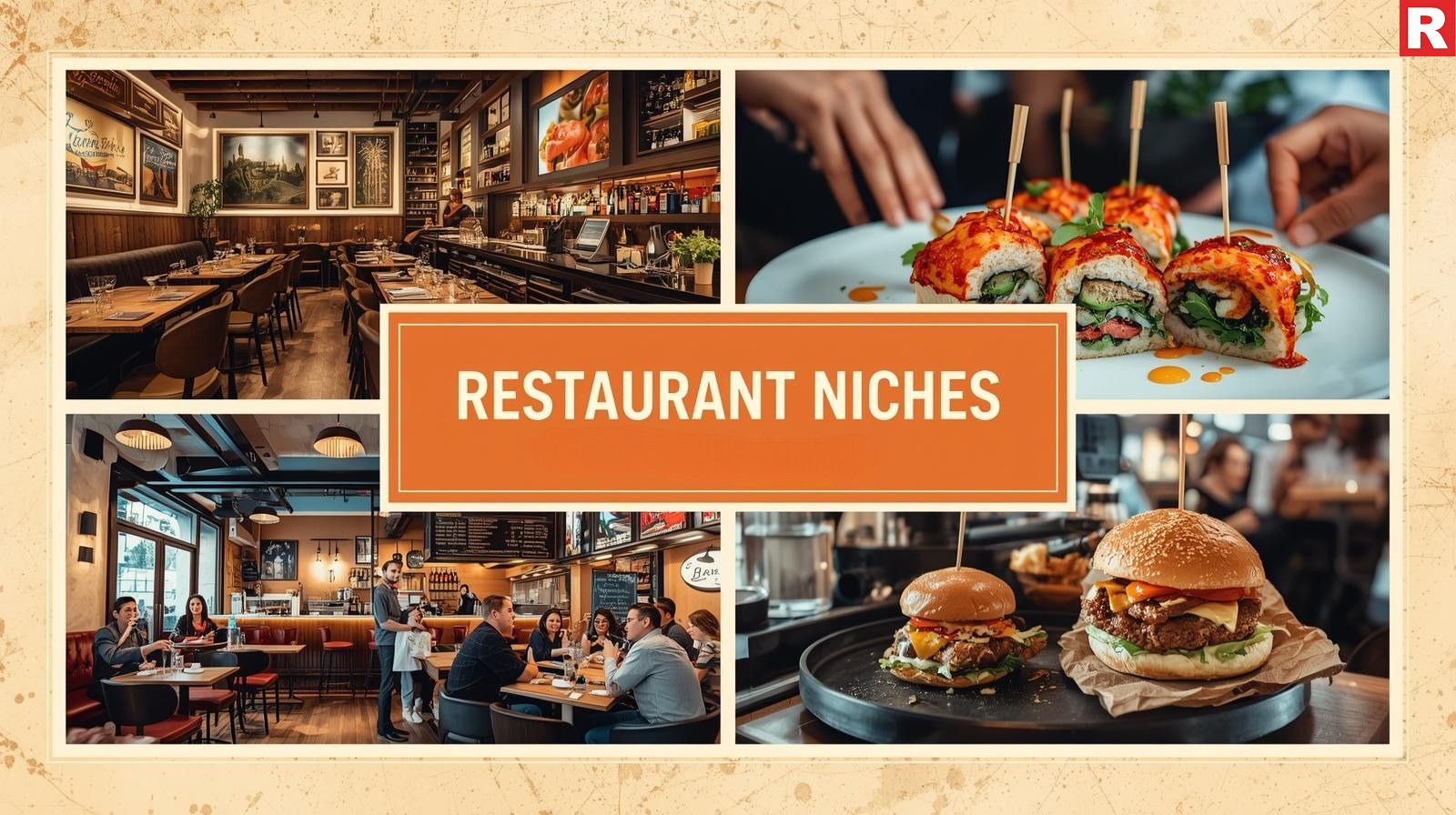
There are various ways to classify niches, and each has particular opportunities and difficulties.
Niche Based on Cuisine: This is the most widespread type of niche in business.
- Indian cuisine by region: Focus on a particular region's cuisine rather than just "Indian food." A Malabari restaurant that specializes in Keralan coastal cuisine, a Chettinad restaurant that serves fiery curries, or a real Rajasthani thali house are a few examples. This approach makes use of the wide variety of Indian cuisine.
- Single-Cuisine International: Authentic Japanese ramen bars, classic Lebanese shawarma joints, or Mexican taquerias are examples of single-cuisine international restaurants that concentrate on perfecting a single international cuisine. This satisfies the rising need for international flavors.
Product-Based Niche: A single notable product serves as the focal point of the entire idea.
- Biryani House: Concentrate on refining this one dish using a range of options (e.g., Kolkata, Hyderabadi, and Lucknow biryani).
- Dosa Bar: Serve a variety of dosas, including inventive fusion dishes and traditional masala dosas.
- Coffee & Bakes: A cafe that goes beyond the typical cafe menu by focusing on handmade baked goods and single-origin coffee.
Concept-Based Niche: A particular theme or idea serves as the foundation for the identification.
- Farm-to-Table: A restaurant that serves a seasonal, constantly evolving cuisine and sources all of its food locally. Customers who are concerned about their health and the environment will find this appealing.
- Themed dining: It refers to a restaurant that has a special theme, such as a historical era, a beloved fictitious realm, or a magical forest. An immersive experience is intended to be created by the menu, service, and décor.
- Health & Wellness: A niche that caters to dietary requirements, like an Ayurvedic-based menu, a gluten-free bakery, or a restaurant that serves only vegan food.
Experience-Based Niche: The actual dining experience is the main attraction.
- Interactive dining: This concept refers to ideas that transform a meal into an entertaining activity, such as live cooking stations, barbecue on the table, or cooking workshops.
- Experiential Cafe: It provides services beyond coffee, such as a reading cafe, a board game café, or one that welcomes pets.
Check out: 10 Restaurant Marketing Ideas That Are Wasting Your Money
The Boom of Quick Dining in Modern Cities
The Niche Validation Test

Before you actually use your funds to open your dream restaurant, validate that your idea is good and profitable.
- Pop-up Restaurant: The final test is the pop-up restaurant. For a brief time, find a tiny area or employ a "cloud kitchen" model and offer your specialty food. This will provide you with practical feedback on your concept and menu.
- Food Festivals & Markets: Hire a booth at a food festival in your area. This is an inexpensive method of determining interest, gathering input, and beginning to develop a customer base.
- Social Media Polls: Find out what your prospective audience wants to see by using Facebook and Instagram. Inquire about concepts, pricing, and menu items.
- Soft Launch: Hold a small gathering or a soft launch for a select group of people before a grand opening. Make final adjustments to your menu and service based on their feedback.
Read this: Five Ways To Boost Your Restaurant's Lunch Rush
Simple Steps To Boost Your Restaurant's Foot Traffic
Building Your Niche's Brand Story

A niche is merely a concept until a strong brand story makes it a reality.
- The Menu as a Story: There should be a story on your menu. Don't merely list foods; describe their history, where the ingredients come from, and their cultural value.
- The Extension of the Decor: Your specialization should be reflected in the way your interior design is done. A contemporary, minimalist sushi bar should have a very different aesthetic from a Rajasthani thali home.
- Staff as Narrators: Your staff members ought to be enthusiastic and informed about your specialty. They are the ones who will tell every consumer about your brand. Teach them to discuss the brand, the idea, and the food.
- Promoting Your Story: Reinforce your niche on your website, social media accounts, and other marketing platforms. Tell behind-the-scenes tales, introduce the individuals who created the recipes, and describe the unique qualities of your idea.
Conclusion
In the Indian restaurant industry, identifying your specialty is a process of self-analysis, market research, and innovative implementation. It is the most crucial choice that will influence the long-term profitability of your business and create its distinct character. You are not just developing a business when you reject the generic and choose a specialized, genuine concept; you are also developing a distinctive food attraction that will appeal to customers, win their trust, and survive over time. Your secret to success in a crowded and cutthroat market is a carefully considered and implemented niche.

Aspiring restaurateurs in India's vibrant and expanding food and beverage industry must make the crucial choice of whether to join an established franchise or launch a specialty restaurant on their own. The decision is not just a question of taste; rather, it is a strategic business option that might impact long-term performance. Both routes have clear benefits and considerable disadvantages. The specialized restaurant model has become more appealing as a result of the rise of the smart Indian diner, who now prioritizes authenticity and unique dining experiences over generic multi-cuisine menus. The dilemma still stands, though: is it preferable to use a franchise's established system and brand power or to create an original brand from the ground up?
This detailed article will compare franchises and independent specialized restaurants in India. We will examine the benefits and drawbacks of each model, examine the important variables that affect this choice, and offer a clear framework to assist prospective restaurateurs in making this important decision. By the end, you will know exactly which path best suits your entrepreneurial spirit, risk tolerance, and business objectives.
Read more: How to Choose the Healthiest Cooking Oil for Your Kitchen
The Franchise Model: The Power of a Proven Blueprint
The franchise restaurants are known for their role in the restaurant industry as a gateway to smooth success. With a restaurant franchise, you can run your own business using an already established brand's name, operating procedures, and intellectual property. This could be anything from a well-known chain like Domino's, Pizza Hut, etc., with an international customer base, to a prosperous domestic brand like Cafe Coffee Day, Haldiram’s in the Indian market.
Pros of a Restaurant Franchise
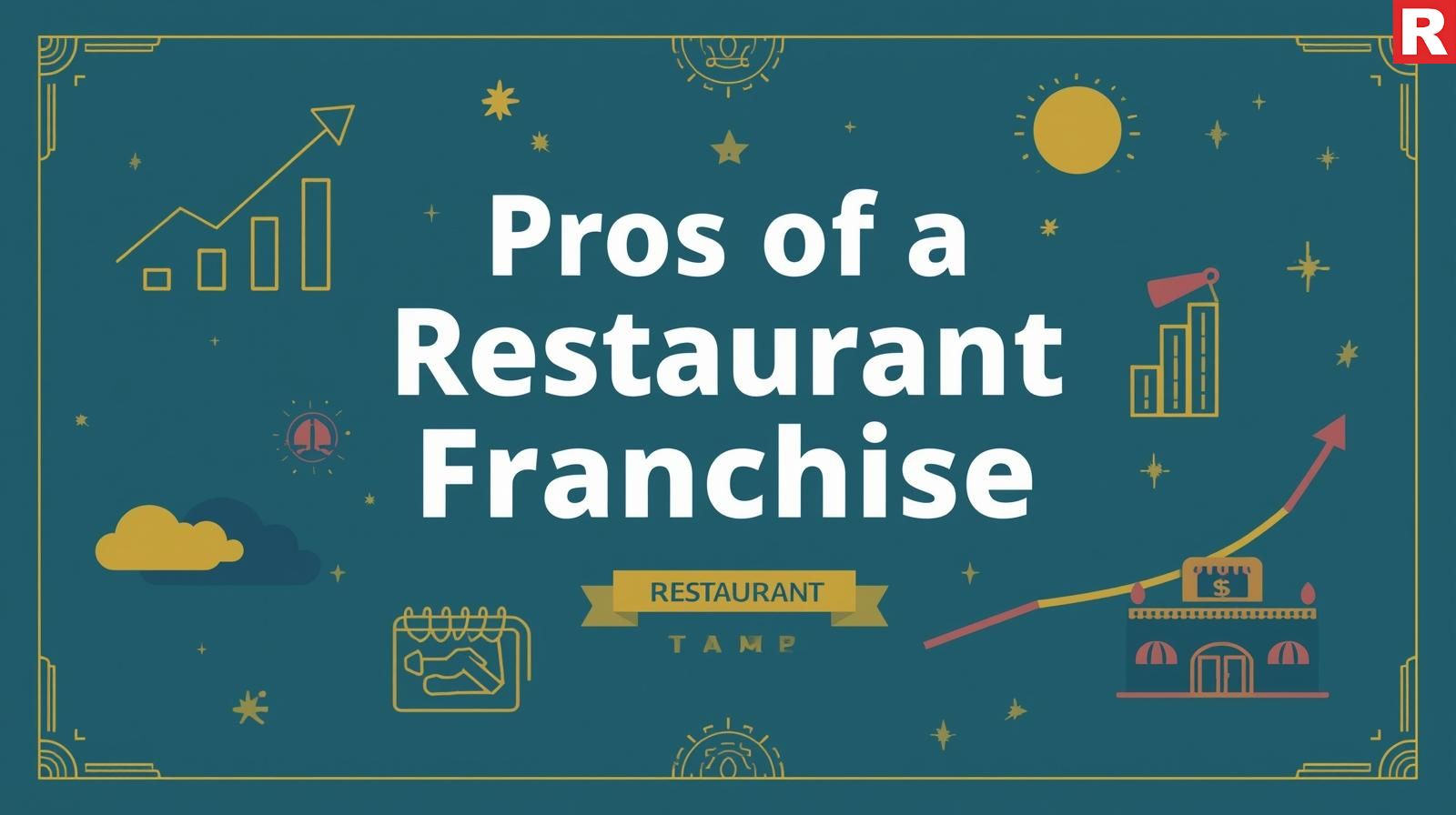
- Brand Recognition and Customer Trust: Perhaps the greatest benefit is customer trust and brand recognition. You have a well-known brand that people are familiar with and trust when you first open for business. Because of the brand's preexisting reputation for quality and reliability, you save a great deal of time and money compared to starting from scratch while building a customer base. This brand recognition is crucial in a crowded market.
- Proven Operations and Business Model: Franchises offer a comprehensive business plan. Everything from staff training and marketing to menu preparation and supplier management is covered in detail in the guides you receive. This removes uncertainty and lowers the possibility of costly operational errors, which are a major hazard for newly independent business owners.
- Established Supply Chain: A network of authorized suppliers and tightly regulated purchasing is are common feature of franchises. This guarantees a continuous supply chain, cheaper pricing because of purchasing power in bulk, and the same quality of ingredients—all of which are crucial in India, where supply can be irregular.
- Ongoing Support and Training: The franchisor provides you with ongoing support as a franchisee. This covers marketing support, operating guidance, troubleshooting help, and basic training for you and your employees. First-time business owners really benefit from this safety net.
- Less Marketing Guesswork: The majority of brand-level marketing and advertising, including digital promotions and national campaigns, is frequently managed by the franchisor. Even if you might donate to a marketing fund, you still gain access to expert, extensive campaigns that would be impossible for you to fund on your own.
Know more: 10 Restaurant Marketing Ideas That Are Wasting Your Money
Cons of a Restaurant Franchise
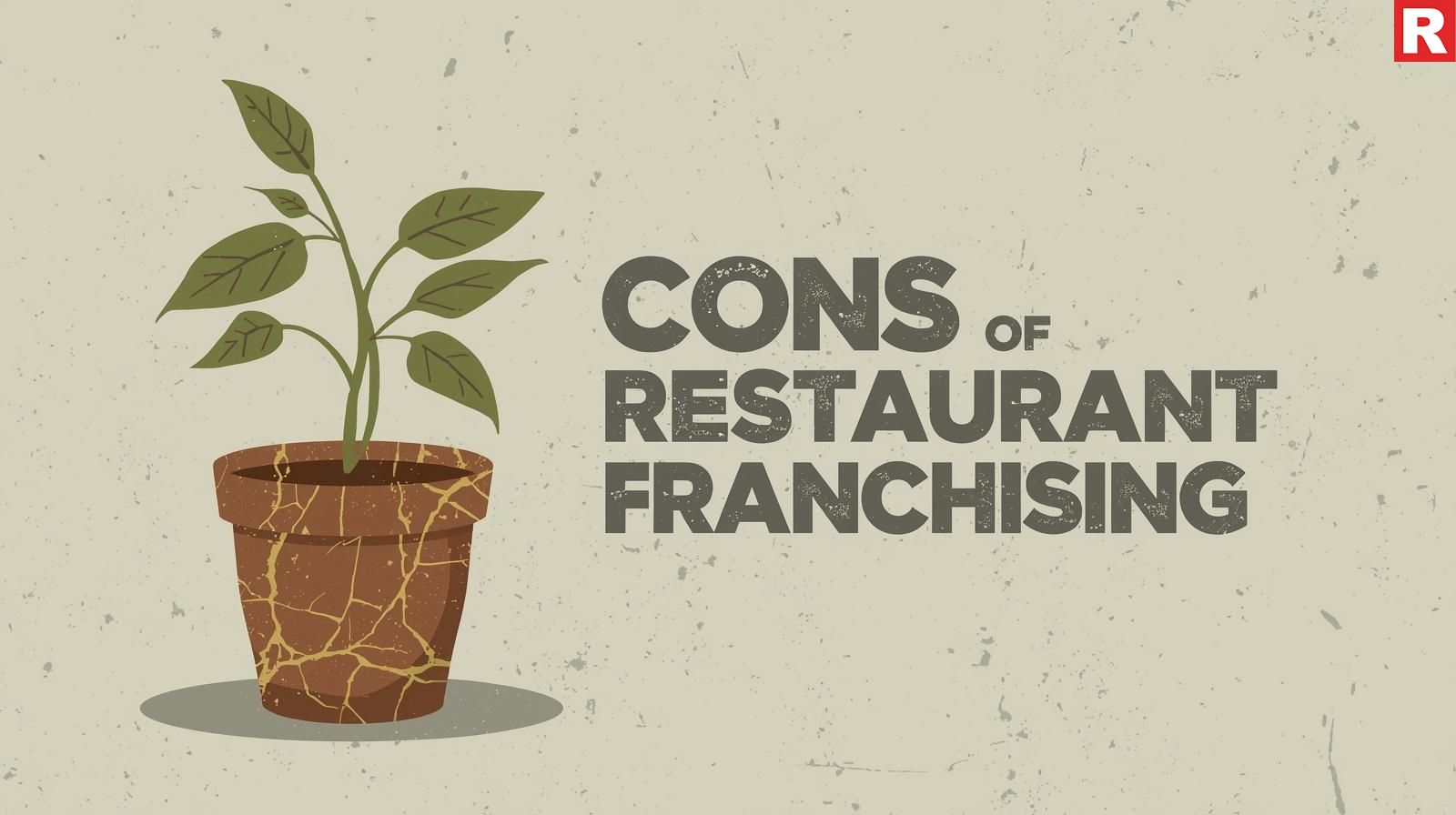
- High Initial Investment and Continuous Fees: Purchasing a franchise might come with a hefty franchise fee, royalties (a portion of sales), and a payment to the brand's marketing fund. Your profitability may be greatly impacted by these recurring expenses.
- Lack of Creative Freedom: The franchise agreement limits your options, regulating everything from the supplier and décor to the menu and prices. Very little space exists for creativity or personalization. For instance, you need corporate clearance before you can launch a new dish to satisfy local tastes. Your creative energy might feel limited by this.
- Operational Limitations: Although a tried-and-true system has advantages, it can also have disadvantages. It may be challenging to adjust the system to local market conditions or a rapid shift in customer preferences due to its lack of flexibility. For a given location, the "one-size-fits-all" strategy might not necessarily be the best one.
- Dependency on the Franchisor's Reputation: Your restaurant's reputation may be damaged without your fault if the franchisor experiences a crisis that damages their brand in another region of the nation. You can lose or gain something as your restaurant is tied to the franchise’s fate.
- Limited Profitability per Unit: Although a franchise model offers stability, it cannot be as profitable as a very successful independent restaurant on a percentage basis because of the continual outflow of royalties and marketing fees.
What's new: Five Ways To Boost Your Restaurant's Lunch Rush
The Independent Restaurant Model: The Path of True Entrepreneurship
An independent specialty restaurant is a business that you start and run completely on your own. You make all of the decisions, including those regarding the menu, marketing, and brand idea.
Pros of an Independent Specialty Restaurant
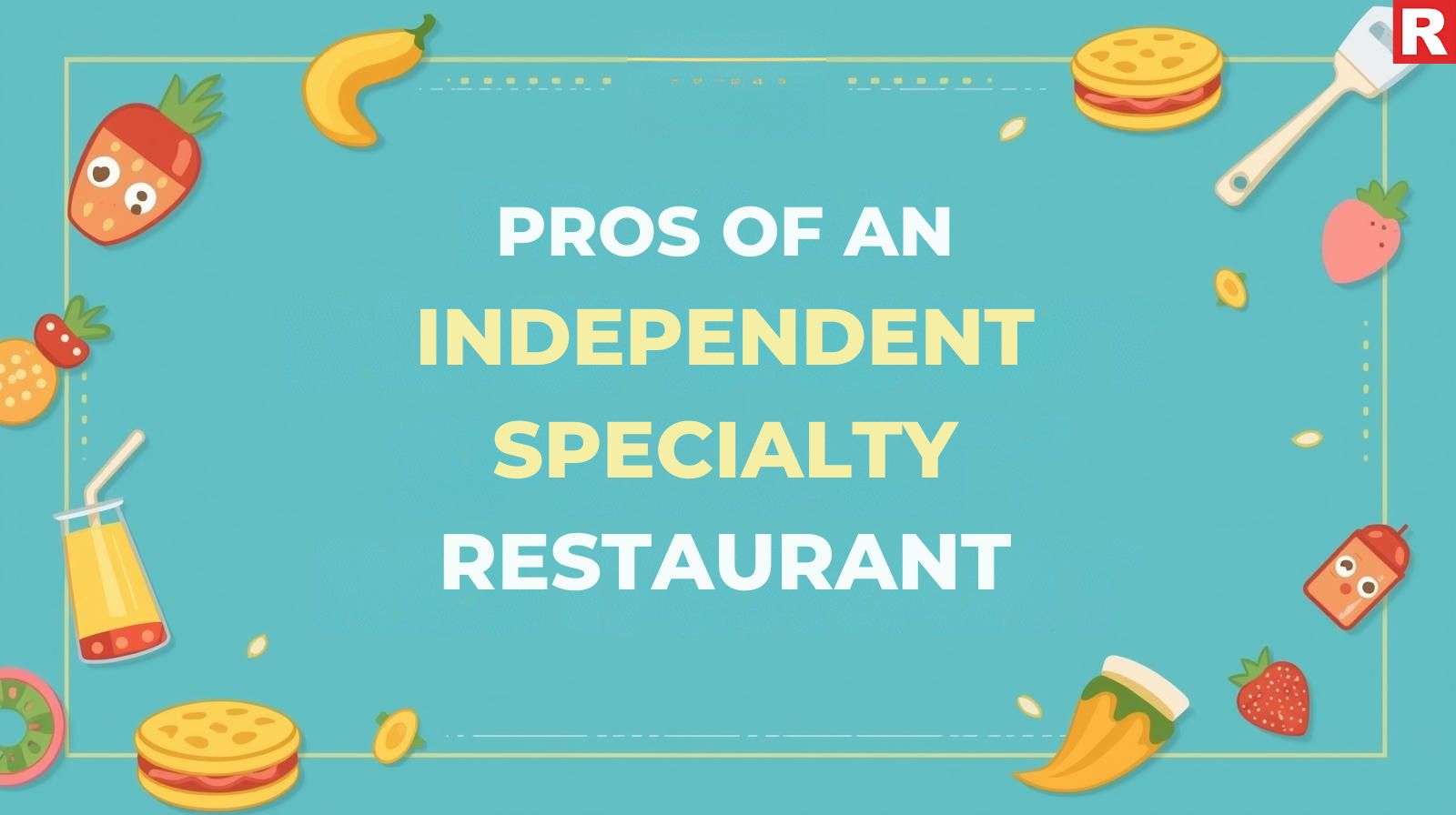
- Full Creative Freedom: This is the biggest advantage. Every element of your business is entirely within your control. You can build a distinctive menu, modify recipes to suit regional preferences (for example, giving a traditional Italian dish a spicy touch for Indian palates), and create a special atmosphere that reflects your personal style. You may create a genuinely unique brand with this freedom.
- Increased Profit Potential: Your profits are completely your own without having to pay royalties, franchise fees, or donations to marketing funds. The potential for larger margins is even bigger than with a franchise if you manage a successful, lean business.
- Flexibility & Adaptability: You can react quickly to customer feedback and changes in the market. You can be the first to add a new cuisine trend to your menu if it appears in your city. In a market that moves quickly, this flexibility is a crucial competitive advantage.
- Personalized Brand Story: The owner's vision and passion are reflected in the brand of an independent restaurant. Customers can develop a strong emotional bond with you through this personal touch, becoming devoted brand ambassadors who take pride in what you've achieved.
- Complete Asset Ownership: You are the owner of all your company's assets, including any value added to the brand. This creates equity that can be transferred, sold, or expanded without the franchisor's consent.
Check out: The Global Diner: Redefining Restaurants Through Quality, Quantity, and Presentation
Simple Steps To Boost Your Restaurant's Foot Traffic
Cons of an Independent Specialty Restaurant
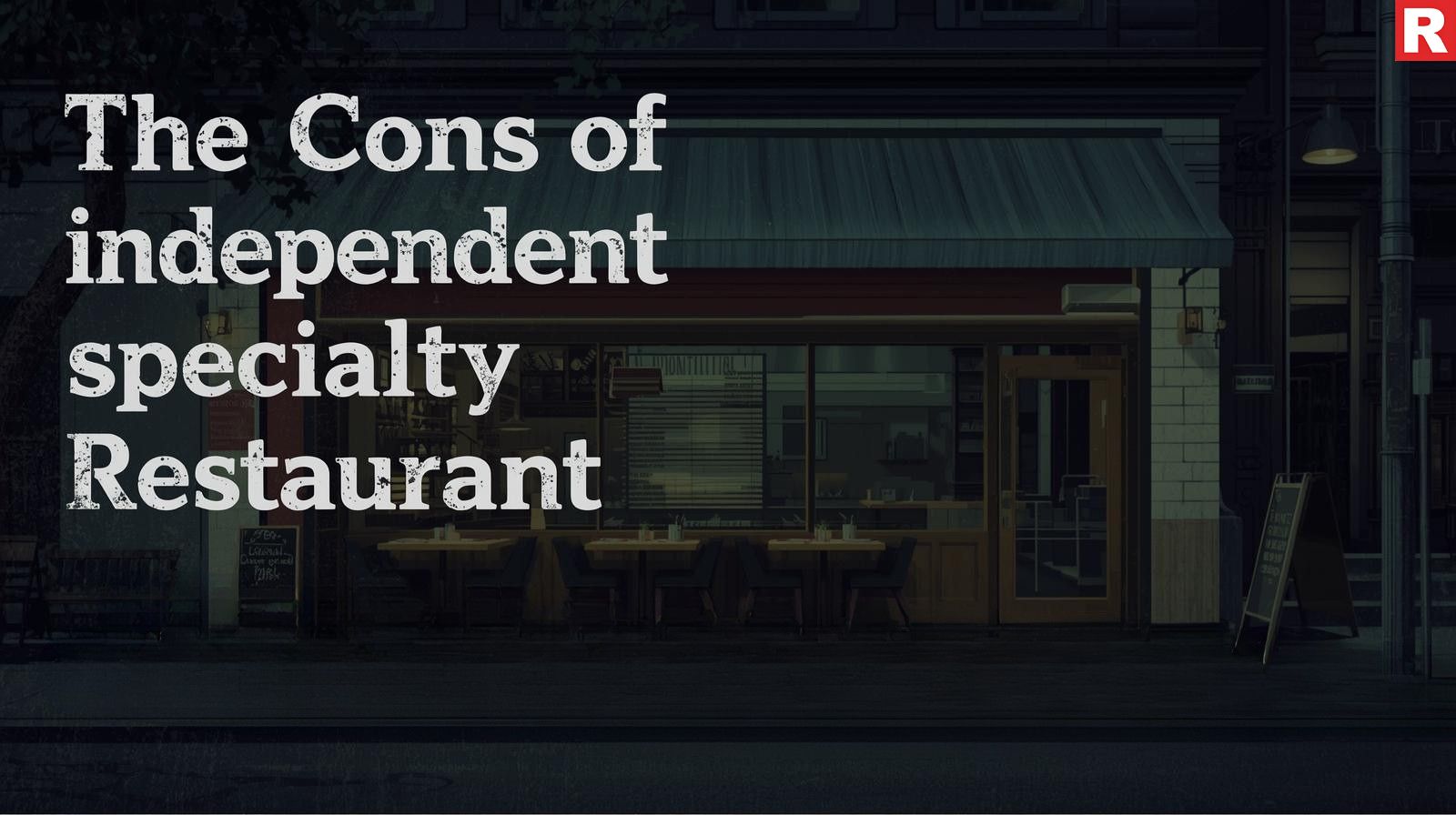
- Significant Risk and Uncertainty: There is a great deal of risk and uncertainty because you are beginning from nothing. There is no recognized brand identity, no safety net, and no tested blueprint. The business's success depends solely on your capacity to develop an engaging idea, carry it out successfully, and attract customers. There is a far greater chance of failure.
- High learning curve and hard work: You are in charge of all business operations, from marketing and finance management to locating suppliers and negotiating contracts. There is a high learning curve, a significant time commitment, and a wide range of skills needed.
- No Centralized Support: You are on your own without centralized support. No marketing crew to assist with promotions, no training manuals to support you, and no one to call for operational problems. You have to start from scratch when building your systems, which is a huge task.
- Building Brand Recognition: You are solely responsible for marketing. Building a brand that stands out and gains the trust of consumers in an increasingly competitive sector may be very difficult and costly. To generate a buzz, you need to make significant time and financial investments.
- Higher Costs: You might have to pay more for ingredients and supplies because you don't have the franchise's bulk buying power. Additionally, you are responsible for paying for any marketing and other support services that a franchise would handle.
Read this: Top Mood-Boosting Foods That Make You Happy
Key Factors to Consider Before Deciding
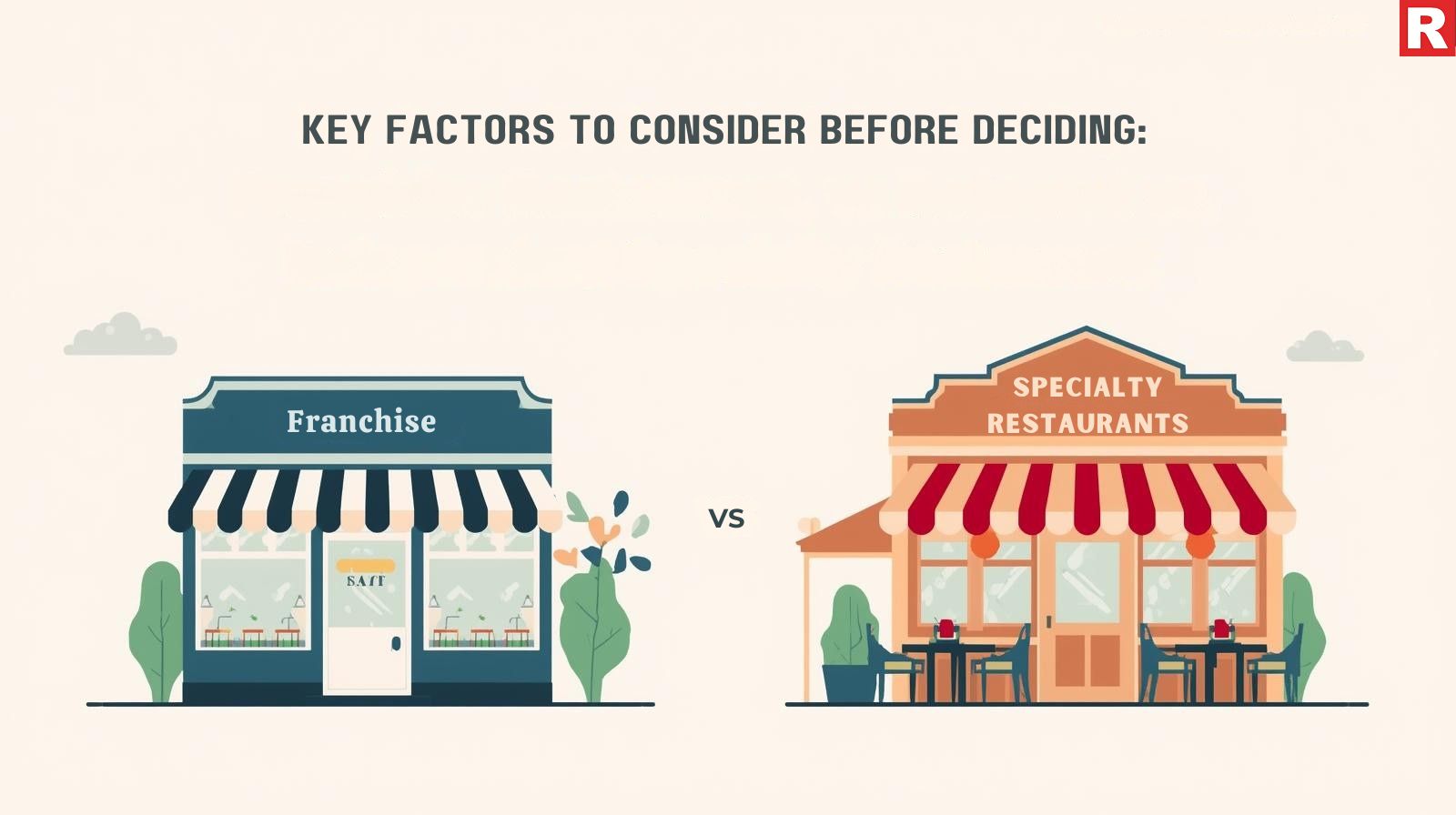
You must consider both the pros and cons in light of your unique financial and personal situation in order to make a wise decision.
- Your Entrepreneurial Personality: Do you enjoy taking chances, being innovative, and the challenge of creating something from the ground up? Or would you rather work in an organized setting with precise rules and a tried-and-true route to success? Which model will make you happier and more productive depends largely on your personality.
- Financial Resources: Do you have enough money to pay a high franchise fee, or would you be better off with a smaller, independent business where you can keep expenses under control? Remember to include an emergency fund and working capital.
- Market Analysis: How does your city's local market appear? Is the industry presently crowded, making a franchise's brand power a required advantage, or is there a niche that an independent specialist restaurant could fill?
- Experience Level: Are you a first-time restaurateur, or do you have experience managing and operating restaurants? While an independent enterprise needs prior experience or a willingness to pick things up quickly, a franchise might offer a helpful crash course in the field.
- Long-Term Goals: Do you want to run a single, successful company that symbolizes your passion, or do you want to own several locations or grow into a major corporation with a well-defined exit strategy? Franchises frequently offer a more stable route to growth.
Conclusion
The decision between an independent specialty restaurant and a franchise is basically highly individual. A franchise provides a more secure, dependable, and organized route to company ownership. For people who wish to be an owner-operator but would rather reduce risk and stick to a tried-and-true method, this is the best option. Stability and support come at the expense of your creative independence.
The independent route, on the other hand, is reserved for the real entrepreneur—the dreamer who wants to create a distinctive brand from the ground up. It is a high-risk, high-reward business that needs a great deal of determination, hard work, and attention to detail. The joy of producing a genuinely one-of-a-kind and customized dining experience is just as rewarding as the money.

During lunch hours, the restaurant sector turns into a major battleground with many potential customers on their way. With locals, students, and office workers looking for a quick, tasty, and affordable lunch meal, the restaurant gets an opportunity to increase its overall profitability and daily foot traffic. But it takes more than just opening the doors to your eatery for the customers to come flooding in and turn them into regular lunch customers. It requires targeted marketing that directly addresses the needs of the midday crowd, effective operations, and strategic planning.
This complete article can help you increase your restaurant's lunch rush by revealing five very successful tactics designed especially for Indian restaurants in urban cities. We'll go over achievable, realistic strategies that can turn a peaceful lunchtime into a bustling, profitable center and guarantee your business gets a piece of the valuable lunch market.
Read more: How to Choose the Healthiest Cooking Oil for Your Kitchen
1. Master the Art of the Lunch Menu: Speed, Value, and Variety
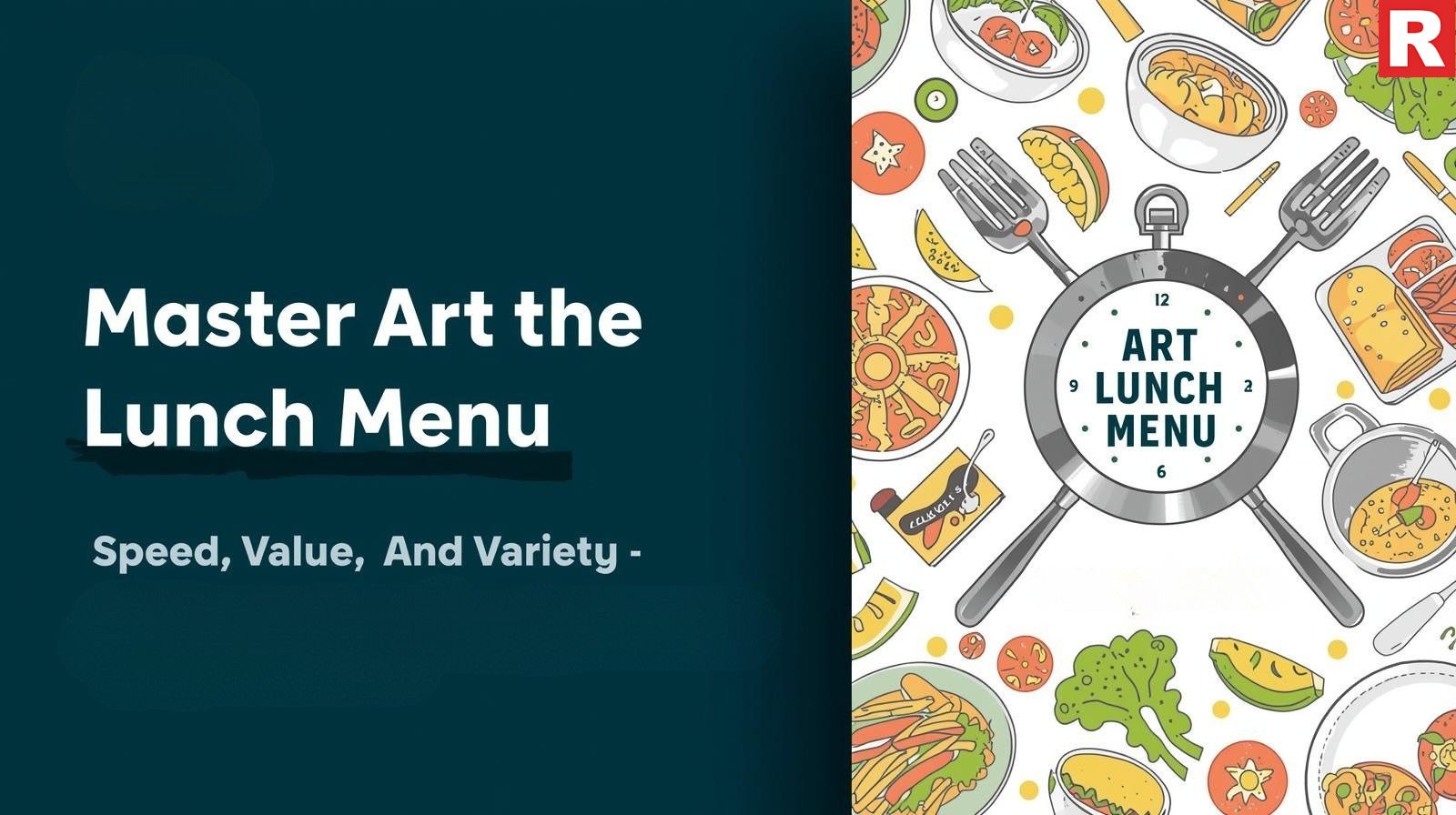
The lunch crowd has specific needs: speed is crucial, variety keeps them coming back, and value is highly regarded. All of this information must be reflected in your menu.
- Speed is King: Fast service is essential since office workers frequently have little time for lunch breaks.
- Pre-Prepped Items: Create recipes that enable a great deal of pre-preparation without sacrificing freshness. This could contain premade sauces, pre-marinated proteins, or pre-chopped veggies.
- "Express Lunch" or "30-Minute Guarantee": Provide a unique, limited menu with a short turnaround time. Promote it as a "Lunch in 20 Minutes or it's on Us!" (i.e., "Express Lunch") that promises to be served within a certain amount of time. This attracts people with busy schedules and develops trust.
- Ordering made easier: Make sure your Point-of-Sale (POS) system is effective and that your staff are properly educated to take orders quickly and precisely. Think of a digital menu that offers quick-order choices.
- Value-for-Money Thalis & Combos: Indian diners are very budget-conscious, particularly around lunchtime.
- Customized Combos: Make eye-catching lunch combo packages that include a main course, bread, a drink, and a side at a discounted cost. A "Butter Chicken Combo" with rice or naan and a soft drink, for instance.
- Traditional Thalis: One of the most traditional lunch options is the Indian thali. Create a variety of tempting thali alternatives that offer a full, balanced meal at a set cost, such as Punjabi Thali, Jain Thali, South Indian Mini-Meal, and North Indian Thali. To encourage return business, make sure your thali's ingredients are diverse.
- Daily Rotating Specials: A "Chef's Special" lunch dish that changes every day can generate buzz and attract regulars to come in more often to sample new dishes.
- Light & Healthy Options: An increasing number of urban workers are concerned about their health. So making a healthy meal combo is a great idea.
- Salads & Wraps: Serve nourishing wraps or fresh, visually beautiful salads with dressings inspired by India.
- Low-Calorie/High-Protein Options: Indicate clearly whether foods are higher in protein or lower in calories.
- Fresh Juices & Smoothies: To go with lighter meals, promote healthy and refreshing beverage options.
- Optimize Menu Presentation: Emphasize these specials on a separate, smaller lunch menu. Make it quick to scan and easy to read.
Know more: McDowell pledged stake in UBL decline by 3.02 per cent
2. Strategize Your Marketing: Reach the Noon Crowd Where They Are

For targeting the specific groups that are active during the midday hours, your lunch marketing campaigns should be different from your dinner promos.
Outreach to Local Offices and Businesses:
- Leaflet Drops/Digital leaflets: Deliver leaflets or send specific digital flyers to Faridabad's business parks, industrial regions, and office complexes. Emphasize your exclusive offers and fast lunch options.
- Corporate Tie-ups: Provide employees of surrounding businesses with exclusive corporate discounts or lunch packages. To make billing easier, think about creating a corporate account.
- "Lunch Meet" Promotions: Promote your restaurant as the perfect location for business lunches, providing a calm atmosphere and effective meeting service.
Using Digital Platforms While Having Lunch:
- Targeted Social Media Advertising: Run ads solely in the late morning and early afternoon on sites like Facebook and Instagram. Target consumers according to their occupation, hobbies (e.g., "office lunch," "quick bites"), and location (e.g., within 5 km of your restaurant).
- Google My Business Posts: To announce daily lunch specials, deals, or express lunch hours, use GMB's "Posts" tool. Local search results prominently display them.
- WhatsApp Marketing: Use WhatsApp in the late morning to distribute daily lunch specials or flash sales to your list of customers who chose to join in.
Strategic Partnerships with Delivery Aggregators: Use websites like Zomato and Swiggy to increase visibility at lunch, but refrain from offering excessive discounts. Instead of offering deep discounts on individual items, use these platforms to showcase your "Express Lunch" options or offer exclusive package bargains. Reach fresh customers with them, then turn them into direct orders.
"Walk-in Specials": Draw customers in by prominently posting "Walk-in Lunch Specials" outside the restaurant. Price and a tempting image can have an impact.
What's new: Simple Steps To Boost Your Restaurant's Foot Traffic
3. Enhance Speed & Efficiency: Operations that Deliver
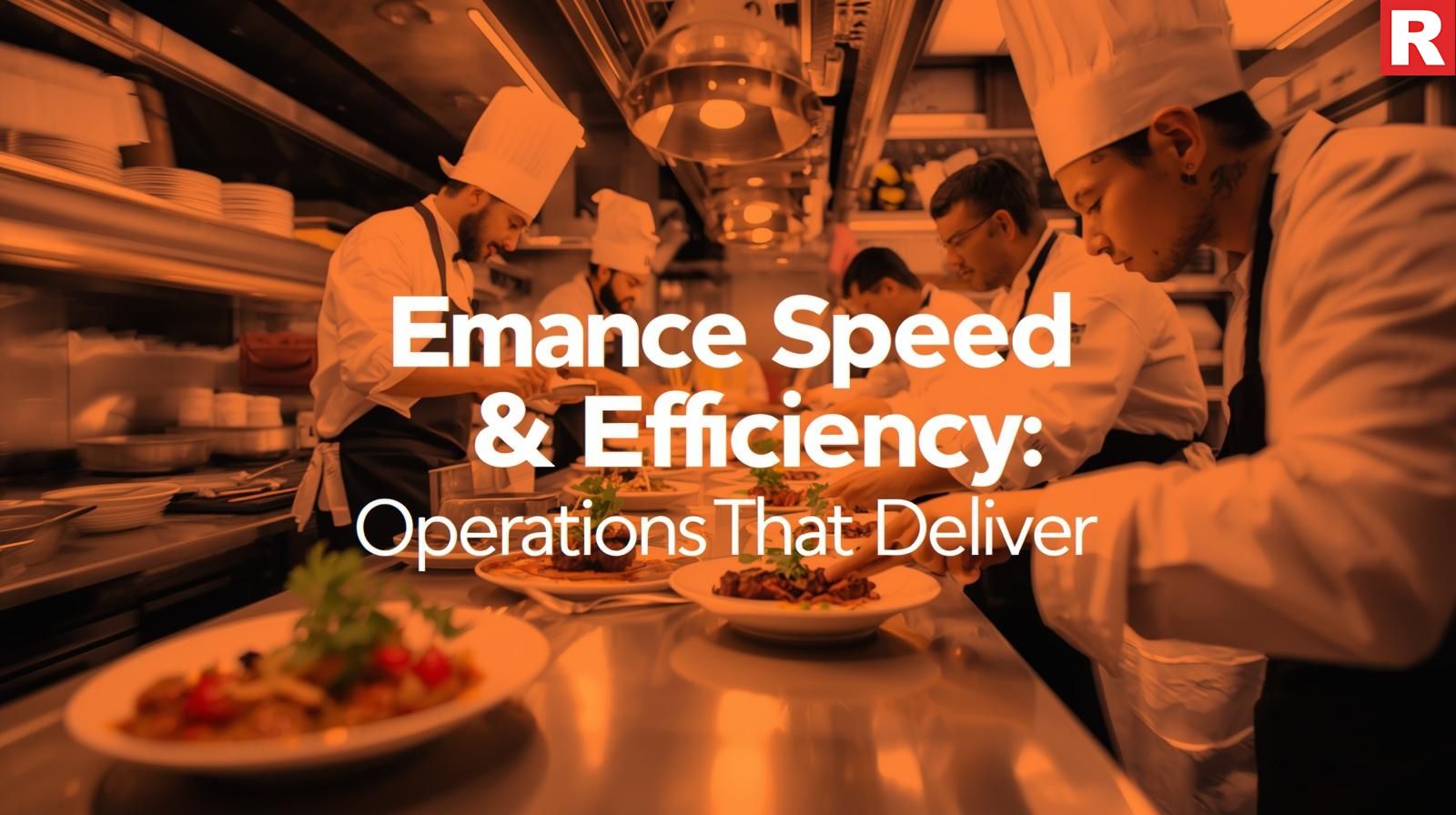
An incredibly efficient operation is necessary for an excellent lunch menu and marketing to be successful. Speed affects the entire service flow, not just the kitchen.
Simplified Kitchen Procedures:
- Prepping: Prioritize careful preparation each day so that food may be put together and prepared fast in the heat.
- Dedicated Lunch Stations: To prevent delays, if at all possible, set up different counters for high-demand lunch items.
- Batch Cooking: Take into account batch cooking for ingredients that can be swiftly finished or reheated, such as rice, dal, or gravies.
Front-of-house (FOH) service optimization:
- Well-Trained Staff: Make sure your front-of-house staff have had outstanding training in order taking, menu knowledge, and managing several tables at once without becoming stressed.
- Fast Seating & Billing: Reduce waiting times for seats and make sure that billing is completed quickly and correctly. This procedure can be significantly accelerated using mobile point-of-sale systems.
- Pre-Set Tables: To save time during the rush, have tables ready with water and simple silverware.
Effective Communication: Encourage open and constant discussion about order status, special requests, and possible delays between the kitchen and front-of-house workers. If possible, use KDS (Kitchen Display Systems).
Inventory control: Make sure your well-liked lunch items are always available. To prevent last-minute sourcing problems, keep high-demand ingredients at appropriate stock levels.
Check out: 10 Restaurant Marketing Ideas That Are Wasting Your Money
The Boom of Quick Dining in Modern Cities
4. Create an Inviting Ambiance: The Midday Comfort Zone

Lunch atmosphere should put comfort, productivity, and an enjoyable rest first, while dinner ambiance can be more romantic and mood-driven.
- Comfy Seating: For a quick meal, make sure your seating is comfy. This means comfortable seats where office-goers can take a quick break.
- Proper Lighting: For lunch, plenty of natural light is best. To create a lively yet cozy ambiance, add artificial lighting that is bright but not harsh.
- Right Music: Playing lively, subtle music at a moderate volume is the right choice. For anyone taking a quick break or working lunch, it should be stimulating without being invasive.
- Hygiene & Cleanliness: As always, maintaining perfect cleanliness is crucial. A hygienic setting, particularly in the restrooms, inspires trust and promotes return business. This assumption is non-negotiable in the Indian environment.
- Convenience & Accessibility: Make sure your restaurant has prominent signs so people can locate it easily. Emphasize parking if you have it, as it may be a big draw for lunchtime visitors.
5. Create a Culture of Regulars: The Power of Repeat Business
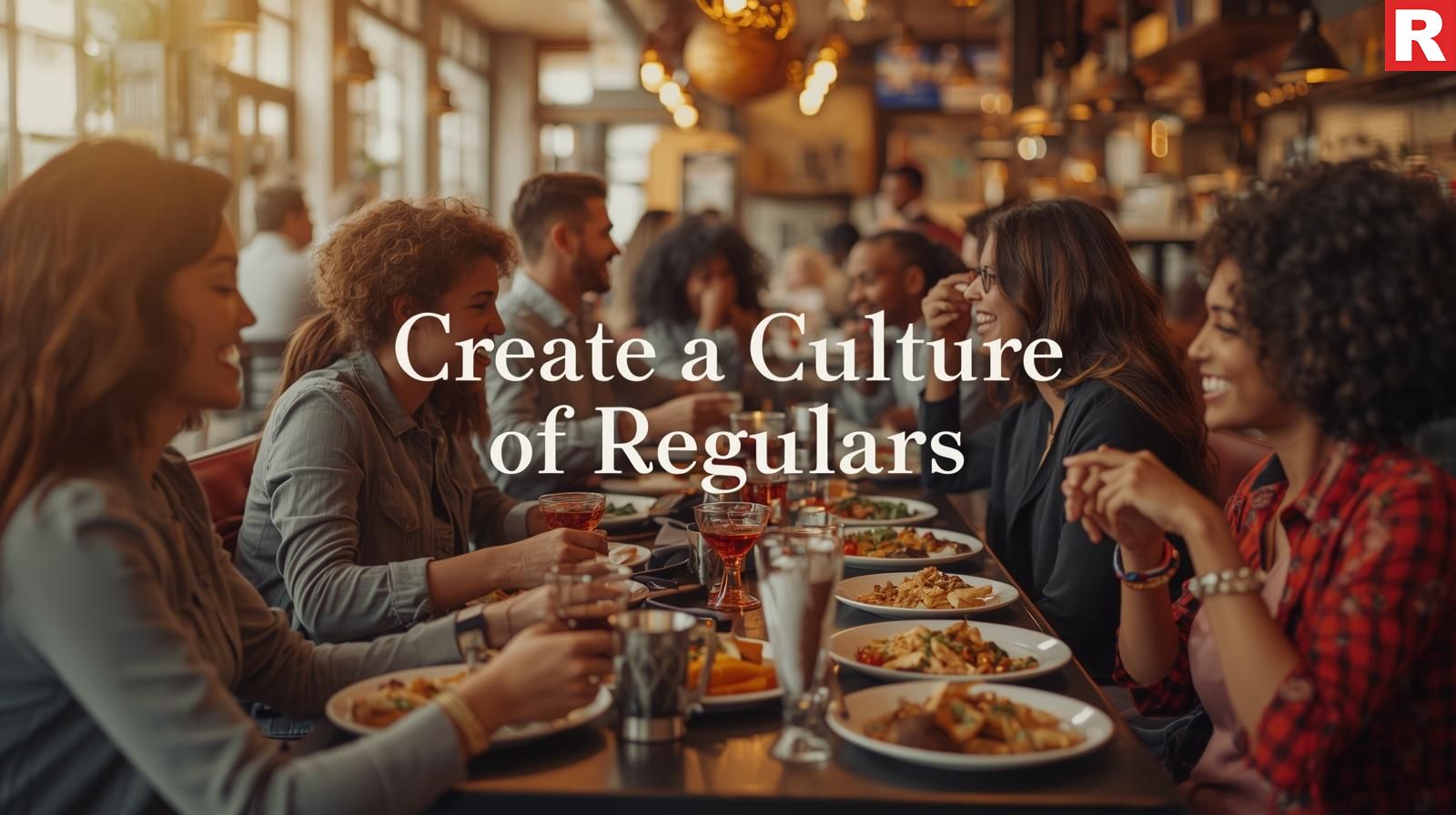
The most sustainable strategy to grow your lunchtime business is to turn one-time lunch customers into committed regulars.
- Personalized Service: Teach your employees to identify and even recall the orders that they prefer. "The usual, sir?" can foster a great deal of loyalty and goodwill.
- Lunch Loyalty Programs: Establish a special lunch-related loyalty program. For instance, a punch card that reads, "Buy 9 lunches, get the 10th free," or points that may be redeemed for a complimentary meal.
- Feedback & Engagement: Make an effort to get input from your lunch customers. You may make them feel appreciated by understanding their requirements and preferences through a brief conversation or a survey QR code.
- Special "Regulars" Perks: From time to time, give your regular lunch patrons little, unexpected benefits like priority seating, a free dessert, or a discount on their next visit.
- Maintain Consistency: Repeating business is based on maintaining consistency. Fast service, consistently delicious food, and a welcoming atmosphere guarantee that customers know precisely what to expect and won't be let down.
Read this: Top Mood-Boosting Foods That Make You Happy
Conclusion
In a cutthroat market of urban cities, increasing your restaurant's lunch rush requires a calculated approach that blends operational excellence, focused marketing, and sincere hospitality. You can turn your lunch service from a quiet time into a major source of income and customer interaction by perfecting your lunch menu for speed and value, strategically marketing to the midday crowd, making sure your operations are incredibly efficient, creating a welcoming atmosphere, and building an engaged base of regulars. Recall that the goal of the lunch rush is to offer a convenient, fulfilling, and joyful experience that encourages customers to return day after day, week after week, rather than only selling food.

In a restaurant, customers visit, and increasing foot traffic is the biggest hurdle in an already tough and competitive market. Just having excellent cuisine with tempting dishes is not enough, as there are many different dining options available. Ranging from street food to gourmet cuisine, if a marketplace has many eateries available, then the chance of standing out gets very low. Therefore, increasing foot traffic requires a comprehensive strategic approach that blends modern marketing strategies with classic hospitality. Gaining the attention of many people is important, as some can even become your potential customers in the future. This is necessary for the survival and expansion of the restaurant, whether it is a long-standing restaurant or a newly built cafe.
Therefore, this comprehensive article will guide you by revealing simple, practical measures created especially for Indian restaurants. We'll go beyond general guidance to offer achievable, affordable tactics that appeal to the local market and assist you in turning empty tables into a bustling, prosperous dining area.
Read more: How to Choose the Healthiest Cooking Oil for Your Kitchen
Become Visible Where It Counts Most By Learning Local SEO

In the current digital era, a phone search is frequently the first step on the way to your restaurant. Gaining customers in your area requires a thorough understanding of SEO.
- Improve Your Profile on Google My Business (GMB): This is perhaps your most important tool and your online marketplace.
- Claim and Verify: Make sure your GMB profile has been claimed and validated.
- Accurate Information: Provide accurate details, including your name, address, phone number (NAP), and website. Make regular updates to your operation hours, including special holiday hours.
- High-quality Photos: Post a ton of expertly taken, delectable pictures of your food, exterior, interior, and even your staff members. For Indian restaurants, aesthetic appeal is important.
- Categorization: Use different categories instead of just "Restaurant," such as "North Indian Restaurant," "Vegan Cafe," and "Biryani House."
- Encourage & Address Reviews: Kindly request positive Google reviews from pleased clients. Every review, whether positive or negative, should be handled professionally and sympathetically. This demonstrates involvement and fosters trust.
- Online Directories: Verify that other important local directories, such as Zomato, Swiggy, TripAdvisor, and Justdial, have an appropriate listing for your restaurant.
Know more: The Boom of Quick Dining in Modern Cities
Create an Eye-Catching Exterior Appeal
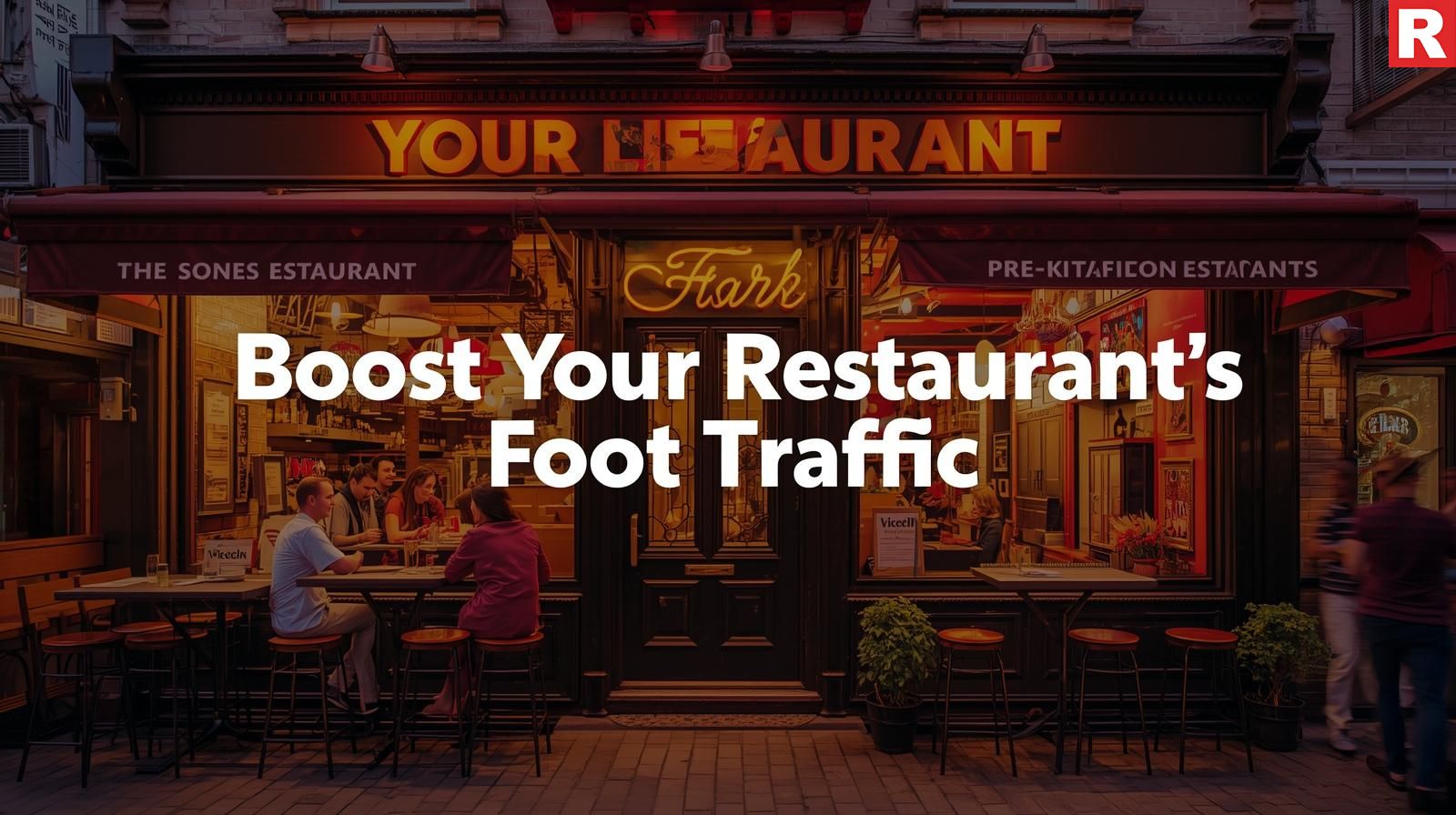
Potential customers evaluate your restaurant based on its appearance before they even try your food. Therefore, first impressions are crucial.
- Cleanliness is Godliness: In India, it is important to emphasize that cleanliness is associated with godliness. Therefore, the customer must walk on a neat hallway, with shining windows, and a clean, well-maintained exterior. By keeping things tidy, even a tiny cafe can project professionalism.
- Inviting Signage: Day or night, your restaurant's name and logo should be easily recognizable and eye-catching. Think about using subtle lighting to draw attention to your business.
- Inspiring Window Displays: If at all possible, use your windows to display your best meals (via clear photographs), daily specials, or a sneak peek at your warm interior.
- Outdoor Seating: If there is space available, a few neatly maintained outdoor tables can greatly improve visibility and give the impression that your restaurant is livelier and friendlier, especially in lovely weather.
- Lighting: In the evenings, use cozy, welcoming lighting. It draws customers and gives your restaurant a homey appearance.
Grip the Power of Local Promotions & Community Engagement
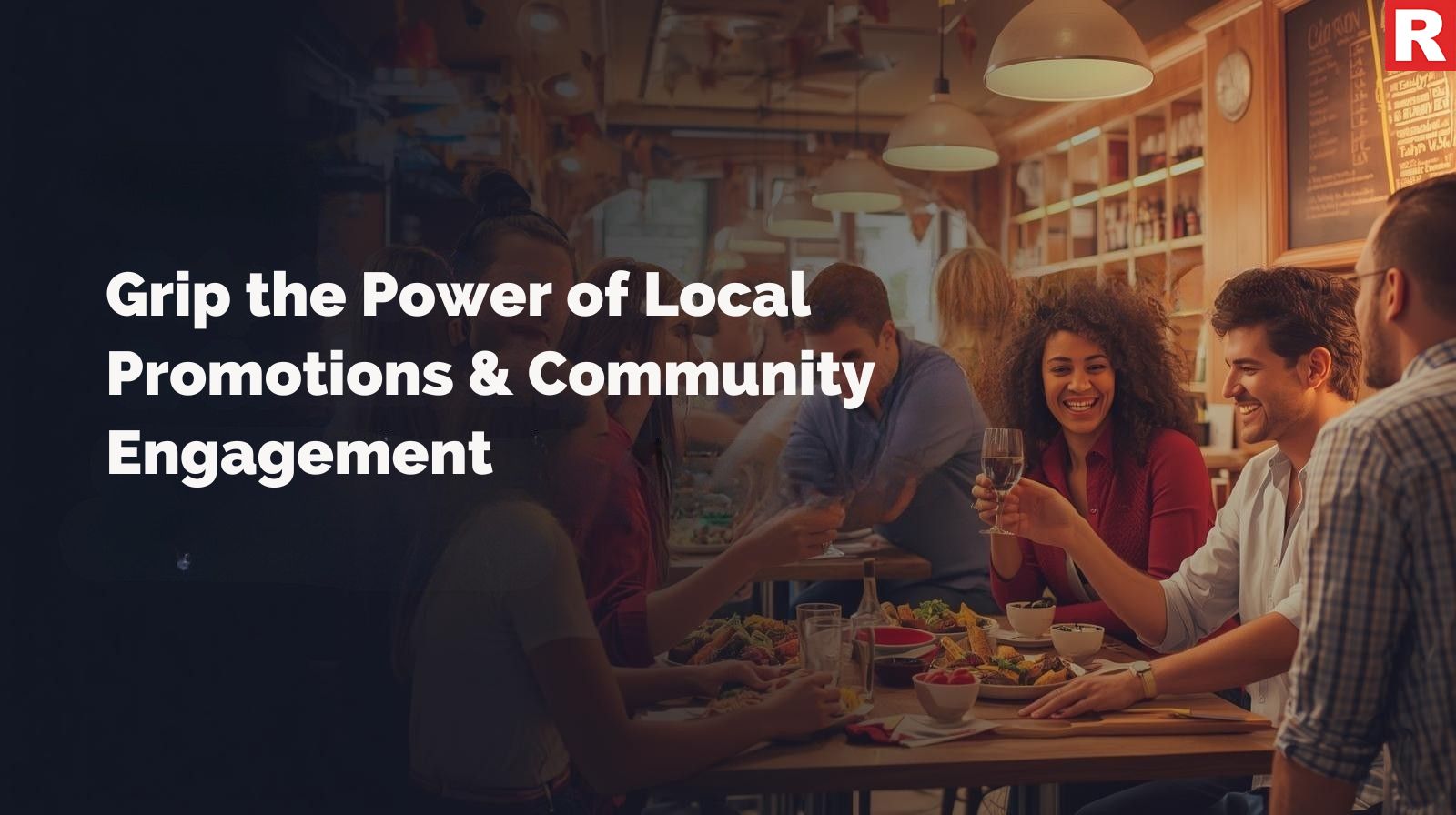
Become an active and well-liked member of your local community. This will give you power over the market in the long term.
- Daily deals & Happy Hours: To attract customers during off-peak hours, provide simple daily deals or a weekday happy hour with drinks and appetizers. Promote these clearly on a chalkboard outside and on your social media.
- Loyalty Programs: Implement a simple loyalty scheme - "Buy 5 get 1 free" for coffee, or a points system for total spend. This promotes return visitors.
- Partner with Local Businesses: Work together with local gyms, shops, or workplaces to provide members and staff with exclusive discounts. Cross-promotion increases your target market.
- Organize Local Events: Take into account organizing small events for the community, such as a book club meeting, a "meet the chef" night, or a showcase for local artists. This presents your restaurant as a community hub.
- Promotions with a seasonal or festival theme: Take advantage of regional celebrations or Indian holidays like Diwali and Holi. To attract groups of people who want to celebrate, provide unique festive cuisines, decorations, and promotions.
What's new: 10 Restaurant Marketing Ideas That Are Wasting Your Money
Boost Your Internet Presence Outside of (GMB) Google My Business

Although GMB is important, your entire internet presence is also crucial. Focusing on just one platform will make you lose customers that you could find on other platforms.
- Social Media Storytelling: Tell the tale of your restaurant on sites like Facebook and Instagram.
- Excellent Visuals: Share mouthwatering pictures and brief clips of your food, behind-the-scenes kitchen activities, and happy customers.
- Participate: To create a sense of community, answer questions, conduct surveys, and reply to comments.
- Emphasis on Staff: Draw attention to your cooks and staff. People in India tend to connect with the faces behind the brand.
- Local Influencers: Work together with food bloggers and micro-influencers. A sincere evaluation from a reliable local source might increase traffic significantly.
- An easy-to-use website (or a strong digital menu): It's essential to have even a basic website with your menu, hours, address, and phone number. Make sure it works on mobile devices. Make sure your digital menu on Zomato or Swiggy is comprehensive and visually appealing, if a whole website isn't practical.
- Online Reservation System: An easy online reservation system makes it easier for customers to organize their visit to more luxurious restaurants.
Create an Irresistible In-House Experience
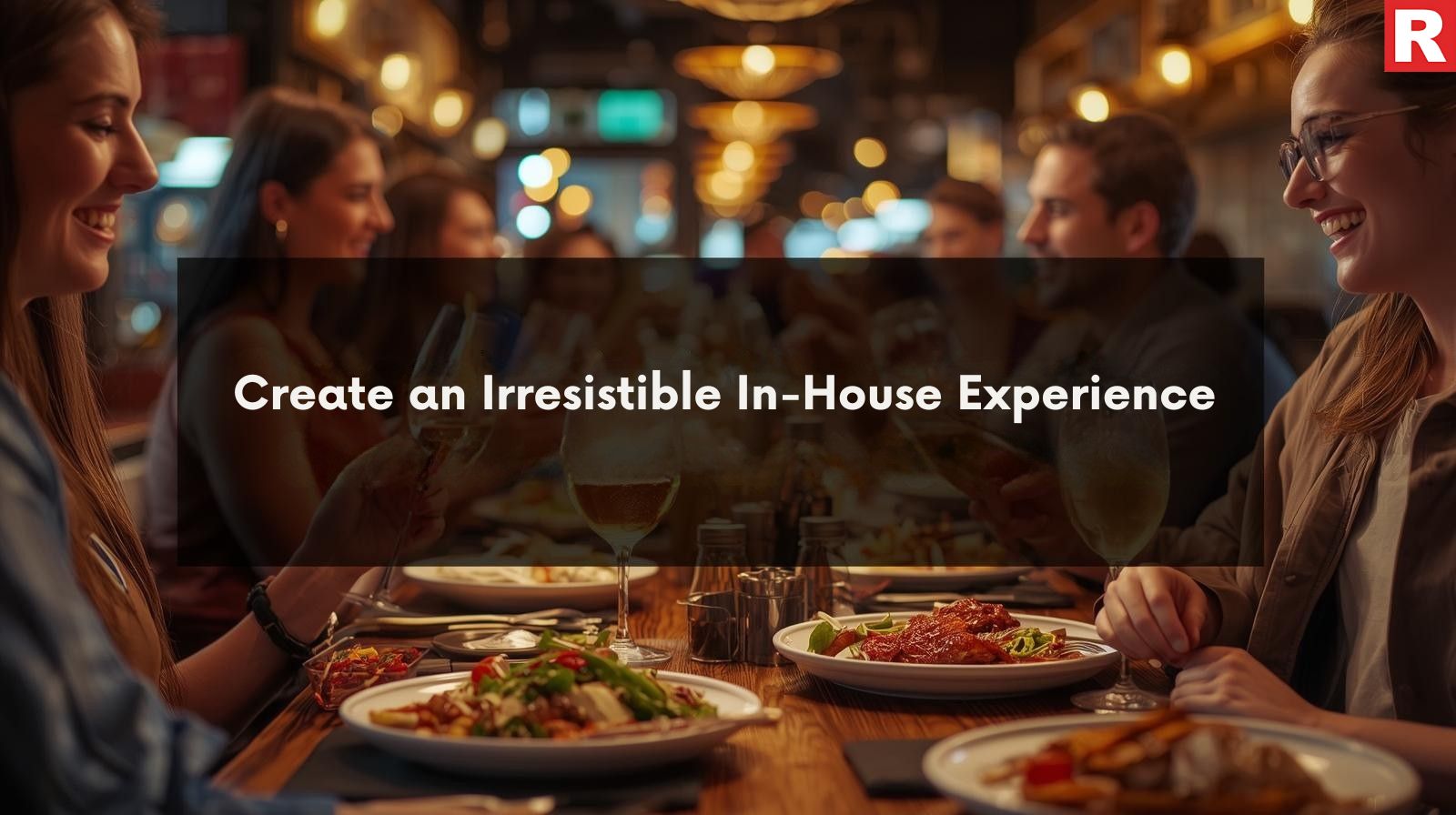
Whether or not customers return and recommend a restaurant depends on their experience once they enter.
- Excellent Service: Teach your employees to be kind, hospitable, focused, and familiar with the menu. Atithi Devo Bhava, or hospitality, is highly prized in India. Fast order processing, timely seating, and effective delivery are essential.
- Food Quality Consistency: This cannot be compromised. Your criteria for quality should always be met by every dish. An easy way to lose clients is to be inconsistent.
- Internal Ambiance & Cleanliness: Make sure your dining space is tidy, well-lit, and welcoming. Take note of your restaurant's music, temperature, and even aroma.
- Upselling and Cross-selling: Teach your employees to kindly recommend appetizers, desserts, or specialty beverages. This improves the customer experience in addition to raising your average check.
- Feedback Mechanism: Conduct a quick survey using a QR code so that customers can easily offer feedback while they are still in the restaurant. Deal with any problems right away.
Check out: Top Mood-Boosting Foods That Make You Happy
McDonalds starts all-day breakfast in Australia
Value-Driven Pricing and Transparent Offers

Value is very important to Indian customers.
- Competitive Pricing: Examine the prices of your rivals to make sure your menu is appropriately positioned for your target market.
- Combo Meals & Thalis: Provide affordable combo meals or classic Indian thalis, which are particularly well-liked for lunch.
- Family Packs/Group discounts: A big attraction in the Indian market, these discounts encourage larger gatherings and family meals.
- Transparency in Offers: To prevent unhappy customers, make sure the terms and conditions of any specials you offer are clear.
Staff as Your Front Line Marketing Team

The most effective marketing tool you have is your employees.
- Empowerment: Give your staff the freedom to handle little problems immediately and give clients a sense of special treatment.
- Product Knowledge: Make sure they are able to explain each meal with assurance, suggest combinations, and respond to inquiries regarding ingredients.
- Personalized Service: To foster a feeling of personal care, encourage employees to keep in mind the preferences of regular customers.
- Professional Appearance: The general impression of your restaurant is enhanced by a staff that is well-groomed and presents itself professionally.
Read this: From Bharat to the World: The Rise of home-grown Start-ups
Things NOT to Do: The Foot Traffic Killers
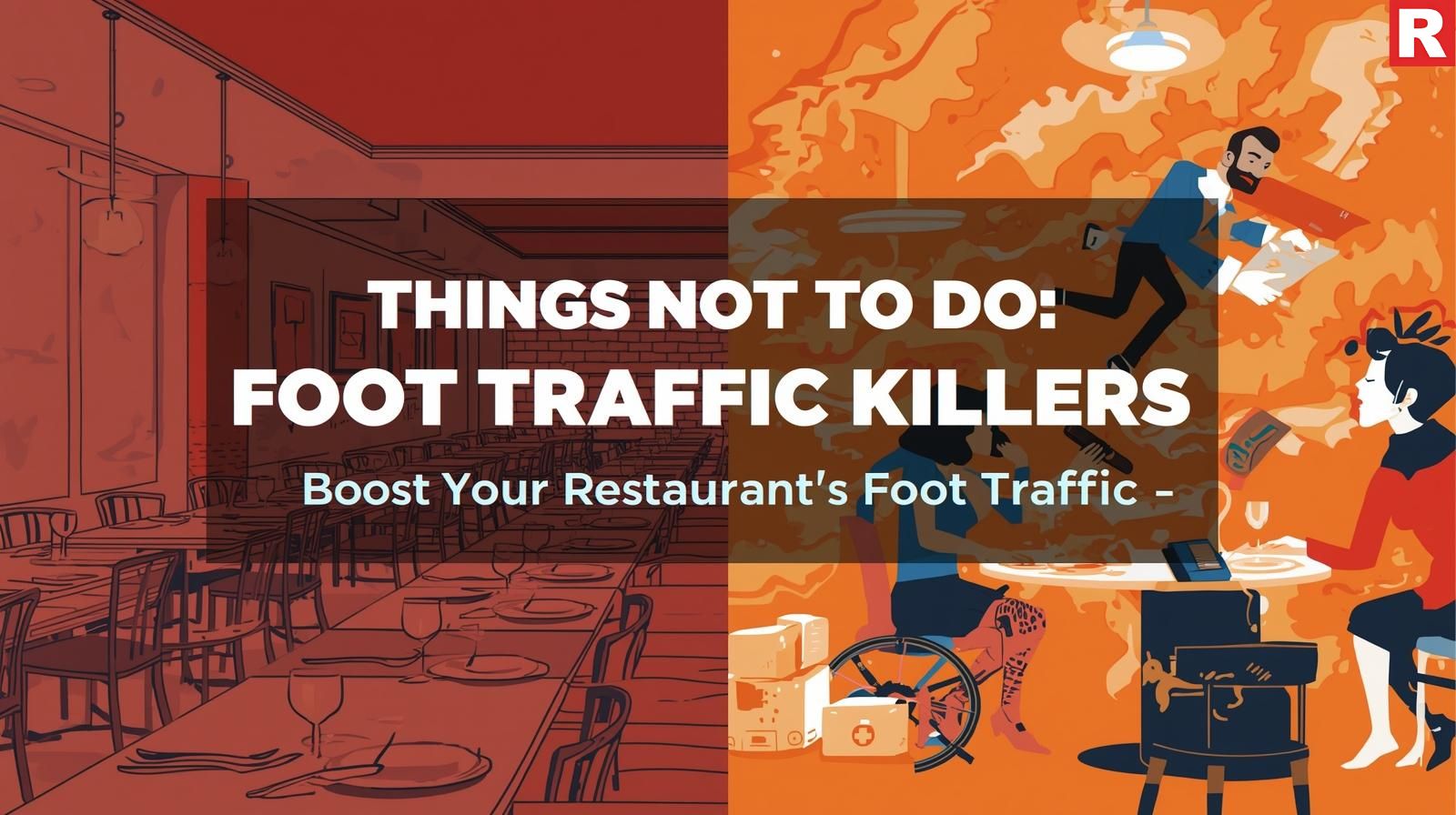
- Ignoring Your Online Presence: If you neglect a Google My Business profile that contains false information or out-of-date hours, you will undoubtedly lose potential customers who will be searching for you online.
- Spending Money on Untargeted Ads: Stay clear of generic, broad-based social media advertising since it is ineffective and does not reach the targeted demographic.
- Making Hygiene Compromises: Indian diners place a high value on cleanliness, thus never make hygiene or cleanliness compromises.
- Over-reliance on Aggregators: You can't develop a direct, enduring relationship with your clients if you just use food delivery aggregators like Zomato and Swiggy. Instead, encourage in-person visits by offering rewards for online orders.
Conclusion
It takes more than just good intentions to increase foot traffic to your business in a vibrant market. It requires a comprehensive strategy that skillfully combines a solid web presence, a welcoming physical location, vibrant community involvement, a superb in-house eating experience, and a value-driven mindset. You can turn your restaurant from a neglected location into a busy center by carefully concentrating on these easy yet effective procedures. Keep in mind that each customer who enters your establishment is an opportunity. Make sure to remember you need to make customers who are not just there for a single order, but for a long-term partnership that supports your business and makes your restaurant a popular dining destination.

Every rupee spent on marketing must yield a measurable return in the fiercely competitive Indian food and beverage sector. However, many restaurateurs, from a tiny cafe to a huge fine-dining restaurant in a big city, fall into the trap of using marketing techniques that actively deplete their cash flow in addition to being ineffectual. On the surface, these tactics frequently appear to be the proper thing to do, but a closer examination shows they are just expensive diversions.
This detailed article will highlight ten typical restaurant marketing strategies that are ineffective and offer practical, affordable solutions that are suited to the Indian market. We will assist you in locating your business's marketing leaks and redirect your funds to strategies that increase sales, foster true client loyalty, and guarantee continuous profitability.
Read more: The Boom of Quick Dining in Modern Cities
1. Excessive Reliance on Aggregator Discounts (Zomato & Swiggy)

The Problem: There is no denying the temptation of a speedy sale on websites like Zomato and Swiggy. However, relying too much on deep discounts (such 50% off or buy one, get one free) might be disastrous for your finances. When combined with steep discounts, these sites' high commissions have the potential to transform a profitable order into a loss. Additionally, this tactic draws in "discount hunters" who aren't committed to a brand and will go to the next restaurant that offers a better bargain. In short, you are teaching your customers that they should never purchase your meal at full price.
The Solution: Instead of using these platforms as your main marketing tool, use them strategically. Offer special combination meals or loyalty points for regular orders in place of major discounts. Converting these customers into direct, loyal customers should be your priority. With each delivery order, include a tiny card with a great offer for their next direct order from your phone number or website. Instead of competing solely on price, concentrate on presenting your own unique value proposition.
2. Generic, Un-Targeted Social Media Advertising

The Problem: It would be like throwing a handful of biryani into a crowd and praying it lands on the right person if you were to invest money in a broad social media advertising campaign without first identifying your target audience. It is a huge waste to display advertisements to every Facebook user if you are a premium dessert shop. You are spending money on views and clicks from consumers who aren't interested in your offering.
The Solution: Ads on social media should be used with extreme care. Facebook, Instagram, and other platforms allow highly targeted advertising. Users can be targeted according to their location (for example, within 5 km of your business), hobbies (for example, "foodie," "fine dining," or "coffee lover"), age, and even actions (for example, often traveling or liking competitor pages). This maximizes your return on ad expenditure by guaranteeing that your advertising is viewed by the individuals who are most likely to become customers.
Know more: Top Mood-Boosting Foods That Make You Happy
3. Paying for Fake Reviews and Bot Followers

The Problem: Given the intense competition on Zomato, Swiggy, and Google Reviews, there is a huge temptation to purchase 5-star reviews or thousands of fake followers. But this is a risky and shortsighted strategy. Consumers are growing more skilled at identifying fake reviews, such as when there is an unexpected spike in 5-star ratings with generic remarks. Additionally, having a large number of followers but no interaction (likes, comments, or shares) makes you appear extremely suspicious and reduces your credibility.
The Solution: Gain followers and reviews naturally. Concentrate on providing a remarkable eating experience. After a delicious meal, teach your employees how to courteously request reviews. To demonstrate that your brand is active and reliable, reply to all reviews, both favorable and unfavorable. Genuine reviews—even ones that include both constructive and positive criticism—create a lot more trust than a series of fake 5-star ratings.
What's new: How to Make a Failing Restaurant Successful Again
4. Lavish Print Ads in Local Newspapers
The Problem: In India's increasingly digital society, placing pricey print advertisements in local newspapers is frequently an outdated and unproductive strategy. The demise of print media is a worldwide problem. You have no method to gauge the ad's efficiency or return on investment (ROI), and the reach and engagement are both extremely low. It's a "spray and pray" strategy that offers less responsibility.
The Solution: Redirecting this budget to digital alternatives is the answer. Make a specialized digital marketing investment. Establish a powerful Google My Business profile, which functions as a free online billboard. To promote your business, work with regional digital news sources or run targeted social media advertisements. These techniques have a far wider audience and, most importantly, let you monitor your progress.
5. Overspending on Interior Design Without a USP

The Problem: It's frequently believed that a fancy, pricey interior design is merely a marketing tactic. Even though creating a visually appealing atmosphere is crucial, investing crores in décor without a strong marketing strategy or unique selling proposition (USP) is a guaranteed way to fail. Customers may come out of curiosity, but they won't come again if the food and service aren't good.
The Solution: Instead of overpowering your concept, your interior should enhance it. If you are a specialty restaurant, it should be reflected in its decor. A restaurant that serves real Rajasthani food, for instance, ought to have décor that evokes the location and culture. Instead of just spending a lot of money, the emphasis should be on establishing a cozy, tidy, and distinctive atmosphere that complements the overall brand story.
6. Ignoring Your Google My Business Profile

The Problem: This is one of the most common mistakes, and since it's a totally free marketing tool, it isn't very pleasant. Claiming and optimizing their Google My Business (GMB) profile is something that many restaurateurs overlook. You are invisible when a potential consumer looks for "restaurants near me" on Google Maps if your GMB profile is not optimized. A profile is a lost opportunity if it lacks a menu, accurate hours, and updated images.
The Solution: The answer is to enhance your GMB profile and claim it completely. Add expertly taken, high-quality pictures of your food and interior. Update your hours, particularly around the holidays. Share daily events or specials using the "Posts" feature. Customers should be encouraged to write reviews, and each one should be answered. GMB frequently serves as a new customer's initial point of contact, and a properly maintained profile can be your most powerful marketing tool.
7. Hiring a Full-Time Marketing Team Too Early

The Problem: Employing a full-time, in-house marketing team is sometimes an unnecessary and costly luxury for small or medium-sized restaurants. Their overhead expenses and salaries can significantly deplete your cash flow, particularly if your company is still in its early stages or you lack specific marketing objectives.
The Solution: The answer is to hire a freelancing expert or a small, reasonably priced organization that handles marketing on a project-by-project basis. Without the commitment of a full-time income, these experts can assist with paid advertising campaigns, website SEO, and a focused social media strategy. As your company expands and your marketing requirements increase in complexity, you may want to think about hiring an inside staff member.
Check out: McDonalds starts all-day breakfast in Australia
Coca-Cola India posts double digit growth in Q1
8. Relying on "Loud" Banners and Street Flyers
The Problem: A loud banner or advertisement shoved into a car's windshield is frequently ignored or, worse, viewed as an annoyance in today's overcrowded urban environment. These traditional methods of advertising are nearly impossible to monitor and offer a very poor return on investment. You have no idea how many flyers ended up in the trash can or how many people noticed your banner.
The Solution: Change the word "loud" to "smart." Make use of targeted digital advertisements that showcase your menu and atmosphere. Work together to provide cross-promotions with nearby companies. For instance, a cafe and a local yoga studio could collaborate to provide members with a discount. This creates a community and guarantees that the right people hear your message.
9. Ignoring Customer Data and Analytics

The Problem: Despite having advanced Point of Sale (POS) systems that gather a lot of data, plenty of restaurants do not make use of it. They are unaware of the best-selling foods, the busiest periods, or the most successful campaigns. All marketing decisions are made based on intuition and speculation in the absence of this data.
The Solution: Examine your POS data on a regular basis. Make use of this information to guide your marketing plan. For instance, launch a social media campaign to advertise your dessert menu if your point-of-sale data indicates that your sweets generate a lot of profit. Make data-driven decisions by using website and social media analytics to monitor the effectiveness of your efforts.
10. The delusion of "Build It and They Will Come"

The Problem: Of all the marketing rumors, this one is the most harmful. It's the idea that people will find you on their own if you simply build a restaurant with delicious food and a pleasant atmosphere. This is just incorrect in the crowded market of today. Even if you have the greatest food in town, your doors won't be filled if no one knows about it.
The Solution: Acknowledge that marketing is a continuous, vital aspect of your business's success and not a one-time occurrence. You should start developing your brand story, interacting with the community, and establishing an online and offline presence as soon as your concept is complete. To survive and grow, any business, regardless of how good it is, must actively sell itself.
Know this: Delight Foods raise second round of funding
Conclusion
Spending money sensibly, rather than excessively, is the secret to restaurant marketing success in India. You can free up important resources and put them toward initiatives that produce a definite, quantifiable result by recognizing and getting rid of inefficient marketing techniques. Prioritize creating a genuine brand, utilizing affordable digital tools, and, above all, delivering a memorable dining experience that makes each customer your greatest voice. Your success will ultimately be determined by the observable growth and loyalty you generate, not by the amount of money you spend on marketing.

For a restaurateur, whether in India or anywhere else in the world, seeing the gradual decline of their restaurant business is the most depressing experience they can have. A restaurant is more than simply a business for all the restaurant members and staff. It is a community center, a creative outlet, and a project to show their passion. In such a situation, it feels tempting to give up your whole business, as your sales stop, the reviews become negative, and the restaurant seems empty day by day. However, failure is nothing more than an escape rather than a destination. It is possible to turn the tables around with a lot of hard work, a smart approach, and a healthy dose of patience. And, in this article, we are doing nothing but help you with achieving just that.
Therefore, the essential steps of a restaurant revival will be covered in detail in this article, from identifying the underlying cause and setting priorities to financial diagnosis, menu redesign, team rebuilding, and re-engaging with the community. We'll go over practical strategies that have worked well in the Indian market to assist you in turning your failing business into a profitable success.
Read more: The Boom of Quick Dining in Modern Cities
The Financial Autopsy: Finding the Root Cause
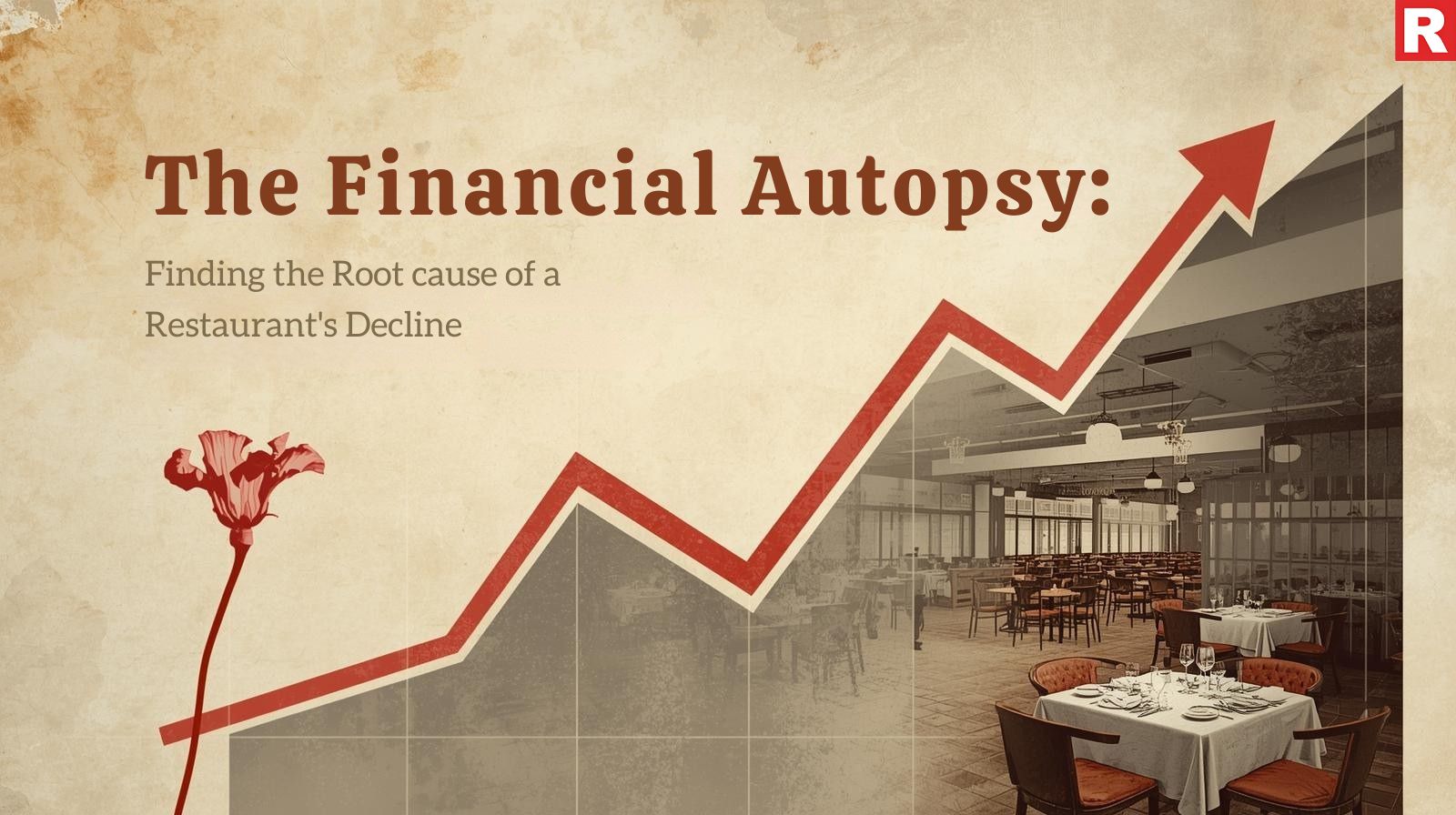
Understanding the root cause of any problem is necessary before you can fix it. The financial problems of a failing restaurant frequently show themselves as problems with money, but this is rarely one of the variables at play. It is a sign of more serious problems with the product, marketing, or operations.
- Examine your P&L (profit and loss) statement: Don't just focus on revenue. Is your food cost % excessively high, suggesting inadequate portion control or ineffective inventory management? Is low productivity or overstaffing causing labor costs to eat into your profits? Are you spending too much money on useless marketing? Examining your P&L in detail will show you where the money is going missing.
- Review Your Cash Flow Statement: Examine your cash flow statement to see how money is actually moving. Do you frequently find it difficult to make on-time rent, salary, or supplier payments? In locations where severe weather affects foot traffic, is there a seasonal decline that you're unprepared for? Survival depends on an understanding of the cash flow, not only profitability.
- Conduct a Break-Even Analysis: Do a break-even analysis by figuring out how much money you must make each day or each month to pay for all of your fixed and variable expenses. This will provide you with a specific, non-negotiable goal and assist you in determining the amount of revenue growth or cost reduction that is required to turn a profit.
- In-depth Analysis of Customer Feedback: This kind of data indicates quantitative problems. Examine comment cards, online reviews (Zomato, Swiggy, Google Reviews), and direct conversations with customers. Are there frequent complaints regarding the atmosphere, food quality, service, or cost? When it comes to pinpointing problem locations, these insights are invaluable.
- Analysis of Competitors: What distinguishes successful rivals? Examine their food, prices, atmosphere, advertising, and customer support. This might show you where your restaurant is falling behind or losing out on chances.
Know more: Top Mood-Boosting Foods That Make You Happy
Making a List of Identified Problems

After the evaluation stage is finished, it's time to compile all of the results into a complete list of issues. Be truthful and neutral, even if the facts make you uncomfortable.
Financial Issues:
- High percentage of food costs (e.g., certain foods producing losses).
- Excessive labor expenses (such as having too many employees at off-peak hours).
- Small check size on average.
- Excessive costs for utilities.
- Ineffective cash flow management, such as having too much money invested in inventories.
Product & Menu Problems:
- A menu that is outdated or unattractive.
- Inconsistent taste or quality of the dish.
- Dishes that don't suit the tastes of the current customers.
- High food waste as a result of big servings or unpopular goods.
- Lacking in USP (unique selling proposition).
Problems with Operations and Services:
- Long wait times or slow service.
- Employees who lack motivation or training.
- Inadequate customer service, such as impolite employees who don't pay attention.
- A lack of cleanliness or hygiene.
- Ineffective procedures in the kitchen.
Brand and Marketing Concerns:
- Bad reputation on the internet (bad reviews).
- Inadequate marketing or lack of awareness.
- Outdated décor or brand image.
- Inconsistent communication.
- No customer retention plan or loyalty program.
External factors and location:
- Declining foot traffic in the neighborhood.
- Nearby are new, fiercely competitive competitors.
- Inability to adjust to changes in the local market.
Check out: McDonalds starts all-day breakfast in Australia
Brewed to Perfection: How Automation is Shaping India’s Café Culture
Giving Priority to Urgent Problems: The Triage Approach

It's simple to become overwhelmed when faced with a lengthy list of issues. Like emergency care, a triage approach is essential. Prioritize the most important problems first, those that pose an immediate threat to closure or have a significant negative influence on the customer experience.
- Financial Leaks: Stop the bleeding first if you're losing money. This could indicate:
- Drastically cutting waste: Strict portion control and improved inventory management for extremely perishable foods are two ways to reduce waste drastically.
- Negotiating with suppliers: Asking for more time or longer payment terms for a temporary period is one way to deal with suppliers.
- Tightening labor schedules: Reducing hours during known slowdown periods is one way to tighten work schedules.
- Temporary pricing changes: To increase cash flow right away for a select few high-demand, high-profit dishes.
- Critical Customer Service Failures: If unhygienic conditions, lengthy wait times, or unfriendly staff are driving away consumers, these issues need to be resolved right away.
- Immediate staff retraining: Staff should receive immediate retraining with an emphasis on speed and basic service manners.
- Deep cleaning: A complete renovation of the space.
- Correction and Apologies: Express genuine regret and promise to put things right with recently dissatisfied clients.
- Resolving Legal/Compliance concerns: In order to prevent penalties or closure, any unpaid licenses, health code violations, or tax concerns must be addressed immediately.
Assign tasks, establish strict dates, and draft a clear action plan for these pressing issues.
What's new: Online Food ordering Zomato Launches Zomato Gold In India
Rebuilding Your Staff
A restaurant's staff members are its greatest asset. Your reputation and customer experience will suffer if your staff lacks motivation or is not properly trained.
Invest in Training: You must invest in training. Your front-of-house employees should receive training on the menu, upselling strategies, and service standards (such as greeting, taking orders, and politely addressing complaints). Educate your back-of-house staff on efficiency, food safety, and innovative recipes.
Encourage a Positive Work Environment: A positive workplace culture lowers staff turnover, which is a significant cost for restaurants. Treat your employees with respect, provide performance-based rewards, and acknowledge their little accomplishments. A respected employee will instill a sense of value in your clients.
Lead with Vision: You need to be the main source of inspiration. Tell your team what you see for the restaurant's revival. Give them the impression that they are contributing to the solution rather than only watching. Encourage them and ask for their opinions.
Marketing for the Modern Age
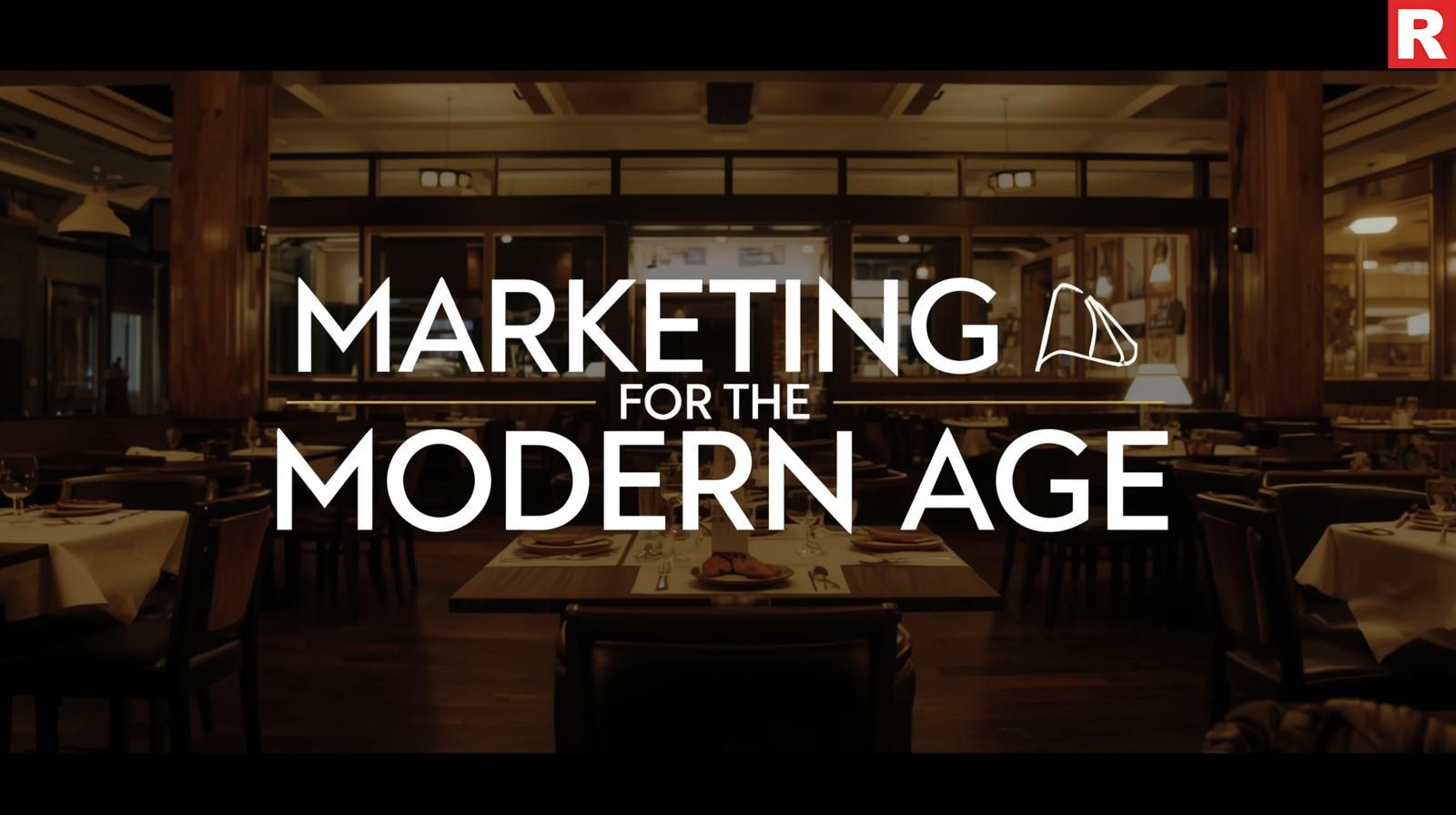
In today's marketplace, a restaurant cannot thrive without a strong online presence, particularly in highly competitive urban areas.
- Learn to Play the Social Media Game: Facebook and Instagram are your new billboards. Make use of excellent images and videos of your food, staff, and atmosphere. To create a community, interact with your followers, hold competitions, and share behind-the-scenes photos. Don't simply talk about your progress; show it.
- Optimize Your Online Listings: Make sure your local listing pages on Swiggy, Zomato, Google My Business, and other platforms are up to date and correct. List your accurate opening hours, use high-quality images, and, most importantly, react professionally and immediately to all feedback, both positive and negative.
- Accept Digital Payments: UPI and other digital wallets are common in India. Make sure your payment mechanisms are easy to use and give them a variety of choices.
Read this: Why SC is concerned over the quality of Maggi noodles again?
Winning Back the Trust and Loyalty of The Customers
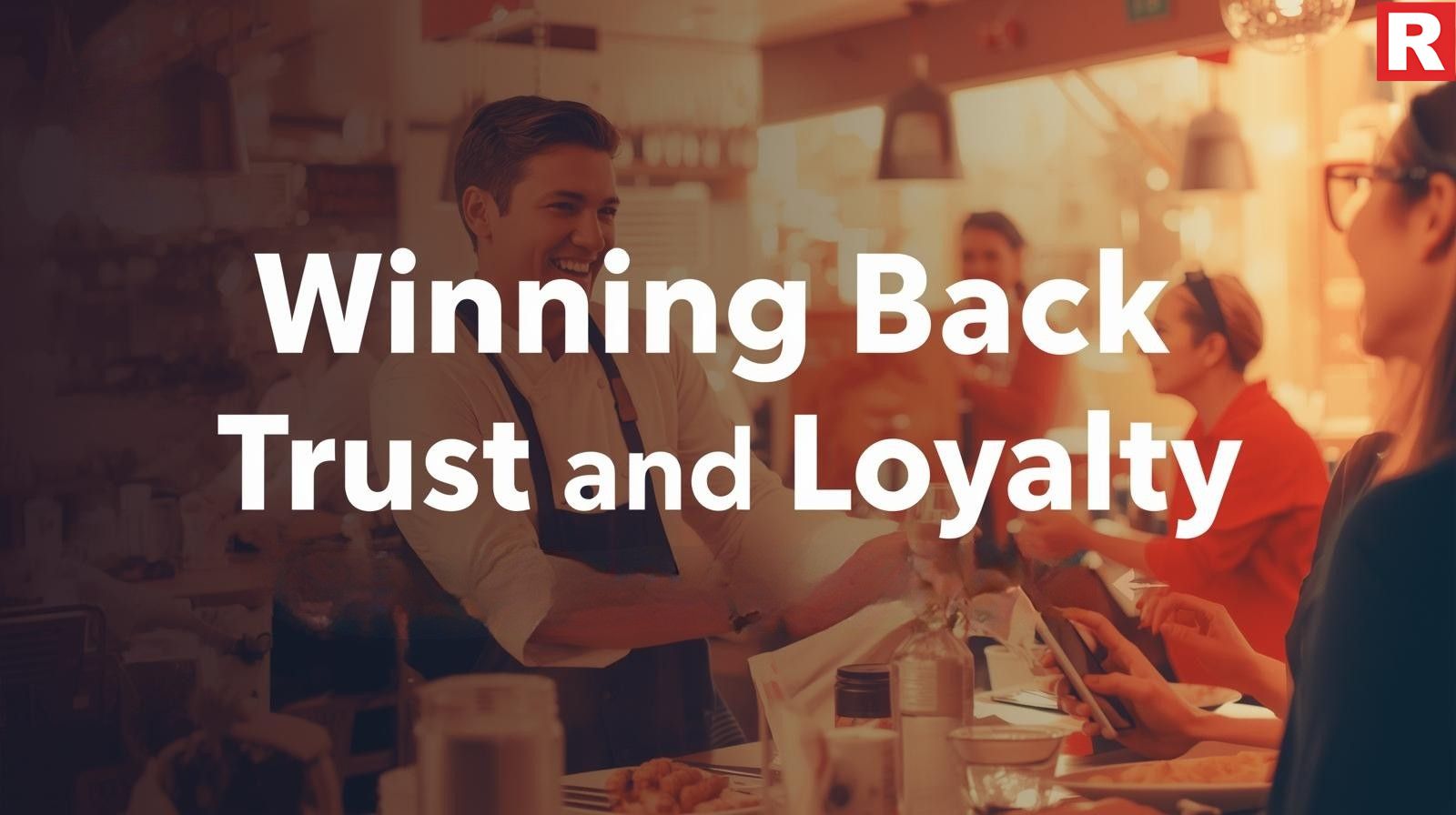
Customer loyalty is the foundation of a restaurant's success. You have lost that connection when you're failing.
- Listen to the Feedback & Respond: Pay attention to what customers have to say and act upon it by actively seeking both online and offline feedback from customers. Avoid taking offense. Make a free consulting report out of unfavorable reviews. Show that you're paying attention and acting by giving each review a thoughtful response. This transparency can restore confidence.
- Invest in the Customer Experience: Pay attention to the atmosphere, music, lighting, and cleanliness in addition to the cuisine. A nice lunch can become a wonderful experience in a cozy, well-kept setting.
- Start a Campaign for Relaunch: Don't make adjustments in a quiet way. Make an exciting announcement about them using a fresh brand identity. To highlight your improvements, throw a "relaunch party," invite regional food bloggers and influencers, and run exclusive promotions.
- Create a Loyalty Program: Give loyal consumers rewards. A straightforward loyalty program (such as a free dessert on your fifth visit, 10% off after you spend a specific amount, or point-based systems) promotes repeat business and demonstrates to customers that you appreciate their business.
A New Beginning
It's not easy to turn a failing restaurant around. It necessitates a critical examination of the past, a unique perspective for what lies ahead, and a resolute dedication to change. Rekindling your enthusiasm for hospitality, reestablishing contact with your clientele, and reestablishing an excellence-driven culture are more important than simply modifying your menu or marketing approach. These methods will help you turn a failing business into a successful, profitable, and well-liked part of the community, starting with a brutal financial diagnosis and ending with a full brand redesign. The happiness a restaurant delivers to its customers is ultimately what determines its success, not its furnishings or costs.

In modern cities, time has become one of the most precious things. People want food that is quick, fresh, and satisfying without long waits. This need has given rise to the idea of quick dining. Unlike fast food, it focuses on better quality and healthier options. Unlike fine dining, it does not demand hours at the table or high bills. It is a balance between the two. Quick dining outlets aim to serve meals in minutes while keeping taste and freshness in mind. They design menus with simple yet smart options like wraps, bowls, and fusion snacks that suit busy schedules. Many of these places also create warm spaces where people can enjoy their meals without feeling rushed. This makes it appealing to professionals, students, and even families. For those constantly on the move, it is not just a way to eat but a way to live. Quick dining is shaping the future of food culture in cities by matching speed with quality and lifestyle with convenience.
Read more: Domino’s 4-Course Meal— The Ultimate Lunch Deal You Can’t Miss
7 Types of Whiskies Everyone Should Try Once
What is Quick Dining?
Quick dining is a new way of eating out. It blends the best parts of fast food and restaurants. You get food faster than in a fine dining place, but it is healthier and fresher than regular fast food.
Think of it as a modern-day food stop. You walk in, order, and within minutes, your meal is ready. The menus are often smartly designed. Bowls, wraps, salads, fusion snacks, and coffee are common. Many quick dining outlets also create a cozy atmosphere so you can sit and enjoy without feeling rushed. This is why it appeals to working professionals, students, and even families in cities.
Why is Quick Dining Booming?
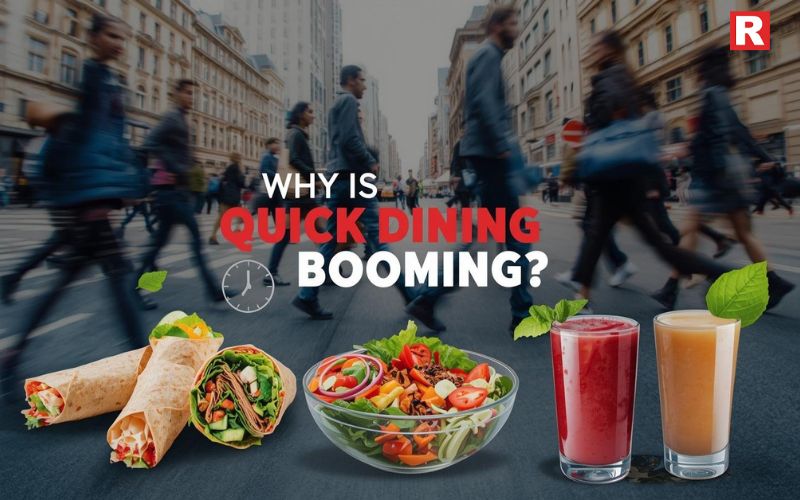
The boom in quick dining is not just a trend. It is a response to how city life has changed.
- Urban Lifestyle: In cities, people have less time to cook at home. Dual-income households, long commutes, and busy jobs make eating out a necessity.
- Technology: Apps like Swiggy, Zomato, and Dunzo have made ordering food a few clicks away. Pre-ordering, takeaways, and app loyalty programs keep customers hooked.
- Changing Tastes: Young people want food that is fast, affordable, and Instagram-worthy. They also look for healthier choices like millet bowls, cold brews, or gluten-free snacks.
- Health Awareness: Unlike older fast-food models, quick dining is often linked to fresh and healthy options. Even if you are eating on the go, you don’t want to compromise on nutrition.
When all these needs meet, quick dining becomes the natural answer.
Know more: Different Types of Bars to Explore in 2025: Where Drinks Meet Vibes
Market Value of Quick Dining
The rise of quick dining is also backed by strong numbers. Globally, the fast-casual dining market is valued at over $150 billion and is growing every year.
In India, the QSR (Quick Service Restaurant) industry is one of the fastest-growing food sectors. Reports suggest it will cross Rs 800 billion by 2025. The growth comes from:
- Rising disposable incomes.
- More urban migration.
- Expansion of food delivery apps.
- The demand for affordable yet quality food.
These figures show that quick dining is not a passing phase. It is the future of eating in urban areas.
Trends Defining Quick Dining

Quick dining is not the same everywhere. It adapts to what people in the city want. Here are some major trends shaping it today:
- Fusion Food: Cities love variety. Quick dining brands experiment with new flavors. You might find a momo taco, a sushi burrito, or a biryani bowl with global spices.
- Cloud Kitchens & Express Outlets: Many brands are cutting costs by running small kitchens without a dine-in space. These are focused only on delivery. Others set up express counters in malls and office hubs to grab quick attention.
- Tech-driven Dining: QR code menus, digital ordering screens, and AI-driven personalization are making food faster and smarter. Some places even use robots to serve or prepare meals.
- Healthy Choices: Urban customers are willing to pay for fresh ingredients. Vegan wraps, protein bowls, millet pancakes, and low-carb snacks are common. Quick dining gives them speed without guilt.
Quick Dining vs Traditional Dining
Quick dining stands out because it balances time, cost, and experience.
- Compared to Fine Dining: It is faster and cheaper. You don’t have to spend two hours and a large bill for one meal.
- Compared to Street Food or Fast Food: It feels cleaner, healthier, and more reliable. Many quick dining chains focus on hygiene and branded experiences.
- Compared to Home-Cooked Meals: It saves time and effort, especially for working people. While home cooking is healthier, quick dining offers a middle ground when you can’t cook.
This balance explains why it has become so popular.
Popular Quick Dining Brands
Quick dining chains are growing across India and the world.
In India:
- Wow! Momo – Famous for turning momos into quick meals with innovation.
- Biryani Blues – Offers regional biryani flavors in a modern format.
- Chaayos – Blends chai culture with a modern café setting.
- FreshMenu – Focuses on fresh, chef-made meals delivered quickly.
Global Examples:
- Chipotle – Known for customizable burritos and bowls.
- Shake Shack – A modern take on burgers and shakes.
- Pret A Manger – Popular for quick sandwiches, salads, and coffee.
These brands highlight how quick dining is about more than just food—it is about creating a lifestyle experience.
Also check: 10 Coffee Shop Design Tips for Small Spaces (That Brew Big Style)
Why Quick Dining Works
If you live in a busy metro like Delhi, Bangalore, or Mumbai, you know how hard it is to manage meals. Many professionals, including myself, often skip lunch or settle for snacks at the desk. Quick dining solves this problem.
Instead of waiting for a heavy restaurant meal, You can grab a wrap or a smoothie in less than 10 minutes. It is filling, clean, and affordable. Many outlets also offer digital loyalty points, which makes me return again and again. This personal connection is what makes quick dining more than a trend. It fits perfectly into the lifestyle of a modern city dweller.
The Future of Quick Dining
Quick dining will continue to evolve as cities grow. Some trends to watch:
- AI and Robotics: Automated kitchens and robotic servers will cut down preparation time.
- Sustainability: More outlets will move towards eco-friendly packaging and local sourcing.
- Hybrid Spaces: Many quick dining places will double up as co-working zones or social hubs.
- Hyper-local Menus: Expect to see global dining chains adding Indian touches to their menus.
The focus will remain on speed, quality, and experience.
Check more: Top Commercial Refrigerator Brands in India: Keep It Cool, Smart & Profitable
Cloud Kitchen vs. Traditional Restaurants: Which is More Profitable?
How AI & Automation Are Transforming Cloud Kitchens
Where You’re Heading!
The rise of quick dining in cities reflects more than just food habits. It mirrors the way people live, work, and value their time. Quick dining brings together speed, health, and affordability while offering a modern lifestyle choice. It allows busy professionals, students, and families to enjoy meals without spending hours waiting or paying high restaurant bills. The concept has turned eating out into something practical and regular, rather than a rare luxury. With urban routines becoming more demanding, this trend is expected to grow even faster. Outlets that focus on quick service, clean spaces, and fresh options are now part of everyday city life. For many, grabbing a quick wrap, salad, or bowl between meetings or classes has become normal. Quick dining has moved beyond convenience—it has become a culture that fits perfectly with the pace of modern urban living. It is not a passing trend but the new standard.

In the era of social media and digital marketing, a physical business card may seem like an outdated means of connecting with customers. This is different from reality, where we think that restaurant cards are just a phone number. If the restaurant card is designed properly, then it will not only invite past customers for future invitations, but it can also become a piece of your brand and an effective, affordable marketing tool. The business card given at the end of the customer’s dining experience is the last physical interaction you have with them. After that, your business card can become a big factor in creating regular customers or attracting new ones.
To design a business card that is both aesthetically beautiful and a marketing tool, we must have a proper plan. In this article, we will take you through a step-by-step guide that will help you with the entire process of designing a powerful business card. From completing its goal to perfecting the art of design and using it to its fullest potential for marketing.
Read more: Capturing the Craze: How Celebrity Restaurants are Winning the Game
The Qualities of A Physical Business Card

Even if your restaurant has a strong online presence, it still needs to have a physical card. This provides a direct connection that digital interactions cannot recreate.
- A Tangible Reminder: A physical card, whether it is in a customer’s wallet or on a kitchen counter, will subtly remind them of your restaurant. Unlike an email that can get lost in an inbox, it serves as a reminder for a future visit or order.
- Networking and B2B Relationships: Your restaurant is not just an establishment to sell food to customers. It is an entity in itself and a proper business model. So you, as the owner, need a physical card that can properly represent your business to food suppliers, local event planners, or other business owners. A high-quality card conveys seriousness and professionalism.
- Customer Loyalty: A business card can serve dual purposes by serving as a loyalty card for the customer. This offers clients a reason to remain involved with it and promotes repeat business.
- Offline Marketing: To draw in prospective customers who might not be looking for you online, leave your business cards at neighborhood businesses, community centers, or hotels.
The Essential Elements of a Great Restaurant Business Card
A business card needs to be concise, clear, and packed with all the important details. The following should always be included:
- Restaurant Name and Logo: The most important component is the restaurant's name and logo. Your brand's visual identity is represented by your logo, which should be clearly visible on the card.
- Contact Details: This includes your email address, phone number, and website URL. Make it simple for clients to contact you.
- Physical Address: An in-person restaurant's address cannot be negotiated. Clients must be able to locate you.
- Social Media Handles: Provide a list of your primary social media accounts, including Facebook and Instagram. This turns a one-time diner into a devoted social media follower.
- A Catchy Slogan or Tagline: There should be short, memorable phrases that can effectively convey the vibe of your brand and help people remember the card.
Know more: 5 Delicious Sago Desserts to Enjoy This Monsoon
Branding and Aesthetics to Create an Impact
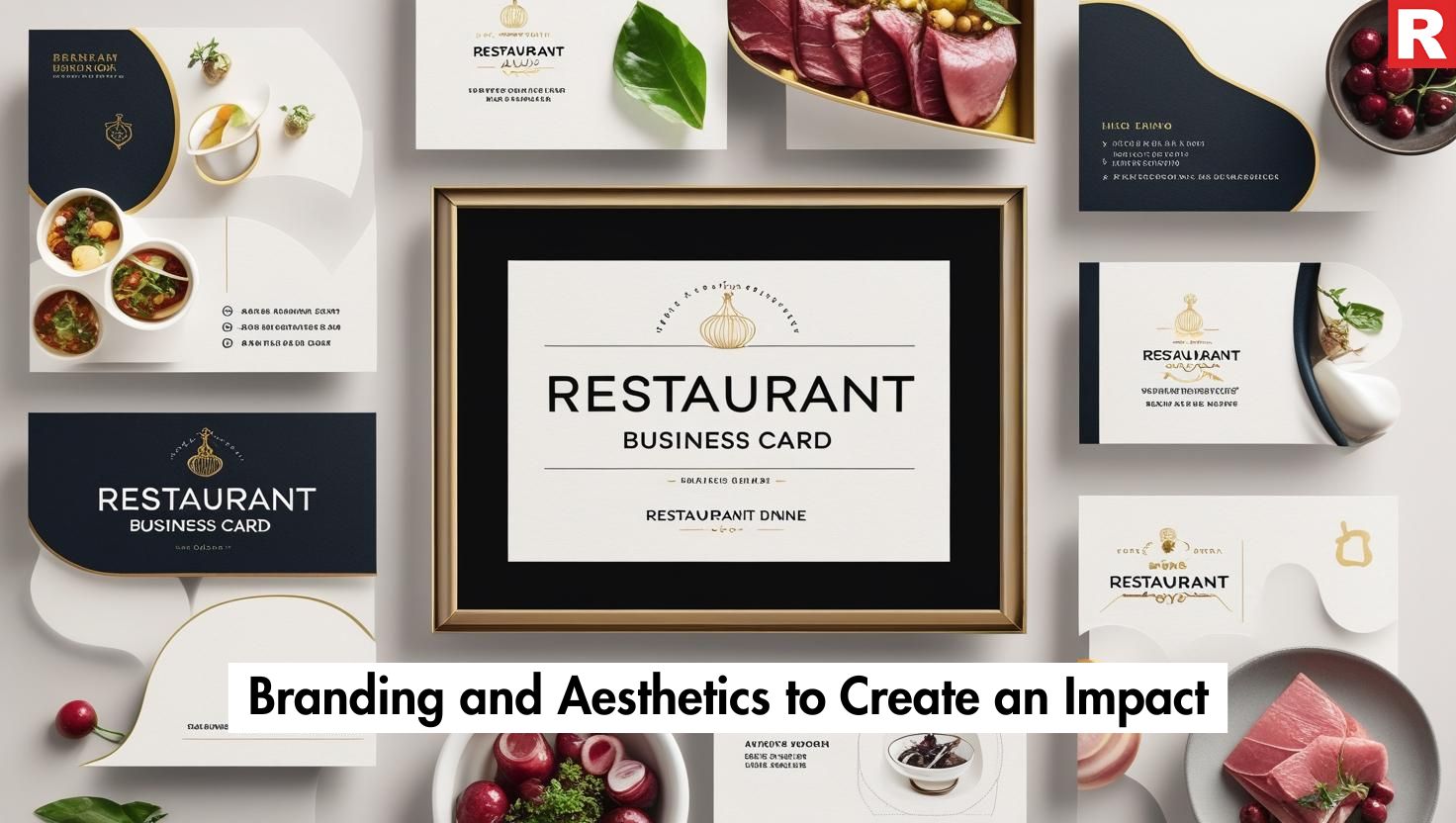
A business card is a small billboard for your restaurant, so the design must be flawless.
- Brand Consistency: Your restaurant's brand identity should be reflected in the design of your business cards. Make use of the same color scheme, font styles, and general design as your menu, website, and interior design. This produces a unified and polished image.
- Typography & Readability: Select fonts that are both aesthetically pleasing and simple to read. Stay clear of eye-straining small or excessively fancy fonts. Whether it's a quirky, handwritten font for a casual cafe or a traditional serif for a fine-dining business, the font should represent the personality of your restaurant.
- The Power of Color: Color creates mood and stirs up moods. While earthy tones could suggest a farm-to-table or organic theme, a strong red might suggest passion and energy for an Indian restaurant.
- White space and layout: A cluttered card is hard to read and appears unprofessional. To allow your important content to breathe, make good use of white space. For further information or a loyalty offer, the reverse of the card is a great location.
- Paper Quality and Finish: A business card's physical feeling says a lot about your company. Don't cut corners on this. A thick, premium paper material has a strong, lavish feel. Think about a glossy coating to bring out the colors or a matte finish for a timeless, elegant appearance. A brand's dedication to sustainability or a rustic feel can also be communicated through textured or recycled paper.
- Unique Shapes and Die-Cuts: A unique method to stand out is with a card shaped like a coffee bean, a pizza slice, or a chef's cap. A personalized die-cut card is much more memorable, but it costs more.
What's new: Marketing The Gen Z Way For Your Restaurant
A Step-by-Step Guide to Creating Your Card
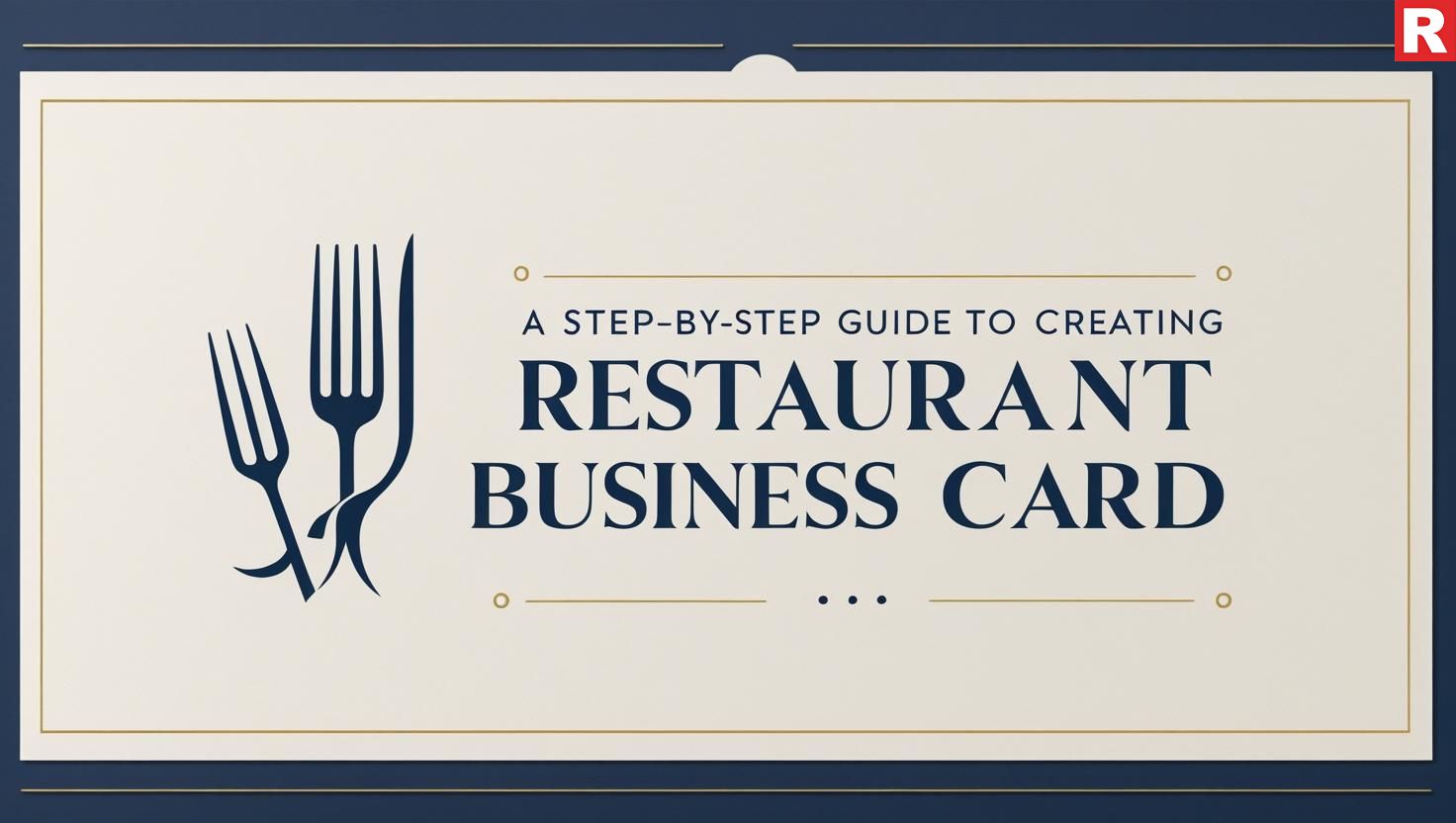
- Collect Your Brand Assets: Make sure you have all of your branding resources ready before you begin developing. This contains the names of your brand fonts, the hex codes for your brand colors, and a high-resolution copy of your logo.
- Select Your Design Tool: There are several choices available to you.
- Canva and other online platforms are excellent for beginners. You can modify thousands of their editable templates to fit your brand.
- Professional software, such as Adobe Illustrator, provides the greatest creative freedom and is reserved for seasoned designers.
- If you have the funds, hiring a freelance designer is your best bet. A skilled designer can create a unique, improved card that precisely captures your brand.
- Draft Your Content and Layout: Create a draft of your layout and content by drawing the design you want on the card's front and back. Put the most crucial information on the front and make use of the back for social media handles, a QR code, or a loyalty reward.
- Review and Proofread: This is an important step. A single error can give the impression that your business is not professional. Verify all addresses, phone numbers, and spelling one last time. Before sending it to print, get a second and third opinion.
- Pick a Printer and Paper Supply: Look at nearby and online printers. While local printers can offer a more personalized touch and let you physically feel the paper type before making a decision, online firms can offer lower pricing. Request samples and discuss various finishes.
Common Mistakes to Avoid
- Cluttering the Card: When too much information is crammed onto a little card, it loses its readability and serves no useful purpose. Sometimes negative space can be useful, and it can make the card look prettier.
- Illegible Fonts: Customers become frustrated when they see fonts that are too small, thin, or overly stylized.
- Low-Resolution Images: A logo that is pixelated or fuzzy appears amateurish and unprofessional. A high-resolution vector file should always be used.
- Ignoring the Back: Your card's back is a precious piece of space. Don't leave it empty; use it for your social media accounts, a QR code, or a loyalty program.
- Faint Paper Stock: A cheap, flimsy card can give the wrong impression and feel fragile. Durability and quality are represented by a thicker, sturdier paper type.
Check out: Top 20 Trendy Whiskeys You Must Try Once
Your Guide to Influencer Marketing in Restaurants
Using Your Business Card to Promote Your Brand
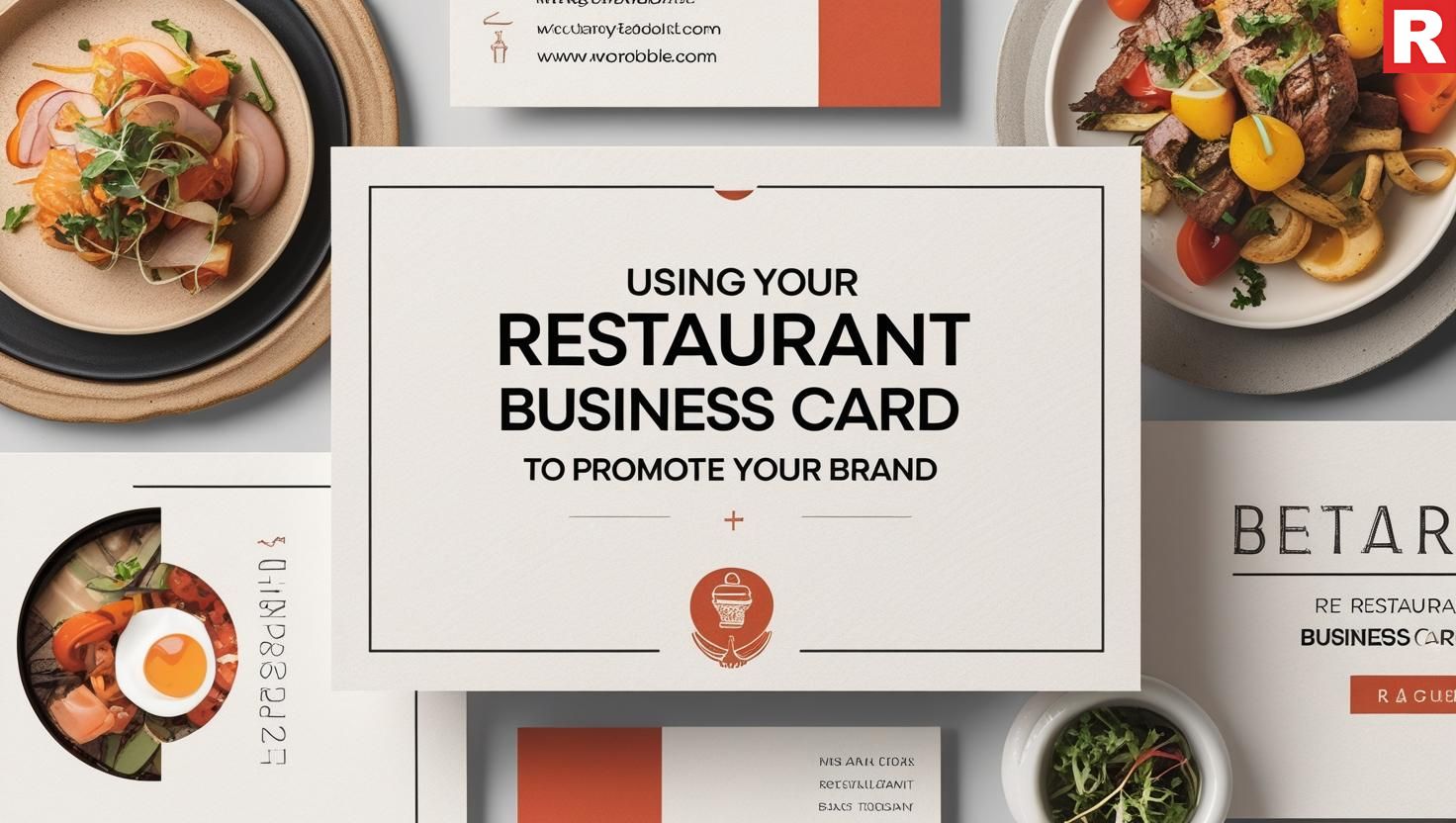
There is much more to a business card than merely a contact card. Here are some clever strategies to make the most of it as a marketing tool:
- The Loyalty Punch Card: This is a traditional and successful strategy. A basic pattern of a punch-hole stamp can be created on the back of the card. After a predetermined number of visits, customers can receive a complimentary item, such as coffee or a starter. It's a low-cost method of measuring customer engagement and promoting repeat business.
- The Mini-Menu Card: Highlight a specialty dish, daily special, or new seasonal item on the back of your business card. This acts as a mouthwatering reminder and invites the customers to visit and sample the meal.
- The Revolution of QR Codes: A QR code serves as a strong link between your online image and your physical card. It can be scanned to:
- Provide a direct link to your reservation system online.
- Redirect clients to your online menu.
- Direct them to your website's special offer page.
- Encourage them to become your social media followers.
- Allow them to post a review on Zomato or Google.
- Connect them to your Wi-Fi password.
Read this: 10 Facts You Should Know About Frozen Desserts
Conclusion
By no means is the restaurant business card a thing of the past. It is a strong, affordable tool that can strengthen your brand, increase your customer base, and close the gap between your online and offline presence when used carefully and properly. You may make a business card that not only reflects your restaurant but also leaves a lasting impression by emphasizing a clear message, premium materials, and a clean design. In a market that is highly competitive, a tiny investment can provide significant returns.

Born roughly between the mid-1990s and the early 2010s, Generation Z is a demographic group that possesses significant purchasing power and influence. Having grown up in the era of social media and the internet, this generation takes a completely different approach to dining and brand interaction than the previous generations. Therefore, restaurateurs need unique marketing ideas to appeal to Gen Z people. Understanding and successfully marketing to Gen Z is not an option for restaurants hoping to prosper in the years to come; rather, it is an essential element of sustainability and long-term success.
This in-depth article will explore the thoughts, digital habits, and expectations of Gen Z customers with regard to restaurant businesses. In order to create a Gen Z-centric marketing strategy that connects honestly, nurtures loyalty, increases foot traffic (and online orders), and establishes your restaurant as a destination for this important age group, we will provide you with practical techniques and creative tactics.
Read more: Top 20 Trendy Whiskeys You Must Try Once
Understanding the Gen Z Population
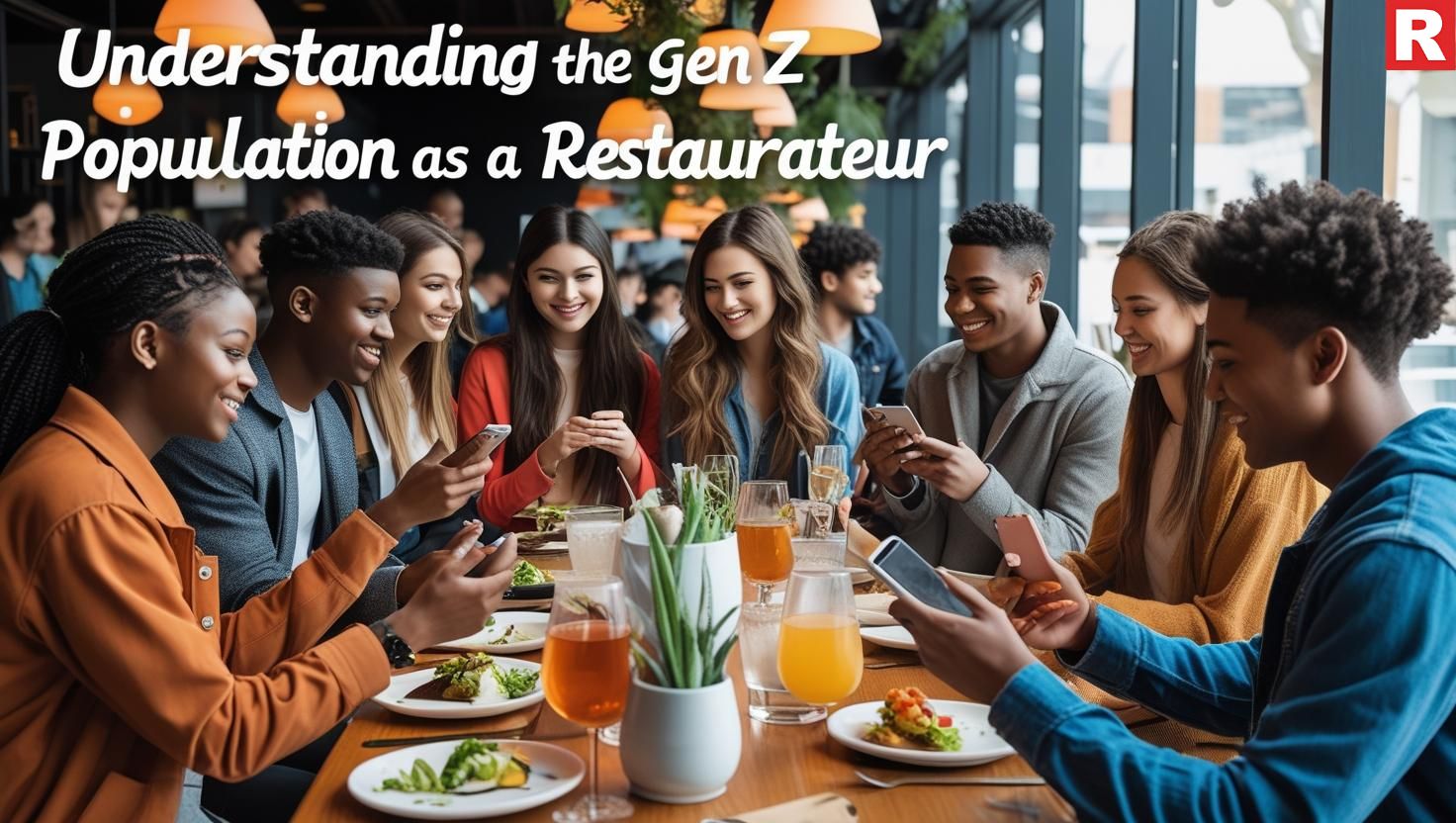
When marketing to Gen Z, it's critical to get beyond the common stereotype that casts them as only "tech-savvy." Here is a closer examination of their main behaviors and values:
- Digital natives: Gen Z are those who have never known a world without smartphones and the internet. Their main source of social connection, entertainment, and information is and has always been digital platforms.
- Value Honesty and Transparency: Gen Z has a keen sense of perception and can recognize overly professional or fake marketing with ease. They are drawn to businesses that are sincere, open, and have a vision.
- Socially Conscious: Social and environmental issues are very important to this generation. They frequently decide to back businesses that share their beliefs and show a dedication to making a positive impact.
- Visual Learners and Content Consumers: They use YouTube, Instagram, Twitter, and other sites to absorb a lot of visual content, such as videos, pictures, and memes.
- Seek Customization and Personalization: Gen Z expects brands to be aware of their unique tastes and provide experiences that are tailored to them.
- Value Efficiency and Convenience: Having grown up in an on-demand society, they expect easy online ordering, quick customer support, and easy ways to make payments.
- Value-Driven yet Price-Conscious: Although Gen Z is budget-conscious, they are prepared to pay for experiences and quality that reflect their views.
- Influenced by Peers and Creators: Rather than traditional advertising, they mainly rely on referrals from friends, family, and reliable internet creators or influencers.
The Gen Z Marketing for Restaurants: Strategies for Success

Now that we somehow understand Gen Z’s preferences and values, let’s take a look at the strategies to attract this population:
1. Dominate the Digital Landscape
Mobile-First Strategy: Make sure your online ordering system and website are completely responsive for mobile devices. Gen Z mostly browses and makes decisions on their smartphones.
Having a vibrant and active social media presence:
- Instagram: Put an emphasis on aesthetically pleasing content, such as crisp images and brief, captivating videos showcasing your cuisine, atmosphere, and behind-the-scenes activities. Engage your followers by using essential local hashtags.
- YouTube: Post longer-form videos, such as restaurant vlogs, cooking lessons, or chef interviews.
Smooth Online Ordering and Delivery: Collaborate with well-known food delivery services and make sure your online ordering platform is easy to use, effective, and customizable.
Apply User-Generated Content (UGC): Give your restaurant a special hashtag to encourage customers to post images and videos of their eating experiences. Reposting and interacting with user-generated content fosters authenticity and community.
Employ Location-Based Marketing: To reach Gen Z in particular neighborhoods, make use of social media's location-based features and look into local collaborations.
Know more: What’s Brewing: Importance of Customer Feedback
2. Embrace Authenticity and Transparency
Don't Just Tell, Show: Give a behind-the-scenes look at your kitchen, showcase your staff, and explain the origins of your dishes. Gen Z finds immense value in authenticity.
Be Open About Foods and Sourcing: Emphasize in your marketing that you use sustainable or locally sourced foods whenever possible. Gen Z is concerned about the origins of their food.
Own Your Errors: If you make a mistake, be upfront and honest about it on the internet. Transparency demonstrates accountability and builds confidence.
Encourage Social Causes: Assist with projects that have a beneficial effect on the community and align your business with environmental or social causes that appeal to Generation Z.
3. Leverage the Power of Influencers and Creators
Collaborate with nearby Gen Z food bloggers and micro-influencers: Work together with real voices in your area who genuinely connect with their audience.
Provide Special Experiences and Partnerships: Rather than merely providing complimentary meals, think about collaborating with influencers to co-create content, organize events, or provide special menu items.
4. Create Shareable Experiences
Visually Appealing Food Presentation: Make sure your food looks as good as it tastes on Instagram. Be mindful of appearance and plating.
Unique Ambiance and Decor: Make your space visually captivating and appealing so that Gen Z will want to take pictures and post them.
Interactive Features: Take into account adding interactive features to your restaurant, like picture booths or eye-catching menu displays.
Conduct Giveaways and Contests: Plan giveaways and contests on social media to promote involvement and sharing.
What's new: Your Guide to Influencer Marketing in Restaurants
5. Personalization and Customization
Offer Personalized Menu Options: Let clients alter their orders according to their dietary needs or preferences.
Use Data to Learn About Preferences: If you have an online ordering platform or loyalty program, use data to understand client preferences and provide tailored recommendations. This should be done with the consent of the customer.
Communicate Directly: Answer messages and comments on social media in a timely and considerate manner.
6. Meeting Their Expectations
Provide Competitive Pricing and Value for Money: Although Gen Z is not mainly driven by cost, they believe in a good deal. Emphasize exclusive deals and promotions.
Simplified Ordering and Payment Procedures: Make sure your in-restaurant payment and online ordering processes are safe, quick, and simple. Provide a variety of payment methods, such as digital wallets.
Loyalty Programs with Relevant Rewards: Create loyalty programs that provide Gen Z with observable and useful rewards, including early access to new menu items or exclusive discounts.
7. Stay Ahead of Trends
Track Social Media and Internet Trends: Keep a careful eye on what's popular on Gen Z-friendly platforms.
Try Out New Platforms and Technologies: Be open to experimenting with new digital marketing tools and social media platforms.
Modify Your Menu and Offerings: Keep up with changing dietary requirements and culinary trends, and be prepared to modify your menu as necessary.
Check out: 10 Facts You Should Know About Frozen Desserts
The Ultimate Guide to Food Photography for Indian Restaurants
Building a Community, Not Just a Customer Base
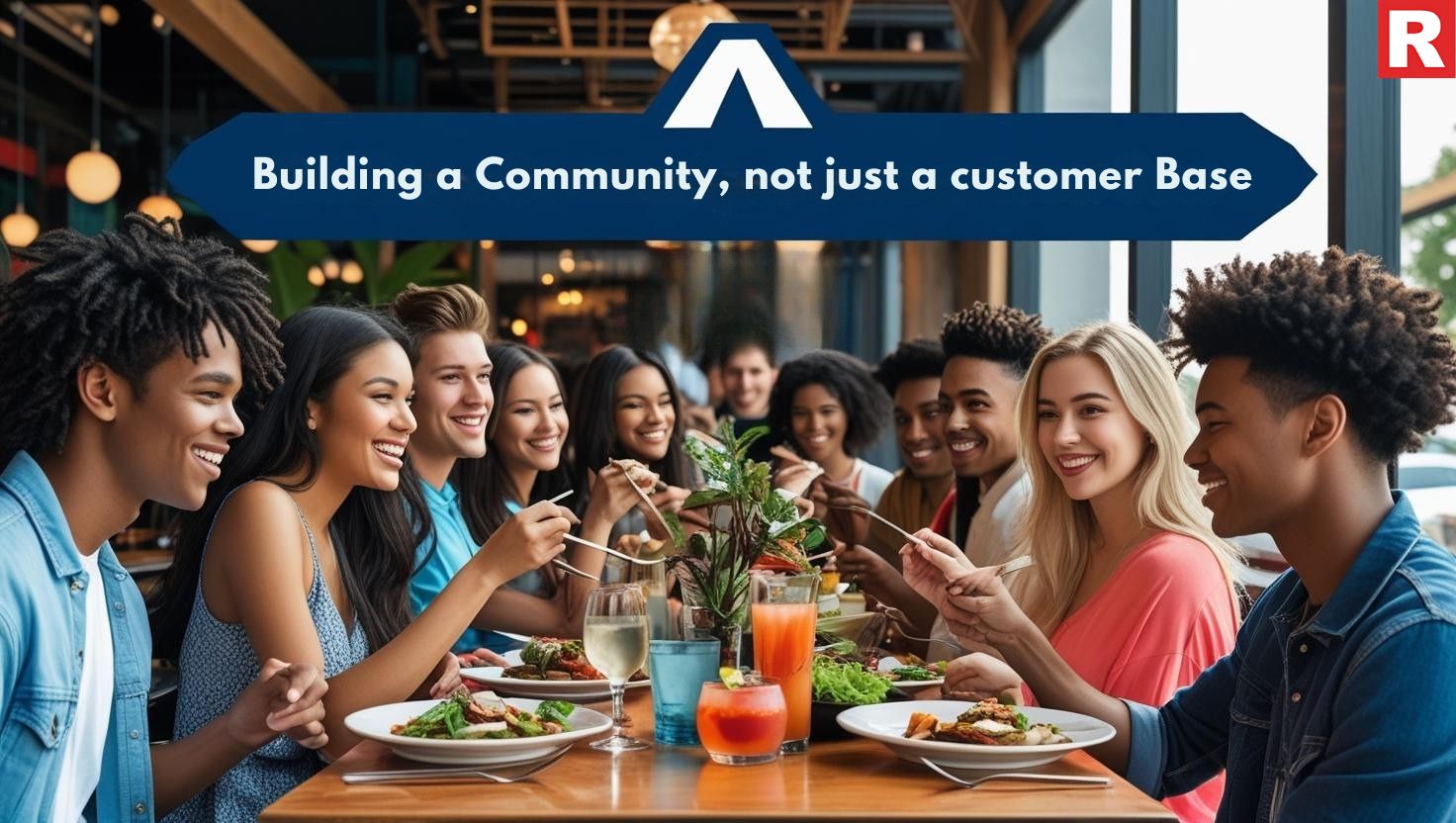
Loyalty for Gen Z goes beyond enjoying delicious meals; it also involves a sense of community and belonging. By actively developing a community around your brand, your restaurant can promote this:
- Specialized Nights and Events: Plan frequent specialized evenings that appeal to particular hobbies of the Gen Z population. These could include open mic nights, quiz nights centered around pop culture or popular subjects, live music events with local Gen Z musicians, or even joint ventures with other Gen Z-focused local companies (e.g., gaming). cafes, clothes boutiques). Actively publicize these events on social media to generate excitement and give Gen Z a cause to visit your business.
- Exclusive Online Forums and Groups: Create private groups on social media sites like Instagram or even Discord so that devoted Gen Z customers can communicate with your restaurant staff and one another. Give members-only discounts or early access to events, seek comments, conduct surveys on possible offerings, and share exclusive first looks at new menu items. This increases their bond with your brand and gives them a feeling of insider status.
- Collaborations with Local Gen Z Creatives: Collaborate with up-and-coming singers, artists, or other creatives to display their work in your restaurant. This may be putting on acoustic performances, showcasing artwork, or working together to create limited-edition goods. In addition to giving local talent exposure, this establishes your restaurant as a promoter of the innovative spirit of the Gen Z community.
- Interactive In-Restaurant Experiences: Include design features in your restaurant that promote conversation and build a sense of community. A "share your dish" photo wall where customers may tag your restaurant, conversation-friendly communal seating spaces, or even interactive screens with food and local culture-related quizzes or polls could be examples of this.
- React and Participate Authentically: Take an active part in discussions on your online forums and social media platforms. Answer messages and comments on time and with sincerity. Demonstrate your appreciation for their thoughts and your attention to their input. In order to gain Gen Z's trust and loyalty, this human touch is essential.
Measuring Your Success: Tracking Gen Z Engagement
Monitoring the success of your Gen Z marketing initiatives is essential:
- Monitor Social Media Metrics: Keep an eye on your social media metrics, including follower growth, reach, and engagement rates (likes, comments, and shares).
- Examine Website and Online Ordering Traffic: Track online order rates and keep an eye on social media traffic.
- Monitor Brand Emotion and Mentions: Find out what Gen Z is saying about your restaurant on the internet.
- Obtain Gen Z Customers' Input: Ask younger consumers directly for their opinions to find out what appeals to them.
- Use Unique Promotion Codes: To monitor the effect of campaigns aimed at Gen Z on sales, provide them with unique promotion codes.
Read this: Top 10 Foods to Boost Your Mineral Intake Naturally
Conclusion
Marketing to Gen Z requires a mentality change and a readiness to accept the digital-first, genuine, and socially concerned ideals of this significant generation. In order to secure a tasty and prosperous future, restaurants can successfully attract the attention, loyalty, and spending power of Gen Z by learning about their preferences, utilizing the appropriate digital channels, emphasizing authenticity, producing shareable experiences, and consistently adjusting to trends. Keep in mind that the secret to creating enduring relationships with this vibrant and demanding group is to connect authentically and offer value.

Marketing is an important part of any restaurant’s operations, whether it be a small mobile restaurant or a big dining establishment. The restaurant has to use many marketing strategies to get the attention of as many customers as they can. Influencer marketing is one of them. It is a digital marketing strategy to bring in customers through trusted social media influencers. The world of traditional advertising has essentially declined with the rise of the internet. Therefore, you should consider influencer marketing if you want more people to know about your business.
Understanding and using influencer marketing effectively is now a strategic necessity for restaurant owners who want to stand out from their competition, increase brand recognition, draw in fresh customers, and cultivate customer loyalty. With practical advice and insights designed especially for the restaurant sector, this in-depth article will help you understand the complex world of influencer marketing and even help you use the power of influence to achieve success.
Read more: 10 Facts You Should Know About Frozen Desserts
Why People Trust Influencers?
- Authenticity and Relatability: Influencers create trust by producing content that isn't a business advertisement but rather feels real and intimate. Their followers regard them as real people with similar interests.
- Sense of Community: A strong sense of community and connection is created when followers interact with influencers in both directions. Because of this, their suggestions seem like advice from a reliable friend.
- Specialized Knowledge: Whether it's technology, fitness, or food, a lot of influencers are regarded as authorities in their fields. Their audience values their viewpoints because of their specific knowledge and regular content.
- Social Proof: Influencers' promotion of a good or service acts as social proof. Their followers are inspired to follow suit after realizing how appealing and worthwhile the product is.
- Visual and Captivating Content: Influencers frequently create excellent, eye-catching content that captivates readers. Compared to a static, traditional commercial, this kind of material is significantly more memorable and interesting.
Why Restaurants Need Influencer Marketing

The restaurant industry is competitive and diverse. It takes more than simply mouthwatering food to stand out; you also need to connect with your target audience and communicate effectively. Influencer marketing provides a special means of doing this:
- Establishing Credibility and Trust: Influencers have built a devoted fan base by being genuine and knowledgeable about a certain subject, usually food and lifestyle. The advice of these trustworthy individuals is more credible than traditional advertising.
- Reaching a Targeted Audience: To make sure your message reaches the appropriate individuals, you may carefully collaborate with influencers whose followers are similar to the target demographic for your restaurant.
- Producing Real Content: Influencers provide authentic and captivating content (pictures, videos, narratives, and reviews) that presents your restaurant in an approachable and alluring manner. Consumers might find this user-generated content to be more genuine and reliable.
- Increasing Brand Awareness and Visibility: Working with influencers can help your restaurant reach a larger audience so that your brand is widely known.
- Increasing Customer Traffic and Online Orders: Influencers' positive reviews and eye-catching content can greatly boost both online delivery orders and visitors to your physical store.
- Creating Social Proof: Influencers who talk about their satisfying dining experiences at your restaurant serve as social evidence, confirming your excellence and luring new customers.
Know more: Top 10 Foods to Boost Your Mineral Intake Naturally
Finding The Right Influencer For Your Restaurant
Finding the right influencer to collaborate with is essential to the success of any influencer marketing campaign. To find your ideal influencers, follow these steps:
- Identify Your Target Market: Know exactly who you're attempting to reach. What are their internet habits, hobbies, and demographics? This will assist you in finding influencers with similar audiences to your own.
- Look for Local Food Critics and Bloggers: There are probably YouTubers, Instagrammers, and food bloggers who are enthusiastic about the region's food culture.
- Evaluate Their Content Style and Niche: Examine their content to make sure it reflects the style and ideals of your business. Do they specialize in a particular cuisine, street food, casual eating, or gourmet dining?
- Examine Their Engagement Rate: The high follower count doesn't create a high-level influencer. Popularity isn't always connected with the number of followers. Examine their follower numbers with their engagement rate (likes, comments, and shares). An audience that is truly engaged is one that is interested and active.
- Verify Their Credibility and Authenticity: Seek out authentic evaluations and stay clear of influencers who appear to blindly support every good or service. Being genuine is essential for gaining the audience's trust.
- Think About Micro-Influencers: Don't just concentrate on influencers that have large fan bases. Micro-influencers, or those with a more specialized, smaller following, can be more affordable and frequently have higher engagement rates.
- Use Influencer Marketing Services: Depending on your location and criteria, a number of internet services can assist you in finding and managing influencers.
The Strategic Approach to Restaurant Influencer Marketing

Apply the following three steps to develop an effective influencer marketing strategy for your restaurant:
- Set Your Budget and Goals: Start by laying out your goals in detail, such as raising online sales or brand recognition. Determine a reasonable budget while keeping these objectives in mind. This budget could include cash payment, complimentary meals, or a mix of incentives for the influencer.
- Describe the Messaging and Campaign Goals: Clearly state the goals of the campaign. Describe the steps you want the influencer to take, such as organizing giveaways and producing content. To maintain brand consistency, create a clear tone that emphasizes your restaurant's special features and overall dining experience.
- Have Clear Guidelines and Disclosure: Establish clear guidelines for brand portrayal to protect both your brand and the authenticity of the influencer. This involves deciding which recipes to highlight and making sure the influencer appropriately notifies their audience about the partnership.
What's new: The Ultimate Guide to Food Photography for Indian Restaurants
Reaching Out and Collaborating with Influencers

- Tailored Appeal: To demonstrate your genuine appreciation for the influencer's work and your belief that their audience would be interested in your restaurant, research their material and modify your message accordingly. Stay clear of basic marketing messages.
- Provide Value: Clearly outline the advantages of working with your restaurant. This could be a financial salary, a free meal, or exposure to a new audience.
- Create a Sincere Connection: Treat the cooperation as a partnership as opposed to a business deal. Pay attention to their suggestions and feedback.
- Give the Influencer a Wonderful Experience: Make sure the influencer has a satisfying and unforgettable meal at your restaurant. Present your best meals and provide outstanding service.
- Allow Them Creative Freedom: Have faith in the influencer's ability to produce interesting content for their followers. It's important to offer guidelines, but don't be too restrictive.
- Talk about Deliveries and Timelines: Clearly state the content you expect, the platforms on which it will be shared, and the deadlines that have been agreed upon.
- Track Performance and Measure Outcomes: Utilize analytics tools to monitor website traffic, social media engagement, and online orders as indicators of the influence of your influencer partnerships.
Check out: How to Get A Government Loan for Your Restaurant Business
How to Shield Your Restaurant Business from Failing
Different Types of Influencer Collaborations for Restaurants
- Free Lunch Reviews: Provide influencers with a complimentary lunch in return for an honest blog or social media review.
- Sponsored Posts: Pay influencers to produce videos or posts that highlight particular features of your restaurant and draw attention to them.
- Social Media Takeovers: Allow an influencer to take over your restaurant's social media accounts for a day in order to share live updates or behind-the-scenes photos.
- Giveaways and Contests: Collaborate with influencers to organize giveaways or contests that motivate their followers to interact with your business.
- Collaborations on Events: Invite influencers to your restaurant's special events, such as tastings or menu launches.
- Long-Term Partnerships: If you want to make a lasting impression, think about forming long-term relationships with important influencers who sincerely love your business.
Read this: How to Grow Your Restaurant Into A Franchise
Measuring the Success of Your Influencer Marketing Efforts
To determine the results and return on investment (ROI) of your influencer marketing programs, you must monitor their performance:
- Track Social Media Engagement and Website Traffic: Keep an eye out for any spikes in social media followers, likes, comments, shares, and website visits both during and after an influencer partnership.
- Track Online Reservations and Orders: If increasing sales is your aim, keep an eye out for any increases in online reservations or orders that may be related to influencer activity.
- Use Special Discount Codes or Tracking Links: Give influencers special discount codes or tracking links so you can immediately credit their work for sales or website traffic.
- Get Customer Input: Find out how new customers found your restaurant. Keep track of this information if they name an influencer.
- Calculate Your ROI: Determine Your ROI by weighing the money you made from your influencer partnership against the expenses incurred (such as salary or complimentary meals).
Conclusion
Restaurants have a great chance to engage and establish a genuine connection with their target audience through influencer marketing. You can use the power of influence to increase brand awareness, drive customer traffic, and ultimately serve up long-lasting success in the cutthroat culinary market by knowing the local influencer landscape, developing a strategic approach, forming sincere partnerships, and regularly measuring results. Accept this modern marketing tool, and you'll see your restaurant's reach and reputation grow.

Many people dream of owning and running a profitable restaurant in India. However, the initial investment required to start or expand a food business can be an important barrier. You see, opening and managing a restaurant requires a huge amount of investment. Fortunately, the Indian government provides a range of loan schemes and initiatives to help small and medium-sized businesses (SMEs), including restaurants.
Understanding the world of government loans can be difficult due to their complex processes and eligibility requirements. This article is specifically intended for interested and existing restaurant operators in India. We'll go over the most important government loan programs, explain the qualifying requirements, walk you through the application process, and give you valuable advice to improve your chances of getting the money you need to pursue your restaurant's dreams.
Read more: Picante Cocktail Recipe: The Spicy-Sweet Drink Taking Over Cocktail Menus
Why Government Loans are Crucial for Indian Restaurants
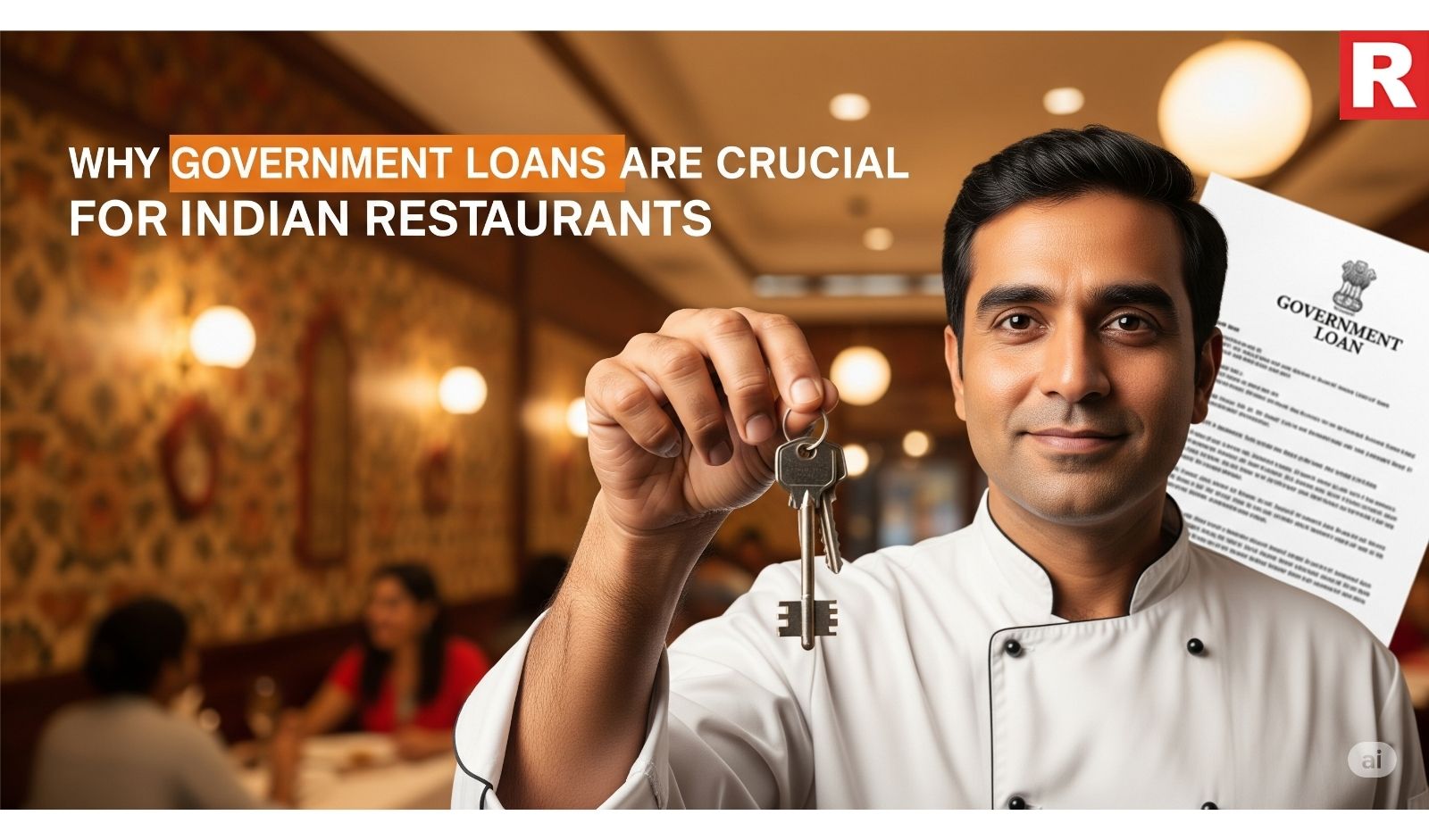
The food service sector in India is an important contributor to the economy, and the government acknowledges the need to promote its growth. Government loans provide various benefits to restaurant businesses:
- Lower Interest Rates: Government-backed schemes frequently offer lower interest rates than typical bank loans or private lenders, lowering the overall cost of borrowing. This is good for small restaurant owners.
- Easier Collateral Requirements: Some government schemes have simpler collateral requirements, making them more accessible to businesses with few financial assets.
- Focus on Certain Sectors: Many plans are designed to help certain sectors, such as SMEs (small and Medium Enterprises), the food processing industry, which directly benefits restaurants.
- Encouraging Business: Government loan efforts aim to promote entrepreneurship and generate job possibilities in the country, which nicely aligns with the interests of restaurant owners. After all, a single restaurant can provide employment to many people.
Key Government Loan Schemes for Restaurant Businesses in India
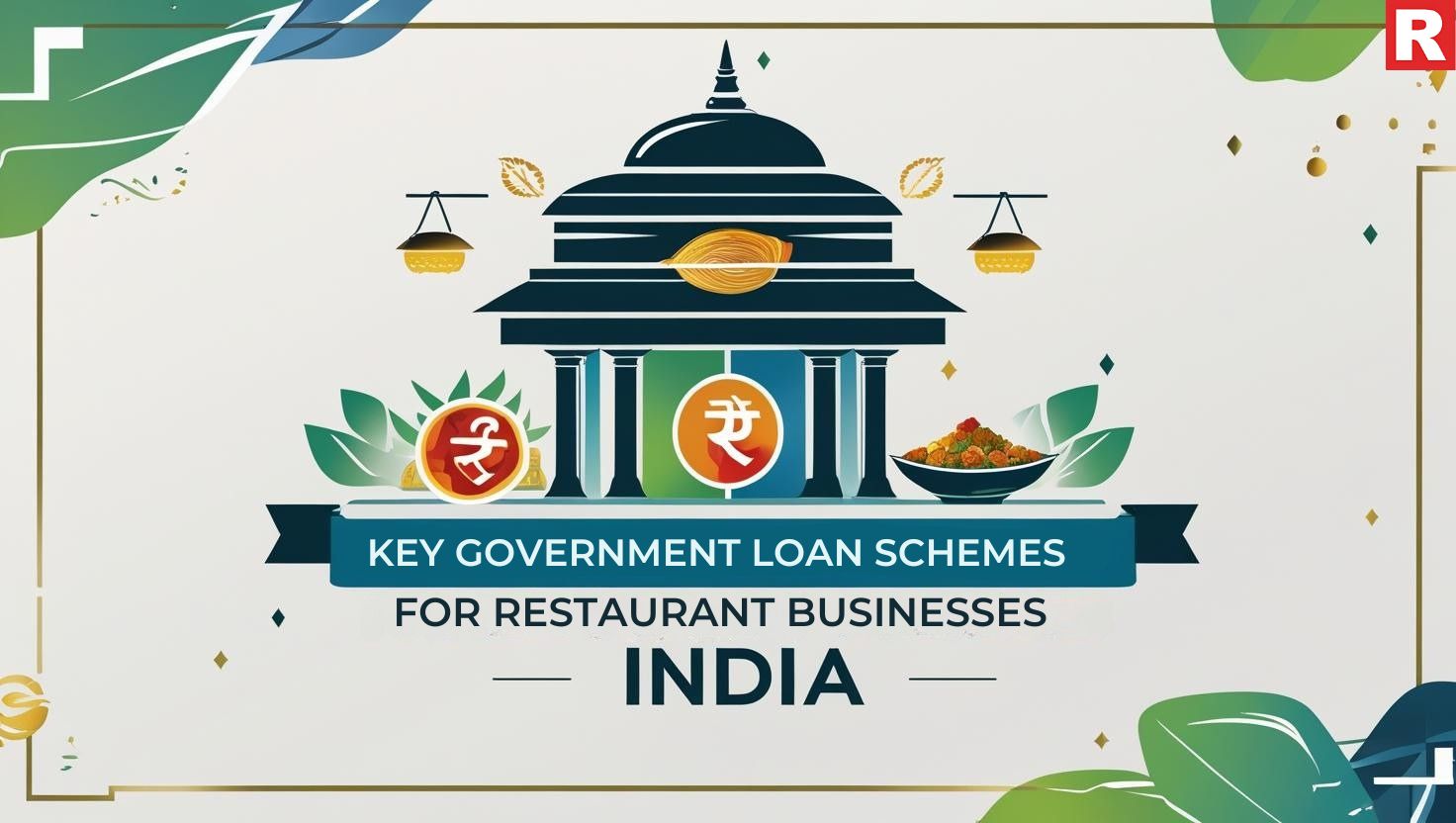
Several major government loan schemes can be beneficial for restaurant owners in India. Here are a few of the more relevant options:
1. Pradhan Mantri Mudra Yojana (PMMY)
PMMY is a major plan that aims to give financial assistance to non-corporate, non-farm small and micro enterprises. PMMY loans are grouped into three types:
- Shishu (up to ₹50,000) is ideal for launching a small restaurant or food stand.
- Kishore (₹50,001 to ₹5 lakh) is ideal for established small restaurants seeking to grow or upgrade equipment.
- Tarun (₹5 lakh to ₹10 lakh) is ideal for established restaurants seeking considerable expansion or remodeling.
- Tarun Plus (₹10 lakh to ₹20 lakh) is ideal for opening new restaurants.
Eligibility criteria: Indian citizens with a credible business proposal. Existing and new restaurants are eligible. Loans of up to ₹10 lakh under PMMY often do not require collateral.
How to Apply: You can apply to any Scheduled Commercial Bank, Regional Rural Bank (RRB), Small Finance Bank (SFB), Micro Finance Institution (MFI), or Non-Banking Financial Company (NBFC) that participates in the Mudra Yojana. You must submit an application form, a business plan, KYC documents, and other essential financial information.
Know more: How to Grow Your Restaurant Into A Franchise
2. Credit Guarantee Fund Trust for Micro and Small Enterprises (CGTMSE)
The CGTMSE provides assurances to banks and financial organizations for loans made to qualifying micro and small businesses, including restaurants. This decreases lenders' risk and encourages them to issue loans without strict collateral requirements.
Eligibility criteria: New or existing micro and small enterprises (as defined by the MSMED Act of 2006). Restaurants are often eligible for the service sector category. The CGTMSE scheme covers loans up to ₹2 crore.
How to Apply: You cannot apply directly to the CGTMSE. You must contact a CGTMSE-approved bank or financial institution. The lender will review your loan application and, if approved, secure CGTMSE guarantee cover.
3. Pradhan Mantri Employment Generation Programme (PMEGP)
PMEGP is a credit-linked subsidy program designed to provide job opportunities by aiding entrepreneurs in establishing new micro-enterprises. It is managed by the Ministry of Micro, Small, and Medium Enterprises (MoMSME).
Eligibility criteria: Individuals over the age of 18, Self Help Groups (SHGs), Registered Trusts, Educational Institutions, etc. Setting up a manufacturing unit costs ₹50 lakh, whereas a service sector unit (including restaurants) costs ₹20 lakh. The subsidy component varies depending on the beneficiary's category and the location of the unit (urban or rural).
How to apply: Prepare a project report and apply online through the Khadi and Village Industries Commission's PMEGP portal. Your application will be sent to the administering agency (KVIC/KVIB/DIC) in your district. After examination, you may be invited to an interview before the bank approves the loan.
4. National Small Industries Corporation (NSIC) Schemes
NSIC provides a variety of schemes to help the growth of small and medium-sized enterprises, including financial aid. Their programs frequently focus on technology upgrades, marketing assistance, and credit assistance.
Eligibility criteria: Micro, small, and medium-sized businesses, both existing and new. Restaurants wishing to modernize their culinary equipment or expand their facilities may find NSIC schemes useful.
How to Apply: To learn about individual schemes and the application process, go to the NSIC website or contact a branch in your area. In most cases, you must produce a complete project report as well as financial documents.
What's new: How to Shield Your Restaurant Business from Failing
5. Stand-Up India Scheme
The Stand-Up India Scheme is designed to encourage entrepreneurship among women, Scheduled Caste (SC), and Scheduled Tribe (ST) businesspeople. The scheme offers bank loans ranging from ₹10 lakh to ₹1 crore to at least one Scheduled Caste or Scheduled Tribe borrower and one woman borrower per bank branch for starting a greenfield firm (new venture).
Eligibility criteria: Entrepreneurs over the age of 18 who are women or SC/ST. The company should operate in the manufacturing, service, or trading sectors. Restaurants come under the service sector.
How to Apply: You can apply online through the Stand-Up India portal or go directly to a bank branch. The scheme also offers handholding assistance and credit guarantees through the Credit Guarantee Fund for Stand-Up India (CGFSI).
The Application Process: A Step-by-Step Guide for Restaurateurs
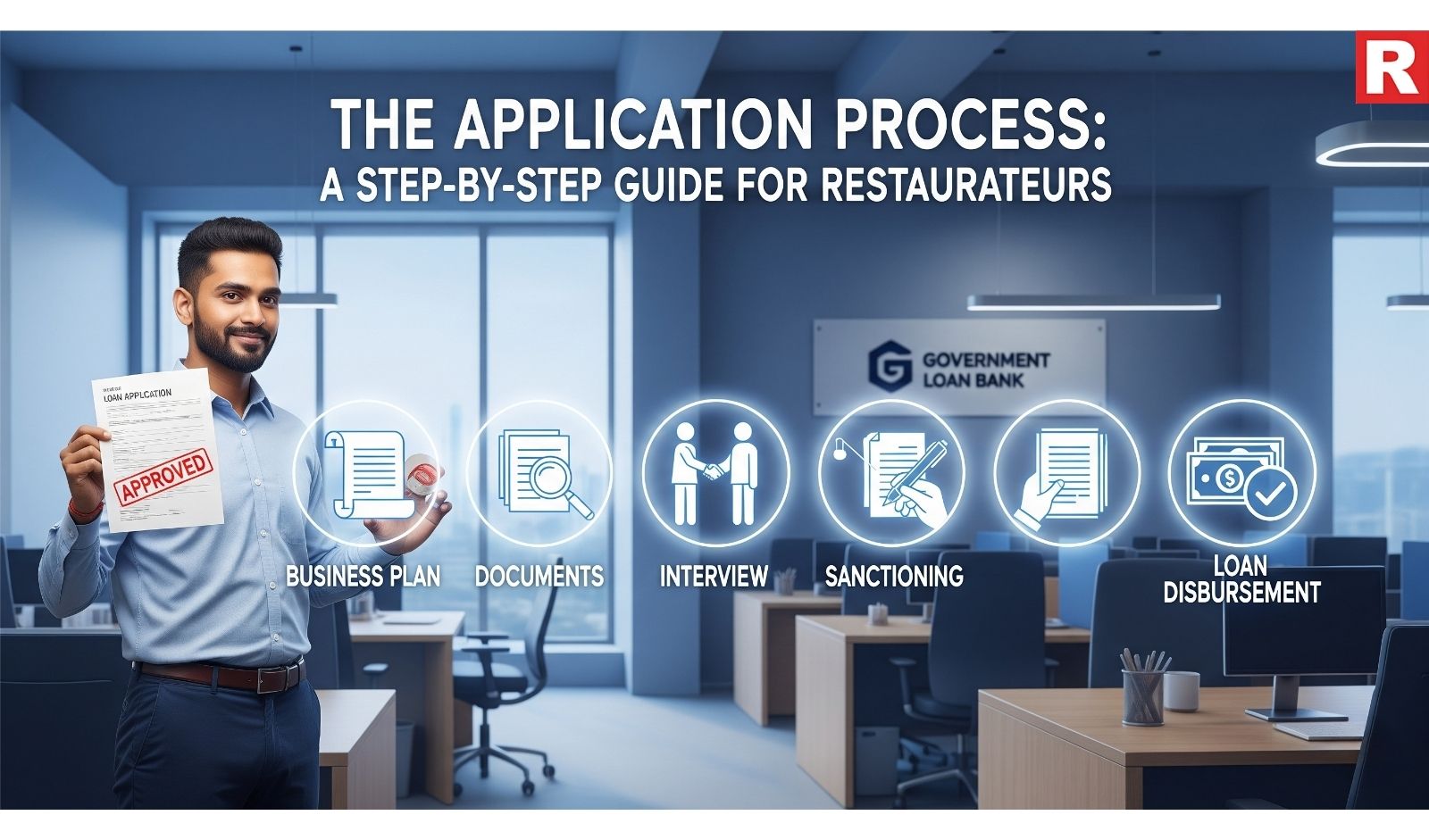
While the requirements may differ based on the plan and the lending group, here is an overall overview of the application process:
- Research and Select the Right Scheme: Carefully consider the eligibility criteria, loan amount, interest rates, and other parameters of several government programs to determine which one is most suited to your restaurant's needs and stage of development.
- Prepare a Comprehensive Business Tactic: A well-written business plan is essential. It should include information about your restaurant concept, target market, marketing strategy, operational plan, budget estimations (including revenue forecasts, cost analysis, and profitability), and the loan amount needed for the intended use.
- Gather the necessary documents: Prepare all necessary documentation, which usually includes:
- Application form (provided by the lending institution or online site)
- KYC paperwork (identification and address proof) for the applicant(s) and promoters
- Business registration evidence (if applicable)
- Partnership agreement or Memorandum and Articles of Association (if necessary)
- Business plans and project reports
- Financial statements (for an existing firm)
- Bank Statements
- Quotation for machinery or equipment (if appropriate)
- Caste certificate (if applying for schemes such as Stand-Up India)
4. Approach the lending institution: Visit the bank, NBFC, or government body that manages the scheme you've chosen. Please submit your application form and all supporting papers.
5. Scrutiny and Due Diligence: The financing institution will assess your application and perform thorough research, which may include site visits and verification of your documents and business plan.
6. Interview and Authorizing: You may be called for an interview to go over the business's strategy and financial projections. If the lender is satisfied, your loan will be approved. So keep yourself prepared for the interview process. You should know every minute detail of your business plan.
7. Payment: Once the loan is approved, funds will be transferred to your bank account following the scheme's terms and conditions.
Check out: Using Gaming to Boost Your Restaurant Business: How does it work?
Tips for Increasing Your Chances of Securing a Government Loan
- Have a Well-Structured Business Plan: A detailed and realistic business plan demonstrating your restaurant's long-term viability and profitability is essential.
- Maintain a Good Credit History: A good credit score boosts your reputation and improves your chances of loan acceptance.
- Offer Accurate Financial Information: Ensure that all financial information you offer is accurate and transparent.
- Highlight Your Restaurant's Unique Selling Point: Clearly define what distinguishes your restaurant and why it is likely to flourish in the market.
- Be prepared to answer questions: Prepare to address all questions from the lending institution concerning your business plan, financial projections, and management team.
- Follow Up Regularly: Stay in touch with the lending institution to monitor the status of your application.
Read this: Top 10 Essential Technology Systems for any Restaurant
Conclusion
A government loan can give the financial encouragement you need to start, expand, or modernize your restaurant business. Understanding the many programs available, carefully completing your application, and following the necessary processes will considerably boost your chances of receiving this vital financial assistance. With the appropriate capital and a good business strategy, you can serve up success and turn your culinary dreams into a tasty reality. Remember to stay up-to-date on the newest government efforts and seek advice from financial specialists to efficiently manage the process.

Opening a restaurant and starting your own culinary business is a dream for many. Many restaurateurs could even make this dream of theirs a reality if they had done proper planning and execution. However, the real struggle shows itself after the daily operations of the restaurants start. No matter how flawless the planning is, there may be some areas where mistakes of any kind can occur. Or there may be some factor you didn’t consider during the planning of the restaurant, and now it is causing a problem. Areas left unattended can also create an issue. Many issues can pose a threat to the overall functioning of your business and might even become a factor leading to the failure of your restaurant.
To stop your restaurant from collapsing completely, you have to find the key areas of the problem. In this article, we will be covering the main reasons that can lead to the failure of your restaurant. We would also like to discuss how to shield your restaurant from potential failure and make sure it keeps its place among the customers.
Main Reasons for the Potential Failure of A Restaurant
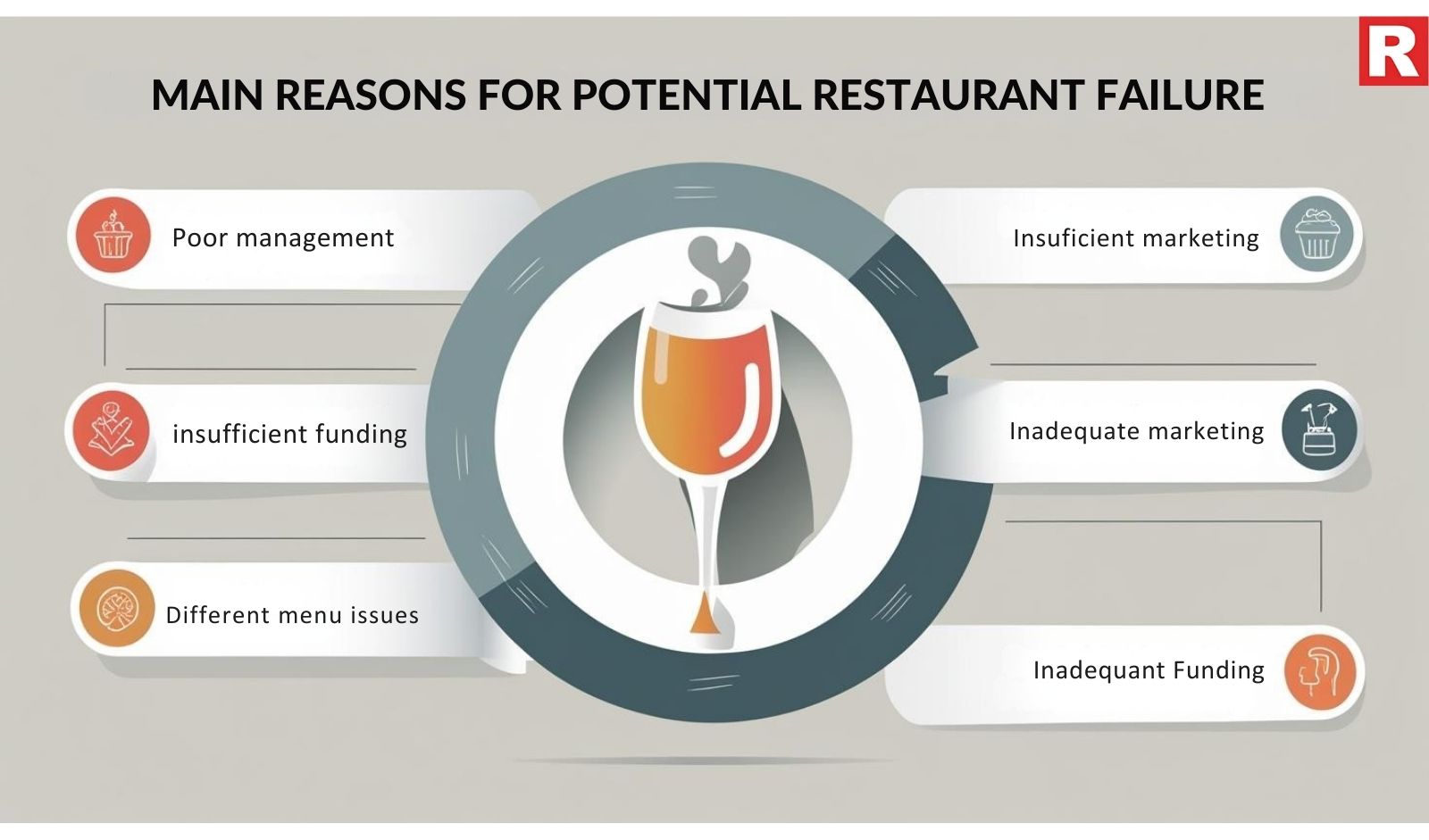
The restaurant industry is highly competitive and, therefore, is also notorious for its high failure rate. While a restaurateur might be focusing on creating superb dishes to cater to the tastes of the customers, the reality is that most mistakes stem from some of the common business mistakes that are avoidable. And in the competitive and dynamic market of the Indian culinary industry, such mistakes can pose an ultimate threat if they occur regularly. Therefore, understanding these problems and actively addressing them is the first and most important step in developing an efficient and successful restaurant business.
- Poor Financial Management: A lack of enough startup capital and an inability to control expenditures are the key causes of failure. Even if a restaurant looks to be profitable, it can fail if its Cost of Goods Sold (COGS) is not clearly understood and cash flow management is ineffective.
- Inefficient Operations: The absence of a well-defined business plan and irregular daily operations creates chaos. This includes inconsistent food and service quality, which damages customer trust, as well as a high staff turnover rate, which raises expenses and lowers efficiency.
- Poor Marketing and Brand Management: In a congested market, a restaurant must have a distinct Unique Selling Proposition (USP) to stand out. Inadequate promotion and disregard for the restaurant's online reputation on sites such as Google and Zomato can prohibit it from gaining and maintaining customers.
- The Human Factor: Choosing the incorrect site, whether it is expensive or has poor visibility, might be disastrous. Ineffective leadership, poor communication, and the inability to adapt to changing trends and technologies are all major causes of failure.
Read more: Rain Meets Refinement: 7 Premium Whisky Cocktails to Sip This Monsoon
Save Your Restaurant Business From Failing
There are many key areas you need to focus on if you want your restaurant to keep working and flourish. From finances to marketing, you need to keep a check on every sector so that any problem that can lead to the failure of your business can be avoided.
1. Master Your Finances: The Foundation of Restaurant Survival

Poor management of finances is a primary cause of restaurant failure. Implementing strong financial processes is critical for survival in a competitive marketplace.
- Detailed Budgeting and Forecasting: Develop an elaborate budget that includes all expected income and expenses. Predict future performance regularly using past data, seasonal trends, and local economic conditions. This enables you to spot any cash problems early on.
- Accurate costing: It includes meticulously tracking the cost of goods sold (COGS), labor costs, rent, utilities, and marketing expenses. Learn the exact cost of each dish on your menu for more successful pricing.
- Inventory Management: Set up a successful system for tracking inventory to reduce food waste, eliminate spoiling, and optimize ordering. Regular stock checks and accurate tracking are essential for controlling COGS.
- Pricing Strategy: Create a strategic pricing plan that balances profitability and customer value. Consider the pricing of your rivals, your target customer's ability to spend, and your unique selling points.
- Cash Flow Management: Make sure you have enough cash on hand to pay your immediate bills. Negotiate appealing payment conditions with suppliers and manage accounts receivable efficiently.
- Regular Financial Analysis: Review your financial accounts (profit and loss, balance sheet, and cash flow statement) regularly to discover patterns, areas of concern, and possibilities for improvement. Consider hiring a financial counselor who is experienced with the restaurant industry in India.
Know more: How to Cook Prawns Like a Pro: Restaurant-Style Curry Recipe
2. Satisfy Your Customers
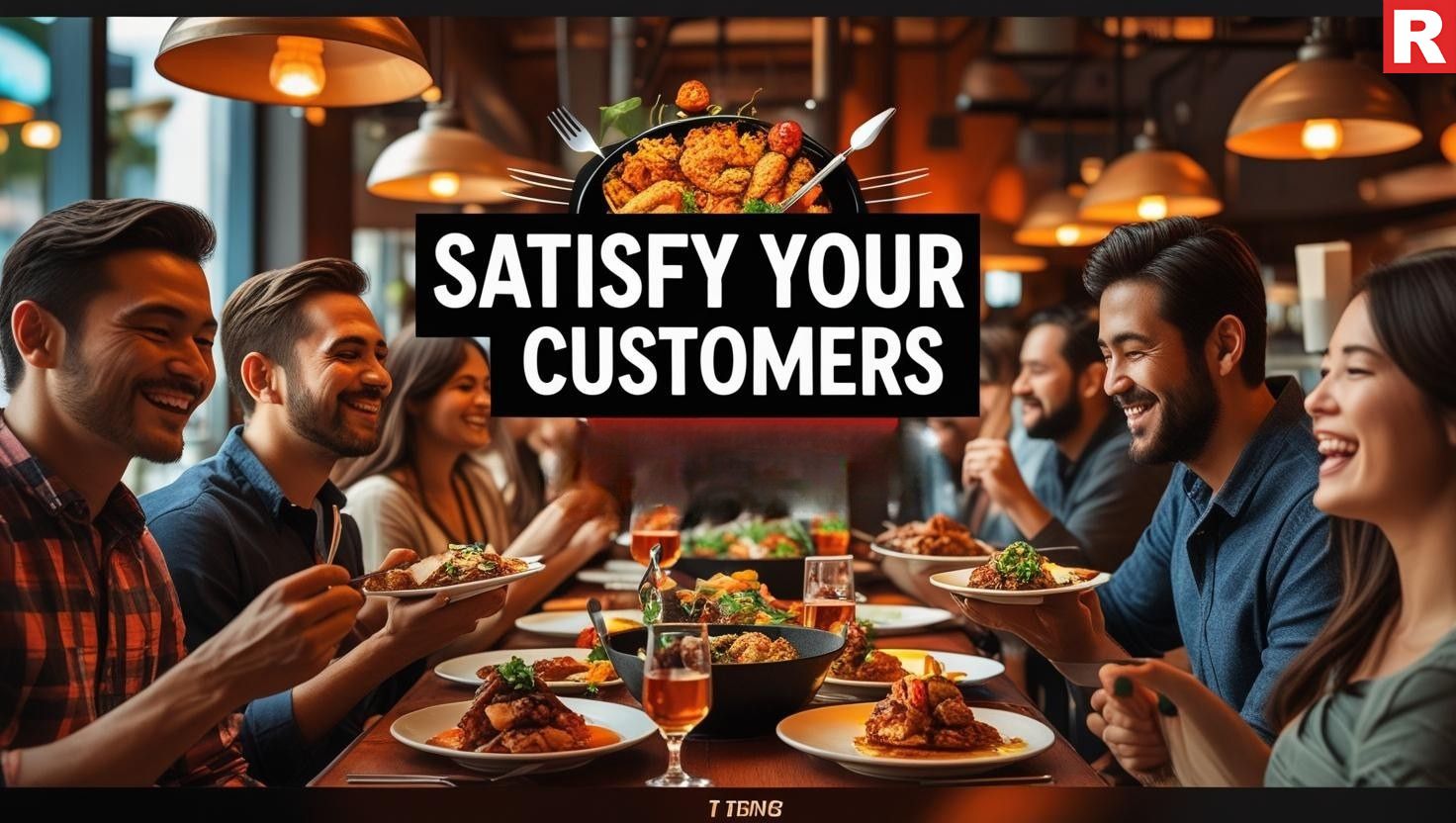
Word-of-mouth spreads quickly, providing outstanding customer service and a unique dining experience, which is critical for building loyalty and protecting your business from failure.
- Exceptional Customer Service: Teach your employees to be attentive, courteous, and informed about the menu. Train them to deal with consumer complaints efficiently and effectively. Go the extra mile to foster ideal interactions.
- Build Relationships: Encourage employees to recall regular customers' names and preferences. Implement a CRM system to track client data (with consent) and modify the experience.
- Gather and Act on Feedback: Actively seek consumer feedback via comment cards, online surveys, and social media monitoring. Take every input seriously and utilize it to determine areas for development.
- Create a Warm Atmosphere: Make sure your restaurant's ambiance is appealing, clean, and pleasant for your target audience. Pay attention to the decoration, lighting, music, and overall cleanliness.
- Loyalty Programs: Create a well-designed loyalty program to reward and encourage regular customers to return. Provide special discounts, early access to new menu items, or other benefits.
- Manage Your Online Reputation: Actively monitor online reviews on platforms such as Google, Zomato, and TripAdvisor. Respond to all reviews, positive or negative, in a timely and professional manner. Address issues both publicly and privately to demonstrate how much you respect feedback from customers.
3. Optimize Operations: Efficiency is Key to Sustainability
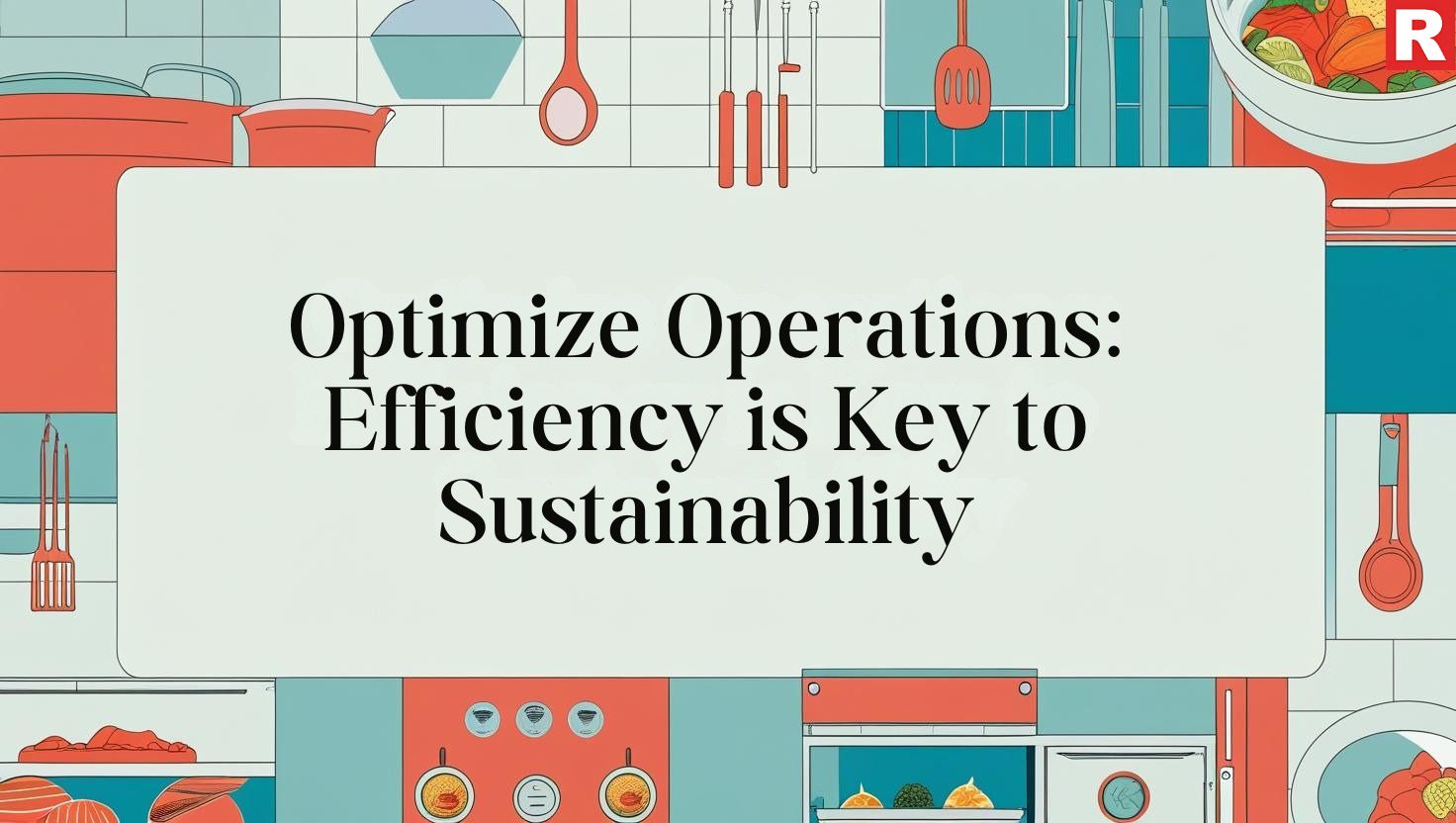
Simple operations can dramatically cut costs, increase efficiency, and improve the entire customer experience, all of which are critical considerations in preventing restaurant failure.
- Efficient Kitchen Management: Optimize the kitchen structure and workflow to reduce blockages and increase efficiency. Invest in dependable equipment and perform regular maintenance.
- Technology Adoption: Use POS systems with incorporated inventory management, online ordering platforms, and kitchen display systems (KDS) to automate activities, eliminate errors, and increase communication.
- Staff Training and Development: Invest in complete training programs for all employees, including food preparation, service standards, hygiene regulations, and safety measures. Well-trained employees are more efficient and deliver superior customer service.
- Menu Optimization: Includes regularly reviewing your menu to find slow-moving or useless items. Simplify your menu to concentrate on popular and profitable dishes. Consider seasonal recipes to maximize local ingredients and cut expenditures.
- Waste Management: Implement tactics to reduce food waste by carefully managing inventories, using proper storage practices, and repurposing materials in creative ways.
- Standard Operating Procedures (SOPs): Develop clear SOPs for all critical jobs and processes to maintain consistency and efficiency throughout the organization.
What's new: How to Grow Your Restaurant Into A Franchise
4. Adapt to the Market
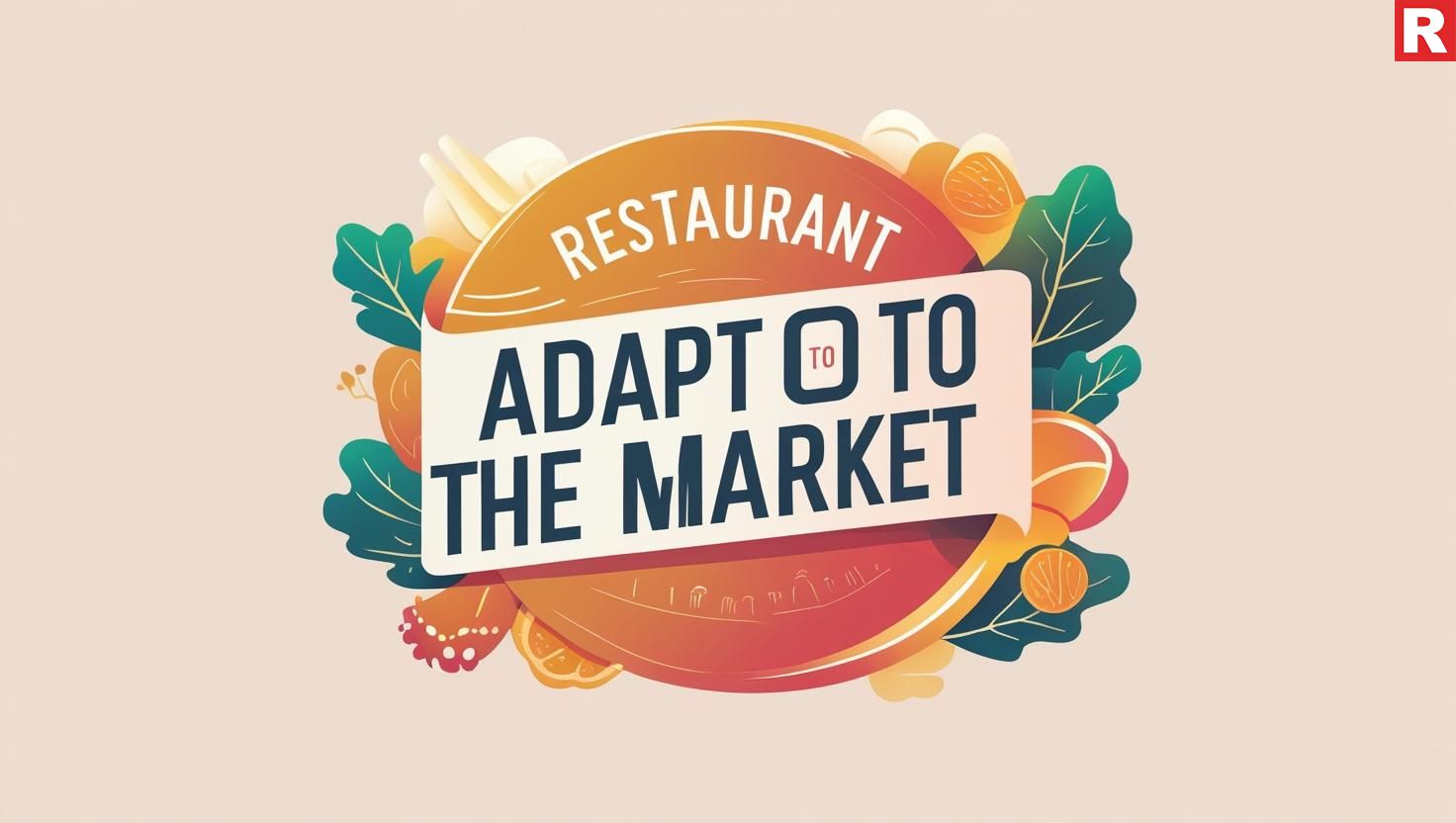
The restaurant industry is always evolving. To prevent failure, restaurants must adapt to changing consumer preferences, market trends, and local economic situations.
- Keep Up with Trends: Stay updated on the newest culinary trends, dietary preferences (e.g., vegan, gluten-free), and dining habits in your area. Be willing to change your menu and offerings to satisfy changing demands.
- Monitor Competitors: Keep a watch on your competitors. Analyze their menus, pricing, marketing methods, and customer feedback to uncover possibilities and risks.
- Embrace Digital Presence: In today's digital age, a strong online presence is essential. Invest in a decent website, actively participate on social media platforms that match your target demographic, and explore online advertising.
- Offer Delivery and Takeaway: Broaden your reach by providing convenient delivery and takeaway services. Partner with local delivery platforms or start your own delivery business.
- Change When Necessary: Be prepared to modify your business model as needed. This could include modifying your menu, service manner, or even looking at additional revenue streams such as catering or meal packages.
- Community Engagement: Take part in local activities and initiatives to raise brand awareness and develop positive relationships with the community.
5. Manage External Factors
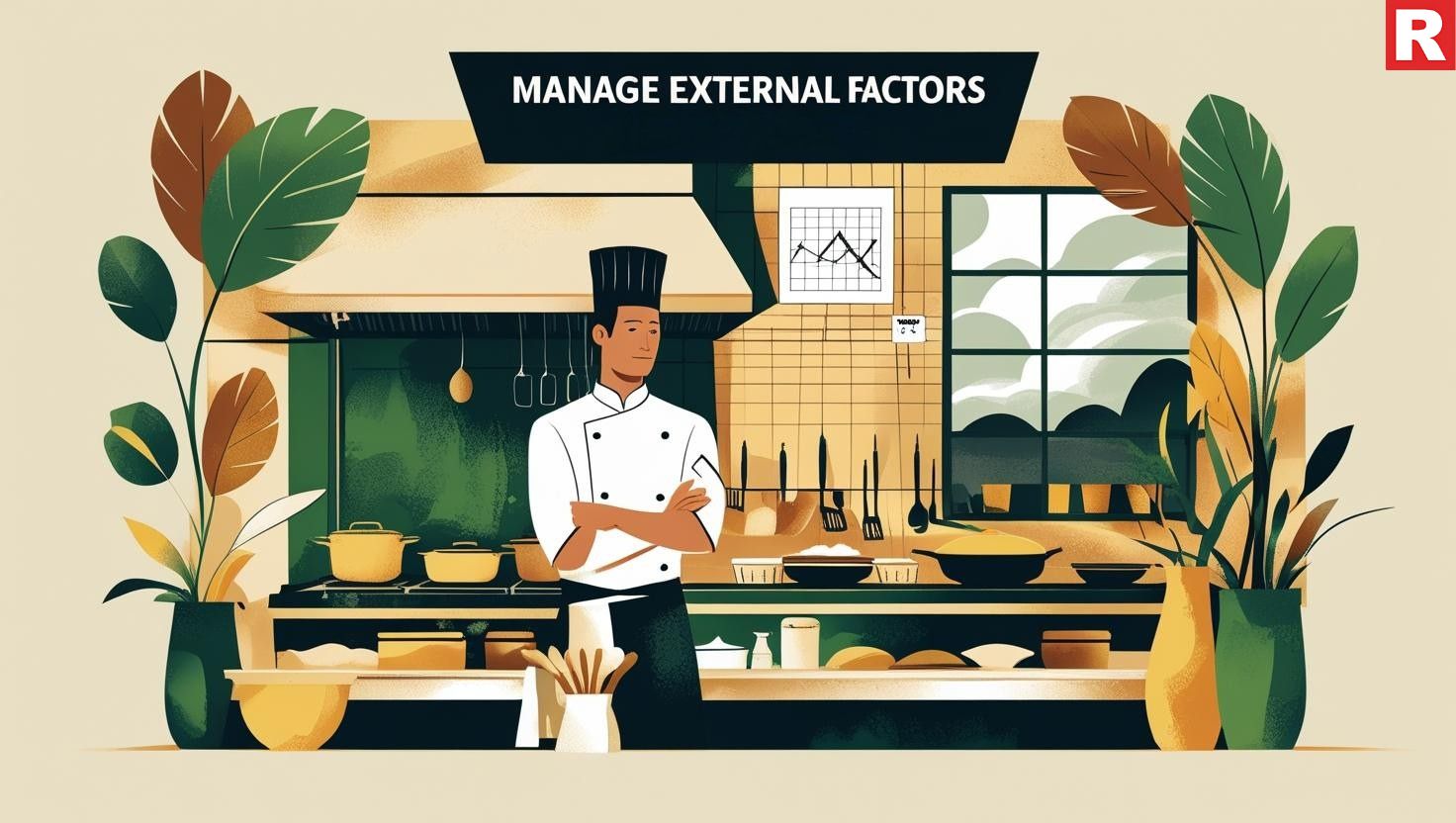
While you have control over many areas of your restaurant, external variables such as economic crises, supply chain disruptions, and changes in regulations can present major problems.
- Develop Strong Supplier Relationships: Establish strong relationships with dependable local suppliers to assure a steady supply of high-quality ingredients and possibly negotiate lower prices.
- Stay Up-to-Date on Standards: Keep track of any changes to food safety standards, licensing requirements, and labor laws in India.
- Create Backup Plans: Prepare for possible disruptions like supply shortages, equipment failures, or unanticipated economic downturns. Have backup measures in place to reduce the impact on your business.
- Seek Expert Assistance: Do not be afraid to seek assistance from experienced restaurant consultants, industry groups, or mentors who may offer useful insights and information.
Check out: 121 Coffee Quotes and Captions
How to Find Areas That Can Have Faults
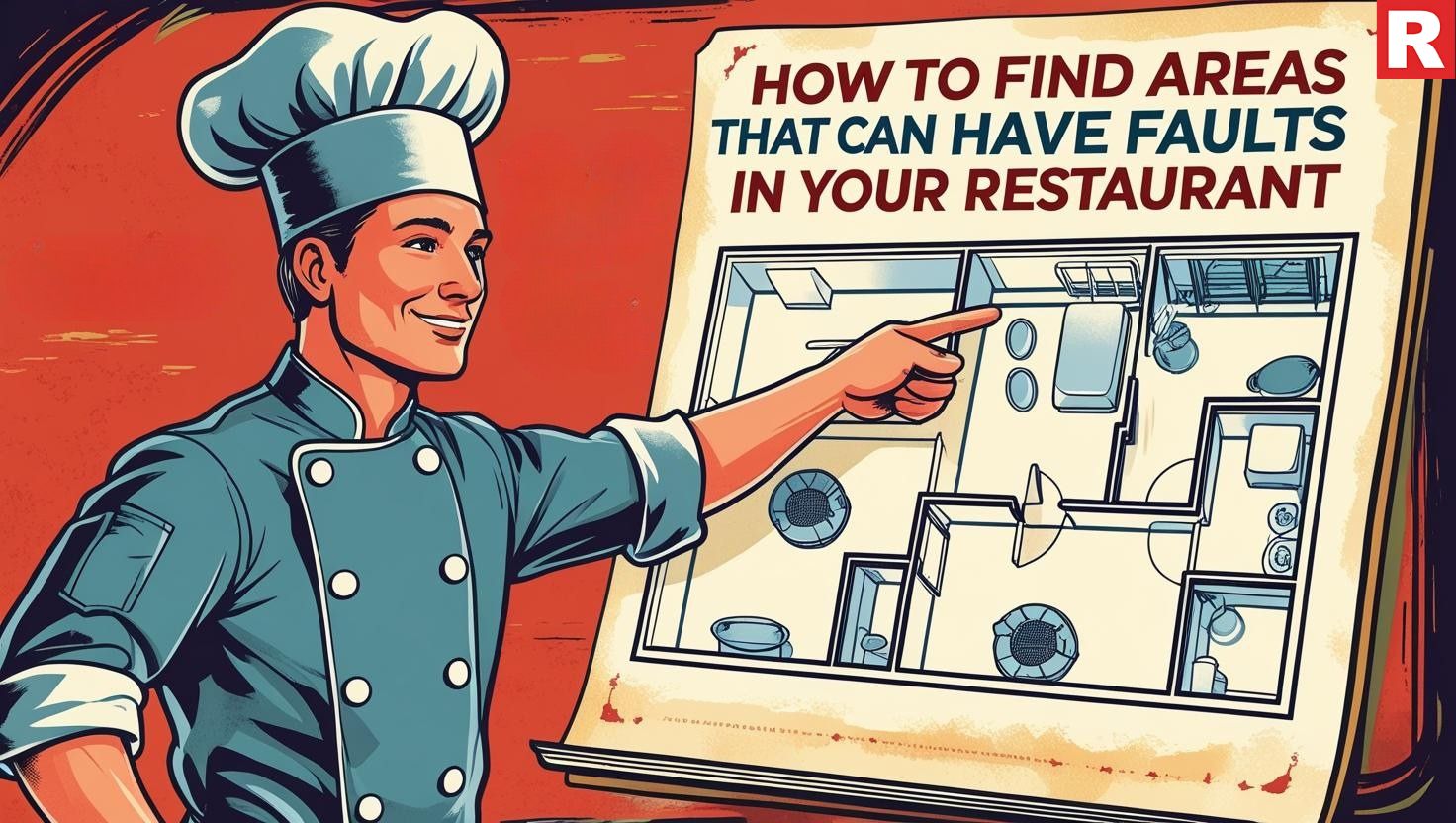
To create a solution to a problem, you first need to know how to find where the problem is. Similarly, finding the key area where the problem lies in a restaurant is necessary. To do this, the restaurateur must look at the overall data of different sectors of restaurant operations.
Financial Health
Budget vs. Reality: An error occurs when your actual income and expenses are not comparable to your budget.
High COGS: A continuously high Cost of Goods Sold (COGS) suggests problems with pricing, inventory management, or waste.
Negative funds Flow: A consistent lack of funds to pay bills, even if you are profitable on paper, indicates a serious fault in financial management.
Customer Feedback
Negative Reviews: A trend of poor internet reviews about service, food quality, or ambiance points to particular areas of failure.
Low Loyalty: If your loyalty program isn't gaining momentum or you have a low proportion of regular consumers, it could indicate a problem with the whole customer experience.
Operational Issues
High Staff Turnover: An ongoing cycle of hiring and training employees indicates issues with management, the environment of work, or training.
Inconsistent Quality: When consumers claim differences in dish quality or service, it shows a problem with your Standard Operating Procedures (SOPs) or staff training.
Low Menu Profitability: A menu that includes many popular but low-profit products suggests a flaw in menu optimization.
Read this: How to open a pet-friendly restaurant in India
Crisis Avoided and Success Ensured
Protecting your restaurant business against failure demands a complete strategy that includes strong financial management, outstanding customer service, improved operations, market adaptability, and strategic management of external influences. By focusing on these important areas and constantly aiming for improvement, you can create a solid and thriving restaurant that not only survives but thrives in the dynamic and competitive culinary environment, assuring long-term success for your business.

No matter if it is a small street business or a big restaurant, everyone is looking to develop and expand their business. And what is a better way of doing that than turning your restaurant into a franchise? After all, no restaurateur will want to miss the opportunity to expand their business all over India. However, it is no easy feat to franchise your business in the food business of India.
Franchising is more than just creating a new branch; it's about duplicating your brand's DNA and allowing others to carry it on. It's a path that demands careful planning, a strong legal structure, and a dedication to building a network of partners. This detailed article will help you by providing you with the necessary steps for transforming your successful restaurant into a profitable restaurant franchise in India.
Read more: Top 10 Essential Technology Systems for any Restaurant
Which Restaurants Can Franchise Their Business?
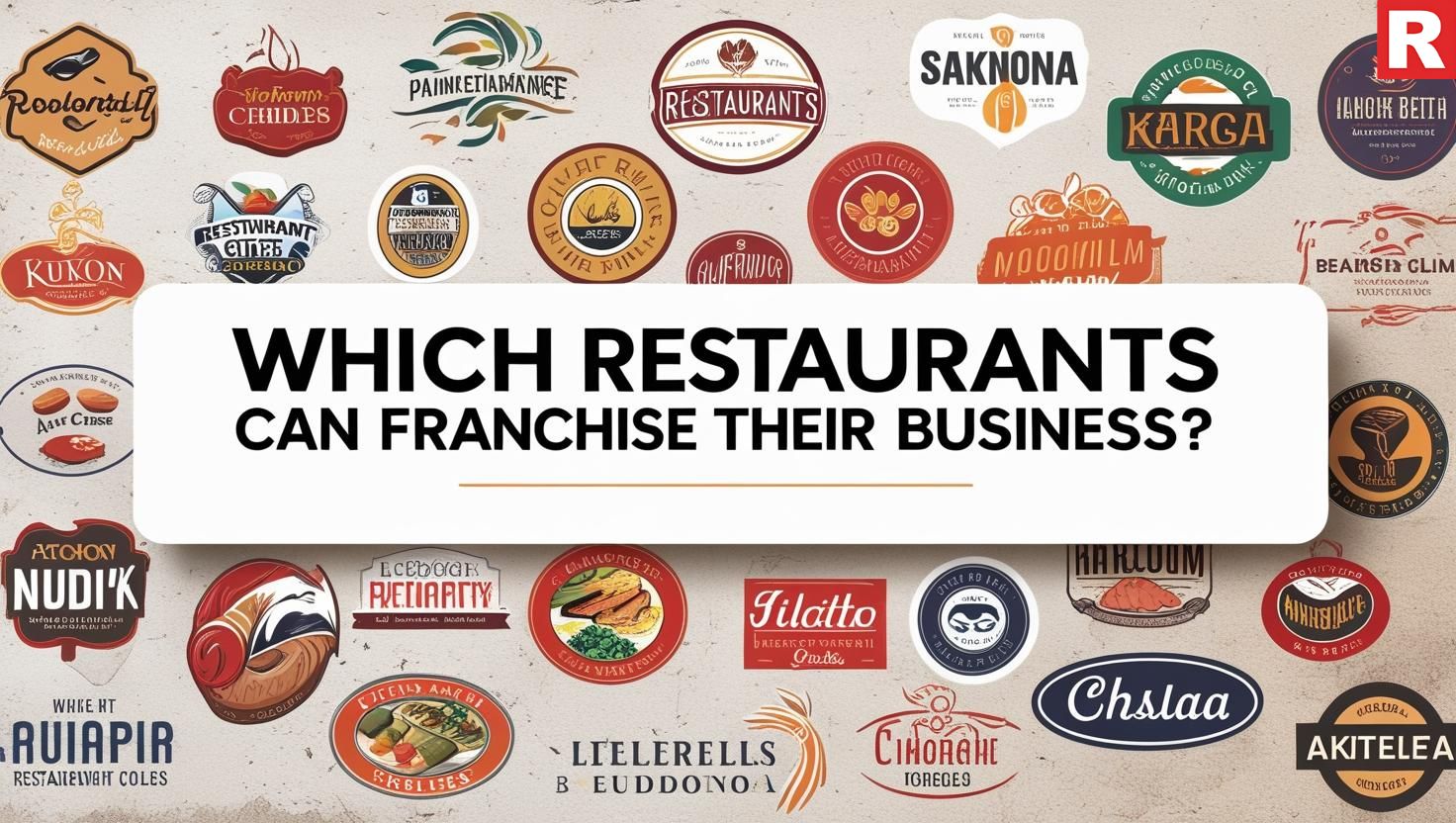
Before you look into the necessary steps required to franchise your business, you need to make sure that your restaurant is ready for the expansion.
Proven and Profitable Business Model: Only restaurants with a history of consistent profitability and success are suitable candidates. The business model must be long-lasting and proven over time.
Replicable Operations: The restaurant's operations, from recipes and food preparation to customer service, must be easily understood and copied by others. A complete operating handbook is required.
Strong, Protectable Brand: The brand identity, which includes the name, logo, and general concept, must be recognizable and legally protected by trademarks. This brand must be powerful enough to attract and keep clients across multiple locations.
Established processes: The restaurant should have well-defined processes for inventory management, employee training, and marketing. These procedures must be documented and prepared to be taught to franchisees.
Financial Stability: The parent firm (franchisor) must be financially secure and have the capacity to establish a franchise system and provide continuing assistance and training to franchisees.
Why You Should Franchise Your Business
- Rapid Expansion and Brand Growth: Unlike creating company-owned facilities, franchising allows you to rapidly expand your business and brand exposure. Franchisees provide funding and local management, allowing you to enter new areas throughout India without incurring huge debt.
- Increased Revenue Sources: Franchising provides various sources of revenue, including the initial franchise fee, continuous royalty payments (a percentage of the franchisee's sales), and sometimes a marketing fund charge. This results in a sustainable and expandable income model.
- Leverage Local Expertise: Because franchisees are typically from the local community, they have a greater awareness of the local market, customer preferences, and labor dynamics. This local knowledge is crucial for success and provides a major advantage over the competition.
- Lower Risk and Operational Burden: Franchising transfers financial and operational risk to the franchisee. They are in charge of day-to-day management, staffing, and local marketing, leaving you to concentrate on growing the overall brand and expanding your network.
- Motivated Partners: Franchisees have a direct interest in the success of their business. This personal commitment inspires people to work hard, uphold brand standards, and increase profitability, ultimately benefiting the entire franchise network.
Know more: Small Spaces, Big Impact: The Rise of Intimate Dining
The Process of Franchising Your Business

Step 1: Establish a Solid Foundation
Before you contemplate legal documentation or possible franchisees, be sure your business is stable and ready for duplication. Restaurant franchising is not for everyone; it is a business model based on stability, profitability, and brand strength.
1. Prove Your Business Model
The most critical factor is a successful, profitable, and sustainable business model. Your restaurant should have a track record of steady profitability, a high level of customer happiness, and an operational model that others can readily understand and implement. You must be able to show that your idea is not a fluke but rather a sustainable business.
2. Document Everything—The Operations Manual
This is the center of your franchise system. The operations handbook provides a detailed, step-by-step guide for running your restaurant. It should be an in-depth report that covers all areas of the firm, from A to Z. Consider it a roadmap for success that a new franchisee can follow. Your operations manual should contain:
- Standard Operating Processes (SOPs): They include detailed instructions for all tasks, including opening and closing processes, cleaning schedules, and customer service protocols.
- Recipe Books: They provide a detailed reference to each dish, including specific ingredient amounts, cooking processes, and presentation requirements.
- Supplier Information: A list of certified vendors for all ingredients and equipment to assure consistency.
- Marketing and HR Guidelines: Standards for advertising materials, social media policies, and hiring and training procedures.
3. Establish a Support Infrastructure
As the franchisor, your responsibilities evolve from restaurant operator to business instructor. You'll need a team and processes in place to help your franchisees. This includes:
- Franchise Team: A small group of people who work together to build, train, and maintain franchises.
- Centralized Systems: Technology solutions for POS, online ordering, and inventory management that can be implemented across all franchise sites.
Step 2: The Legal and Financial Blueprint
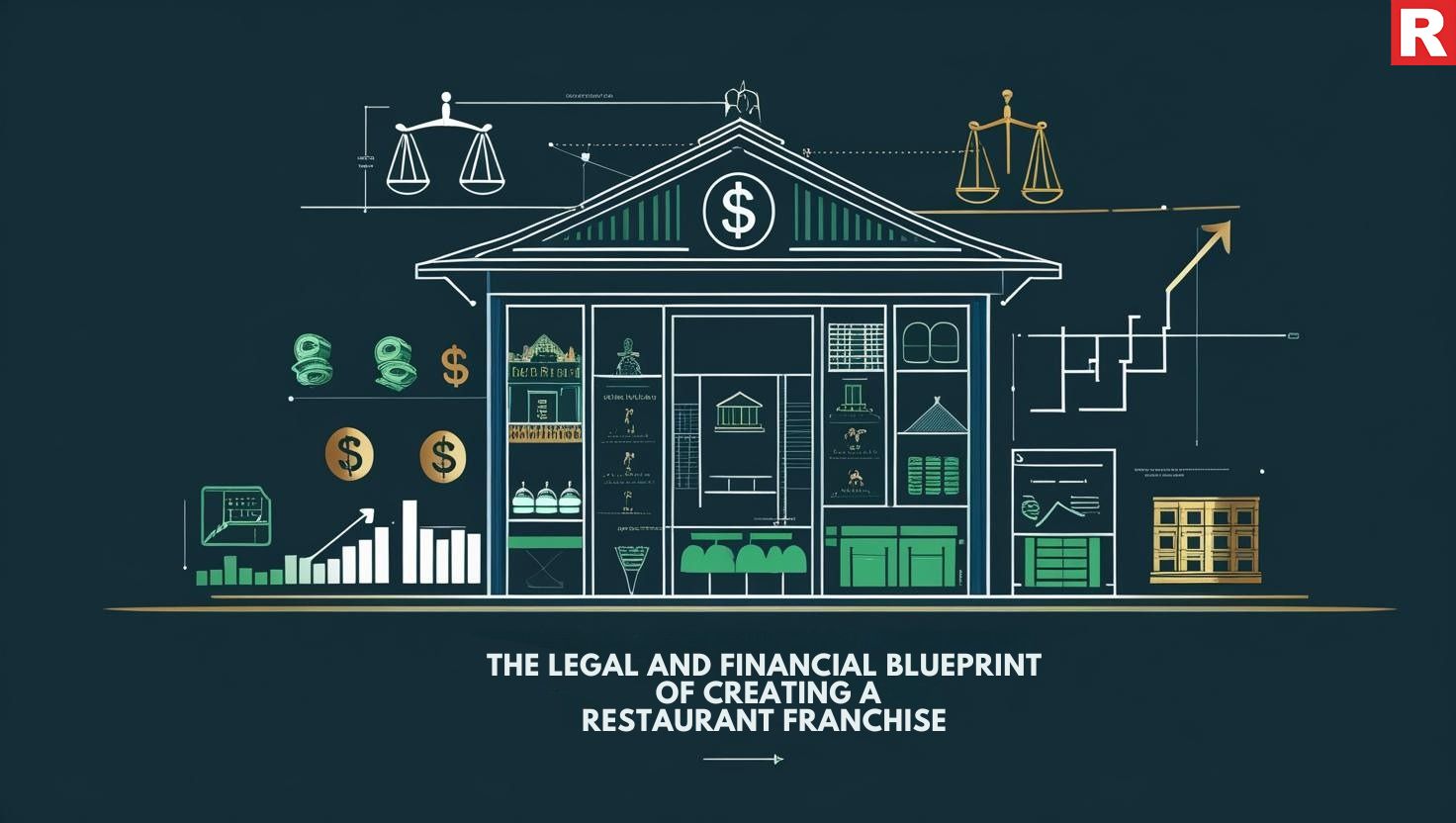
After you've established your business model and documented your brand and operations, the next stage is to formalize the franchise and establish a legal and financial framework.
1. Hire legal and financial experts
This is not a do-it-yourself project. You will need to appoint a legal counsel with experience in franchising in India, as well as a financial consultant or chartered accountant.
- Legal Counsel: Your lawyer will prepare the essential legal documents, including the franchise agreement, and ensure that you comply with all applicable Indian laws.
- Financial Consultant: Your accountant will assist you in developing a complete financial model for your franchise, including franchisee startup expenses, royalty fee structures, and expenditures associated with franchise network support.
2. The Franchise Agreement
The franchise agreement is a legally binding agreement between you, as the franchisor, and the franchisee. It is a crucial document describing both parties' rights and responsibilities. It should be thorough, including:
- Franchise fees: They include both the one-time initial franchise price and ongoing royalty payments (a proportion of the franchisee's sales).
Term of the Agreement: The duration of the franchise agreement and renewal options. - Territory: The geographic area in which the franchisee is licensed to operate.
- Training and Support: Details on the training program and the ongoing assistance you will provide.
- Compliance and Termination: The rules that the franchisee must follow and the circumstances under which the agreement may be terminated.
What's new: Using Gaming to Boost Your Restaurant Business: How does it work?
3. The Franchise Disclosure Document (FDD)
While there is no particular federal regulation requiring an FDD in India, establishing a full disclosure document is a best practice and ethical requirement. It offers potential franchisees all of the information they require to make an informed investment decision. Your FDD should include the following:
- Franchisor History: Learn about your company's leadership and history.
- Initial Investment: A complete breakdown of all charges that the franchisee should expect to incur.
- Earnings Claims: If you decide to make earnings claims (which requires care and legal advice), you must give a basis for those claims and be able to back them up.
4. Financial Modeling and Fee Structure
Carefully consider your fee structure to ensure that it is both appealing to franchisees and profitable for you as the franchisor.
- Initial Franchise Fee: The initial franchise fee covers training, support, and a share of the franchise development expenditures.
- Royalty Fees: This is the franchisor's regular revenue stream, which is usually a proportion of the franchisee's gross sales. It provides finances for continuous support, marketing, and system development.
- Marketing Fund: An optional but typical charge used to establish a central fund for national or regional marketing efforts.
Step 3: The Franchisee and System Development
The success of a franchise is strongly dependent on finding and supporting the right partners. First, you must identify your ideal franchisee profile, including the skills, expertise, and financial resources they require. Next, a thorough verification and application process is required. This process involves an application form, many interviews, and a financial analysis to ensure they are a good fit for your business and can afford the investment.
You must then create a detailed training plan. This should include intense initial training at a specific location, as well as on-site support during the new franchise's launch. This guarantees that the new partner has the knowledge and practical abilities to run the firm effectively from the start.
Finally, support does not end with the grand opening. You must build a robust ongoing support system for your franchisees. This includes regular field visits by a consultant, marketing materials and assistance, and operational support via a dedicated helpline. This ongoing support is essential for preserving brand consistency and guaranteeing the long-term success of your entire franchise network.
Check out: The Pros and Cons of Franchising Your Restaurant in India
How to Source Local Ingredients for Your Indian Restaurant Menu
Step 4: Launching and Growing Your Franchise Network
Creating and expanding a franchise network needs an effective approach to attracting and supporting new partners. First, market your franchise opportunity by building a dedicated area on your website, running targeted digital ads on social media, and attending franchise expos to locate eligible people. Treat your first few franchisees as pioneers; collaborate closely with them to improve your systems, and leverage their success stories as strong testimonials in future marketing efforts. As your network expands, be prepared to manage that growth by increasing your support crew and upgrading technologies such as CRM and franchise management software. Finally, maintain excellent communication with your franchisees by holding frequent meetings to develop a sense of community and keep the brand consistent.
Difficulties Faced When Franchising a Business

- Maintaining Consistency: The biggest difficulty is ensuring that all franchisees stick to the same quality, service, and brand standards. One awful location might have a negative impact on the brand's overall reputation.
- Finding the Right Partners: It is challenging to identify and evaluate franchisees that are not only financially sound but also devoted to your system and share your brand's values.
- Legal and financial costs: Franchising costs large upfront expenditures for legal agreements, financial modeling, and trademarks. Expert assistance is required to navigate this complexity and ensure regulatory compliance.
- Relationship Management: Disputes over royalty fees and marketing can strain the connection between the franchisor and franchisee. Managing these conflicts and providing consistent, high-quality help is a constant issue.
- Adapting to New Markets: A successful business strategy in one area may require adaptations in other markets with varied tastes, suppliers, and competitors, which can be a difficult obstacle to overcome.
Read this: How to open a pet-friendly restaurant in India
Conclusion
Franchising a restaurant is a challenging but rewarding journey. It is a method to not only expand your business but also leave a legacy of flavor and businesses. By meticulously laying a solid foundation, developing a sound legal and financial framework, identifying the right partners, and providing unwavering support, your successful restaurant can grow from a local favorite to a thriving restaurant franchise that leaves its mark on India's culinary map. The journey is difficult, but the outcome is a vast network of profitable, brand-loyal businesses, which is a testament to your goals and hard work.

A good restaurant doesn’t just provide good food, but it also gives an unforgettable experience to the customers. In this competitive market, where restaurants with different themes keep popping up every now and then, it has become difficult to grasp the customer’s attention. If you are a restaurateur who wants to draw in more customers, then you need to make your restaurant a place for fun and enjoyment. One such way is to incorporate gaming into your restaurant.
As we know, game centers and online gaming have already become popular among the newer generation of people. Customers like to enjoy themselves with games and then go to a food center during their outing. So, how about combining these two and creating an establishment that gives your customers a memorable experience and also good food? But to make it possible, you, as the restaurateur, need to make some changes to your current or to-be restaurant. In this article, we will be discussing the ways gaming can help boost your restaurant business and bring more revenue, ultimately leading to the success of your business.
Read more: Tandoori Raan: The Royal Leg of Lamb That Is Taking Over Modern Menus
Why Incorporate Games Into the Restaurant
Before we get into how to "gamify" your restaurant, let's first figure out why introducing games into your business is such a successful strategy.
- Attracting a Wider Audience: Games appeal to a diverse range of people, from families with children and students to young professionals and groups of friends seeking a good time. This can greatly increase your prospective consumer base.
- Creating a One-of-a-Kind Experience: In a competitive market, offering a one-of-a-kind entertainment aspect, such as games, distinguishes your restaurant. This unforgettable experience promotes favorable word-of-mouth and social media sharing in the community.
- Encouraging Longer Stays and Increased Spending: When guests play a game, they are more likely to stay at your restaurant and order more food and drinks. This translates immediately into increased income per table.
- Increasing Social Interaction and a Vibrant Ambiance: Games, particularly those played in groups, promote interaction and create a vibrant and delightful ambiance in your restaurant, making it a popular social destination in your area.
- Driving Repeat Business and Loyalty: A positive and engaging experience encourages consumers to return to your restaurant, knowing they can have both great food and a good time. This increases customer satisfaction and encourages repeat business.
- Generating Social Media Buzz: Unique gaming elements and interesting customer interactions around games make great content for your social media platforms, gaining attention and appealing to others to visit.
Games as Ambiance and Wait-Time Fillers

These are the two things where small board games help a lot. Usually, after ordering a dish off the menu, customers have to wait a certain time till they get their food. To make sure the customers are not bored during this time, it is best to keep board games at hand so that people can enjoy themselves before they enjoy the food. This way, they would not even notice the wait time, even if their food is a little late. Including board games in your restaurant also creates a certain ambiance in your restaurant. The idea is to design the interior so that the customers can get that homey feel of playing board games with their family or friends. Keep in mind that food is the main appeal of your restaurant, and gaming is a secondary factor. So make sure that the interior design complements the food, not takes its place.
Some Things to Keep in Mind
- Board Game Corners: Set aside a modest area for classic board games such as chess, Ludo, and Snakes & Ladders. This provides entertainment for clients who are waiting for their table or who want to unwind after their dinner.
- Card Games at Tables: Place decks of playing cards on tables for guests to enjoy while they wait for their food or socialize.
- Trivia sessions: Holding weekly or monthly sessions centered on general knowledge, pop culture, or even food-related topics can be a great idea to draw in customers. You can promote these sessions on your social media sites for people to know.
- Jigsaw Puzzles: Keep a big table in one area where it is visible but does not disrupt the other customers. Display giant jigsaw puzzles on a shared table for guests to work on together. This creates a casual and engaging environment.
- Themed Music and Soundscapes: Create themed playlists or soundscapes based on popular video games or board games to gradually enhance the environment.
Know more: From QSR Counter to Kitchen Shelf: Burgrill Launches OG Sauce Nationwide
How to Make Regular Customers
There is a chance that in the initial phase of your plan, you will start to see an increase in your customers per day. However, with time, this can gradually decrease if you do not properly manage your strategy of incorporating games in your restaurant. The reason for this is that at the start, when you promote the addition of games in your restaurant, people will become intrigued. They will want to experience such a thing once. However, after trying one time, they may not want to come back because they were just there for the games. To make sure such a thing does not happen, keep some things in mind—
- Do not focus too much on the game factor. It is just a way to draw customers in.
- Keep the quality of your food at its prime. It should be good enough so even if people do not find the games interesting, they may want to come back because of the food.
- Regularly host new gaming sessions and tell the visiting customers about them. This way, they might want to come to your next session.
- Keep introducing new games to your restaurant. People will get bored if they only get to play the same four kinds of games every time. Keep an eye on which games are popular on the internet.
What's new: Top 10 Essential Technology Systems for any Restaurant
Themed Food and Beverage
To improve the gaming experience, consider producing themed food and beverage items that connect with popular games:
Game-Themed Cocktails & Mocktails: Create beverages inspired by game characters, items, or environments.
Special Edition Menu Items: Provide limited-time menu items to go along with the launch of a new game or gaming event.
Food Challenges with Gaming Aspects: Design food challenges that include gaming aspects, such as timed eating competitions with a leaderboard or puzzle-solving components.
"Power-Up" Promotions: Provide discounts or freebies as "power-ups" for reaching specific scores in your restaurant's games.
Implementing Gaming in Your Restaurant: A Step-by-Step Guide
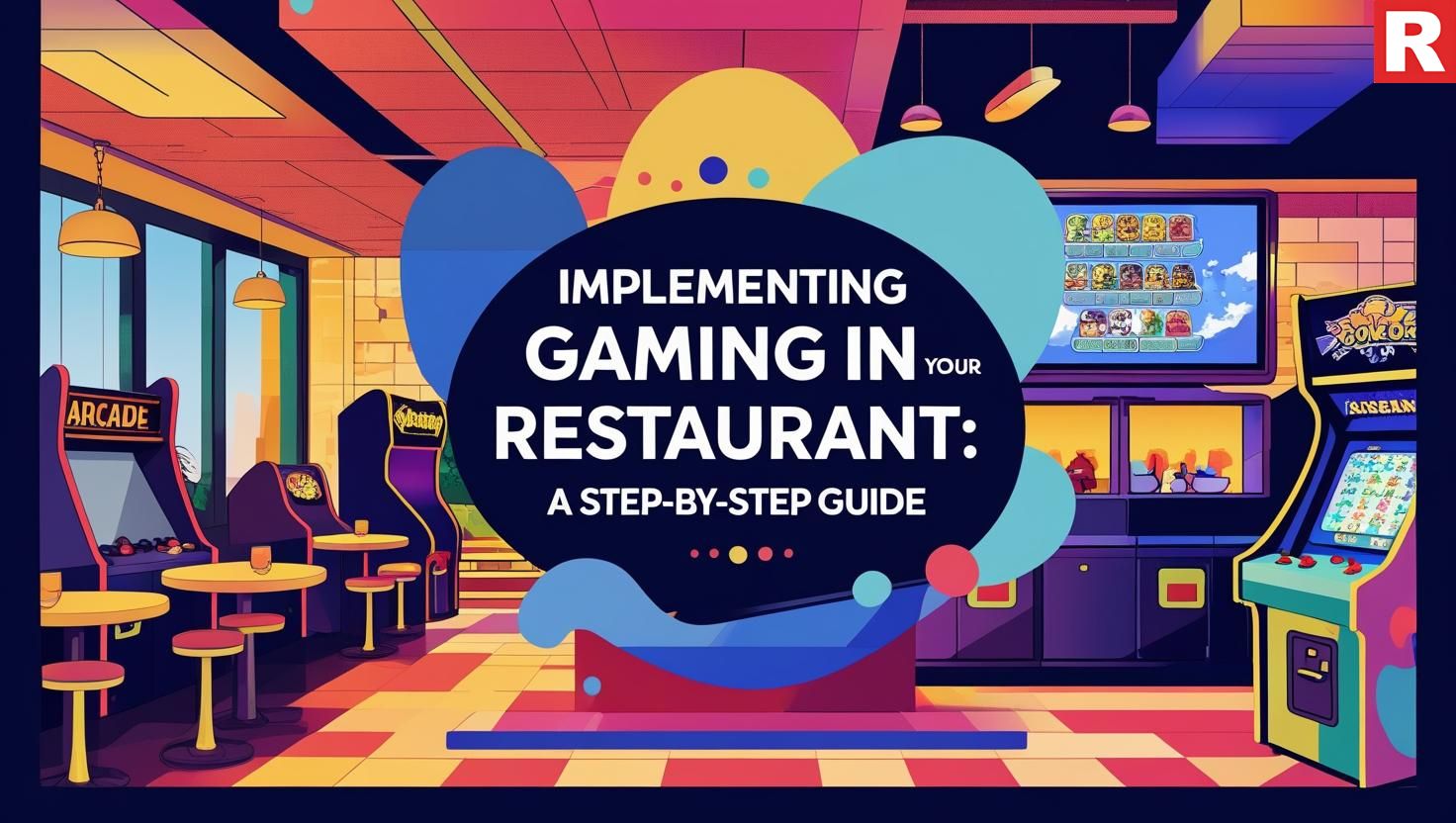
- Understand Your Target Audience: Evaluate which types of games will appeal to your current and desired consumer base.
- Start small and test: Begin with a few easy and low-cost gaming choices to evaluate customer interest and obtain feedback.
- Allocate Space Strategically: Set aside special spaces for gaming to prevent disturbing the dining experience of other guests.
- Set Explicit Rules and Guidelines: Create explicit gameplay rules to guarantee that everyone has a fair and pleasurable experience.
- Train Your Staff: Make sure your employees are informed about the games you offer and can assist customers with any queries or concerns.
- Promote Your Gaming Elements: Actively market your restaurant's gaming options via social media, your website, and in-house promotions.
- Gather Input and Repeat: Constantly collect customer input on your gaming choices and be open to adapting and introducing new games based on their preferences.
- Maintain and Update: Keep up with your games and technology regularly to guarantee that they are in good working order and provide fresh material.
Check out: Small Spaces, Big Impact: The Rise of Intimate Dining
How to open a pet-friendly restaurant in India
Kinds of Games to Put in Your Restaurant
Simple Games for a Fun Vibe: These are simple to implement and ideal for keeping clients entertained while they wait. You can organize board games like Chess or Ludo, card games at the tables, or even a trivia night. A large jigsaw puzzle that everyone can work on is also an excellent idea.
Games to Make It an Event: These games are a larger part of the fun and require a dedicated venue. You might have classic arcade games like Pac-Man, set up video game consoles for friends to play, or even utilize a projector to show games directly on the tables or walls. Giant versions of games such as Jenga are also popular.
High-Tech Games for a Cool Experience: These games make use of cutting-edge technology to provide clients with an unforgettable experience. Consider phone games that use augmented reality (AR) to make objects appear on your table, tables with built-in touchscreens for games, or a tiny VR area for people to play. You may also collaborate with mobile games to provide customer benefits.
Read this: 10 Shocking Ways Restaurants Repurpose Leftover Food
Conclusion
Incorporating gaming into your restaurant is a creative and interesting way to attract new guests, improve the eating experience, develop community, and increase profitability. Whether you choose subtle board game areas or immersive virtual reality experiences, strategically combining games with delicious food can help you create a one-of-a-kind destination that will keep people coming back. Understanding your customer base, starting small, and consistently innovating will help you elevate your business and carve out a winning spot in the competitive food scene.

Pet owners in India are proud pet parents who adore their animals and treat them as if they were their children. That's why they wish to engage in various bonding activities with their cherished pets. One of them is dining out with their pets. Traditionally, pets were prohibited in most public areas, including restaurants. However, as the modern era progresses, so does the desire for pet-friendly establishments. For ambitious restaurateurs, opening a pet-friendly restaurant presents a unique and intriguing opportunity to enter this rapidly growing industry.
However, allowing pets into your dining area requires careful planning, respect for regulations, and a solid understanding of both pet and owner requirements. This entire article will guide you to effectively open a pet-friendly restaurant, focusing on the specific issues and legislation that ensure a great experience for all your customers, two- and four-legged alike.
Read more: What Type of Water Do Restaurants Prefer to Serve?
Why Consider Opening a Pet-Friendly Restaurant?
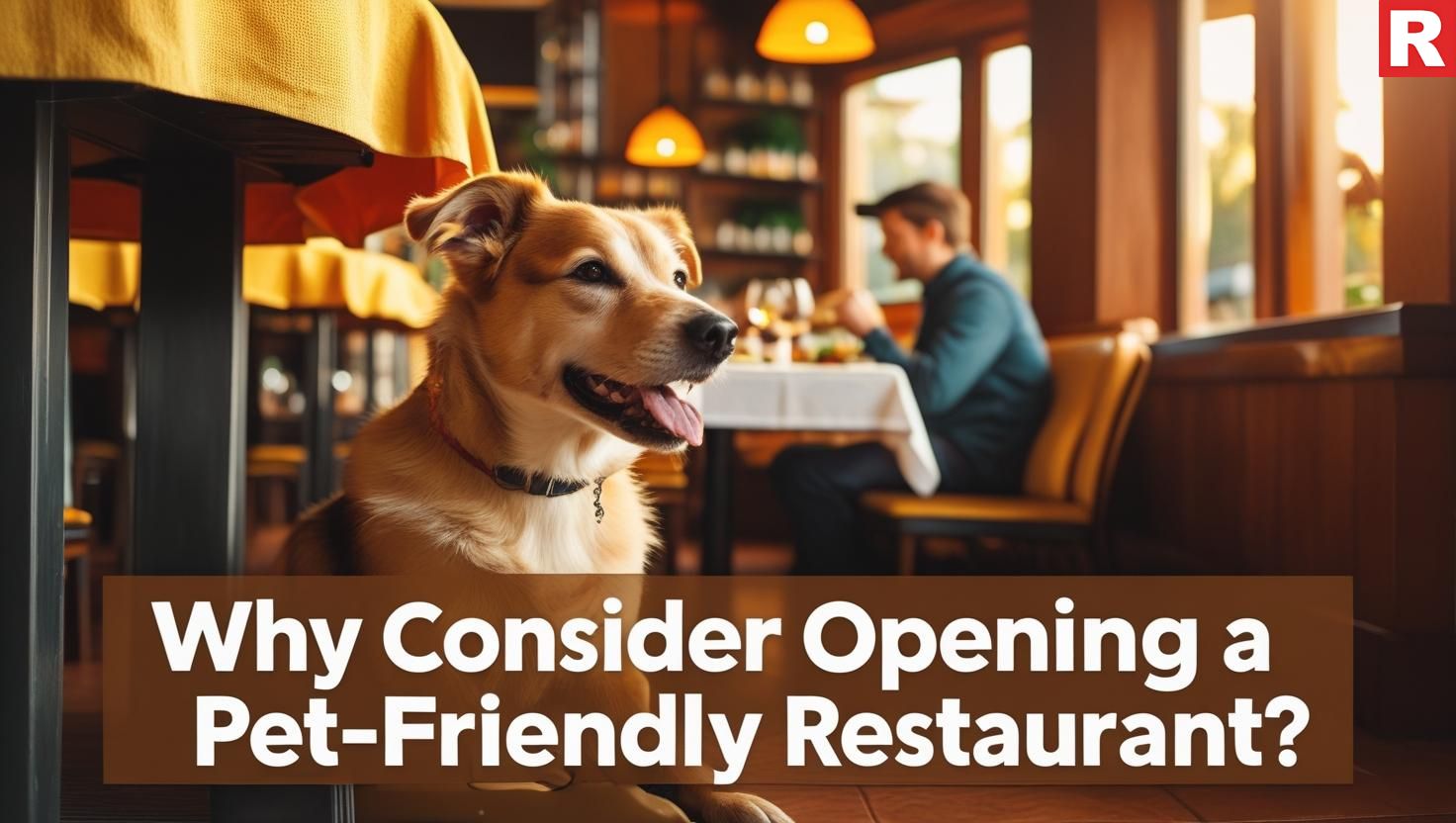
There must be a question at the back of your mind about why we should even open a pet-friendly restaurant. Because having pets in a public setting already looks like an invitation to disaster. However, many reasons can help you understand their appeal.
1. Tapping into a Growing and Niche Market
India's pet population is quickly growing, and pet owners are becoming more interested in experiences to share with their furry pets. By launching a pet-friendly restaurant, you are catering to a committed and overlooked customer base. This quickly differentiates you from the competition and attracts a loyal client base who will choose your restaurant solely because pets are welcome.
2. Increased Revenue and Customer Loyalty
Many pet owners see their animals as members of the family and are prepared to pay more for activities that they may do together. Longer stays, more frequent visits, and increased sums spent per table might result from pet-friendly policies. Additionally, satisfied pet owners are more likely to develop into brand ambassadors, spreading the word about their great experiences on social media and through word-of-mouth, which is a priceless form of free advertising.
3. Fostering a Unique Brand and Community
A restaurant that welcomes pets serves as a gathering spot for the community as well as a place to eat. You can organize pet-related activities, such as adoption events, pet birthday parties, or "Yappy Hour," to foster a sense of belonging and loyalty. This strategy creates a brand identity that is both original and attractive. This will appeal to a strong customer base and will also be hard to imitate.
4. Positive Marketing and Social Media Buzz
Pets are very popular on social media. Accepting them in your restaurant opens up countless possibilities for user-generated content. Customers will share pictures and videos of their pets having fun at your restaurant, creating genuine and interesting advertising for your restaurant. Your business becomes a popular destination for pet owners, which improves your reputation and online visibility.
5. Increased Traffic and Broader Appeal to Different Communities
People who might not otherwise have a place to eat out with their pets, such as families, couples, and individuals, are frequently drawn to restaurants that allow pets. This broadens the scope of prospective clients and may result in more people visiting during off-peak hours as pet owners look for special areas to relax with their animals.
Know more: Small Spaces, Big Impact: The Rise of Intimate Dining
Unique Selling Points

You must create unique selling points (USPs) that go beyond just allowing pets if you want to set your pet-friendly restaurant apart from the competition and build a loyal customer base. Here are some vital points to think about:
Selected Pet-Specific Products
Pet Menu: Don't limit yourself to water. Serve a small menu of nutritious, pet-safe snacks or meals, like dog biscuits made with whole foods or plain boiled chicken. This demonstrates that you are actively accommodating pets rather than merely tolerating them.
Special Features: Offer top-notch features that improve the experience for both pet and owner, such as cozy pet beds or mats, a special "dog parking" area with shade and tie-up hooks, and even a tiny, fenced-in space for off-leash play.
Themed and Interactive Events
"Yappy Hour": Plan a weekly or monthly event where pet owners may mingle and pets can play. Offer exceptional deals on human food and free pet treats.
Pet Birthday Parties: Provide a specific package for pet birthdays that includes a pet-safe cake, decorations, and a designated area for the party.
Pet Adoption Drives: Collaborate with a local animal shelter or non-governmental organization to organize adoption events. This not only increases foot traffic but also establishes a strong, good brand image as a community-minded company.
A Focus on Both Human and Pet Comfort
Thoughtful Design: Create a design that prioritizes the comfort of all guests. This includes non-slip flooring in pet areas, well-ventilated places, and tables that are far enough apart to fit pets without feeling cramped.
Dedicated workers: Have workers who have been specifically trained to be pet-friendly. They should be comfortable engaging with animals, understand your pet policy, and be able to help pet owners with their needs.
Clear Pet Policy: A well-defined and politely expressed pet policy assures everyone's safety and comfort. It should specify leash policies, pet conduct, and specific locations, giving precise guidelines for all customers.
Community and Digital Engagement
Social Media Showcase: Consistently post photographs and videos of happy pets and their owners on your social media platforms with permission from the owners. Encourage customers to use a certain hashtag to be featured, which creates a sense of community and natural advertising.
Partnerships: Work with local pet groomers, trainers, and vets to give cross-promotions. For example, a customer who receives grooming services may receive a discount coupon for your restaurant.
Pet-Owner Loyalty Program: Create a loyalty program tailored to pet owners, offering incentives or discounts after a set number of visits with their pets.
Check out: 10 Smart & Sustainable Ways for Restaurants to Use Leftover Cooking Oil
10 Fastest-Growing Alcohol Brands in India’s HoReCa Sector
Opening a New Pet-Friendly Restaurant
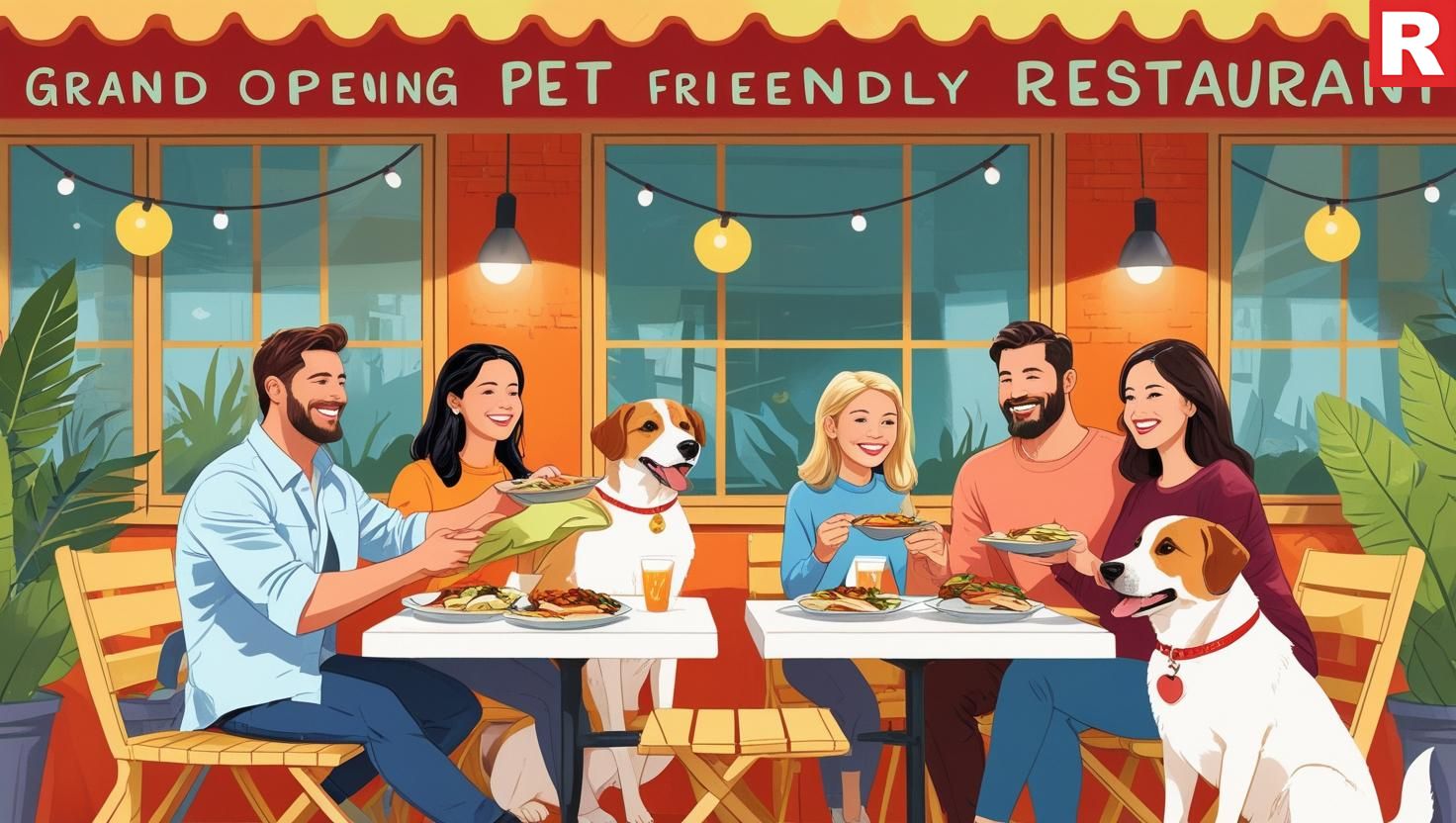
Advantages
- Ideal Layout and Design: You can plan the area with pets in mind from the very beginning. This includes utilizing long-lasting, easily cleaned materials from the start, assigning specific, separate entrances for pet owners, and strategically placing pet-friendly areas.
- Tailored Brand Identity: The pet-friendly idea can serve as the foundation for your restaurant's whole brand, from the name and logo to the menu and advertising, giving it a powerful and united identity.
- Simplified Legal Process: By presenting a well-thought-out operational model and layout that already takes into consideration the laws related to animals in food outlets, you can approach the local government and FSSAI authorities.
- Targeted Marketing: You may concentrate all of your marketing efforts on drawing in pet owners right away, creating a devoted following from the moment you open for business.
Key Procedures
- Extensive Market Research: Since you're just starting out, you must carry out thorough research to choose the ideal site, understand the local pet owner population, and estimate the competition.
- Certification First Design: To provide a clear division between the kitchen, food serving areas, and pet zones, the architectural plan must give top priority to FSSAI and local health regulations.
- Hiring and Training: Employing staff who are at ease and knowledgeable with animals is essential, and you can train them about your unique pet-handling and cleanliness procedures right away.
- New Permits and Licensing: The pet-friendly idea will be incorporated into your applications from the beginning, and the full licensing procedure will be managed.
Changing an Existing Restaurant to Be Pet-Friendly

Advantages
- Utilize Current Customer Base: By informing current customers of the change, you may be able to keep loyal customers while drawing in new ones. This may lessen the transition's financial impact.
- Cost-Effective: Adapting your current space rather than creating a new one from scratch may be more economical, depending on your current arrangement. You can make use of the equipment and infrastructure already in place.
- Reduced Risk: Since you are not launching a whole new company, the risk is typically smaller. You have a working business model, a successful location, and an established reputation, even if you're changing it.
Key Differences and Procedures
- Physical Renovation and Redesign: The largest problem is redesigning and renovating the physical space. To create separate, legal pet-friendly areas, you will need to physically redesign your area. This might include rearranging your outside seats, putting in new flooring, or constructing new walls. During this process, you should expect the restaurant to be momentarily closed.
- Managing Legal Changes: In order to update your current permits and licenses, you will need to get back in touch with the FSSAI and local authorities. Since you are altering an already-approved layout, this may be more complicated than creating a new application. You'll have to show how the updated design meets the necessary safety and hygienic requirements.
- Retraining and Management of Staff: It's possible that your current employees aren't used to dealing with pets. Complete training on new pet policies, hygienic practices, and incident management for pets will be required. The adjustment might make some employees uncomfortable.
- Marketing the Change: To inform your current client base and the larger pet-owning community about your new pet-friendly status, you'll need a carefully planned marketing strategy. You need to be clear about the modifications and the way the experience will change.
- Hygiene and Sanitation Challenges: Compared to your previous operations, you may need to establish new, strict cleaning procedures for the pet-friendly locations. Purchasing new cleaning materials and equipment is part of this.
What's new: How to Source Local Ingredients for Your Indian Restaurant Menu
Legal Process for Opening a Pet-Friendly Restaurant
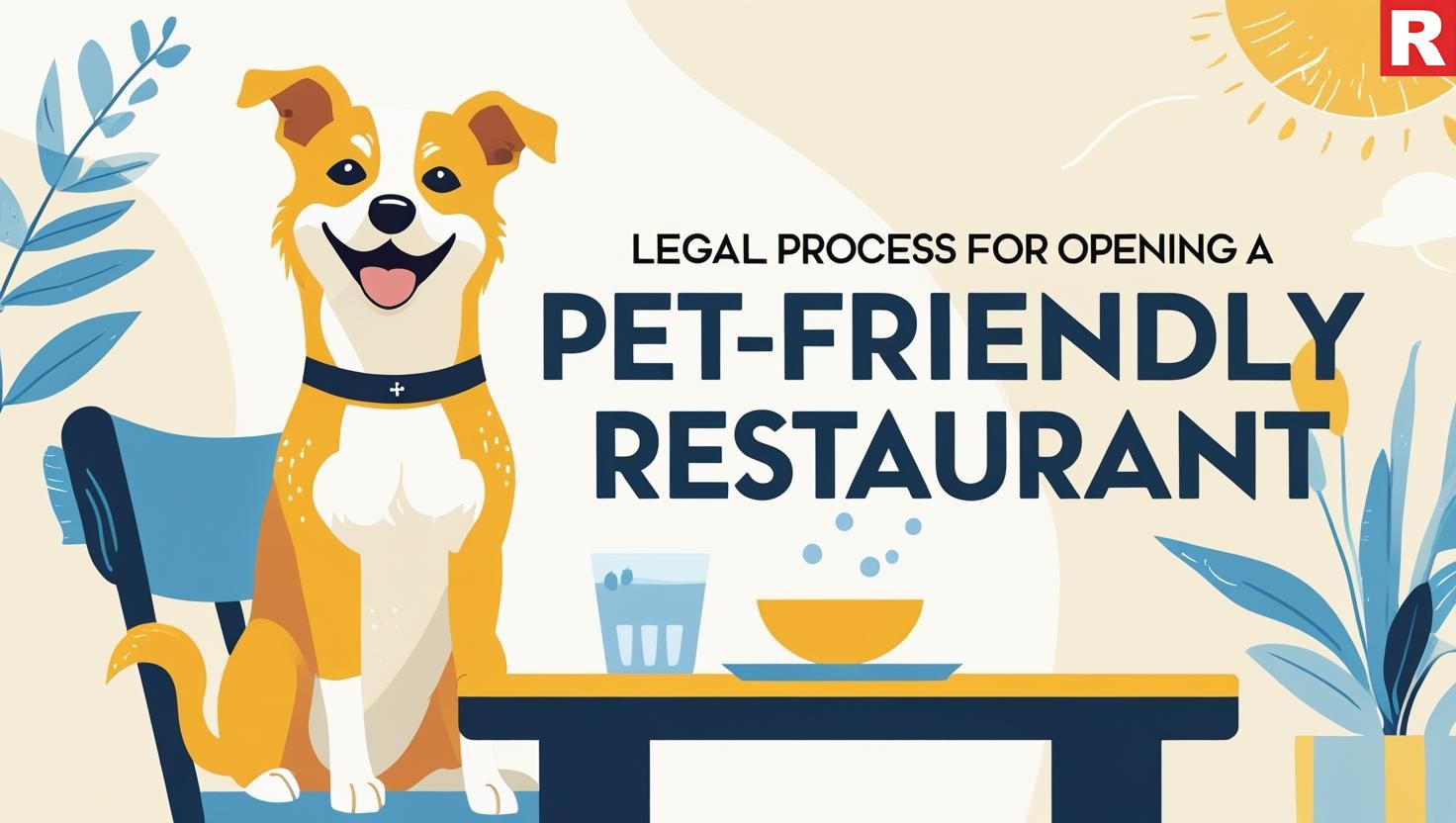
1. FSSAI Food Safety License
Initial Application: You must apply for a food safety license through the Food Safety and Standards Authority of India (FSSAI). This license is required for all food companies in the country.
Specifications for Pet-Friendly: When applying, please be prepared to offer information about your operational plan for welcoming pets. You may need to provide a layout plan that separates pet-friendly spaces from the kitchen and food-handling zones. This is a vital step for the FSSAI to approve your license.
2. Local Municipal Licenses
Trading License: You must obtain a trading license from the Municipal Corporation of your city. This license allows you to conduct business within the city.
Health and Sanitation Permits: The local health agency will most likely inspect your restaurant to verify that it satisfies hygiene standards. Your pet-friendly layout and sanitation routines will be critical components of this inspection.
3. Rethinking Your Layout and Infrastructure
Physical Separation: The legal and regulatory organizations will want a clear physical separation between the pet-friendly zone and the major food processing areas. This is not negotiable. An outside patio or a separate, well-ventilated inside area is frequently the simplest choice.
Durable and Cleanable Materials: To meet health and safety regulations, make sure the materials used in the pet zone, such as flooring and furniture, are long-lasting and easy to clean.
Read this: How to start a restaurant business?
4. Business Policies and Insurance
Written Pet Policy: You should create a written pet policy outlining all restrictions for pet owners, such as leash requirements, waste disposal, and owner liability. This is an important document for your business and legal protection.
Business Liability Insurance: Speak with an insurance agent to ensure that your coverage covers any potential occurrences involving pets, such as bites or property damage. This protects your restaurant from legal and financial liabilities.
A Pawsome Adventure
By carefully planning and taking measures, you can open a restaurant that will be beneficial for both you and your customers. While being the owner of a pet-friendly business sounds like a far-fetched plan, meticulously taking steps and keeping the above information in mind will help you gain a competitive advantage over others. Also, it will help you pave your way in an industry that is still growing and become the leader of this business, standing at the forefront.

While global cuisines and imported goods have their uses, there is an increasing and selective demand for authenticity, freshness, and sustainability. The farm-to-table movement, which was formerly considered an unusual notion, has now found a place in the Indian restaurant business. Learning how to obtain local ingredients for a restaurant menu is more than simply a trend for an ambitious restaurateur. It's a strategic move that may enhance your cuisine, develop a strong brand, and build a deeper connection with your community.
This detailed article will walk you through the steps of switching to a more localized supply chain. We will discuss the benefits, possibilities, and marketing opportunities of purchasing local products, with a focus on the Indian market's unique challenges and huge possibilities.
Read more: Small Spaces, Big Impact: The Rise of Intimate Dining
Why Should You Switch to Local Sourcing?

- Food Quality and Freshness: The most convincing factor is improved food quality. Local ingredients travel shorter distances, so they are fresher, more flavorful, and contain more nutrients. This enhances the cuisine and gives a superior product to customers.
- Strategic marketing and brand storytelling: Sourcing locally creates an interesting story about community support and sustainability. This story has the potential to be a key differentiator, attracting a fresh customer category that values authenticity and ethical business methods.
- Sustainability and Ethical Considerations: Using local ingredients decreases a restaurant's carbon footprint, which appeals to environmentally aware customers. This is a strong ethical decision that also functions as an effective marketing tool.
- Supply Chain Resilience and Control: Direct contacts with local farmers provide greater control and flexibility over the supply chain, minimizing exposure to interruptions. It ensures a more consistent supply of fresh, high-quality foods.
- Financial Advantages and Cost Management: By eliminating the middleman, a restaurant can negotiate better costs. A seasonal menu featuring local produce can help reduce food waste as well as enhance inventory management, resulting in higher profit margins.
The Benefits of Sourcing Local
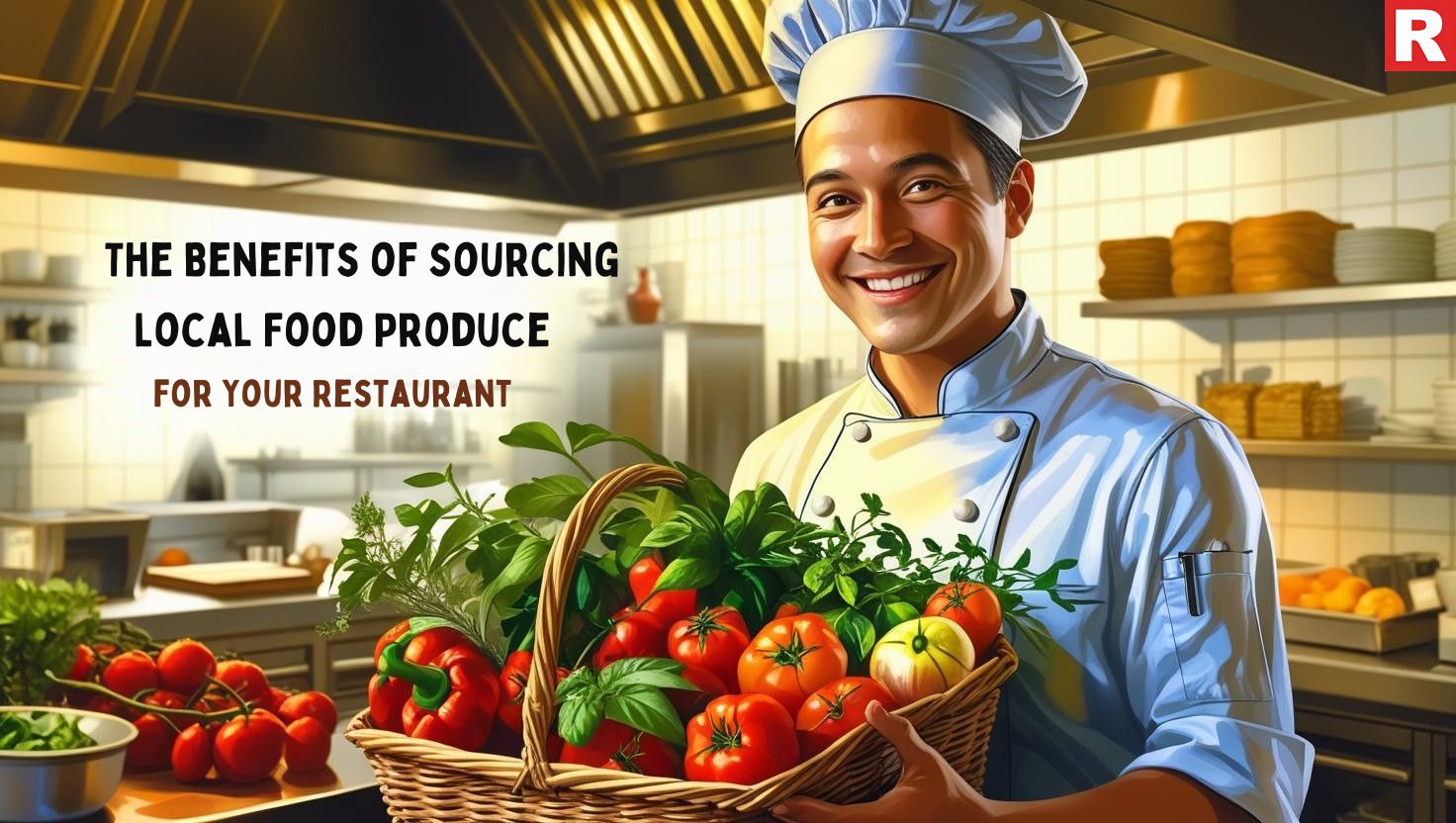
Before you begin the road of local sourcing, it's critical to grasp the numerous advantages that this strategy provides to your table and your business.
Superior freshness and flavor: This is the most immediate and significant advantage. Local ingredients can travel from the field to your kitchen in a matter of hours or days. Because of the short travel time, they are collected at their ideal ripeness, preserving all of their flavor, nutritional content, and rich textures. Your clients will notice the difference between a dish created with freshly selected veggies from a nearby farm and one that has traveled across the country.
Supporting the Local Economy: By collaborating with local farmers, craftspeople, and suppliers, you are investing directly in your neighborhood. This produces a strong and good brand story that connects with customers who are becoming more mindful of what they buy. For example, purchasing dairy from a local dairy farm or veggies from a nearby village directly benefits the local economy and promotes a sense of community pride.
Sustainability and Lower Environmental Impact: Purchasing ingredients locally greatly reduces your carbon impact. Fewer miles for food travel means less fuel needed for transportation, making your restaurant more sustainable and environmentally responsible. This is an ethical decision that also functions as a powerful marketing tool.
Menu Innovation and Authenticity: A localized supply chain requires you to offer a dynamic menu that changes with the seasons. This keeps your menu fresh and appealing to your clients. It also allows you to embrace and enjoy India's rich and different regional flavors, resulting in a unique and authentic eating experience that distinguishes you from the competition.
Know more: 10 Smart & Sustainable Ways for Restaurants to Use Leftover Cooking Oil
Understanding Your Needs and Local Landscape
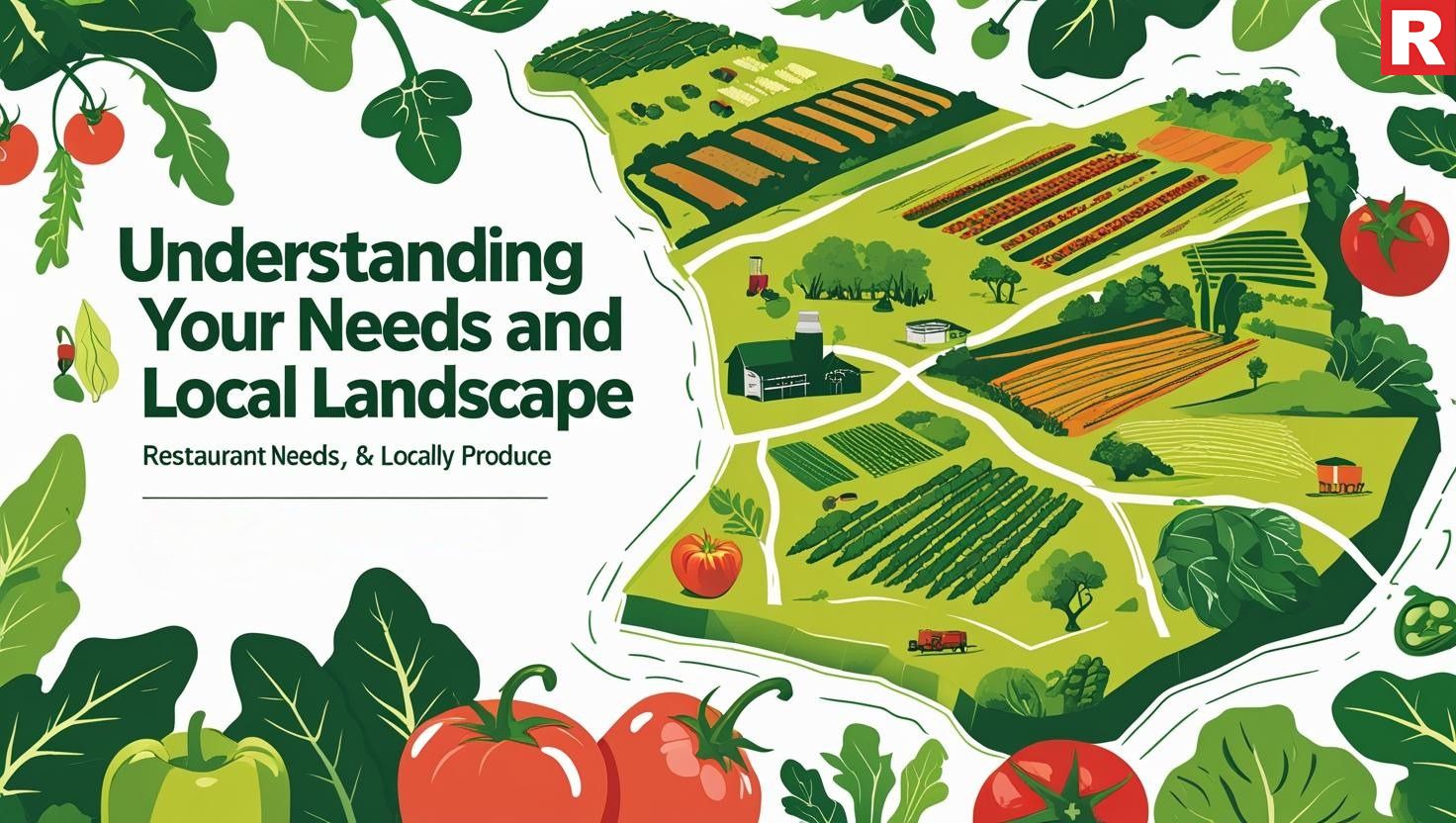
The next stage is to examine your menu and the agricultural landscape in your area to determine where to start your local sourcing adventure.
Analyze Your Menu for Sourcing Potential
Go through your menu and determine which ingredients can be purchased locally. Begin by focusing on a few important goods, such as seasonal vegetables, herbs, dairy products, or spices, and gradually expand your network as you gain confidence.
Embrace Seasonal Awareness
Seasons define the agricultural calendar in India. Your menu should match the natural cycle. For example, in Haryana, you might serve meals with seasonal vegetables such as cauliflower and peas in the winter and fresh gourds and mangoes in the summer. Educate your kitchen staff and customers on the benefits of seasonal menus.
Research Your Local Agricultural Terrain
This is where you will put your feet on the ground. Investigate local farmers' markets (mandis), agricultural organizations, and small-scale farms in and around your city. What are the main crops and goods grown in your region? Are there any local artists producing fresh paneer, ghee, or distinctive pickles?
Define Your Quality Standards
Before approaching a provider, be clear about your quality and consistency expectations. Are you seeking organic, pesticide-free produce? Do you require a particular size or quantity? Communicating your expectations upfront will save you time and help you discover the proper partners.
Check out: 10 Fastest-Growing Alcohol Brands in India’s HoReCa Sector
Finding and Assessing Your Suppliers

Once you've determined what you need, it's time to identify the right individuals to provide it. A sustainable local sourcing approach relies on strong supplier connections.
Farmers' Markets and Mandis
These are frequently the best places to start. They provide a direct line to small-scale farmers and the opportunity to view and touch fresh produce. This enables direct interaction and building connections. Individual farmers may face challenges in terms of volume and consistency, but they can be a terrific source for unique and high-quality seasonal products.
Direct Relationships with Farmers
The most real farm-to-table strategy requires establishing a direct, long-term relationship with a farmer. You can visit their farm, observe their methods firsthand, and even hire them to grow specific vegetables or herbs for your restaurant. This relationship provides a regular supply of high-quality ingredients while also allowing you to tell your customers an interesting origin story.
Local and Organic Distributors
These are an acceptable choice for restaurants that require higher volumes or a more reliable supply. Find distributors who specialize in local or organic produce. They can frequently connect you to a network of local farms and manage the logistics of sourcing from different areas.
Examining Your Vendors
When you identify potential vendors, ask plenty of questions. Inquire about their farming methods, pesticide use, how they handle large orders, logistics of shipment, and price. Ask if they can give accountability and follow the Food Safety and Standards Authority of India's (FSSAI) rules. This is a legal and safety requirement in India that should not be ignored.
What's new: How to start a restaurant business?
Managing Logistics and the Supply Chain

Sourcing locally requires a different level of logistical preparation than working with a large national distributor.
Building Trust
Communicate freely and frequently with your providers. Discuss your requirements, be adaptable when a crop becomes unavailable due to weather, and be open about your payment plan. A connection built on mutual trust and respect is the most durable model.
Proper Storage and Handling
Fresh, locally grown produce may have a shorter shelf life than traditional ingredients. Make sure your kitchen has the proper storage facilities to keep your food fresh. To reduce waste, train your team on how to handle delicate fruit properly.
The "Ugly" Produce Dilemma
Don't avoid defective vegetables for beauty purposes. "Ugly" produce frequently tastes just as delicious, if not better, and may often be purchased at a lower cost. This is an excellent approach to prevent food waste while saving money.
FSSAI and Traceability
Always guarantee that your suppliers, whether small-scale farmers or large distributors, are able to provide sufficient traceability paperwork. This implies they can confirm the source of their products, which is a mandatory requirement under the FSSAI requirements.
Read this: Small restaurants selling liquor cannot opt for GST
Marketing Your Local Sourcing Story
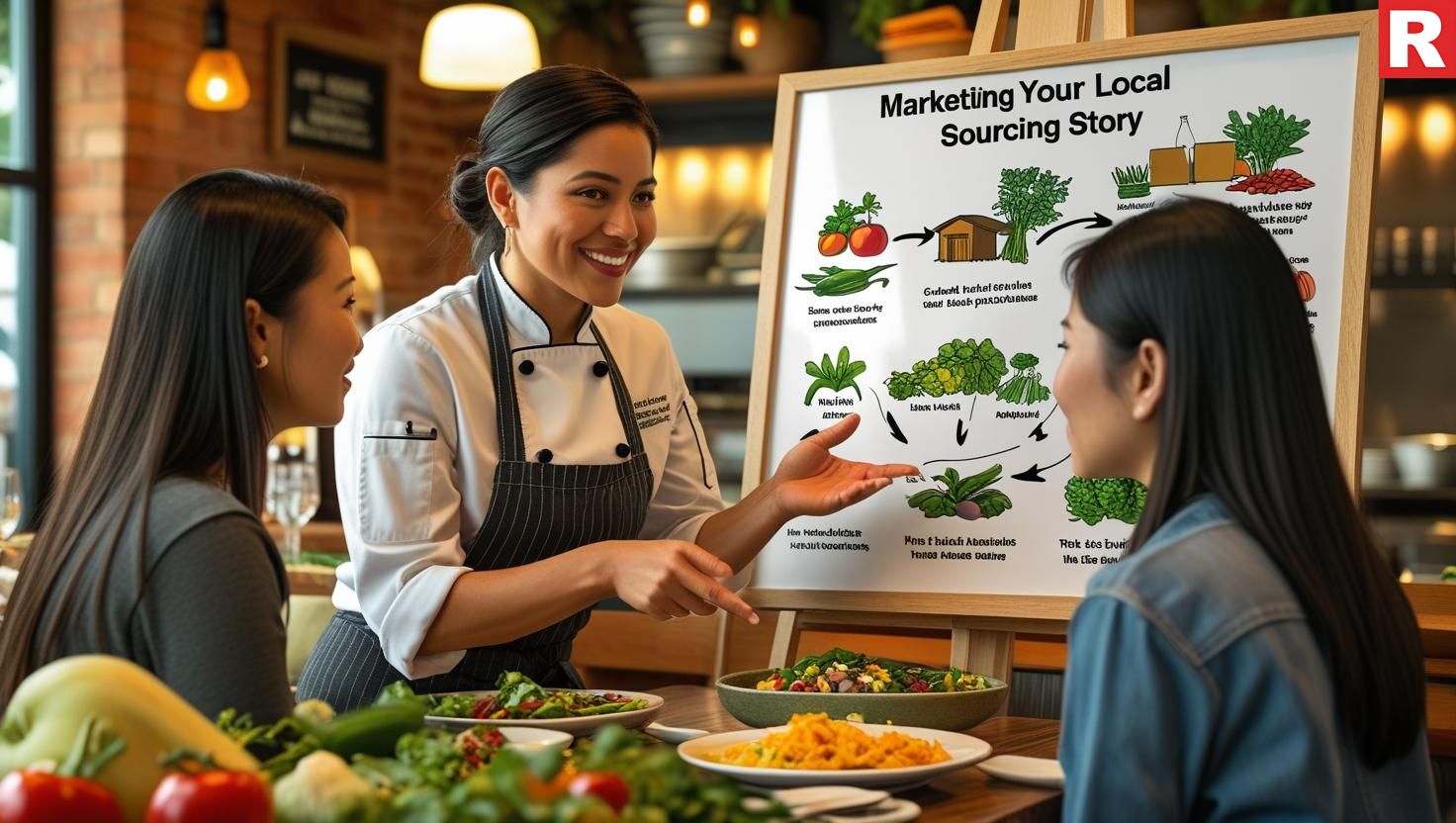
Your devotion to local sourcing is an effective marketing strategy. Do not keep it a secret.
Tell a Compelling Story
Inform your customers about where their food comes from. Include the names of the farms or farmers you collaborate with on your menu. For example, a dish could be labeled "Seasonal Greens from (Farmer's Name) Farm."
Promote Your Sourcing on Social Media
Take your customers on a virtual tour. Post photos and videos of your team visiting a farmers' market, engaging with farmers, and creating food using fresh produce. Visual storytelling is an excellent approach to increase authenticity and brand loyalty.
Staff Training and Engagement
Your employees are the last link in this chain. Ensure they understand your sourcing storytelling and can confidently tell customers where your ingredients come from. This makes the eating experience more personalized and memorable.
Conclusion
Sourcing local foods for your restaurant menu in India provides a unique combination of flavor, ethics, and authenticity. It is a business approach that not only produces outstanding cuisine but also establishes a durable, sustainable, and community-focused brand. You may successfully adopt the farm-to-table mindset by taking a step-by-step approach to research, supplier verification, and supply chain management. This trip, from your kitchen to the farmlands, is a powerful way to differentiate yourself in a competitive market while also providing your consumers with a tasty and deeply meaningful dining experience.

The vibrant food culture of India is not limited to casual sit-down restaurants. The growth of mobile restaurants, including food trucks, carts, and pop-up kitchens, has marked the beginning of a new era of culinary innovation. With their speed and unique appeal, these businesses have become local phenomena, with the appetizing aroma of sizzling spices attracting people from local areas and across the country. For a dedicated Indian restaurateur, establishing a loyal customer base is only the beginning. The next difficulty, and true measure of success, is determining how to transform that single mobile unit into a thriving, successful, and respected brand.
This article is a complete step-by-step guide intended to assist you in navigating this journey. We will go over the most important aspects of running a food truck business, from developing your fundamental skills and creating a strong brand to adopting a plan of action for development and financial growth. By following this road map, you can take your mobile restaurant from a beloved local staple to a sustainable business with a presence that extends far beyond your current operating area.
Read more: How to Handle Negative Online Reviews of Your Restaurant
Step 1: Solidifying Your Local Foundation

Before expanding your business, you must master the market you are already in. Your early success is the blueprint for your future growth. So, perfecting it is non-negotiable.
Master Your Menu and Operations: Consistency is the foundation of your business. Reduce your menu to a powerful selection of signature meals that can be prepared quickly within the limits of your mobile kitchen. The ingredients should be easily accessible and less time-consuming to prepare. For an Indian restaurant, this might mean polishing your biryani recipe or paneer tikka rolls to ensure they taste the same each time. Simplify your workflow to reduce client wait times, particularly during peak hours.
Prioritize Hygiene and Quality Control: In India's food industry, trust is essential. Implement and maintain the highest levels of hygiene and food safety. Your mobile unit's cleanliness should be perfect, and your employees should be well-versed in proper food handling procedures. Your reputation for quality will be an important selling point and generator of repeat business.
Navigate the Legal Landscape: The legal environment for mobile food operations in India is complex and varies greatly by state and municipality. Ensure that you have all of the appropriate permits and licenses for your unique location, whether you are operating in a market or on a street. Being ethical from the start will help you avoid future legal issues and fines.
Cultivate Your Local Following: Your initial client base is your most valuable asset. Engage with them directly, remember their names and orders, and ask for feedback. Develop solid relationships with the community at your frequent serving locations. As your business grows, this local affection will become your most powerful marketing tool. This will also help in free advertising by word-of-mouth of your mobile restaurant.
Step 2: Brand Building and Digital Dominance
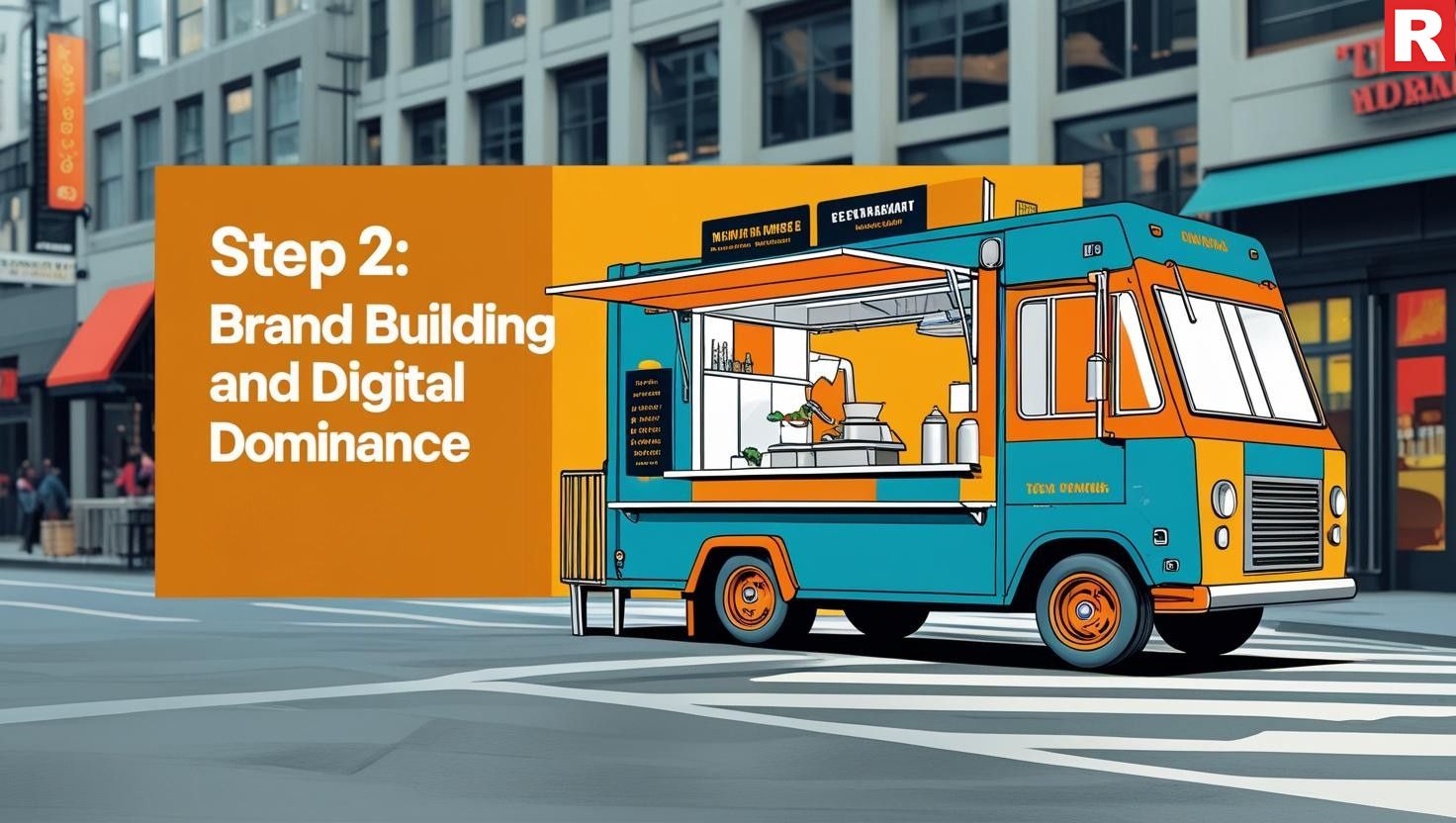
A truck-based restaurant's brand is what links your food to your customers' identity. It's why they chose your truck above a dozen others.
Create an Eye-Catching Visual Identity: Your food truck design serves as both an outlet and a billboard. Invest in a visually appealing logo, a memorable color palette, and clear, professional branding. Your brand identity should be reflected in everything, from your menus and packaging to your employees' clothing. Don’t forget to get your logo and design licensed.
Establish a Strong Social Media Presence: In India, social media platforms are the most direct and successful marketing mediums. Use Instagram, Facebook, and Twitter to showcase high-quality images and videos of your food, announce your daily locations and times, and tell the story of your company. Run surveys and contests to increase engagement and make your fans feel like they're a part of your adventure.
Encourage and Manage Online Reviews: Your reputation exists online. Encourage satisfied consumers to post feedback on platforms such as Google and Zomato. More importantly, reply to all reviews, positive and negative, with professionalism and respect. Your answer to a complaint might show your dedication to quality and transform a negative into a positive.
Utilize Location-Based Technology: Use services such as Google Maps to make your mobile restaurant easily visible to others. Real-time location updates on social media ensure that clients know where to find you at all times. This is a simple yet critical step for a successful mobile restaurant in India. You can also post your timings on social media accounts to make it more easily accessible.
Know more: How to deal with Rude customers in a restaurant
Step 3: Financial Discipline and Profitability
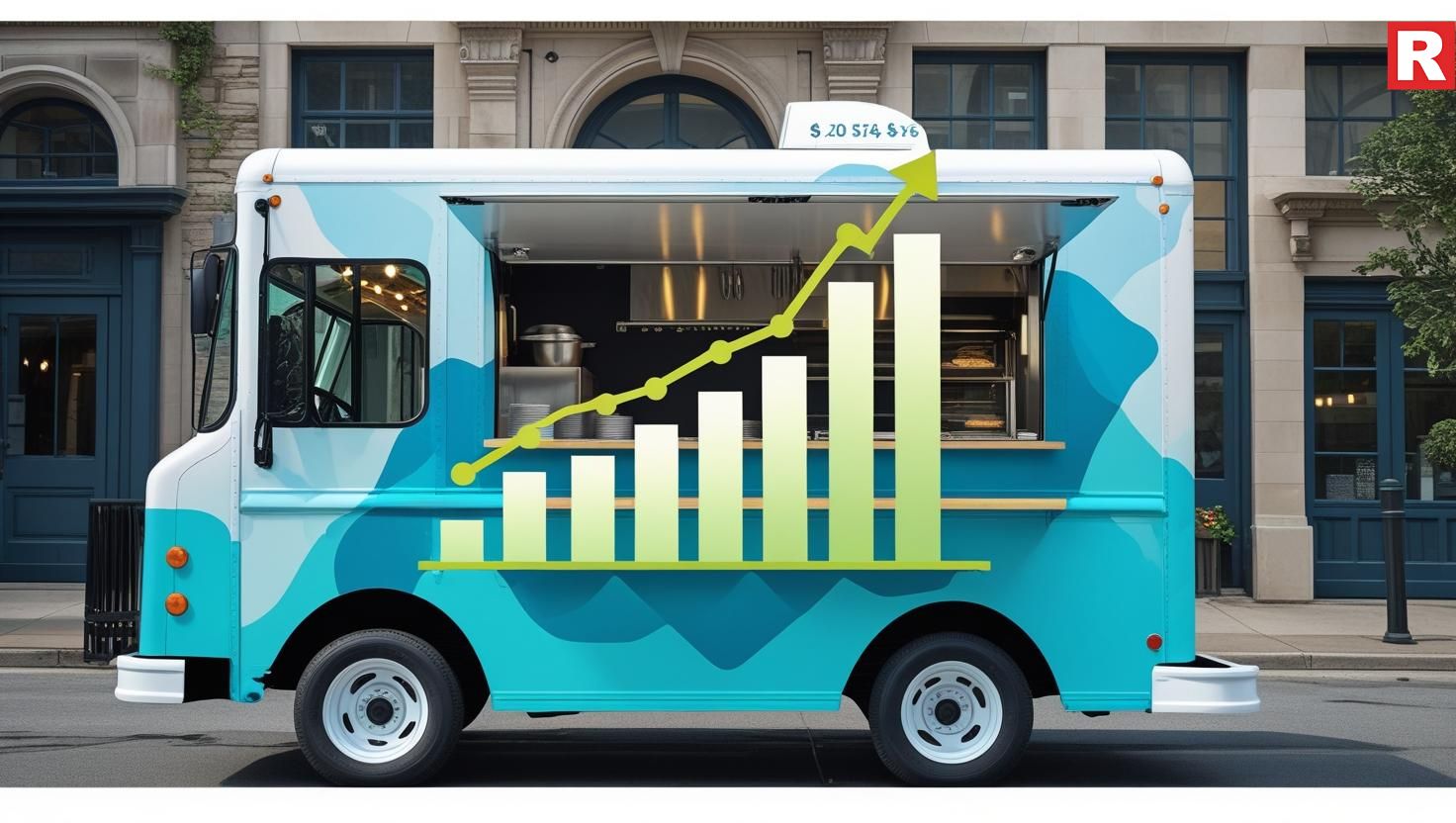
Growth is more than just sales; it is also about profit. To grow your firm, you must move beyond just measuring revenue to actively managing costs and expanding your income.
Master Your Finances: Keep detailed records of all expenses, including ingredients, fuel, labor, permits, maintenance, and marketing. Understanding your exact cost per dish and profit margins is critical to making sound business decisions. You can track this data more effectively with a dedicated POS system.
Strategic Pricing: This means setting prices that are competitive while also reflecting product quality and operational costs. Don't be hesitant to modify your pricing when your reputation and market demand improve. Keep a note of the initial cost of all ingredients that are needed for your menu items. Examine the pricing of other food trucks and local restaurants to figure out the correct balance.
Diversify Your Revenue Streams: Avoid relying entirely on walk-up sales. Promote your mobile restaurant for mobile catering in India. Secure contracts for business functions, private parties, weddings, and community gatherings. These larger, pre-booked events can dramatically increase income and are frequently more profitable than everyday operations.
Create a Financial Runway: As you expand, you will require capital. Begin setting aside a part of your revenues to fund future investments, such as a new food truck, an expanded kitchen, or a dedicated marketing campaign. This financial planning will reduce the risks associated with future expansion.
Check out: 9 Craft Alcohol Brands That Urban Indian Diners Can’t Get Enough Of
How Awards Can Drive Diners to Your Restaurant
Step 4: Strategic Expansion Opportunities
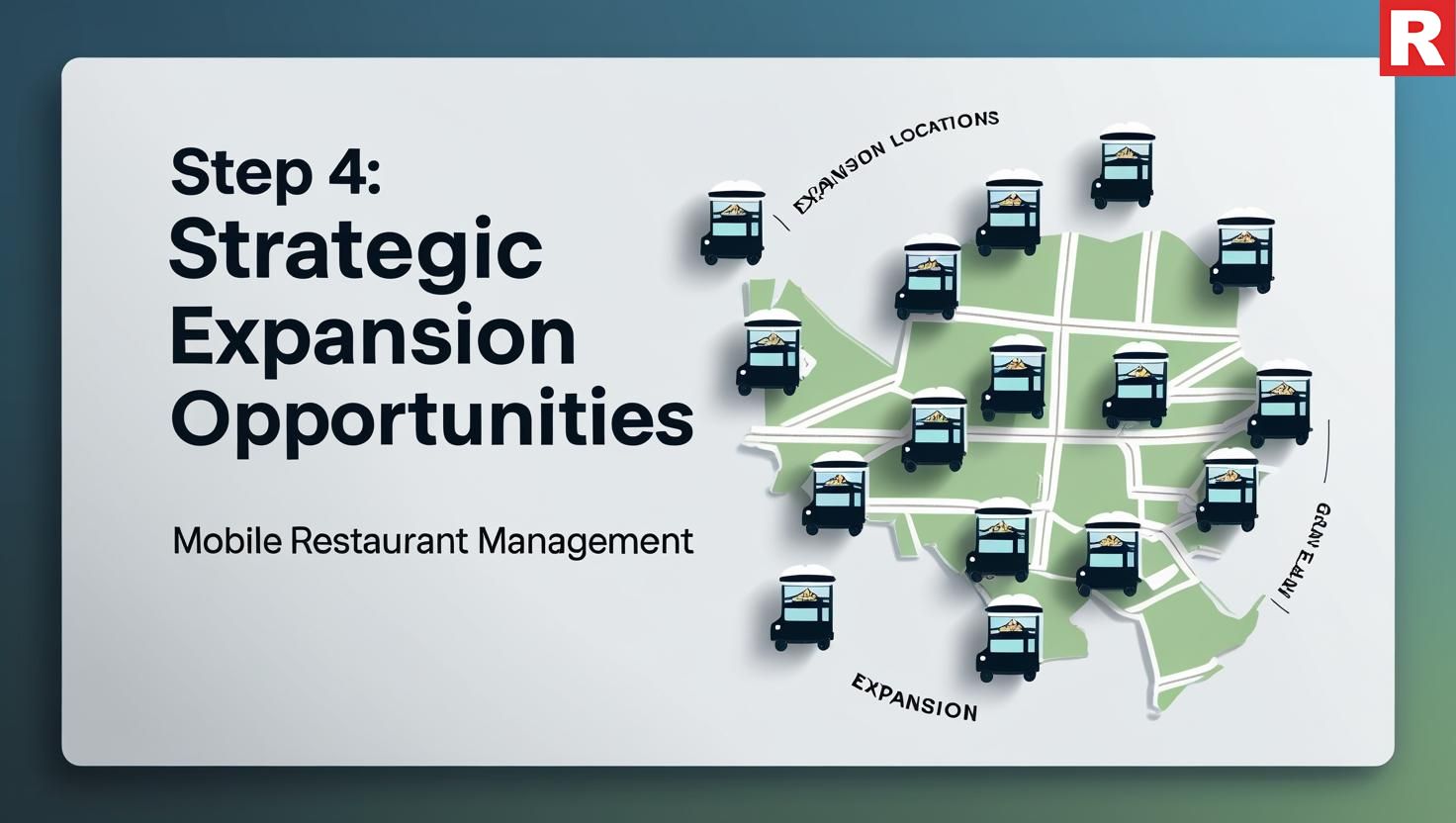
Once your local unit is running smoothly and profitably, you can explore expanding. This is where your growth strategy comes to life.
Add New Mobile Units: Expanding the number of your vehicles is the most direct road to growth. This allows you to serve several areas at once, increasing your market reach. This requires an enormous capital investment and a uniform operational structure. When introducing a new unit, make sure it is handled by a dependable, well-trained team member who can support your brand's standards.
Formalize Your Catering Business: If catering has become an important element of your company, formalize it. Create a separate catering menu, a clear price structure, and a marketing campaign specifically for this service. Hire a dedicated crew to handle catering logistics.
Investigate a Franchise Approach: If your brand is strong and your operating approach is highly structured, you might consider franchising a food truck to ambitious business owners in other cities. This is a low-cost option to expand your brand's footprint throughout India. However, it requires a strong legal structure, an extensive training program, and a dedication to supporting your franchisees.
Form Strategic Partnerships: Work with food parks, retail malls, and large corporate campuses to secure long-term, high-traffic positions. These collaborations can provide an uninterrupted flow of business and boost your brand's reputation.
What's new: The Pros and Cons of Franchising Your Restaurant in India
Step 5: Expand Your Team and Systems
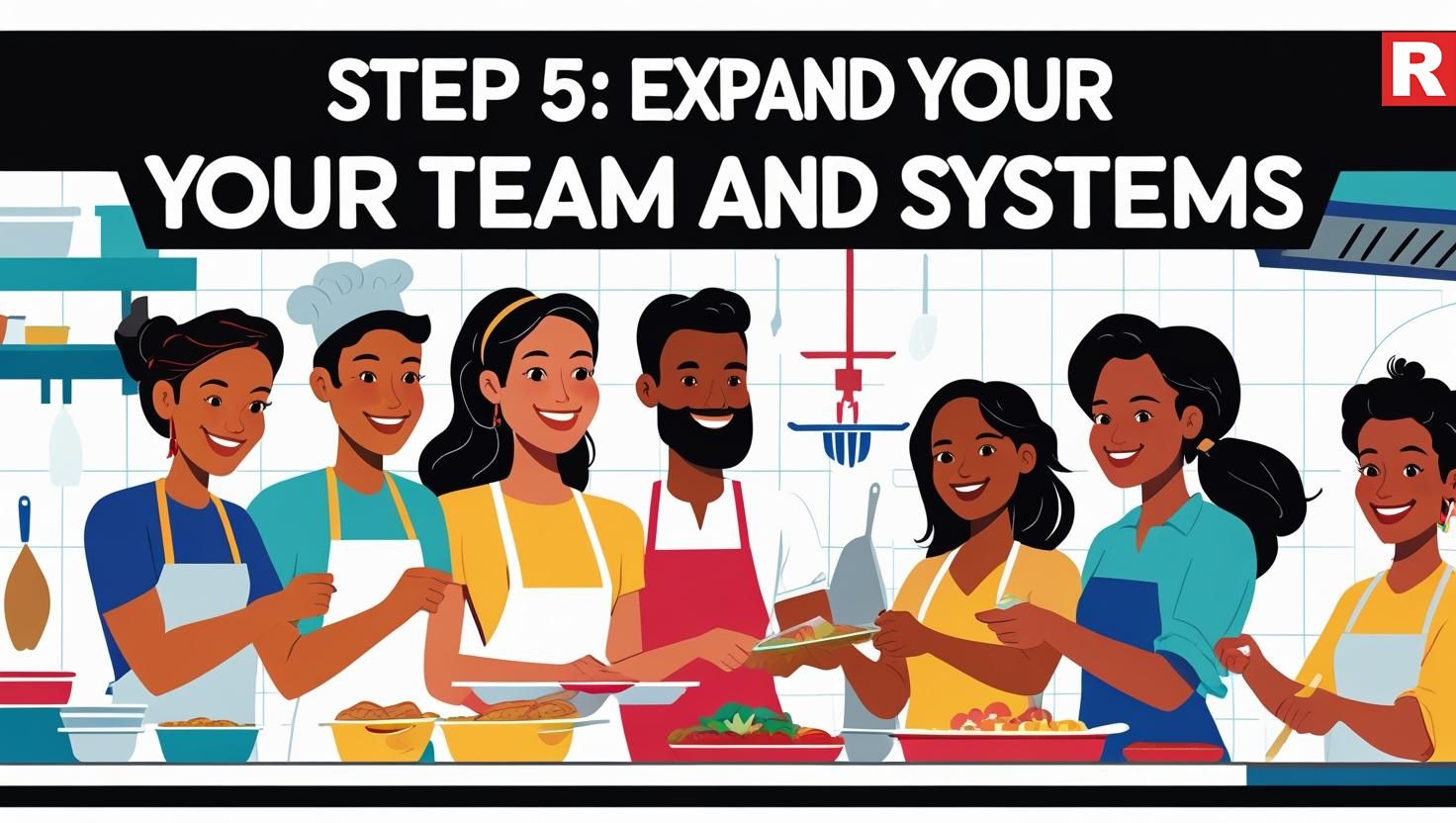
Growth requires a collective effort. Your company can only grow as quickly as your people and systems can handle.
Hire for Passion and Potential: As your business grows, you will need to hire employees who are dependable and passionate. Look for people who not only have the necessary abilities but also represent your brand's ideas.
Invest in Training: Create a complete training program for new employees that addresses everything from preparing meals and hygiene to customer service and communication. A well-trained crew is essential for ensuring quality and consistency, especially when operating in many locations.
Document and Standardize Everything: Create a complete operations manual that details every step of the business, from recipes and inventory management to daily opening and closing procedures. This document will serve as your company's blueprint, ensuring that all units comply with the same high standards.
Empower Your Team: As an owner, you cannot be everywhere at once. Encourage your team leaders and managers to take ownership of their responsibilities. Trusting your staff to make decisions and address problems on the ground is critical for any developed business.
Read this: 7 Restaurant Trends That Didn't Last Long
Conclusion
Growing a mobile restaurant in India is a challenging yet rewarding job. You can create a solid and successful business by taking a step-by-step strategy, from mastering your local operations to developing a strong brand, carefully managing your finances, and strategically preparing for development. Your mobile kitchen's adaptability is its greatest strength, allowing you to respond to market trends and deliver your culinary vision straight to your clients. A well-executed strategy may elevate your food truck to a respected brand not only in your community but throughout India's diverse and vibrant culinary landscape.

The reason many restaurant owners consider franchising is that they believe it is a more beneficial method of generating good revenue and growth. For a successful Indian restaurant, the possibility of growth is often a tempting one. Having different branches of their restaurant across the country is a good chance to make the restaurant’s name known. Restaurant franchising is a significant growth opportunity. The desire for fast growth, brand enhancement, and a potentially profitable revenue stream is strong. However, the path to successful franchising is filled with both appealing opportunities and possible difficulties. It is not as easy and beneficial as people think it is. The restaurateur will have to face many challenges to manage the franchise.
This detailed article explores the pros and cons of franchising an Indian restaurant in India, with a focus on the Indian market's specific characteristics, such as its diversified consumer base, legal structure, and competitive environment. By carefully weighing the advantages and disadvantages, Indian restaurateurs may make informed decisions about whether franchising is the best strategic move for their brand's future or not.
What is Restaurant Franchising?
Restaurant franchising is a business concept in which a successful restaurant (the franchisor) sells the right to another individual or business (the franchisee) to run an outlet using its existing brand name, business strategy, and operational procedures. In this agreement, the franchisee pays the franchisor an initial fee as well as constant royalties, which are typically a proportion of the sales. In return, the franchisee has access to the brand's name, established business methods, marketing support, and standard procedures, lowering their risk and providing a clear road to restaurant ownership. This technique enables the franchisor to quickly extend its brand without having to invest its own funds in each new site.
Read more: How to deal with Rude customers in a restaurant
Advantages: Pros of Franchising Your Indian Restaurant
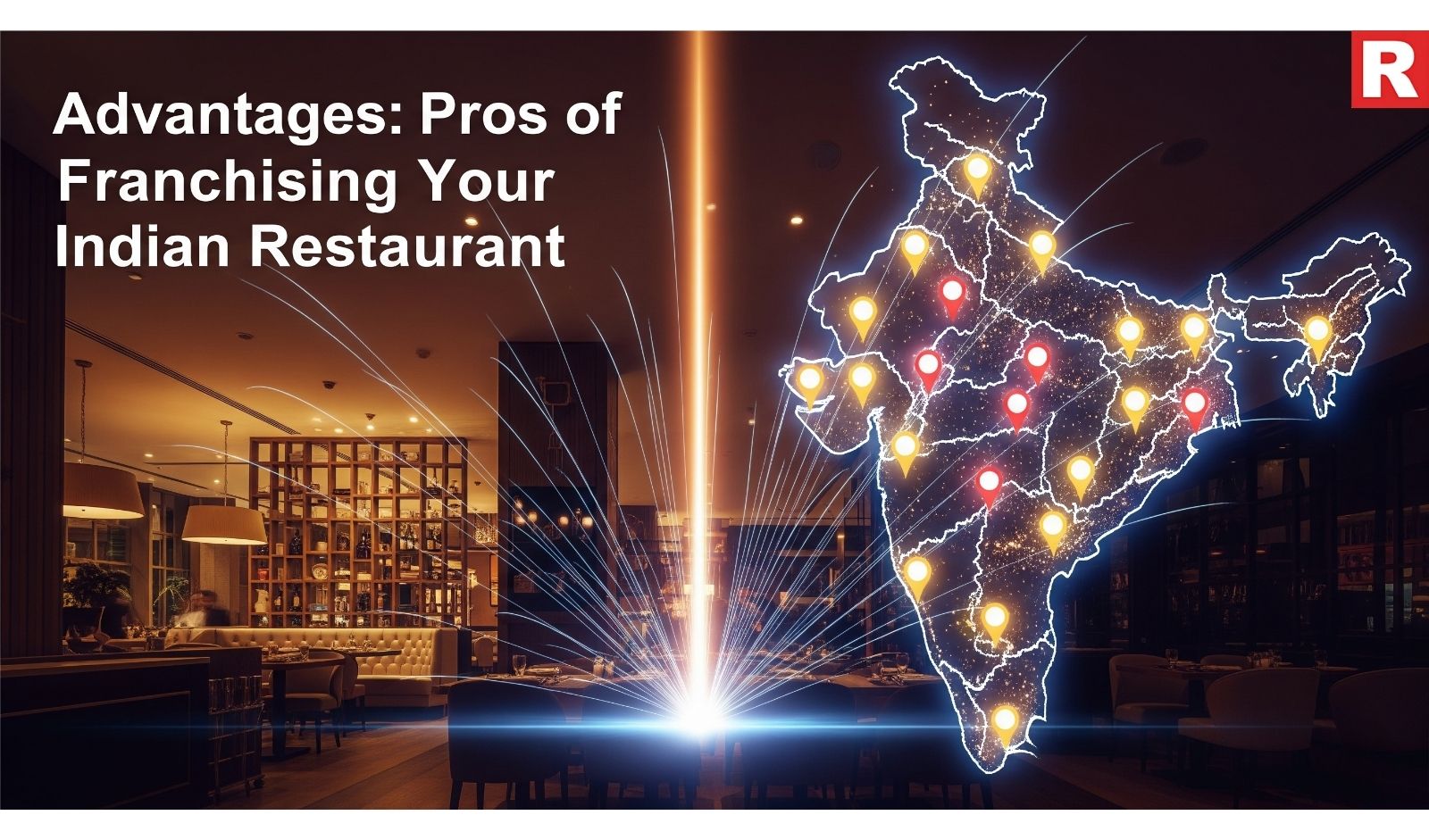
There are many advantages to franchising your business in the Indian culinary landscape that can fuel your restaurant’s growth and brand recognition across the country.
Rapid Expansion and Market Insight
When opposed to developing additional company-owned locations naturally, franchising enables faster expansion. You can enter new geographic markets, such as various cities and even Indian states, much more quickly by utilizing the resources and entrepreneurial spirit of franchisees. In a shorter amount of time, this quick expansion can boost market share and brand awareness, possibly putting you in a prominent location.
Reduced Capital Investment and Risk
Offloading the large capital investment needed to develop additional restaurants is the main benefit of franchising. The cost of starting and maintaining each franchisee's own business falls on them, freeing up the franchisor's funds for marketing, brand building, and operational assistance. This shared risk approach may be especially appealing in India's frequently unstable restaurant sector.
Leveraging Local Expertise and Entrepreneurial Drive
Franchisees frequently have a thorough awareness of their particular market demographics, customer preferences, and local odds because they are local business owners. When adjusting the restaurant's menu and marketing strategies to appeal to the target market, this local knowledge can be extremely helpful. Additionally, franchisees are typically motivated entrepreneurs who have a stake in the success of their respective locations, which frequently results in more committed management and improved operational effectiveness.
Know more: 9 Craft Alcohol Brands That Urban Indian Diners Can’t Get Enough Of
Increased Brand Awareness and Recognition
The brand recognition and awareness of your restaurant will undoubtedly rise rapidly as more franchised locations open under your name throughout India. This increased visibility can help your main business by increasing brand memory and drawing more clients to all of your sites, whether company-owned or franchised.
Recurring Revenue Streams and Royalty Fees
Through royalties, which are usually a portion of the franchisee's gross sales, franchising gives the franchisor a steady and ongoing source of income. The franchisor's profitability can be greatly boosted by this steady revenue, which can also be used to sustain and expand the brand. A large upfront investment in capital is also provided by initial franchise fees.
Economies of Scale in Procurement and Marketing
As the franchise network expands, the franchisor can use the system's combined purchasing power to bargain for lower prices from suppliers of packaging, equipment, and materials. Similarly, when the costs are distributed throughout the franchise network, national or regional advertising efforts can be more economical and effective, benefiting even the original restaurant through increased brand awareness.
Faster Feedback Loops and Innovation
A network of franchisees in other markets can offer valuable insight on local market trends, operational difficulties, and menu preferences. The franchisor can use this real-time information flow to pinpoint areas that need development and modify the menu according to regional preferences throughout India (while preserving the essential elements of the brand) and encourage creativity within the franchise system.
Check out: How Awards Can Drive Diners to Your Restaurant
Cons of Franchising Your Indian Restaurant
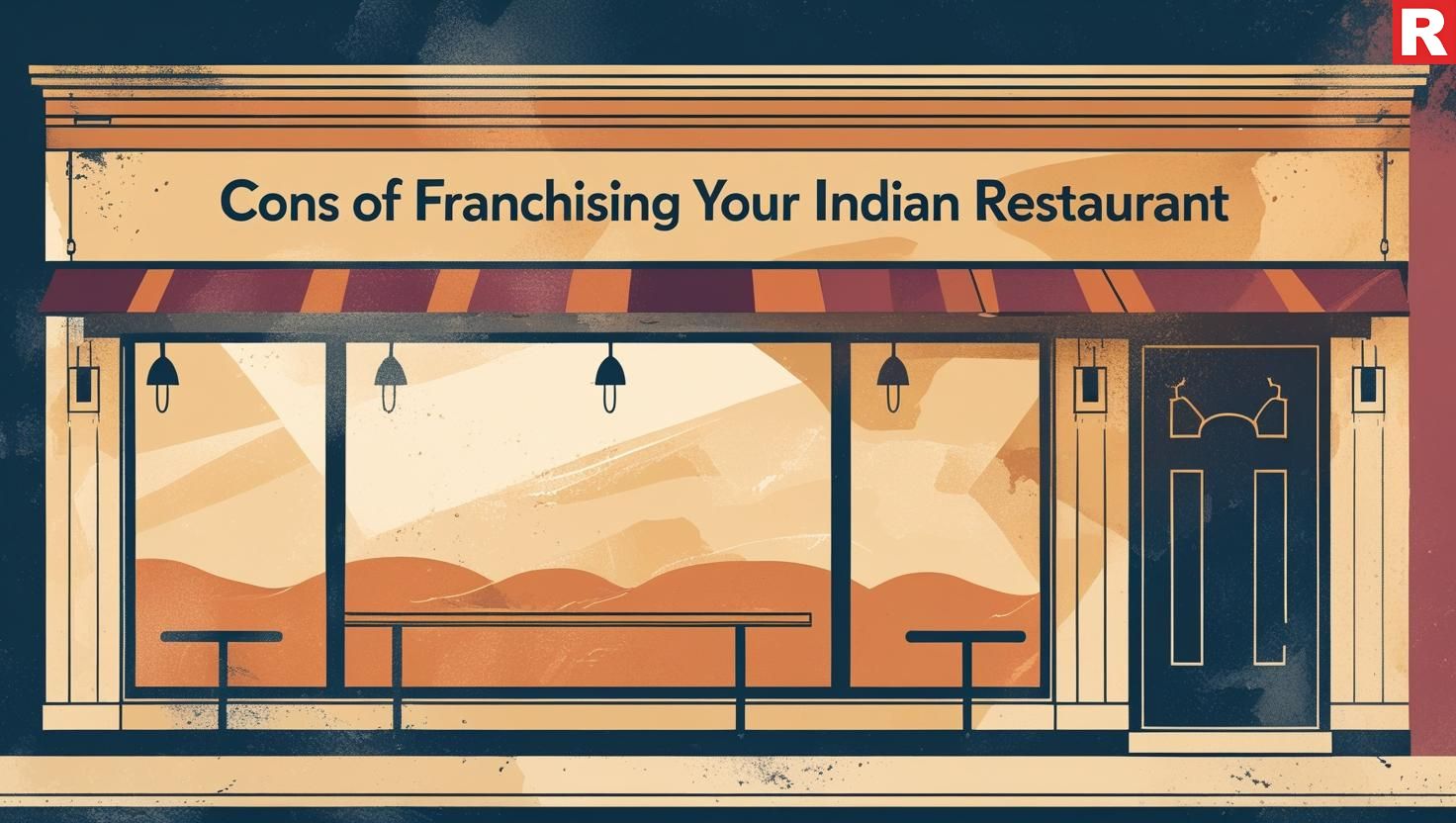
Despite the numerous advantages, franchising a restaurant has many cons that Indian restaurateurs should carefully examine before taking any action.
Loss of Direct Control Over Operations and Quality
This is widely regarded as the most difficult aspect of franchising. As a franchisor, you give up direct management of the day-to-day operations and quality control at franchised locations. Maintaining brand consistency, food standards, and service norms over a geographically scattered network may be extremely difficult, requiring sophisticated systems, training programs, and continual monitoring. A poorly managed franchised operation in another city might harm the entire brand image.
Potential for Brand Loss and Damage
Franchised locations might negatively impact your Indian restaurant's reputation and brand value due to inconsistent quality, poor customer service, or unethical actions. Maintaining brand standards is critical, and failings in this area can undermine customer trust and harm the entire franchise network.
Franchisee Disputes and Legal Complexities
Franchise agreements are complex, legally binding documents, and conflicts between franchisors and franchisees are not uncommon. These disagreements might vary from royalty payments and operational concerns to contractual breaches and termination clauses. Managing these disagreements can be time-consuming, expensive, and possibly harmful to the franchisor's reputation. Navigating India's legal landscape, which varies by state, adds another level of complication.
Difficulty in Evaluating and Selecting Qualified Franchisees
The quality and skills of your franchisees play a critical role in the success of your franchise business. Selecting people or businesses that possess sufficient finance, significant business expertise, a thorough awareness of the local market, and a real dedication to keeping your brand values is vital yet difficult. Poor franchisee performance can result in operational inefficiencies, unstable finances, and, ultimately, brand damage.
Sharing of Business Secrets and Intellectual Property
Franchising requires sharing your restaurant's business model, recipes, operational processes, and other private information with franchisees. While franchise agreements include intellectual property protection clauses, there is always the possibility that these secrets will be exploited or even lead to future competition if a franchisee's duration ends bitterly.
What's new: How to Handle Negative Online Reviews of Your Restaurant
Ongoing Support and Training Requirements
Franchising requires continual support and training for franchisees in operations, marketing, and customer service. This requires a major investment of time and resources, which includes creating comprehensive education programs, providing on-site assistance, and building effective communication channels throughout the franchise network. Neglecting franchisee assistance can result in unhappiness and, eventually, system problems.
Potential for Conflicts of Interest
Conflicts can occur between the franchisor's strategic goals and the specific interests of franchisees. For example, decisions on national marketing campaigns, menu adjustments, or technological upgrades may not always be completely coordinated with each franchisee's interests. Managing these conflicts and providing a consistent direction for the franchise system is essential.
Specific Considerations for Franchising In The Indian Market
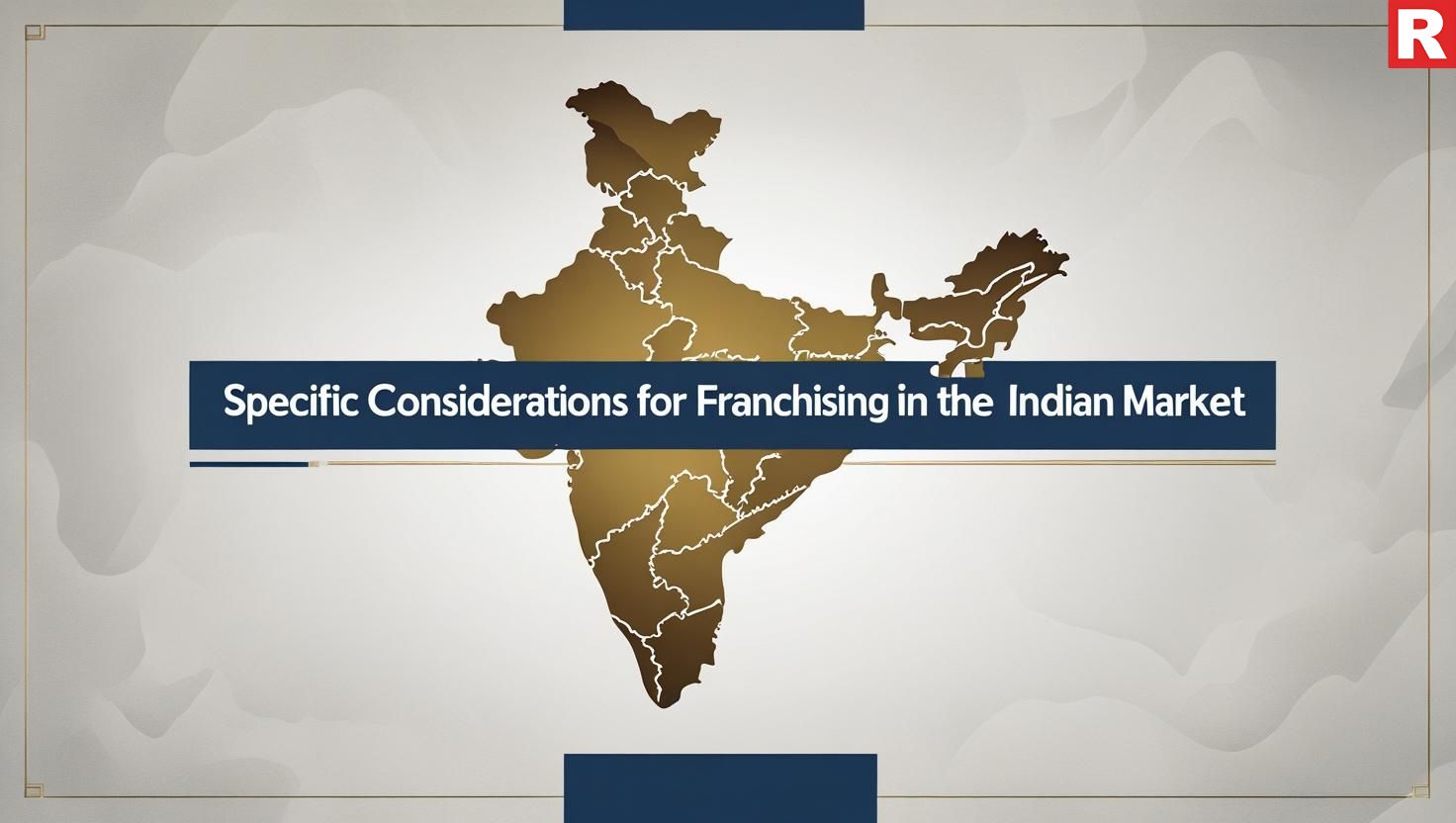
If you are someone who is considering franchising their restaurant in India, you need to keep in check several market-specific factors:
- Diverse Palates and Regional Variations: Indian cuisine is extremely diversified, with major regional differences in flavor and preference. While your main menu may be popular in your city, it may need considerable changes to appeal to customers in other cities. Franchise agreements must allow for some regional freedom while preserving fundamental values of the brand.
- Supply Chain Infrastructure: Maintaining a continuous supply of high-quality ingredients across India's geographically distributed franchise network can be difficult logistically. Establishing dependable and cost-effective supply chains is critical for ensuring food quality and profitability for both the franchisor and franchisee.
- Real Estate Costs and Availability: Finding ideal locations for franchised businesses in key districts of Indian cities may be costly and difficult. Franchise agreements must take into account real estate costs and give franchisees guidance on site selection recommendations.
- Labor Costs & Skilled Staff Availability: The availability and cost of skilled kitchen and service workers vary greatly across India. Franchisees will want assistance in recruiting, training, and controlling labor expenditures.
- Regulatory and Licensing Scene: Navigating the complicated and frequently variable regulatory and licensing requirements for restaurants in different Indian states can be a considerable challenge for franchisees. The franchisor should offer guidance and support in this area.
Read this: 7 Restaurant Trends That Didn't Last Long
The Rise of Vegan Restaurants: What It Means
Balancing The Pros and Cons
Franchising an Indian restaurant in India provides a tempting chance for rapid growth, brand extension, and steady income with minimal capital investment. The ability to utilize local expertise and engage franchisees' determination to succeed can be an incredible motivator for success in a variety of areas across the country.
However, the choice to franchise should be handled seriously. The potential drawbacks, such as the loss of direct control, the possibility of brand loss, and the challenges of managing a franchise network, are significant and should be carefully considered. Indian restaurateurs who are considering starting a franchise as a development strategy must do extensive research, carry out solid operational systems, organize intensive training programs, and draft legally binding franchise agreements. By carefully evaluating the pros and cons and carrying out a well-defined franchising strategy, you can possibly expand your brand's reach and deliver the unique flavors of your Indian cuisine to a larger audience across the country, all while reducing the inherent risks associated with this development model.

When you work in a restaurant, you get to see many different types of customers. Not every customer is good and polite. Some of them can be rude or just difficult to deal with in a particular way. Dealing with such customers is an unavoidable task that happens in the fast-paced climate of restaurants. In Indian culture, where hospitality is deeply ingrained, competition between restaurants is already severe. So, effectively managing such issues is already a skill in itself. If a single public argument arises, it can swiftly become an atomic bomb to damage a restaurant’s reputation.
This article is intended for Indian restaurateurs, managers, and staff, providing a strategic, sympathetic, and practical approach for negotiating the complexity of difficult customers in a restaurant. By following these rules, you may turn a negative encounter into an opportunity to demonstrate professionalism, establish consumer loyalty, and defend your brand's reputation in the long run.
Read more: 9 Craft Alcohol Brands That Urban Indian Diners Can’t Get Enough Of
Why Indian Restaurants Need a Strategic Approach

Handling difficult customers in India demands a more complex approach than a basic Western model due to the country's distinct social and cultural background.
- Reputation is Everything: In a competitive culinary world, a restaurant's reputation is its most important asset. Because of the massive impact of local word-of-mouth and community-based social media groups, a single negative experience can spread rapidly and widely. A strategic response is an active attempt to address this.
- The Importance of Social Proof: Indian diners frequently rely on recommendations from friends and family, making each consumer a potential brand ambassador for your restaurant. How you handle a complaint, whether in person or online, is a public advertisement for your principles and professionalism.
- Cultural Distinction: The Indian ideal of atithi devo bhava (the guest is God) establishes a high standard of hospitality. While this is a lovely principle, it also implies that customers have high expectations. Understanding these fundamental beliefs and handling complaints in a professional, diplomatic manner is critical for providing excellent customer service in restaurants.
- Preventing a Spiral: A well-managed complaint can de-escalate a situation before it spreads to review services such as Zomato or Google Reviews, where it can create long-term damage.
Read this: How Awards Can Drive Diners to Your Restaurant
Recognizing the "Difficult" Customer: Types and Triggers
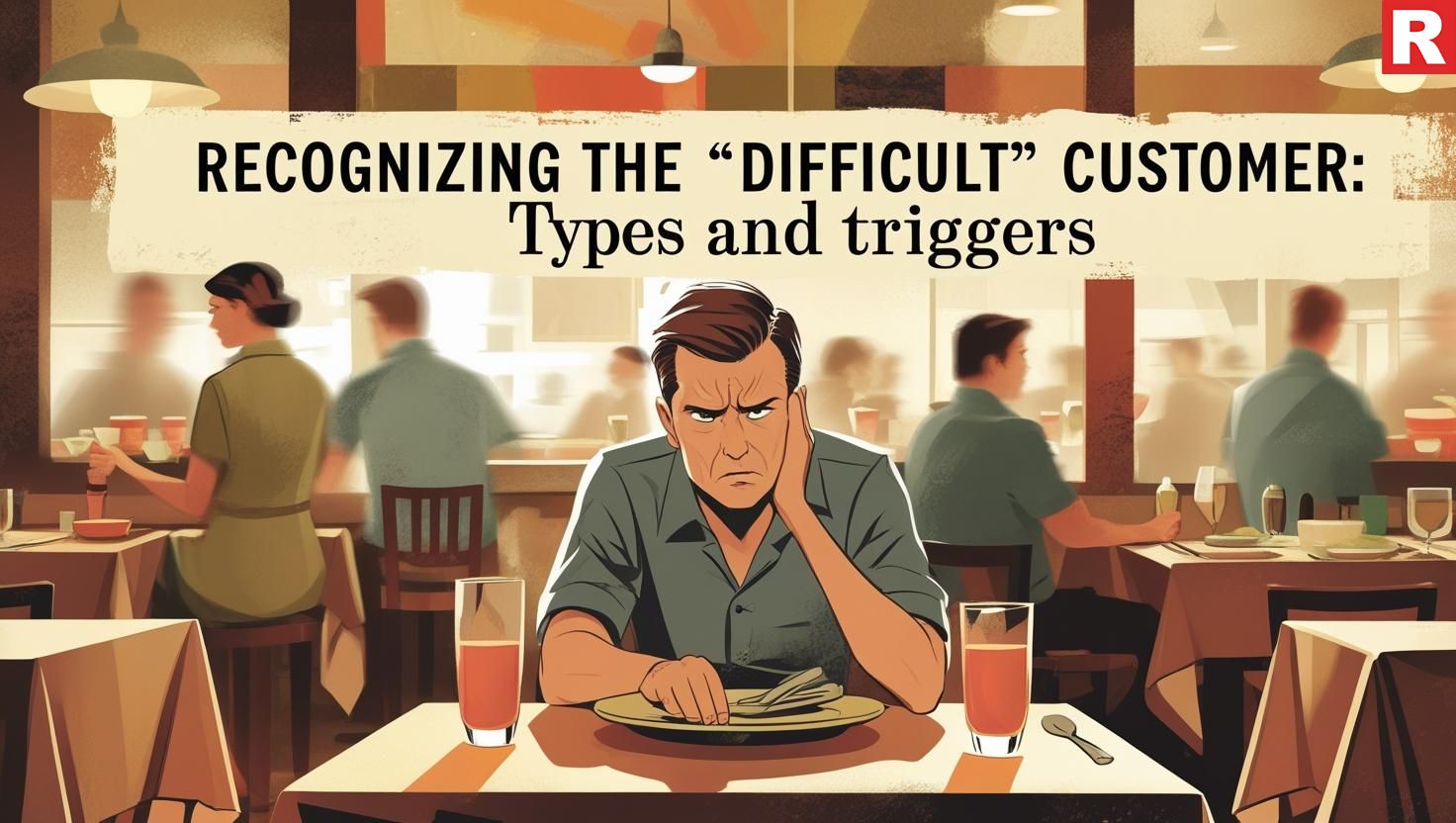
Not all difficult customers are alike. Recognizing the various sorts allows your staff to modify their strategy and react more effectively.
- The Disappointed Customer: This is the most common category. They came to your restaurant with high hopes, but something fell short, either the cuisine, the service, or the atmosphere. They basically want a solution to their problem.
- The Impatient Customer: This individual is frequently anxious and in a hurry. They are usually worried about excessive wait periods for their table, order, or bill.
- The Unjustifiably Angry Customer: This person could be having a rough day and is searching for a battle. They are not readily satisfied and may want a free lunch or a reward.
- The Overly Demanding Customer: They want extra customization, a large list of particular requests, or a degree of service that is unrealistic for your restaurant.
Common Triggers of Complaints:
- Long wait periods (for seats, ordering, or eating).
- Incorrect ordering or cold food.
- Billing errors or pricing disagreements.
- Service that is perceived as rude or neglectful.
- The food did not taste as expected
Know more: 7 Restaurant Trends That Didn't Last Long
A Step-by-Step Guide for Staff To Handle Difficult Customers
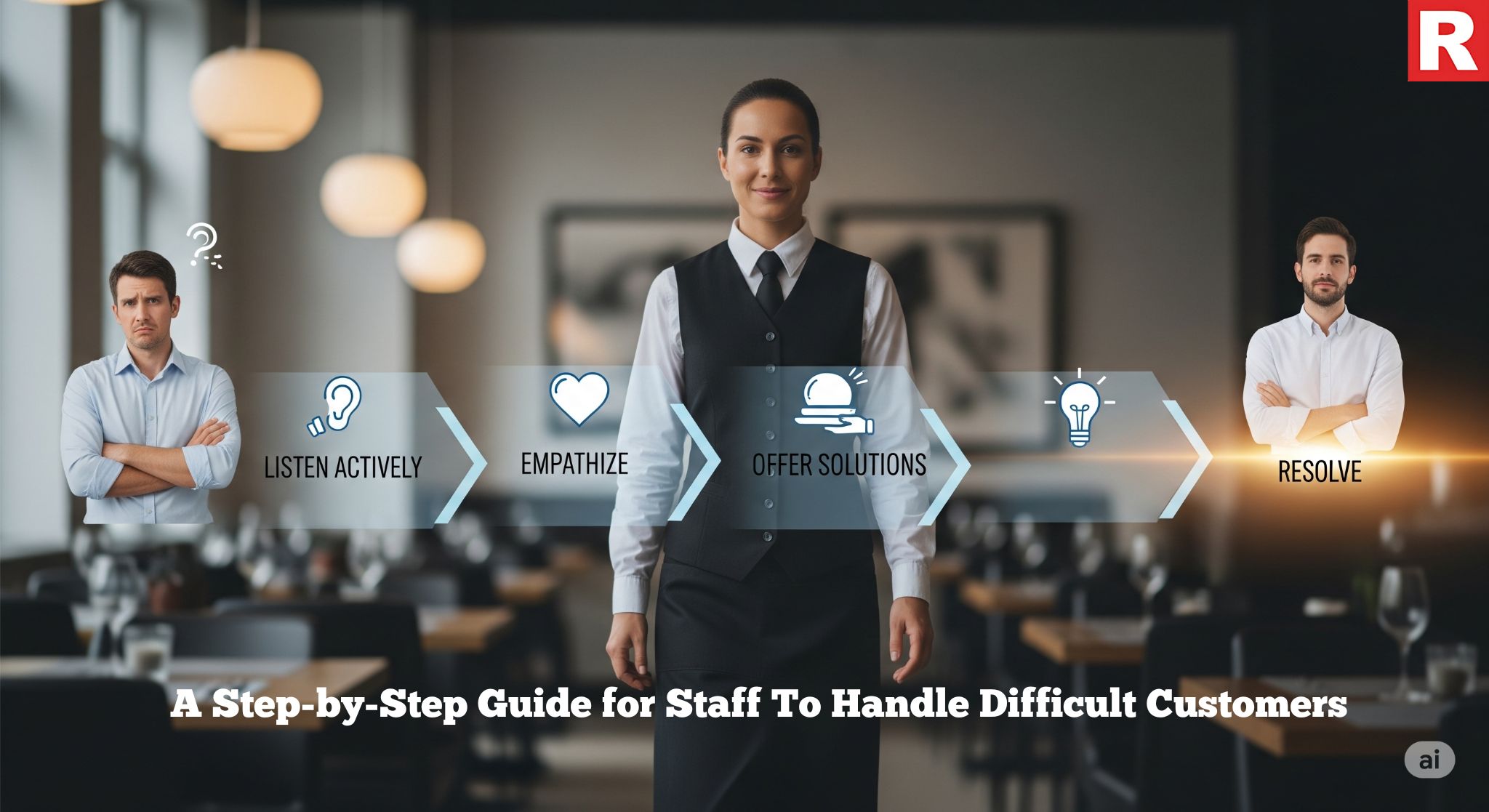
Dealing with difficult customers is a skill that can be trained in your staff. By providing your employees with a clear protocol, you can ensure consistent, professional responses each time.
Step 1: Stay Calm and Listen Actively
The initial few moments of a complaint are the most important. When a customer is upset, their main demand is to feel heard. Therefore, never interrupt the customer when they are telling their complaint. Allow the customer to fully express their frustrations. During this period, keep a relaxed demeanor. Your body language should be uncrossed arms, an open stance, and direct eye contact. It should indicate that you are listening. Take the complaint seriously. Even if the issue appears insignificant, it should be treated with respect.
Step 2: Acknowledge Their Feelings and Apologize
After listening, accept their feelings and apologize for the bad experience. This is an important method to calm down the difficult customer. Show empathy from your side. Use phrases like "I understand why you're upset" or "I'm sorry to hear that this happened." But make sure you are apologizing for the experience, not the mistake. If the situation is uncertain, you can say, "We sincerely apologize that your meal did not meet our expectations," without admitting guilt. This confirms their emotions without leading to a potential conflict.
Step 3: Isolate the Issue and Repeat it Back
This stage serves two purposes. Firstly, it demonstrates to the customer that you were actually listening, and it assists you in determining the specific problem to be solved. Then, clarify the scenario. Say, "Just to be sure I understand correctly, the food arrived cold, and you've been waiting for the bill for 15 minutes." Is that correct? This way, you can summarize the complaint properly. Get to the root of the problem. This keeps the talk from turning into an everyday complaint about everything.
What's new: How to Handle Negative Online Reviews of Your Restaurant
Step 4: Offer Solutions (Empower Your Staff)
Once the problem is identified, it is time to work on a solution. Empowering your employees to provide tiny, immediate solutions can frequently solve the problem on the spot. This way, the more senior employees do not need to step up every time a situation arises. Provide options to the customer. "I can have the dish remade for you immediately," or even "I'd be happy to offer you a fresh pot of tea on the house while you wait for the bill." Solve the problem quickly. For more complex or costly issues, a qualified employee should know when to politely offer, "Let me get my manager to handle this for you, or "I want to make sure we resolve this to your complete satisfaction."
Step 5: Take the Conversation Offline
If a customer is too loud or the situation becomes tense, it is preferable to keep the conversation out of public view so as not to disturb the other diners. Gently advise a change of place. Like “I'd like to discuss this with you in greater detail. Would you mind stepping over here for a moment?” Create a private channel for receiving online feedback. When you are replying to bad internet reviews, always include an email address or phone number for further discussion. This demonstrates transparency and a desire to handle the matter without a public debate.
Empowering Your Management and Staff

A restaurant's capacity to handle difficult guests is directly related to its restaurant staff training. This is not a naturally born skill; it must be learned and developed.
- Role-Playing Scenarios: Hold frequent training sessions in which employees can practice techniques for de-escalation in realistic scenarios. Include scenarios unique to your cuisine and target audience, such as a customer complaining about the spiciness of a meal or the legitimacy of a recipe.
- Emotional Intelligence: Teach employees to notice and comprehend their own emotional responses to stress, as well as the emotions of their customers. Recognizing that they are simply a messenger and not the source of the problem is critical.
- Clear Protocol: Create a clear protocol for when you should involve management in a situation. This ensures that employees are not overwhelmed and that managers are brought in at the appropriate time to provide effective assistance.
- Positive Reinforcement: Recognize and reward employees who manage challenging situations gracefully. This encourages positive behavior and fosters an environment of exceptional customer service.
Check out: The Rise of Vegan Restaurants: What It Means
6 Common Ingredients Used in South Indian Cuisines
Turning a Negative into a Win
A difficult customer, when handled correctly, is a hidden opportunity.
- Customer Care: Most of the consumers who complain and get their issue handled return to do business with the establishment. So, by resolving their issue, you can convert a critic into a committed supporter.
- Enhanced Brand Reputation: The way you address a complaint, particularly in a public forum such as a social media comment section, speaks volumes. A competent, empathic response may impress other potential diners reading the discussion.
- Valuable Feedback: Difficult customers frequently offer the most direct and unfiltered consumer feedback. This is a free consultation to identify what is wrong with your service, food, or business.
- Boosted Staff Confidence: Successfully settling a challenging issue can increase a team member's confidence, making them feel more capable and respected.
Conclusion
Dealing with tough customers is an essential skill in the active and competitive Indian restaurant sector, especially in an urban area. It's not just about avoiding conflict; it's also about developing a strong, customer-focused business. You can transform moments of impact into stepping stones for growth, turn unhappy diners into loyal customers, and ensure that your restaurant's reputation remains as flawless as its cuisine by cultivating an empathy culture, providing comprehensive restaurant staff training, and equipping your team with the right negotiation tools. Remember that every problem is an opportunity to demonstrate your commitment to excellence.

As the era of digitalization has progressed, people tend to look online for restaurant reviews before deciding whether to visit or not. There are many platforms, such as Google Reviews, Zomato, TripAdvisor, and social media, that can have a favorable or unfavorable impact on diners. Just like positive reviews can boost sales, negative reviews might reduce them. If there are more negative reviews than positive ones, then it will impact the overall revenue of the restaurant in the long run. Therefore, the restaurant management needs to know how to deal with negative reviews online.
To be fair, no matter how much effort you put into building and managing your restaurant, mistakes can still happen, and some customers may still leave unsatisfied and leave a bad review. For Indian restaurants that exist in a diverse cultural setting and cater to a wide range of tastes, successfully dealing with negative reviews is not simply damage control; it is an important chance for growth, proving dedication to customer satisfaction, and eventually strengthening the reputation of the restaurant. This detailed article will look into the strategic measures that can help Indian restaurants handle negative online reviews.
Read more: How Awards Can Drive Diners to Your Restaurant
The Impact of Negative Online Reviews on Indian Restaurants
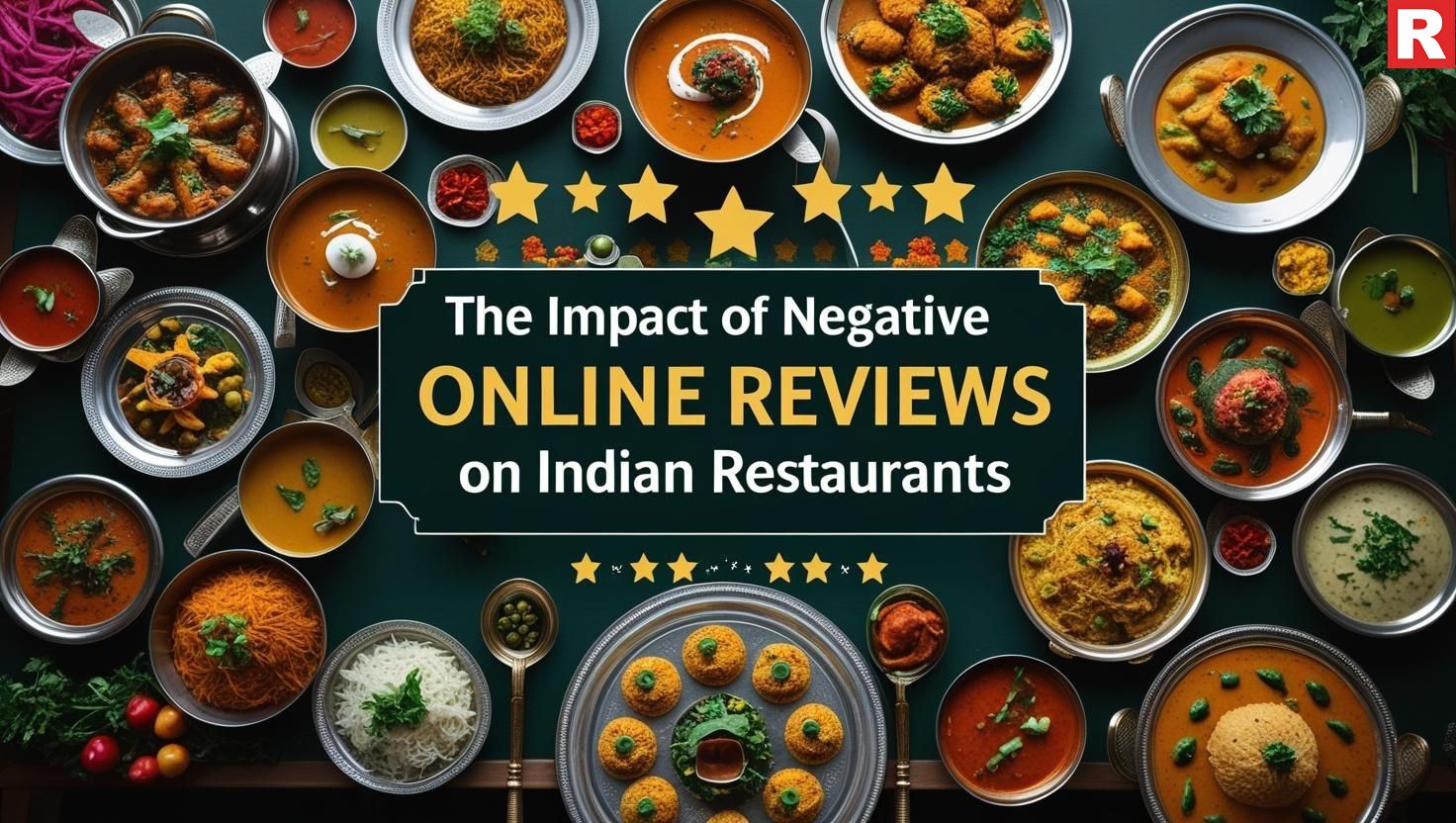
Negative online reviews have a big impact on consumer decisions in many industries. In the restaurant business, the effect is even more powerful.
- Erosion of Trust and Reputation: A flood of negative reviews can seriously harm a restaurant's online reputation, giving the impression of poor food quality, mediocre service, or cleanliness difficulties. This decline of trust can be difficult and time-consuming to reverse. Potential customers, particularly those who are unfamiliar with your restaurant, are more likely to be influenced by unpleasant experiences shared by others.
- Direct Impact on Traffic and Revenue: Research regularly shows that negative reviews are associated with a decline in customer visits. In a price-sensitive market like India, diners are especially wary of investing their money at restaurants with a poor internet track record. Even a few significant negative reviews can turn off a large number of potential customers, lowering your bottom line.
- Increased Reach and Virality: Negative reviews can spread quickly via social media and word-of-mouth, reaching considerably more people than positive feedback. Screenshots of particularly harsh reviews can go viral, causing major and long-term damage to your brand's image, particularly among local community organizations and culinary enthusiasts.
- Impact on SEO and Visibility: Search engine algorithms frequently use online reviews to rank local businesses. A large number of negative reviews might harm your search engine optimization (SEO) efforts, making it more difficult for potential customers to find your restaurant online while looking for eating options in the nearby areas.
- Employee Morale: Receiving negative comments about their job might be demotivating for restaurant employees. It can increase hostility and lower service quality, creating an endless cycle. Addressing these reviews positively can raise morale by demonstrating that management values consumer feedback and is dedicated to change.
Common Errors to Avoid When Dealing With Negative Reviews

Before applying these successful techniques, it is also important to recognize the frequent errors that Indian restaurants make when dealing with bad online feedback:
- Ignoring the Review: This is the most awful approach. Ignoring a negative review demonstrates a lack of concern and may irritate the reviewer, prompting them to take up their complaints on additional platforms. It also hurts anyone reading the review.
- Responding Defensively or Emotionally: Engaging in a fight with an online reviewer is unprofessional and can harm your restaurant's reputation. Avoid using aggressive language, criticizing the customer, or offering excuses. Emotional responses worsen the situation and rarely result in a favorable solution.
- Using Generic Responses: A lack of personalization in your response may make clients feel as if their concerns are not being taken seriously. Typical comments may come out as fake and useless.
- Taking it Personally and Not Objectively Analyzing the comments: While negative reviews might be upsetting, it is critical to take a step back and evaluate the comments for any valid points. Treating each review as a personal attack will limit your ability to learn and progress.
- Offering Public Arguments or Disputes: Online review systems are not suitable for lengthy public arguments. If a detailed explanation or clarification is required, offer to move the discussion offline.
- Delete Negative Reviews (On Platforms You Control): While tempting, erasing negative reviews can backfire, leading to charges of censorship and increased mistrust. It's preferable to answer negative comments openly.
Know more: The Rise of Vegan Restaurants: What It Means
Strategies for Effectively Handling Negative Online Reviews

Respond quickly and professionally
- Try to respond to negative reviews within 24-48 hours to show that you respect customer feedback and are active in fixing issues.
- Appreciate the reviewer and their feedback directly. Begin your response by thanking the person for taking the time to share their experience, no matter how unpleasant it was. Directly address every issue they highlighted in their review to demonstrate that you read and understood their concerns.
- Even if you don't agree with everything the reviewer might write, show understanding for their poor experience. A genuine apology for falling short of their demands might help calm the situation much faster.
- If the criticism reveals an actual error or shortcomings on your side, own it. Taking responsibility shows a willingness to change.
For example, include words such as "We are truly sorry to hear that your experience at [Restaurant Name] did not meet your expectations."
Acknowledge Specific Concerns and Offer Solutions
- If the review raises many issues, address each one separately in your response.
- If a specific circumstance led to the problem (for example, an especially busy night or a staff shortage), explain it clearly and honestly without making excuses.
- Depending on the nature of the complaint, you should provide a practical solution as the next step. This may include:
- Invite them back for a free dish or a discount on their next meal. Also, include your contact information when you reply to their review so they may reach out privately.
- Assuring them that you are taking internal actions to solve the problem (for example, replacing employees or changing a recipe).
- In some cases, a partial refund can be provided, or a free dinner or discount coupons.
4. For more complicated or sensitive subjects, ask permission to continue the conversation privately. Provide a direct email address or phone number so that the reviewer can contact you. This enables a more in-depth conversation and settlement without requiring talking in public on the review forum.
Check out: Top Beers to Try on This International Beer Day
6 Common Ingredients Used in South Indian Cuisines
Showcase Your Commitment to Customer Satisfaction
- If you've made improvements as a result of negative comments, don't be afraid to highlight them quietly in future responses to similar reviews.
- This doesn’t mean openly showing only the negative reviews. Maybe creating a separate section for problems that arose but were solved on your official website will be good.
- While you shouldn't ask for fake reviews, you may encourage satisfied customers to post their positive experiences online by including subtle reminders or addressing it when they express satisfaction.
- Also, respond to positive reviews, as it can demonstrate your appreciation for your satisfied consumers and support a favorable brand image.
Monitor Your Online Presence
Keep an eye on review sites (Google Reviews, Zomato, TripAdvisor, Facebook Reviews), social media mentions, and local online forums (such as city-based food clubs). Set up alerts to receive timely notifications on new reviews. Keep checking for repeating topics in negative feedback. If many negative reviewers are talking about the same food, the same employee, or a particular area of the service, then maybe the problem can be in that area. Identifying these patterns can help indicate areas that require immediate attention.
What's new: 7 Restaurant Trends That Didn't Last Long
Learn and Improve Based on Feedback
Internal Review and Analysis: Keeping an eye on negative feedback is beneficial for your staff as well. Discuss the concerns mentioned with your employees, identify the key root causes of the problems, and discuss solutions.
Implement Changes: If there are repeating patterns in negative reviews that imply structural problems, take specific efforts to improve your processes, training, menu, or service.
Track Improvement: Keep track of the improvement steps that were taken after checking the negative reviews. Determine whether the adjustments you made resulted in a decline in similar negative comments over time or not.
Read this: How Carbon-Labelled Menus Attract Eco-Friendly Diners
Turning Setbacks into Stepping Stones
Negative online reviews, while unwanted, are an unavoidable part of operating a restaurant in the age of technology. The trick for Indian restaurants in any city and across the country is to deal with them strategically and effectively, rather than completely ignore them. By monitoring your online presence, responding quickly and empathetically, addressing concerns directly, learning from feedback, and demonstrating your commitment to customer satisfaction, you can turn potential setbacks into valuable growth opportunities, strengthen your brand reputation, and ultimately continue attracting and keeping loyal customers in the vibrant and competitive Indian culinary landscape. Remember, every bad review is an opportunity to demonstrate to potential consumers how much you value their opinion and are committed to providing a good dining experience.

There is a noticeable change taking place in the Indian culinary scene, which is known for its varied vegetarian heritage. There has been a rise in restaurants specializing in vegan cuisine in India. This theme, which was previously thought to be a specialized idea that was mostly limited to Western tastes or rigid religious rituals, has now grown into a thriving, widely accepted trend throughout Indian cities. This change is not just a small passing trend; it is a significant sign that consumers’ demands and tastes are changing. Also, people are worried about their health and the environment.
There has been a rise in vegan-only restaurants in India. These restaurants, with their inventive vegan cuisine and plant-based versions of classic Indian dishes, are changing dining experiences and challenging stereotypes about food. If you are a restaurateur or a foodie, or anybody else interested in the future of India's vibrant food business, it is essential to understand the factors behind this green revolution on our plates.
Read more: Burma Burma Opens Three New Outlets in Delhi-NCR
The Driving Forces Behind Veganism's Growth in India

The increasing popularity of vegan restaurants in India is due to a combination of several factors:
Health and Wellness Consciousness
One important driving force is Indians' growing understanding of the fundamental connection between nutrition and health. More people are actively looking for better eating options as the risk of lifestyle disorders like diabetes, heart problems, and obesity rises. With advantages including better weight management, decreased inflammation, and enhanced heart health, a plant-based diet is becoming more and more popular in India as a preventative strategy. People who place a high value on their health find great appeal in the apparent purity and the health of vegan cuisine.
Ethical Concerns and Animal Welfare
India has found appeal in the worldwide debate surrounding the welfare of animals. Many people are reconsidering their dietary choices as a result of documentaries, social media campaigns, and easier access to information regarding industrial livestock production. In India, where the concept of 'Ahimsa' (non-violence) is deeply rooted, the moral duty to refrain from harming animals serves as an important motivation for adopting ethical eating practices and selecting cruelty-free products.
Environmental Impact and Sustainability
The huge environmental impact of vegetarianism is becoming more widely recognized. Deforestation, water pollution, and greenhouse gas emissions are all significantly impacted by the raising of livestock. Choosing plant-based meals is seen as a concrete step towards sustainable dining in India and lowering one's carbon footprint as climate change concerns gain popularity, especially among younger generations (Gen Z and Millennials). Restaurants that emphasize their environmentally friendly operations are becoming more popular.
What's new: 7 Restaurant Trends That Didn't Last Long
Cultural Diversity and Smooth Transition
Hinduism, Jainism, and Buddhism have all had an impact on India's large vegetarian population, which sets it apart from many Western nations. This indicates that many people's shift to veganism is less impulsive than that of meat eaters. A recognizable framework is provided by the long-standing food customs of Sattvic and Jain cuisine, which avoid many animal products (though frequently include dairy). By creatively modifying classic vegetarian recipes to use plant-based dairy substitutes like cashew cream, almond curd, or coconut milk, chefs may increase the access and attractiveness of Indian vegan cuisine.
Global Influence & Information Accessibility
Due to the internet age's linkage, international cuisines easily make their way to India. Indian foodies are influenced by foreign chefs, food bloggers, and plant-based movements. The popularity and interest in vegan cuisine trends in India have been boosted by social media platforms and the ease with which vegan recipes and information can be found online.
The Position of Vegan Restaurants in India
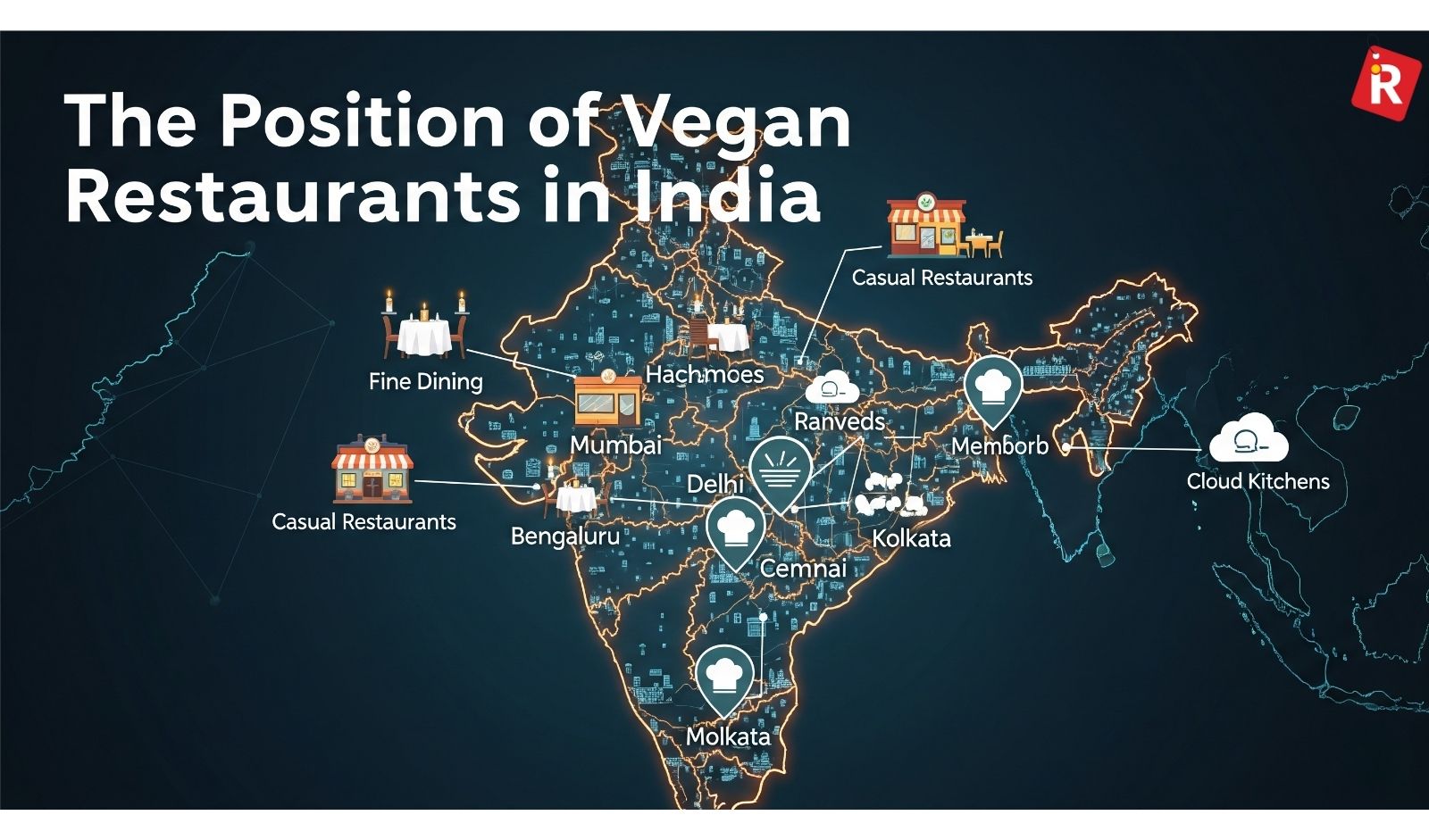
The growing number of vegan restaurants around India is a clear physical representation of this change. What began as a small number of specialty cafés in major cities has grown into a vibrant and innovative food scene:
- From Cafes to Fine Dining: The transition from specialty cafes to fine dining is remarkable. Small, health-conscious cafes were frequently the first vegan establishments. From small restaurants and cloud kitchens that specialize in vegan delivery services in India to high-end vegan restaurants that are on par with their meat-eater counterparts in terms of presentation, complexity, and flavor, there is a wide range of options available today. At the forefront of this change are cities like Chennai, Bangalore, Delhi, and Mumbai.
- Innovation in Indian Vegan Cuisine: Popular classic recipes are being creatively reinterpreted by Indian chefs so they're completely plant-based. Imagine creamy 'paneer' gravies with tofu or creative plant-based 'paneer' substitutes, delectable 'butter chicken' prepared with jackfruit or fake meat, and a variety of dairy-free desserts (such as vegan gulab jamun or kheer made with nut milks). The rich flavors and cozy familiarity of Indian food are preserved during the vegan shift thanks to this invention.
- Fusion and International Veganism: In addition to Indian food, a wider variety of international vegan cuisines are becoming more accessible as vegan restaurants expand. From robust plant-based cheese pizzas and vegan burgers to colorful Asian bowls, Mexican tacos, and Mediterranean platters, these restaurants satisfy a diverse audience while maintaining veganism.
- Opportunities and Challenges: Despite their quick expansion, vegan restaurants in India continue to encounter particular difficulties. It might be challenging to regularly and reasonably get specialty plant-based products and to train kitchen employees in new cooking methods. For local manufacturers and providers of plant-based goods, these difficulties also offer huge opportunities.
Check out: How Awards Can Drive Diners to Your Restaurant
6 Common Ingredients Used in South Indian Cuisines
What the Rise of Vegan Restaurants Means for the Indian Food Industry
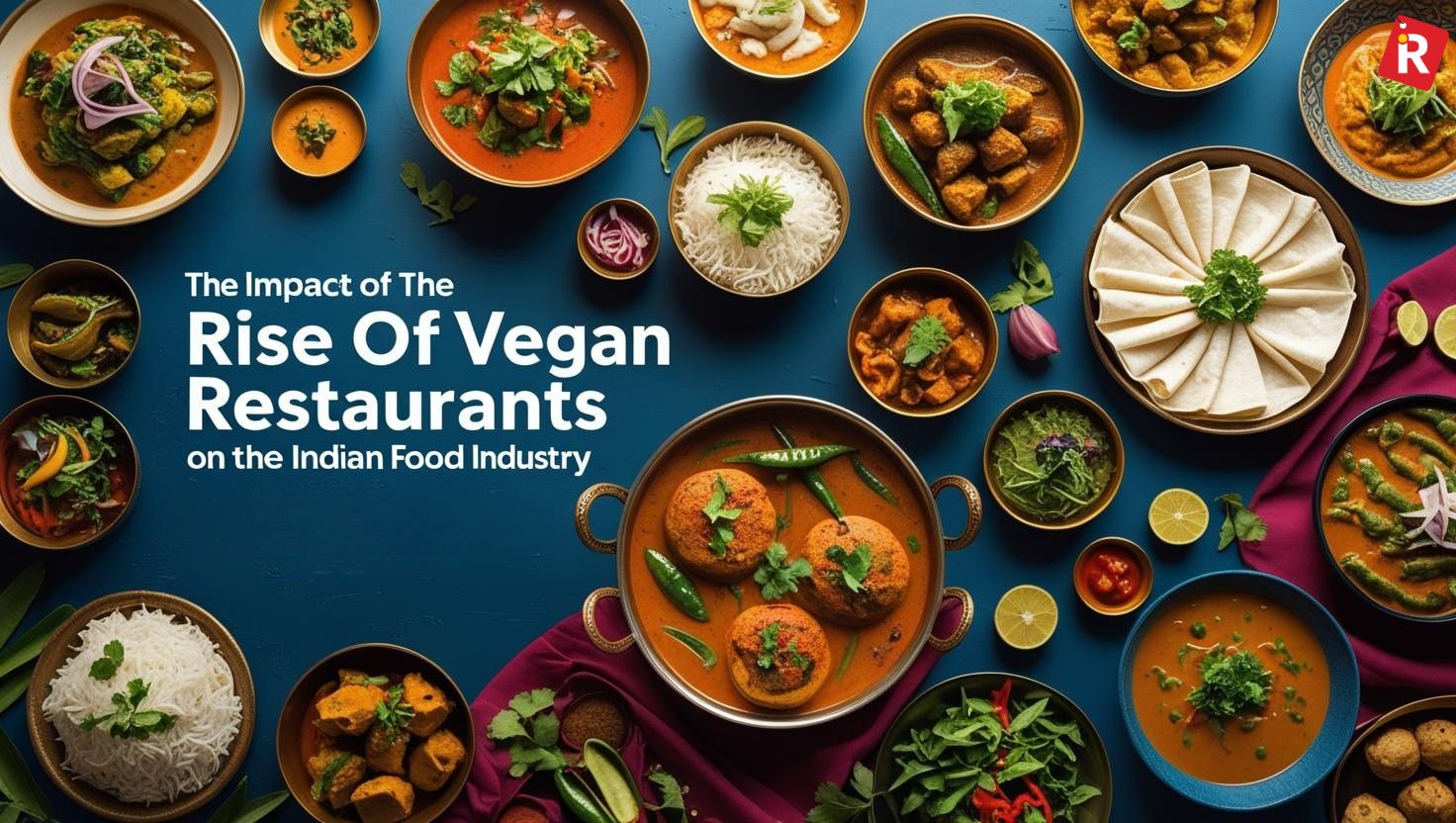
Significant changes are occurring in the Indian food sector as a whole as a result of the growing popularity of vegan dining:
- Redefining Vegetarian: In India, the term "vegetarian" for many years included dairy consumption. The popularity of veganism calls for a reexamination, moving the definition of "pure vegetarian" in the direction of one that is actually free of animal products. This forces innovation and calls into question the dairy-heavy basis of many traditional Indian diets.
- Market Diversity & New Customer Segments: Vegan restaurants are reaching out to a constantly expanding group of consumers who are concerned about their health, ethics, and the environment. As a result, the whole client base grows beyond typical categories, and new market segments are created. In India, plant-based cuisine is becoming more popular among flexible eaters, vegetarians, vegans, and others with dietary restrictions (such as lactose intolerance).
- Food Technology Innovation: India has seen an unusual increase in investment and innovation in food technology as a result of the growing demand for plant-based substitutes. Advanced plant-based meat and dairy substitutes are becoming more and more popular. These include a variety of domestically manufactured plant-based milks, yogurts, and cheeses, as well as fake meats that resemble chicken, mutton, and fish. This promotes the nation's emerging plant-based economy.
- Supply Chain Modifications: As more restaurants adopt veganism, there is an increasing need for a reliable plant-based ingredient supply chain. In addition to fresh fruit, this also contains specialty grains, nuts, seeds, spices, and processed vegan goods. Farmers and suppliers are encouraged to broaden their agricultural product options by this change.
- Impact on Traditional Restaurants: Traditional, omnivorous, and even long-standing vegetarian restaurants are under pressure to offer appealing and thoughtful vegan options as a result of the success of dedicated vegan restaurants. Those who don't adjust run the danger of losing a sizable chunk of the changing market share. Nowadays, many openly promote their "vegan-friendly" menu items.
- Economic Opportunities: There is potential for significant economic growth in the vegan food industry. New business prospects, job creation (from farming to food processing, culinary jobs to marketing), and innovative business models like subscription-based meal services and dedicated vegan cloud kitchens are all made possible by it.
- Sustainability as a Business Standard: Restaurants are realizing more and more that their dedication to sustainability, which includes waste reduction and sourcing methods, is a good marketing weapon. Adopting vegan options is a great way to demonstrate their support for the environment and draw in values-driven customers.
Know more: Top Beers to Try on This International Beer Day
Long-Term Prospects for Vegan Dining in India
Vegan restaurants in India seem to be on a strong rising trend and are expected to keep expanding. Veganism is set to become increasingly common in mainstream dining, partly due to the tastes of Gen Z and Millennials, who are more concerned about their health, the environment, and animal welfare.
India has a distinct advantage to lead the world in vegan innovation because of its strong plant-based agricultural sector and sizable vegetarian population. The future of food in India is definitely moving in the direction of more plant-powered, sustainable, and accessible options due to continuous improvements in food science, rising plant-based substitute prices, and a more aware public.
Read this: Functional Mushrooms: The Next Big Trend in Beverages and Food Innovation
A New Green Era
The growth of vegan restaurants is more than just a passing trend because it is a major cultural, economic, and social indicator. It represents a major shift in the way Indians see food, health, and the environment. This implies that it is essential for restaurateurs to develop, modify, and accept plant-based solutions as an essential component of their future strategy rather than only as a specialty item. The green revolution on our plates promises a tasty and significant transition for India's thriving food industry as it continues its journey towards a more sustainable and aware future.

Restaurants continually strive to introduce new initiatives and incorporate emerging market trends. They do so to attract more customers, which in turn brings in customers to the restaurant, albeit temporarily. The thing with trends is that they keep emerging, and new ones are introduced. Therefore, if a trend is too old or not making enough money, it is replaced by a new one. For every trend that gains momentum and becomes routine, numerous others briefly gain popularity before fading away to little more than a hint of nostalgia.
In this article, we’ll examine the elements that led to the initial attractiveness and eventual downfall of some of the more well-known restaurant trends in India that didn't survive long. Knowing these short-lived trends can help present and future restaurateurs by highlighting the value of sustainability, real value, and adjusting to changing customer tastes in a market that is constantly changing.
Read more: Burma Burma Opens Three New Outlets in Delhi-NCR
The Allure of Innovation: Why Trends Emerge

Before we take a look at the trends that have died down, we need to know how trends emerge. Several factors contribute to the culinary trends.
- Social Media Buzz: In the digital age, a dish or dining experience that is visually beautiful or technically engaging has the potential to go viral very quickly, creating a great deal of attention and driving initial customers. Twitter (X) and Instagram are two examples of platforms that are effective in boosting the adoption of trends.
- Celebrity Promotion: When a well-known celebrity or influencer supports a certain dish or dining method, it can immediately generate interest by lending legitimacy and appeal. Fans also want to try the dish that their favorite celebrity tried, creating a new trend.
- Perceived Health Benefits: Trends frequently take advantage of the current health consciousness in people by promoting foods or dietary practices that are thought to be advantageous, even when the scientific evidence supporting them is occasionally questionable.
- Comfort and Nostalgia: On the other hand, some trends offer the customers a desire for simpler times or well-known tastes, providing a cozy and sentimental experience.
- Scarcity and Exclusivity: Trendsetters may adopt products early on due to a sense of urgency and exclusivity created by time-limited promotions or difficult-to-access experiences.
- Innovation and Experimentation: Chefs are always pushing beyond the limits of what is possible to cook, and occasionally their daring attempts catch the public's attention, at least temporarily.
Know more: How Awards Can Drive Diners to Your Restaurant
7 Notable Restaurant Trends in India With a Short Lifespan
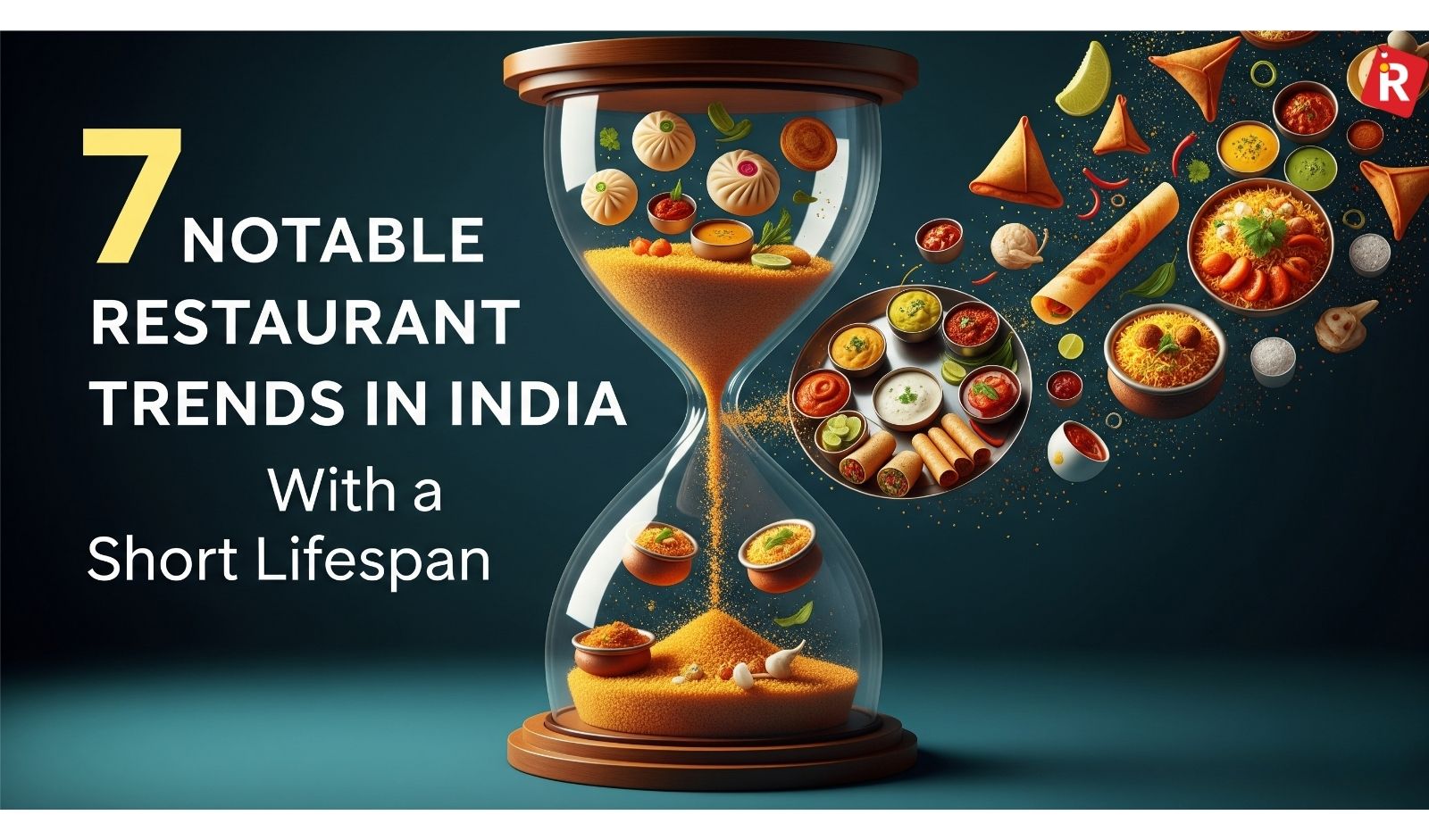
Here are some of the notable restaurant trends that were popular in India for a while but could not make a permanent place for themselves.
1. Molecular Gastronomy Lite
The Trend: Many Indian restaurants, inspired by the avant-garde culinary trend, developed "lite" versions of molecular gastronomy. This included the use of methods such as spherification, foams, and edible "air" to produce visually appealing dishes.
Why It Didn't Last: While the initial visual appeal was evident and sparked social media hype, many restaurants struggled to execute these approaches consistently and with actual nutritional value. Often, the emphasis was on the "stunt" rather than the taste or the entire dining experience. The idea of being extremely experimental and potentially costly without a significant flavor benefit also limited widespread acceptance. The Indian palate, while open to new ideas, ultimately values taste and well-known flavor combinations.
2. Gourmet Burger Mania
The Trend: India saw a boom in "gourmet" burger restaurants, following worldwide trends. They had gourmet patties, handcrafted buns, unusual toppings, and artistic presentations, going above and beyond the typical fast-food options.
Why It Didn't Last: Although high-quality burgers are still in demand, hyper-specialized gourmet burger restaurants frequently struggled with both pricing and customer traffic. Despite their popularity, burgers are frequently thought of as a more informal eating choice. For everyday dining, this view wasn't necessarily supported by the expensive prices of some gourmet burgers. Furthermore, a single, luxury fast-food item's long-term domination proved challenging due to the wide variety of regional and international cuisines that appeal to the Indian palate.
3. American Diner Replicas
The Trend: Many restaurants tried to replicate the retro look, complete with checkerboard flooring, old artifacts, and menus that featured milkshakes, enormous quantities, and comfort food staples, after being inspired by vintage American diners.
Why It Didn't Last: Despite the initial appeal of the theme's originality, many of these restaurants found it difficult to both satisfy Indian palates and accurately depict the spirit of American diner culture. Too bland or out of proportion to the perceived value, the food frequently failed to live up to expectations. Operational expenses were also increased by importing particular ingredients and maintaining the complex theming. In the end, a lot of diners favored either more regional eating options or genuine international experiences.
Check out: 6 Common Ingredients Used in South Indian Cuisines
Top Beers to Try on This International Beer Day
4. Frozen Yogurt Frenzy
The Trend: In Indian cities, frozen yogurt franchises and independent shops quickly expanded in the middle of the 2010s. Its original popularity was driven by its customizable aspect, supposed health benefits (in comparison to ice cream), and choice of toppings.
Why It Didn't Last: There was fierce competition as the frozen yogurt industry soon became overcrowded. The originality of the element faded, and the high sugar and calorie content of the toppings occasionally overpowered the apparent health benefits. Due to its frequent dependence on heavy foot traffic in desirable areas, the business model was prone to variations in real estate prices and shifting customer preferences. Furthermore, for a large portion of the year, the Indian climate prefers warmer deserts.
5. Food Trucks
The Trend: Gourmet food trucks, which served cuisines from mobile kitchens, became a popular idea in metropolitan India. Along with an addition of culinary experience, they offered affordability and comfort.
Why It Didn't Last: Although food trucks are still in use today, the first generation of "gourmet" food trucks had many difficulties. Permit and parking-related regulatory barriers were major obstacles. Some found it challenging to maintain constant quality and hygiene in a mobile system. Operations in various regions of India were also greatly impacted by the monsoon season. The "gourmet" food truck concept failed to carve out an appropriate spot for itself between traditional street sellers and well-known restaurants, although street food is still an essential part of Indian culture.
6. Themed Cafes
The Trend: Intending to create lasting memories with coffee and snacks, cafes with extremely specific themes—from board games and novels to certain fandoms or travel destinations—have appeared in numerous cities.
Why It Didn't Last: Although these cafes initially drew in particular crowds, their long-term success frequently relied on elements other than the theme, like the quality of the food and drinks, the level of service, and the general atmosphere. If the main services weren't appealing enough to keep clients, the theme's freshness might fade. Furthermore, it could be expensive and time-consuming to maintain the particular theming and continuously update the experience.
7. DIY Food Concepts
The Trend: There was a temporary increase in the number of restaurants that offered a wide range of "Do-It-Yourself" alternatives, allowing customers the chance to personalize everything from bowl meals with a variety of ingredients to pasta sauces and pizza toppings.
Why It Didn't Last: Although many people find personalization appealing, its introduction has resulted in problems with food waste, uneven quality control, and longer preparation times. Some diners may find the sheer volume of options overwhelming. It was difficult and expensive for restaurants to keep a large supply of fresh ingredients on hand for essential customization.
What's new: Functional Mushrooms: The Next Big Trend in Beverages and Food Innovation
What Restaurateurs should learn for long-term success
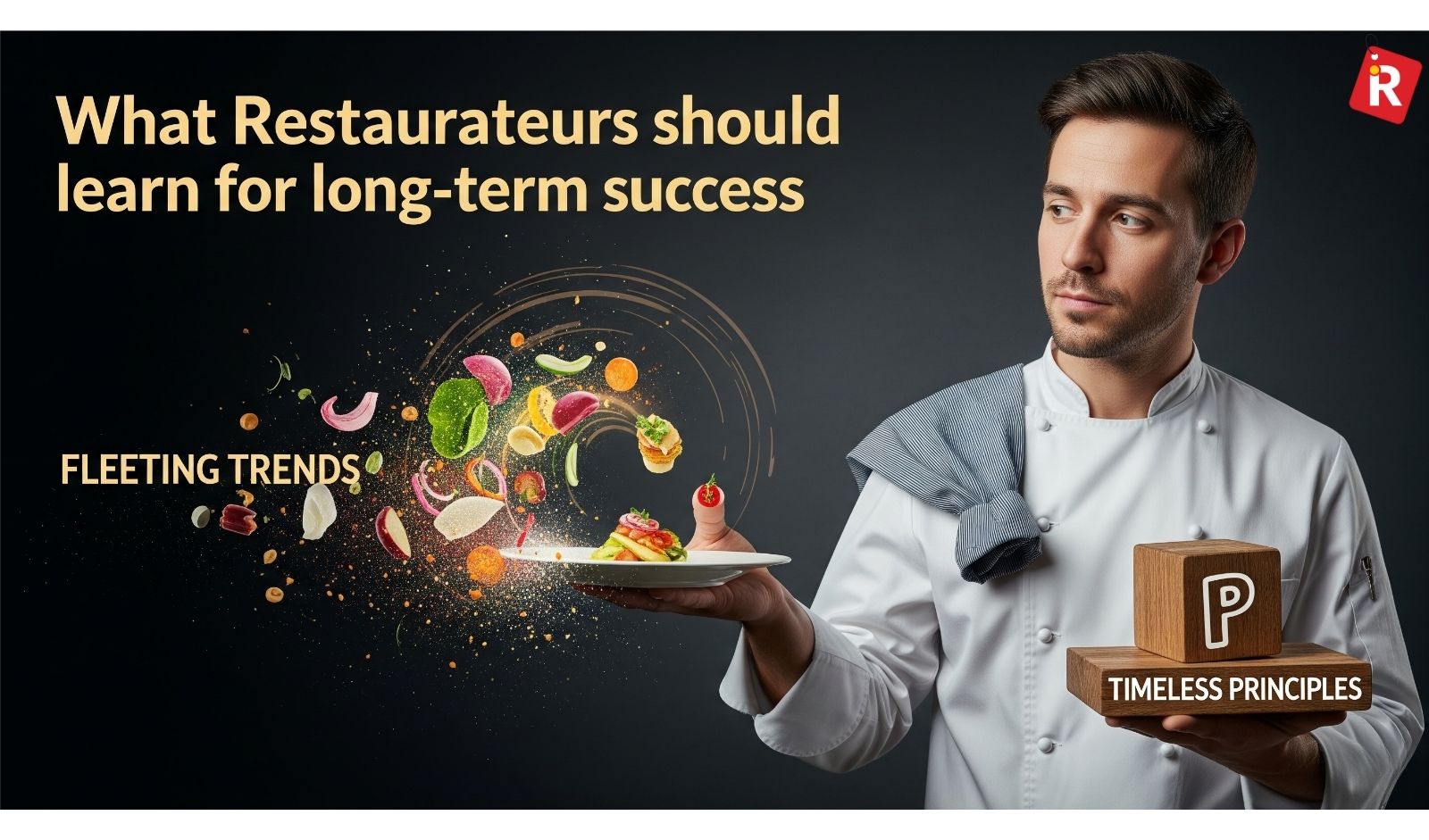
The rise and fall of these trends offer valuable lessons for those looking for success in the Indian culinary scene.
- Focus on Core Quality and Value: While uniqueness may draw in customers at first, sustained success depends on continuously providing top-notch cuisine, first-rate service, and an appealing selling point that encourages return business.
- Adapt to Local Palates: For long-term success in India, it is critical to understand and accommodate local taste preferences, even as it is necessary to embrace global influences.
- Operational Efficiency and Cost Management: It can be challenging to maintain trends that call for complex procedures, pricey ingredients, or high overheads over the long term.
- Genuine Experience and Authenticity: Diners are frequently able to spot flimsy tricks. It's crucial to design a dining experience that is sincere and true to their values and tastes.
- Sustainability Beyond Trends: In the restaurant industry, true sustainability is developing a strong business plan that can adjust to shifting customer tastes and market conditions.
- The Power of Connection and Personalization: Creating a solid link with your customer base by providing them with individualized experiences and sincere interaction can encourage loyalty that goes beyond trends.
Read this: How "Swicy" Dishes Can Transform Your Restaurant's Menu
As new trends emerge and fade, the Indian restaurant business will continue to evolve. Building a solid foundation that includes quality, value, knowing the local market, and developing a sincere relationship with diners is the key to long-term success, even if restaurateurs must remain informed and adjust to shifting consumer tastes. The trends that last are those that skillfully combine innovation with timeless ideas of hospitality and culinary excellence, turning into a treasured aspect of India's rich and dynamic food culture rather than merely a passing trend.

As much as plastic is affordable and a first choice when packaging, it is also the main reason our earth is suffering from undisposable food waste. In a time of increased environmental consciousness, industries with large waste footprints are coming under more and more criticism. Restaurants are at the center of this criticism because of how much they depend on packaging for delivery and takeaway. Many people now view the common single-use plastic container—once a sign of convenience—as an enemy to the environment. However, this dilemma offers a fantastic opportunity for progressive businesses: adopting zero-waste packaging. Making the switch to sustainable packaging is not just a trend; it has several advantages that go beyond environmental conservation, which will eventually improve a restaurant's financial performance and operational stability.
In this article, the revolutionary advantages of zero-waste packaging for restaurants will be examined, along with its definition, environmental necessity, and noticeable advantages in terms of customer loyalty, brand reputation, cost savings, and operational efficiency.
Read more: UK Whisky in India: 8 Brands That Elevate Any Bar Menu
What is Zero Waste Packaging

It's important to fully understand what zero-waste packaging actually means before diving into the advantages. Utilizing "recyclable" materials is only one aspect of it. According to the fundamental principles of "zero waste" (Reduce, Reuse, Recycle, Rot, Rethink), all resources must be made to be sustainably reused, composted, or returned to the environment rather than ending up in a landfill.
This leads to several important sustainable packaging options for restaurants:
- Compostable/Biodegradable Packaging: Packaging made from plant-based materials, such as sugarcane bagasse, cornstarch (PLA), bamboo, or palm leaves, is considered compostable or biodegradable. These are made to organically decompose in commercial composting facilities (and occasionally in household composts) and restore the soil with nutrients.
- Reusable Systems: The ultimate goal of zero waste is reusable systems. It involves putting in place initiatives that allow consumers to return containers for future usage. Examples include working with specialist container-share services or implementing deposit-return programs for takeout containers or reusable mugs.
- Minimalist or No Packaging: Promoting dine-in rather than completely doing away with takeout containers or encouraging customers to provide their own reusable takeout containers, particularly for large orders or drinks.
The goal is to establish a circular economy for packaging, in which materials and products are recovered and regenerated at the end of each service life after being used for as long as possible, and their maximum value is extracted while they are in use.
The Environmental Essentials
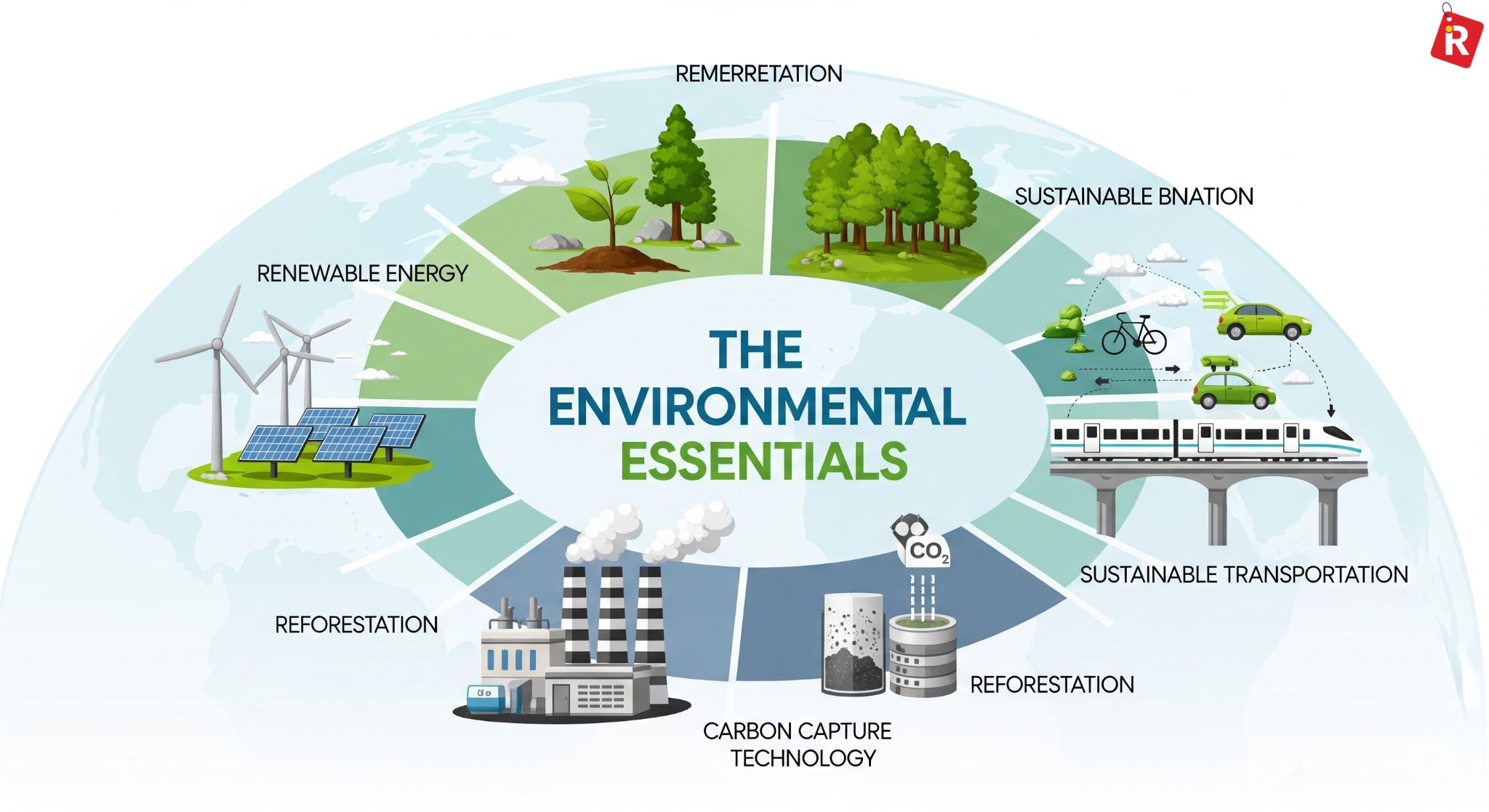
Changing the packaging that produces zero waste is a pressing environmental requirement. In particular, the amount of plastic pollution has increased to concerning proportions, affecting ecosystems all around the world.
Fighting Plastic Pollution: Every year, millions of tons of plastic debris end up in landfills and the ocean, degrading into microplastics that enter our food chain, killing wildlife, and contaminating ecosystems. This challenge is immediately addressed by restaurants implementing zero-trash efforts.
Reducing Carbon Footprint: Traditional packaging's manufacture, shipping, and disposal all have a major impact on greenhouse gas emissions. A restaurant's overall carbon footprint can be decreased by using sustainable packaging, which frequently uses less energy to make, requires less waste to be transported, and doesn't release methane into landfills.
Resource Conservation: Restaurants reduce their dependency on limited resources like fossil fuels (for plastics) and old-growth timber by giving priority to reused or quickly renewable materials. This encourages healthier consumption and the preservation of resources.
Aligning with Global Goals: Environmental responsibility is becoming more and more demanded by investors, governments, and consumers. A restaurant that adopts zero waste is in line with national and international environmental protection goals as well as larger environmental movements.
Know more: 8 Game-Changing Strategies to Expand Your Restaurant Brand
Tangible Benefits for Restaurants

In addition to being morally right, zero-waste packaging makes a strong commercial argument for restaurants and has real benefits.
1. Enhanced Brand Reputation & Image
Values are important in today's market. Customers are increasingly considering a company's environmental and moral practices while making purchases.
- Attracting Eco-Conscious Diners: A sizeable portion of the consumer base actively looks for restaurants that are committed to environmental responsibility. Restaurants may quickly appeal to this expanding market by using eco-friendly packaging, attracting new customers who value sustainability.
- Leadership in Sustainability: A restaurant can establish itself as a trendsetter and leader in the sustainable hospitality sector by pledging to use zero-waste packaging. Customers, competitors in the industry, and local communities can all respect this.
- Good PR and Media Attention: Sustainable projects are newsworthy. Restaurants that use creative zero-waste solutions frequently get favorable press coverage, obtaining priceless earned media that spreads their message and reaches more people without spending money on advertising.
- Market Differentiation: Making an impression is essential in a highly competitive sector. A strong dedication to environmentally friendly packaging develops a unique marketing concept that sets your restaurant apart from competitors who continue to mostly use traditional, wasteful solutions. It demonstrates your restaurant's concern for more than just food.
2. Increased Customer Loyalty & Attraction
Modern diners are very value-driven, especially those from younger generations like Gen Z and Millennials.
- Shared ideals: A stronger emotional bond and sense of loyalty are created when a restaurant's environmental impact activities reflect the ideals of its customers. Consumers are pleased to support a company that shares their values on the environment.
- Word-of-mouth marketing: Happy, environmentally concerned customers are more likely to tell others about their great experiences, including the restaurant's sustainable practices, in addition to the food. This genuine word-of-mouth advertising is very efficient and economical.
- Improved Dining Experience: Even for takeout, many people find that knowing their food is packaged responsibly improves their entire dining experience. Beyond just taste, it offers a level of satisfaction.
What's new: How Awards Can Drive Diners to Your Restaurant
3. Long-Term Potential Cost Savings
Over time, zero-waste packaging can result in significant cost savings, even though there may be an initial expenditure.
- Reduced Garbage Disposal Fees: Municipalities or private garbage haulers will charge less for waste management when there is less rubbish because fewer bins will be collected. This financial advantage is obvious and instant.
- Bulk Purchasing & Reusability: Investing in reusable container systems removes the ongoing expense of continuously buying single-use items, even though the initial cost may be higher. Reusable containers can have significantly lower costs per use over time.
- Avoidance of Future Regulations & Taxes: "Plastic taxes" or complete prohibitions on specific single-use plastics are being implemented by governments all over the world. Restaurants may future-proof their operations and stay clear of possible fines, taxes, or expensive last-minute changes by installing sustainable packaging.
4. Operational Efficiencies
Adopting zero-waste packaging can improve daily operations in addition to lowering direct costs.
- Simplified Waste Management: The back-of-house waste management procedure becomes more structured and effective with separate streams for composting, reuse, and less landfill waste.
- Decreased Storage: By switching to reusable systems, businesses may find that they don't need to keep as much of a variety of single-use packaging, which will save valuable storage space.
- Better Staff Discipline: Establishing a transparent zero-waste policy frequently motivates employees to use resources more wisely and thoughtfully, which results in increased efficiencies.
5. Regulatory Compliance & Future-Proofing
In the commercial world, being ahead of the competition is essential.
- Preventative Compliance: Bans on things like plastic straws, bags, and foam containers are already being implemented in a number of towns and nations. Restaurants can potentially gain a competitive edge by using zero-waste packaging now rather than rushing to comply with upcoming rules.
- Opportunities for Certification: Some areas or groups provide sustainable business certificates, which can improve a restaurant's standing and possibly lead to incentives.
Challenges and Considerations
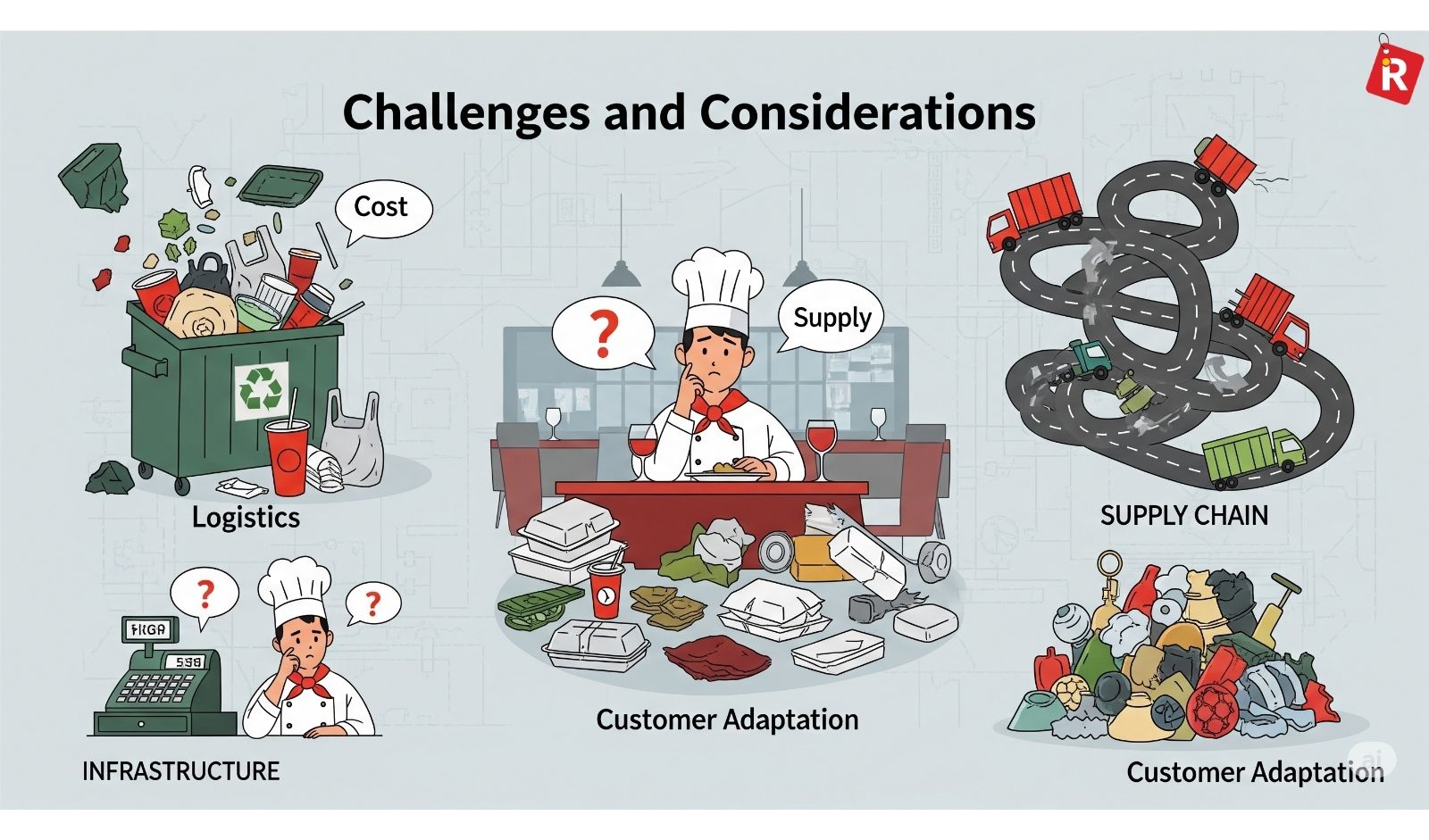
Although switching to zero-waste packaging has many advantages, there are drawbacks as well.
Initial Investment: Compared to traditional plastic, compostable or reusable packaging occasionally has a greater upfront cost per unit. Long-term savings and brand advantages must be considered while evaluating this, though.
Consumer Education: Consumers require clear directions on how to engage in reusable container programs or dispose of biodegradable packaging appropriately.
Logistical Complexity: Keeping track of inventories, handling returns of reusable containers, and making sure that everything is cleaned and sanitized correctly can all add levels of complexity to operations.
Supply Chain Reliability: It can occasionally be difficult to find really sustainable packaging that satisfies all performance standards (such as preservation of heat and grease resistance), requiring strict supplier screening.
Check out: 8 Strategic Pillars to Run a High-Performing Restaurant Franchise
How Carbon-Labelled Menus Attract Eco-Friendly Diners
Implementing Zero Waste Packaging: A Step-by-Step Approach

Examine Your Present Waste: Recognize the kinds and amounts of single-use packaging you presently use. This identifies the places with the greatest influence.
Research and Pilot Programs: Investigate various zero-waste packaging methods through research and pilot projects. To assess durability and consumer approval, begin with a modest pilot program for particular items or during off-peak hours.
Train Employees and Clients: Educate your staff about the new waste and packaging regulations. Using menu notes, signs, and social media, make sure your customers are aware of your sustainable initiatives. Give clear directions for return or disposal.
Collaborate with Reputable Suppliers: Look for suppliers who specialize in sturdy reusable container solutions or certified biodegradable materials. Check their claims and make sure they are consistently supplied.
Communicate Your Commitment: Don't only implement the program; communicate it so people know about this. Promote your environmentally friendly restaurant initiatives on your website, social media, and in-store. This not only informs but also motivates your consumers and community.
Start Small, Scale Up: Begin with one or two critical package items, then progressively expand your waste reduction efforts to cover your entire operation.
Read this: AI‑Driven Dynamic Pricing: The Next Big Shift in Restaurant Revenue Strategies?
Conclusion
The transition to zero waste packaging is more than just an environmental concern; it is a strategic need for modern restaurants. Businesses that use sustainable packaging solutions can considerably improve their brand image, create deeper consumer loyalty, enjoy long-term cost savings, and future-proof their operations against changing laws. In an increasingly sustainable world, restaurants that promote zero waste packaging are doing more than just helping the environment; they are actively constructing a more strong, respected, and successful business.

In today's competitive culinary world, outstanding food and excellent service are no longer enough. In India's diverse and rapidly expanding restaurant ecosystem, how does a restaurant stand out, attract new customers, and build a devoted following? While word-of-mouth continues to be effective, awards and recognition are a strong, sometimes underappreciated trigger. These awards are more than just ornamental trophies; they are strategic assets that can dramatically bring diners to your restaurant, converting reputation into measurable revenue.
The following article will look at the psychology of why diners trust restaurant awards, their direct and indirect advantages, and successful tactics for maximizing their influence in the Indian market.
Read more: 8 Game-Changing Strategies to Expand Your Restaurant Brand
Why Diners Trust Awards

At its foundation, the power of restaurant awards is based on fundamental human psychology. When presented with various options, consumers naturally seek external validation to decrease risk and confirm quality—a behavior particularly pronounced in India's price-conscious dining culture.
Social Proof: According to this powerful phenomenon, people are more willing to trust and embrace actions or decisions that others have already confirmed. An award represents a collective endorsement from professionals, critics, or the general public, indicating that this establishment is worthy of consideration. When diners see an award, they believe, "If it's good enough for them to be recognized, it must be good enough for me."
Perceived Quality and Excellence: Awards, particularly from renowned organizations like the Indian Restaurant Congress & Awards, are associated with high standards. They suggest that a restaurant excels in areas such as culinary innovation, service, ambiance, or specific regional cuisines. This perception of quality immediately raises the restaurant in the diner's perspective, creating the expectation of a better dining experience.
Reduced Decision-Making Risk: Selecting a new restaurant can seem like a gamble, especially in India's vast culinary landscape spanning regional cuisines, street food, and fine dining. Will the food taste good? Will the service be up to par? Awards serve as a reassuring seal of approval, greatly lowering the perceived risk for prospective diners. They give a swift, believable response to the question, "Is this place worth my time and money?"
Exclusivity and Prestige: There is an inbuilt yearning in humans to encounter something renowned or exclusive. Award-winning eateries often create a sense of difference. Diners are lured to the concept of being a part of a famous event, and they may even seek out businesses recognized by prestigious platforms such as the Indian Restaurant Congress & Awards or featured in "Best Of" lists from reputable food magazines and culinary guides.
Indian Restaurant Congress 2025
Indian Restaurant Congress 2025 is India’s premier platform for the restaurant and foodservice industry. The 14th edition brings together the nation’s top restaurateurs, chefs, and hospitality leaders to explore trends, technology, and growth opportunities. Spanning 2 Days with 2000+ Delegates, 500+ Brands, 75+ Exhibitors, and 150+ Awards, it’s the ultimate convergence of innovation, networking, and inspiration.
From insightful summits to cutting-edge showcases, IRC 2025 is where India’s culinary future takes shape.
Know more: 8 Strategic Pillars to Run a High-Performing Restaurant Franchise
How Awards Drive Diners to Restaurants
Beyond psychological influence, awards have very apparent, verifiable effects on getting diners into your restaurant in the Indian market.

Increased Visibility and Awareness
- Media Mentions: Award announcements are frequently covered by local and national media, food blogs, and trade magazines. In India's media-rich environment, this organic PR delivers vital exposure that money cannot purchase, particularly when featured by platforms like the Indian Restaurant Congress & Awards.
- Listings & Guides: Awards get your restaurant listed in influential guides, directories (both print and online), and "best of" compilations, reaching crowds who are actively looking for the greatest eating venues across India's metropolitan cities and emerging food destinations.
- Online Search Impact: Indian diners commonly search for "award-winning restaurants near me," "best [regional cuisine] restaurant in [city]," or "top restaurants in Delhi/Mumbai/Bangalore." Awards help your business rank better in these precise, high-intent searches, resulting in more targeted direct traffic to your website and online profiles.
Amplified Word-of-Mouth Marketing
When a restaurant earns an award, it creates a fascinating topic of talk for customers—particularly important in India's relationship-driven dining culture. Diners are more inclined to promote "award-winning" restaurants to friends and family, which adds credibility and excitement to their recommendations. This unplanned networking increases your reach immensely across India's tightly-knit social communities.
Attracting Tourism and Out-of-Town Visitors
Culinary awards, particularly those with national recognition like those from the Indian Restaurant Congress & Awards, can help a restaurant become a popular tourist attraction. Food tourists, domestic travelers, and international visitors frequently arrange their travels to find recognized dining restaurants, resulting in significant bookings from out-of-towners who might otherwise never discover your business. This is especially valuable in India's growing culinary tourism sector.
What's new: How Carbon-Labelled Menus Attract Eco-Friendly Diners
Enhanced Online Profiles
Popular eating platforms such as Zomato, Swiggy, Google Maps, and TripAdvisor frequently include sections or badges for award-winning restaurants. This promotes your business to millions of users who are actively looking for eating options across Indian cities, encouraging clicks and reservations. A simple award badge can be the determining factor for a diner faced with multiple options in India's crowded restaurant marketplace.
Beyond Just Bringing Diners In
The impact of awards goes far beyond direct customer attraction, affecting many aspects of your restaurant's operation and future growth in the Indian market. There is a chance that if you properly utilise your awards, then it can do much more than just bring diners in.
- Improved Staff Morale and Retention: An award serves as significant validation for your entire team, from the chefs in the kitchen to the front-of-house employees. It promotes pride, morale, and a sense of shared accomplishment. This increased morale frequently translates into better service, which improves the overall dining experience. Furthermore, employees are more inclined to stay with a well-known, successful business, which reduces costly turnover—particularly important in India's competitive hospitality job market.
- Attracting Top Talent: Just as consumers go toward award-winning restaurants, so do brilliant professional chefs and service staff. Working in a recognized atmosphere provides significant experience and status, making your restaurant a more appealing employer for experienced workers looking to progress their careers. This can dramatically boost the performance of your team, especially in India's growing culinary scene.
- Strengthened Supplier Ties: Being an award-winning restaurant can lead to better ties with suppliers. Suppliers may provide access to premium, exclusive, or unusual ingredients with the knowledge that their products will be featured at a prestigious restaurant. This can improve your menu even further, particularly important for accessing India's diverse regional ingredients and specialty products.
- Pricing Power and Perceived Value: Awards are excellent story hooks for journalists and food bloggers. Winning recognition from platforms like the Indian Restaurant Congress & Awards elevates your restaurant's profile, boosting the likelihood of being included in articles, interviews, and television programs. This ongoing media coverage keeps your brand in the public spotlight and strengthens your position as a major dining destination.
- Enhanced Media and Public Relations Opportunities: Awards are excellent story hooks for journalists. Winning an award elevates your restaurant's profile, boosting the likelihood of being included in articles, interviews, and television programs. This ongoing media coverage keeps your brand in the public spotlight and strengthens your position as a major dining destination.
- Brand Building and Equity: Each award increases your restaurant's overall brand equity. It helps define your identity, differentiates you from competitors, and creates a stronger, more recognizable brand image that appeals to discerning Indian diners across diverse market segments.
Check out: How "Swicy" Dishes Can Transform Your Restaurant's Menu
AI‑Driven Dynamic Pricing: The Next Big Shift in Restaurant Revenue Strategies?
Strategies for Utilizing Your Awards
Winning an award is only the beginning; the real magic occurs when it is effectively presented to the public in India's unique market context.
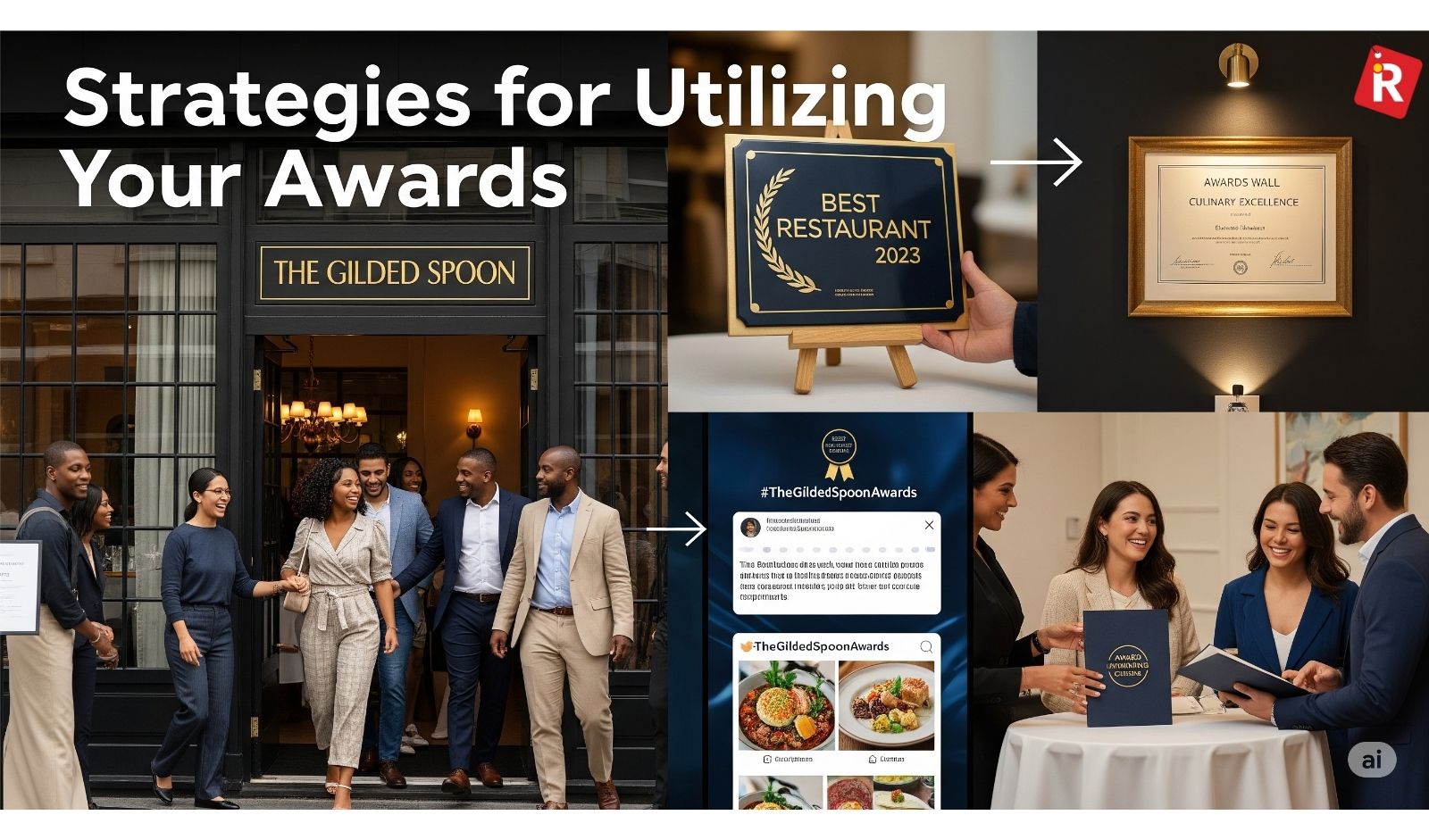
1. Prominent Physical Display
- Plaques and Certificates: Place awards noticeably near the entryway, hostess stand, or main dining area.
- Window Stickers: Use stickers on your front windows to draw the attention of pedestrians—particularly effective in India's busy commercial areas.
- Signage: Outdoor signs should include references to awards, if authorized.
2. Maximize Your Digital Footprint
- Website: Create a special "Awards" page on your website, complete with high-quality photographs of the awards and links to the awarding authorities. Place awards prominently on your homepage, "About Us" page, and even your online booking widget.
- Social Media: Use engaging pictures and genuine thank-you notes to announce wins on all platforms (Instagram, Facebook, X, etc.). Run targeted ad campaigns to highlight your awards, particularly effective for reaching India's highly active social media user base.
- Email Marketing: Send out unique newsletters to your subscriber list, announcing new awards and inviting them to enjoy the acknowledged quality.
- Online Listings: Update your profiles on Google My Business, Zomato, Swiggy, TripAdvisor, and other relevant directories with your new awards.
3. Strategic Communication
Press Releases: Create and send professional press releases to local and national food media, lifestyle editors, and business journals as soon as an award is announced, particularly when recognized by prestigious platforms like the Indian Restaurant Congress & Awards.
Chef and Staff Spotlights: Highlight your crew in award-related pieces to give recognition where it is due and humanize your business.
4. Menu Integration
Subtle Mentions: Place a little statement such as "Award-Winning [Dish Name]" or a small award emblem next to recognized dishes on your menu.
Special Menus: Create tasting menus or special deals, including award-winning dishes that showcase regional Indian flavors and innovations.
5. Staff Empowerment
Training: Ensure that all front-of-house staff understand the awards, what they represent, and how to enthusiastically discuss them with diners.
Pride: Create a culture in which employees are proud of the restaurant's achievements.
Read this: Neuro‑Gastronomy: The Science Behind Immersive Dining Experiences
6. Collaboration and Partnership
Awarding Bodies: Collaborate with organizations like the Indian Restaurant Congress & Awards to use their platforms for further promotion.
Influencers: Invite food bloggers and influencers to try your award-winning meals—particularly effective in India's influencer-driven food culture.
7. Paid advertisement
Ad Copy: Add award mentions to your digital and print ad content to boost credibility and increase the number of clicks across India's diverse advertising landscape.
Keep Your Momentum
While awards are a great motivator, their long-term influence depends on continuous success. Awards are a recognition of prior success, but customers will only return if the quality and experience are continually excellent. Use awards as a benchmark, a motivator to keep innovating, upholding high standards, and never resting on your achievements. They are an effective tool for opening doors, but long-term success requires continually providing an outstanding eating experience that meets the evolving expectations of Indian diners.
Conclusion
Awards are much more than just trophies in India's very competitive restaurant business—they are also very useful marketing tools. Try to understand the psychology that influences diner choices and effectively utilize recognition across all connections. By doing this, restaurants may greatly increase their visibility, establish credibility, draw in new customers, and eventually guarantee a long-term formula for success in India's dynamic culinary landscape. Aim for recognition through platforms like the Indian Restaurant Congress & Awards, strive for excellence, and observe how the recognition attracts customers to your business.

The advancement in technology and education has made consumers more aware of carbon emissions. This change has resulted in people actively seeking and analyzing carbon labels on most products, strongly influencing their purchase decisions and demanding greater transparency from businesses. This has also influenced the restaurant sector, where now people want to know if their food choices are having a big impact on the environment. The rising wave of eco-consciousness, driven by increased awareness of climate change, resource depletion, and ethical consumption, is fundamentally changing shopping behaviors.
While customers want to make sustainable choices, they frequently lack clear, actionable information when presented with a restaurant menu. This is where carbon-labeled menus appear as a revolutionary answer. By publicly presenting each dish's carbon footprint, restaurants can help diners align their ideals with their plates. This article will explain how embracing carbon analysis and visible carbon labels not only demonstrates a strong commitment to the planet's well-being but also serves as an undeniable magnet for a growing number of eco-friendly diners, giving your restaurant a significant competitive advantage and increasing the appeal of your brand.
Read more: AI‑Driven Dynamic Pricing: The Next Big Shift in Restaurant Revenue Strategies?
The Rise of the Eco-Conscious Diner

Understanding the motivations of this rising consumer sector is critical to realizing the benefits of carbon-labeled meals. Their beliefs are changing the whole concept of a desirable dining experience.
A Global Shift in Values
Across continents, there is a noticeable growth in knowledge of climate change and its serious consequences. Consumers are becoming increasingly aware of their individual and collective environmental impact. This increased sense of responsibility affects all aspects of their lives, including what they eat and where they choose to dine. They are looking for products and businesses that share their desire for a more sustainable future.
Millennials and Gen Z Driving the Change
This demographic shift is most noticeable among Millennials and Generation Z. These generations, who are among the most influential customers in India and around the world, regularly prioritize sustainability, ethical sourcing, and environmental responsibility while making purchase decisions. They are not only actively looking for environmentally friendly products and services, but they are also willing to pay a premium for them. Restaurants must capture this segment's devotion to maintain long-term growth and appeal.
Moving from "What's in it?" down to "What's its impact?"
The customer's need for information has increased. While nutritional information, calorie counts, and ingredient lists are still important, the focus has shifted to cover the full food lifecycle. Diners increasingly demand to know the environmental story of their food, including how it was created, how far it went, and its overall footprint. Due to this, the restaurant needs to have increased transparency from food providers.
Know more: Neuro‑Gastronomy: The Science Behind Immersive Dining Experiences
Demand for Transparency
Consumers are growing more and more suspicious of uncertain promises due to information overload, leading to a demand for transparency. They seek specific, verifiable information about a product's origins and impact. Restaurants that provide this level of transparency establish a stronger foundation of trust and credibility with their customers, differentiating themselves in a crowded industry.
The "Conscious Consumer" in India
India's "Conscious Consumer" movement reflects a growing awareness of environmental issues. Personal values, global trends, and local environmental concerns are all driving an increasing desire for sustainable options among urban people. This means that embracing sustainability, including carbon-labeled menus, is not simply a global trend but a directly applicable and increasingly crucial strategy for restaurants operating throughout India, from bustling metropolises to prosperous villages. They represent a major and rising market niche that is actively searching out sustainable food options.
What is a Carbon-Labeled Menu?

Defining Carbon Footprint in Food
A dish's carbon footprint is its total Greenhouse Gas (GHG) emissions, calculated in kilograms of CO2 equivalent (kg CO2e), across its whole lifecycle. This "farm-to-fork-to-waste" path includes all stages, from ingredient production to final consumption and disposal. It is a complete assessment of the environmental cost of your meal.
Components of a Dish's Carbon Footprint:
- Ingredient Sourcing: This is frequently the major contributor. The type of food is essential; for example, meat and dairy products have a substantially higher carbon footprint than plant-based alternatives due to variables such as land use, methane emissions from livestock, and feed production. Farming methods (for example, organic vs. conventional and regenerative agriculture) have an impact on this.
- Transportation: The distance traveled by ingredients from farm to restaurant, as well as the mode of transportation (air transport being the most carbon-intensive), all contribute considerably to the footprint.
- Energy Use: The energy used in kitchen operations, such as refrigeration, cooking (ovens, stovetops), and lighting, adds to total emissions.
- Waste: Food waste, ranging from preparation scraps to uneaten portions, as well as the disposal of packaging trash (non-recyclable items that wind up in landfills), produces methane, a strong greenhouse gas.
How It's Calculated (Simplified)
Calculating a dish's carbon footprint requires complicated life cycle assessments (LCAs). Restaurants frequently employ specialist software tools, engage with sustainability firms, or incorporate certified databases that offer emission factors for specific items and operations. While the detailed calculation is complex, the end result is a simple figure or rating that may be simply displayed.
Check out: 8 Game-Changing Strategies to Expand Your Restaurant Brand
What Carbon Labels Look Like
Carbon labels come in a variety of consumer-friendly designs. They may display the actual kg CO2e figure next to a dish, use simple "low carbon" icons, or employ a traffic signal system (green for low impact, amber for medium, and red for high). The goal is always to provide clarity and ease of understanding to the diner.
"Climate-Optimized" Menus
Understanding the carbon impact of each item and dish can help restaurants create climate-friendly menus. This means making creative menu design decisions that lower total emissions while maintaining taste and quality. This includes tactics such as increasing plant-based alternatives, prioritizing local sourcing, and reducing waste, all of which have a direct impact on the restaurant's carbon footprint.
How Carbon Labels Attract Diners
Beyond environmental responsibility, setting up carbon-labeled meals provides significant business advantages by directly appealing to the ideals of an expanding customer base.
- Transparency Builds Trust: In a society suspicious of fake news, clearly presenting a dish's environmental impact lends instant trust. Diners feel confident in supporting a restaurant that is truly committed to sustainability, building a stronger connection and trust with your brand.
- Empowering Informed Choices: Carbon labels provide critical information that environmentally concerned customers actively seek. This enables customers to actively choose foods that reflect their particular values while reducing their environmental impact, making a meal into a meaningful act of conscious sustainability.
- Education and Awareness: These labels quietly educate customers on the environmental impact of various food choices and sourcing. Over time, this information promotes more conscious eating behaviors, both in your restaurant and in their daily lives, establishing your business as an agent for positive change.
- Positive Brand Image and Differentiation: Being the first to take advantage of carbon labeling establishes your restaurant as a sustainability leader in a competitive market. This strategic method attracts rich, educated, and ethically conscious consumers, resulting in a devoted customer base and beneficial PR and media coverage.
- Fostering Shared Responsibility: Carbon labels encourage diners to actively engage in your sustainability journey. By selecting climate-optimized foods, they feel a sense of shared responsibility for environmental goals, which improves their overall dining experience and fosters a strong, value-driven community around your business.
Implementing Carbon Monitoring & Optimizing Your Menu
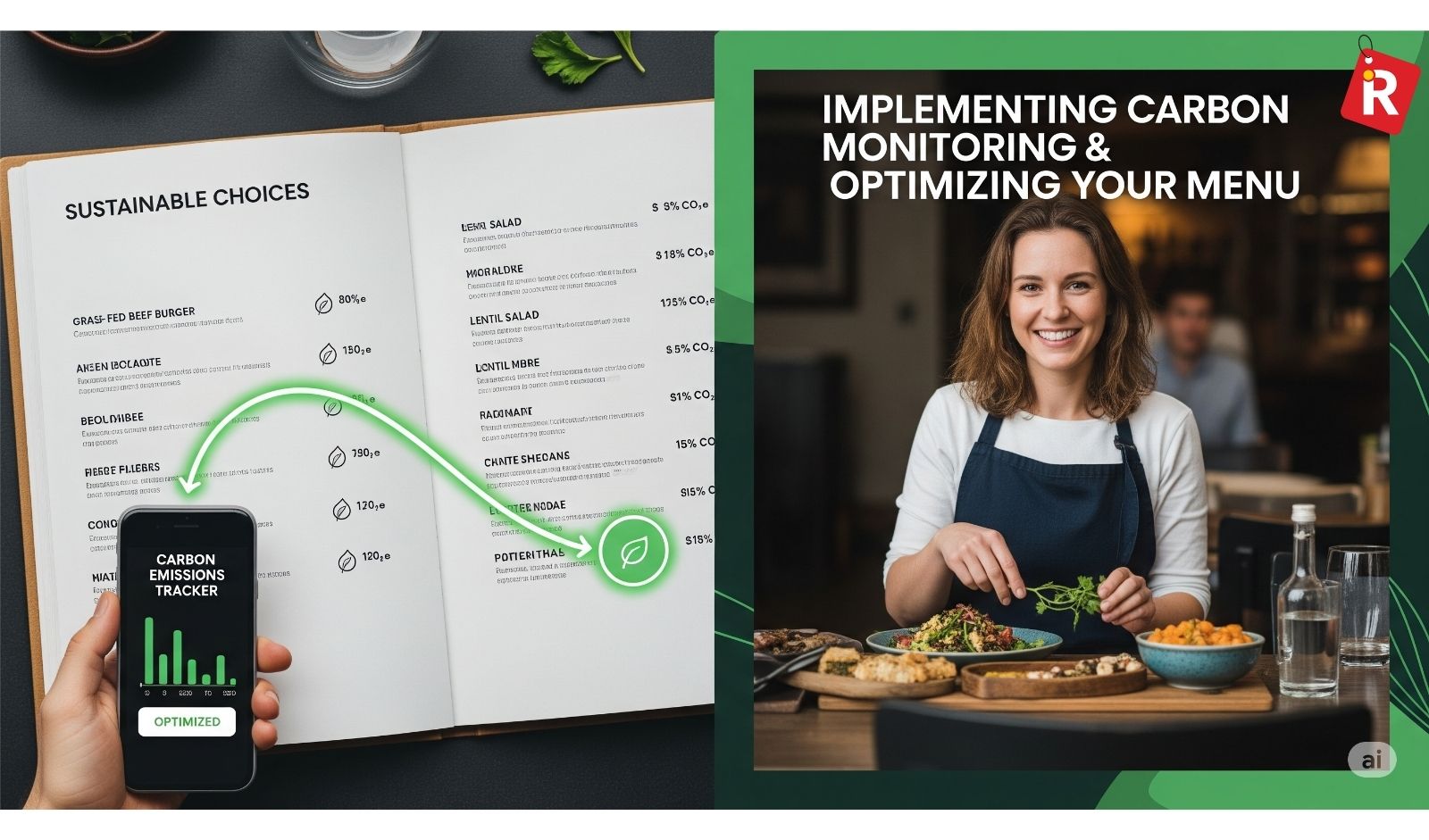
Getting Started with Carbon Profiling
To begin carbon profiling, start by measuring your dishes' footprints correctly.
Choose your method: Several approaches exist. You can collaborate with specialized sustainability consulting organizations, use dedicated software solutions that interact with your inventory and recipes, or look into simpler models for initial assessments. Some current POS systems are starting to include simple carbon calculating features.
Data Collection: This involves methodically recording data connected to your activities, including energy bills (electricity and gas), thorough supplier information for all ingredients (origin and farming methods), transportation logs, and extensive waste data. Accurate data is essential for creating convincing carbon labels.
What's new: How "Swicy" Dishes Can Transform Your Restaurant's Menu
Designing "Climate-Optimized" Menus
Once you understand the carbon footprint, you may strategically tailor your products.
- Prioritize Plant-Based Dishes: This is perhaps the most significant shift. Highlight how vegetarian and vegan options have a substantially smaller carbon footprint. Encourage creativity by serving plant-based recipes that are just as tempting (if not more so) than meat-based options. Focus on flavor and innovation to make low-carbon food appealing.
- Local and seasonal sourcing: This reduces transportation emissions by sourcing ingredients from local farms and providers. Emphasize the freshness and low environmental impact of these foods in your menu. This also benefits local economies and reflects a growing customer appetite for "farm-to-table" experiences.
- Reduce Food Waste: Establish strict food waste management policies. This includes exact portion management, creative use of all sections of ingredients (for example, root-to-stem cooking), distributing edible surplus food, and strong composting systems for unavoidable trash.
- Eco-Friendly Packing: For takeaway and delivery services, use compostable, recyclable, or reusable packing materials. Communicate with customers about your efforts to reduce plastic and non-biodegradable garbage.
- Energy Efficiency: To reduce operating carbon dioxide emissions, invest in energy-efficient kitchen equipment (ovens, freezers, dishwashers) and use energy-saving practices (for example, shutting off equipment when not in use).
Read this: 4 Easy High-Protein Egg Recipe Ideas For A Post-Workout Boost
A Taste of a Greener Tomorrow
Carbon-labeled menus are far more than a passing trend; they represent a potent combination of customer ideals, responsibility for the environment, and smart economic strategy. By embracing carbon profiling, restaurants can achieve remarkable transparency, enabling their customers to make really informed decisions and greatly improving their brand reputation.
Implementing a climate-optimized menu is more than just an option; it's an interesting competitive advantage that appeals to both the palate and the conscience. In an increasingly impact-driven world, demonstrating your commitment to a greener future places your restaurant as a true leader in sustainable culinary.

In the ever-changing culinary world, staying ahead of other restaurants requires not just mastering traditional flavors but also embracing new and emerging dishes and adding them to your menu. According to recent trend reports, one such global phenomenon likely to dominate menus in 2025 is the tempting combination of sweet and spicy, fittingly named "swicy." This powerful and complex flavor combination appeals to adventurous customers seeking an exciting and profound culinary experience that goes beyond the simple sweetness or spiciness.
While "spicy" elements may be present in some Indian dishes, a thoughtful and planned approach to this trend provides a significant opportunity for restaurants across India, from bustling Quick Service Restaurants (QSRs) to upscale fine-dining establishments in metropolitan cities, to update their menus, attract a larger audience, and establish themselves as flavor innovators. This article will dive into the "swicy" trend, examine its possibilities in the Indian context, present concrete menu fusion techniques, and highlight the compelling reasons why Indian restaurants should embrace this exciting flavor rush.
Read more: 8 Game-Changing Strategies to Expand Your Restaurant Brand
Understanding the "Swicy" Sensation
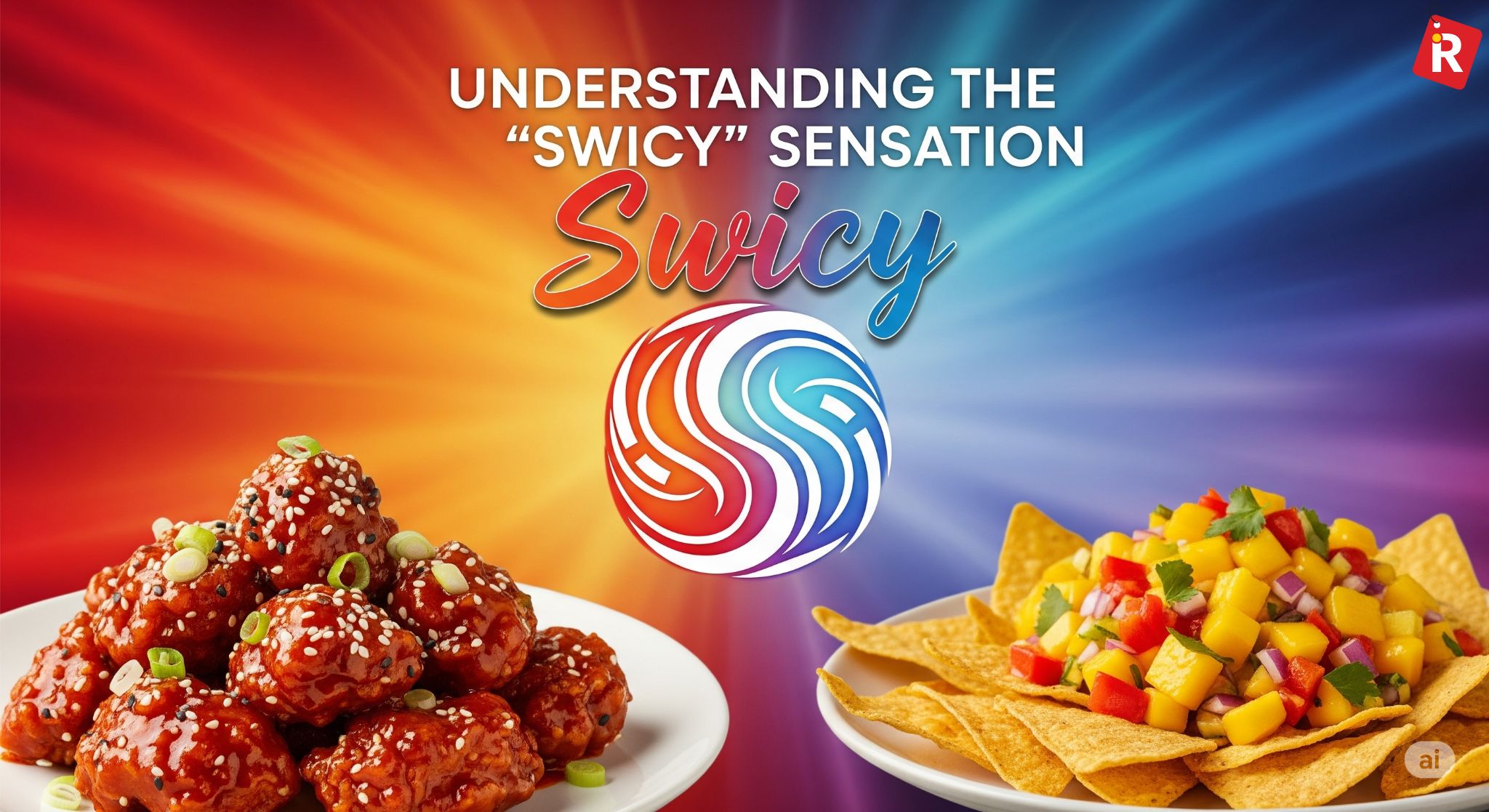
The "swicy" flavor profile involves more than simply adding sugar to chili. It's a meticulously crafted blend of sweetness that seduces the palate and heat that delivers a startling kick, resulting in a multidimensional flavor experience that remains and fascinates.
The Appeal of Complexity
In a world overloaded with predictable flavors, "swicy" foods are a pleasant change. They activate numerous taste receptors at once, resulting in a complex and pleasing sensation. The initial sweetness is frequently a pleasant introduction, followed by a gradual or immediate warmth that can range from a gentle tingle to a more intense heat. This contrast keeps the palate hooked and wanting more.
Global Roots, Universal Appeal
While the term "swicy" is relatively new, the idea of balancing sweet and spicy flavors has its origins in many different global cuisines. Consider Korean gochujang-based meals, Chinese sweet and sour sauces with a chili kick, Thai sweet chili sauces, or the slight sweetness found in some Mexican mole sauces. This global presence demonstrates a common human desire for this captivating flavor dynamic.
The Swicy Indian Palate
Surprisingly, the Indian palate is no stranger to the sweet-spicy combination. Many traditional cuisines combine mild, sweet undertones with spice. Consider the hint of jaggery in certain hot curries, the sweetness of caramelized onions with chiles, or the sweet-sour-spicy flavors in some chutneys and pickles. This natural familiarity provides a solid platform for Indian diners to accept more pronounced "spicy" options.
Know more: 4 Easy High-Protein Egg Recipe Ideas For A Post-Workout Boost
Beyond Simple Sweetness & Heat
The success of "swicy" is dependent on the quality of both the sweet and spicy ingredients. Natural sugars, honey, fruits, and caramelized veggies can all provide sweetness, each with its own distinct flavor. Similarly, the heat might come from a variety of chilies, peppercorns, or ginger, each with its own intensity and flavor character. The goal is to carefully choose and balance these components in order to achieve a pleasant and thrilling flavor combination.
The "Adventure" Factor
Today's customers, particularly younger generations, are more adventurous and willing to try new flavor combinations. "Swicy" foods respond directly to this urge for culinary exploration, providing a sense of adventure and discovery on the menu. This may be a powerful tool for attracting new customers and keeping your services fresh and relevant.
How "Swicy" is a Game-Changer for Indian Restaurants
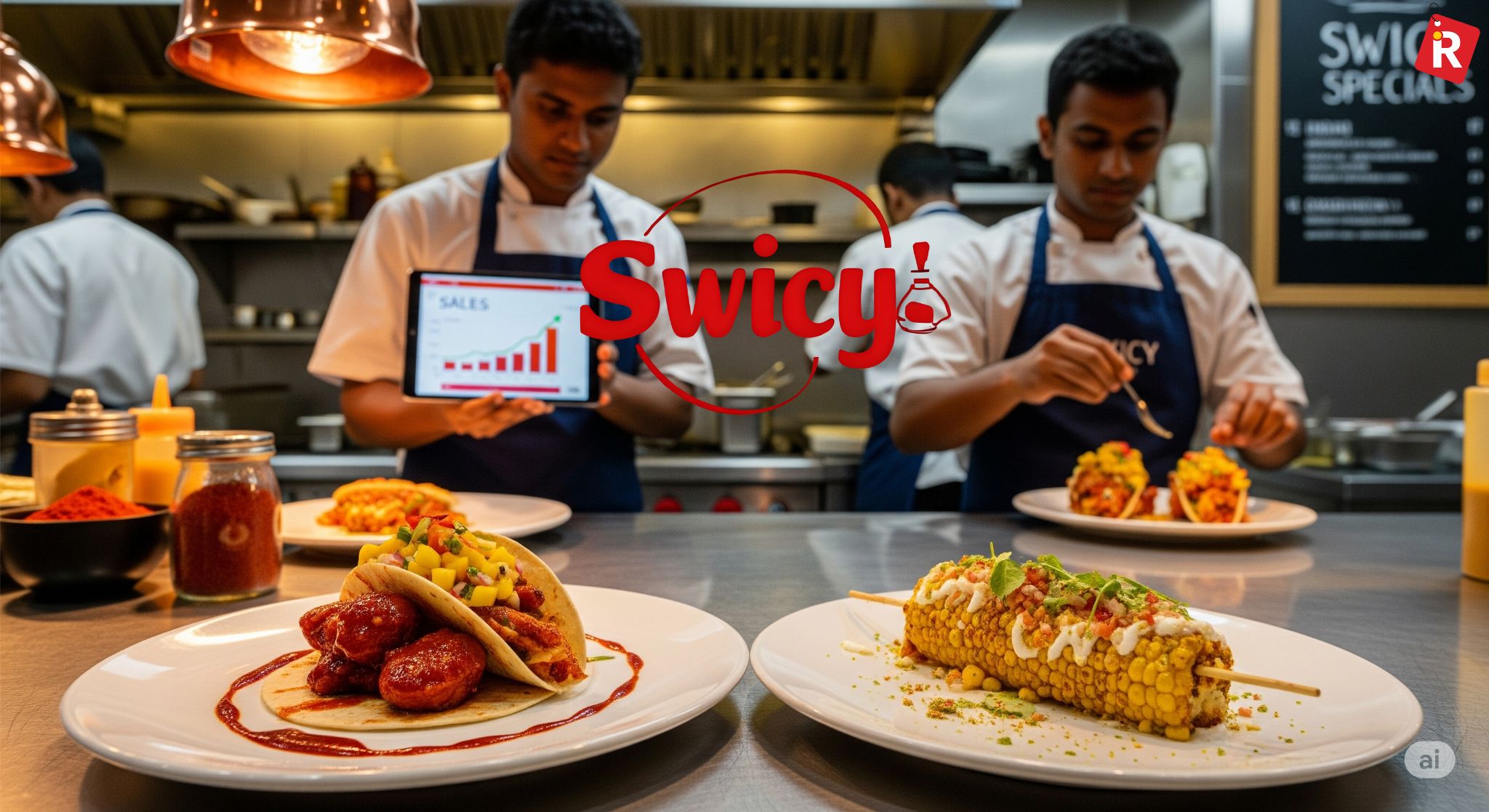
With restaurants looking for changes in the menu to attract more diners, embracing the "swicy" trend provides numerous appealing benefits in India's diversified culinary scene.
- Attracting a Broader Audience: The balanced nature of "swicy" may appeal to a broader range of tastes. The early sweetness may appeal to individuals who are wary about hot food, while the ensuing spiciness gives the excitement that adventurous diners want. This dual appeal can help restaurants reach previously overlooked consumers.
- Menu Differentiation & Innovation: In a competitive market, presenting innovative and trend-forward meals is critical for uniqueness. Adding "swicy" dishes onto your menu on purpose might help you portray your restaurant as an innovator, indicating that you are aware of global food trends and prepared to push flavor boundaries. This might create buzz and draw media attention.
- Increased Perceived Value: The complex nature of "spicy" flavors can frequently contribute to a sense of more culinary knowledge and innovation. Diners may be willing to pay more for foods that provide a more varied and thrilling taste experience than traditional sweet or spicy selections.
- Versatility Across Cuisines: The "swicy" notion is not limited to a single cuisine. It can be smoothly blended into a variety of Indian regional cuisines, as well as fusion and global options. Consider a Goan Vindaloo with a touch of palm sugar for balance, a Tandoori chicken with a honey-chili coating, or a South Indian curry with the sweetness of coconut milk compared against scorching chiles. The options are endless, allowing for creative exploration within your current menu framework.
- Potential for Signature Dishes: Creating unique and interesting "spicy" foods can become signature dishes that people might specifically seek out at your restaurant. These can be effective brand distinctions and dramatically increase customer loyalty.
- Catering to the Growing Globalized Palate: With increased exposure to various cuisines, Indian customers are becoming increasingly open to global flavor combinations. "Swicy" meals appeal to this developing palate, providing a familiar yet attractive variation on traditional tastes. This is especially important in urban areas and tourism locations around India.
What's new: How to Make a Healthy Dessert With Just 5 Ingredients
Strategically Blending "Swicy" into Your Menu

For every restaurant, constantly making changes in the menu to attract more customers is a big part of their operations. And adding a new menu item requires careful consideration. Therefore, successfully adding "spicy" dishes needs an organized and planned strategy. Here are concrete steps that Indian restaurants should consider:
Start with Research & Inspiration
Explore global cuisines with sweet and spicy ingredients. Analyze successful "spicy" meals from overseas cuisines and uncover flavor combinations that appeal to the Indian taste. Look for inspiration in regional Indian recipes with a sophisticated sweet-spicy balance.
Identify Core Menu Items for "Swicy" Transformation
Consider which foods on your menu could be improved with a "spicy" twist. Consider appetizers, main dishes (both vegetarian and non-vegetarian), and even sides and sauces. For example, may a honey-chili marinade be used to improve a basic paneer tikka? Could a jaggery-soy glaze with a hint of Sichuan peppercorns enhance a vegetable stir-fry?
Experiment with Natural Sweeteners
Try alternatives to refined sugar. For a variety of taste combinations and levels of sweetness, try honey, jaggery, date syrup, fruit purees (mango, pineapple), caramelized onions, or even a dash of maple syrup.
Master the Art of Heat Infusion
Improve your heat infusion skills by learning about Indian chiles, ginger, white pepper, and black peppercorns. Experiment with various heat-incorporation methods, such as fresh chilies, chili powders, chili oils, or fermented chili pastes, to get the necessary intensity and taste variety.
Check out: Best Theme Idea for a Rooftop Restaurant: A Starlit Bohemian Escape
Balance is Key—The Swicy Ratio
The precise balance of sweetness and heat is required for "swicy" to be successful. Experiment with different percentages to find the sweet spot that your target audience likes. Consider offering several levels of "spicy" intensity on your menu (e.g., mild, medium, and hot) to accommodate varying tastes.
Provide "Swicy" Sauces and Glazes
Adding "swicy" sauces or glazes to current dishes can be a low-risk method to explore the trend. For appetizers, provide a honey-mustard-chili dipping sauce, and for grilled meats or veggies, use a sweet-soy-ginger glaze.
Highlight "Swicy" Dishes on Your Menu
Use descriptions on your menu to highlight the "spicy" quality of these items. To grab customer interest, highlight a mix of sweet and spicy sensations. Consider adding a specific "Swicy" icon or category to your menu.
Train your staff
Ensure that your service personnel understand the "swicy" concept and can accurately describe the flavor profiles of these dishes to customers. They should be able to lead new diners through this trend and make recommendations based on their spice tolerance.
Gather customer feedback
Actively seek feedback on your "swicy" products. This will allow you to better identify what connects with your clients and adjust your recipes accordingly. Use surveys, comment cards, or online reviews to evaluate their responses.
Promote your "Swicy" creations
Use your marketing channels (social media, website, and email newsletters) to promote your new "spicy" cuisine. Use eye-catching photos and interesting descriptions to convince customers to try them. Consider organizing special discounts or tasting menus that highlight your "swicy" inventions.
Read this: 7 Strategies to Focus on While Targeting New Age Customers
Embracing the Future of Flavor
The "swicy" flavor revolution provides a big potential for Indian restaurants to add excitement, innovation, and broader appeal to their menus. Understanding the minute details of this captivating flavor combination and carefully incorporating it into their menus allows restaurateurs to attract innovative guests, differentiate themselves from competitors, and eventually improve their culinary reputation and earnings. The Indian palate, which is already used to the complex interplay of sweet and spicy, is ready for this culinary evolution. By embracing the "swicy" revolution, Indian restaurants can boldly put themselves at the center of flavor creation, catering to the changing tastes of a globalized and increasingly adventurous customer base.

Pricing in restaurants is going through a change. Many restaurants around the world are now using a new way to decide prices. It is called dynamic pricing. In this method, the price of food does not stay the same all day. It goes up or down at different times. The change depends on many things. It can change because of the time of day. It can change because of the season. It can also change if there is rain or heat. Sometimes it changes when there is more demand.
A study done in 2024 by NetSuite talks about this trend. It says that this idea was first used in hotels and airlines. Now, restaurants are starting to use it too. The reason is simple. It helps them fill more tables. It also helps them earn more money when the place is busy. During slow times, it helps them bring in guests with lower prices. Many restaurants in other countries have started to use this way. It is slowly becoming an important tool for food businesses.
Read more: Best Theme Idea for a Rooftop Restaurant: A Starlit Bohemian Escape
Top 7 Food Safety Practices Every Restaurant Should Follow
What is AI-driven dynamic pricing?
Dynamic pricing is a method that uses data to set prices in restaurants. It studies when people visit. It also studies how busy the place is. It even considers things that happen outside, like weather or events in the city. With this information, the system gives a price for each dish at that time. The idea behind it is very simple. When more people want to eat, the price becomes a little higher. When fewer people come, the price goes down.
This way, restaurants can earn more when demand is high. They can also attract more people during quiet hours. It helps them balance sales across the day. It also allows them to plan better and waste less food. Dynamic pricing is becoming a smart tool.
How AI helps restaurants
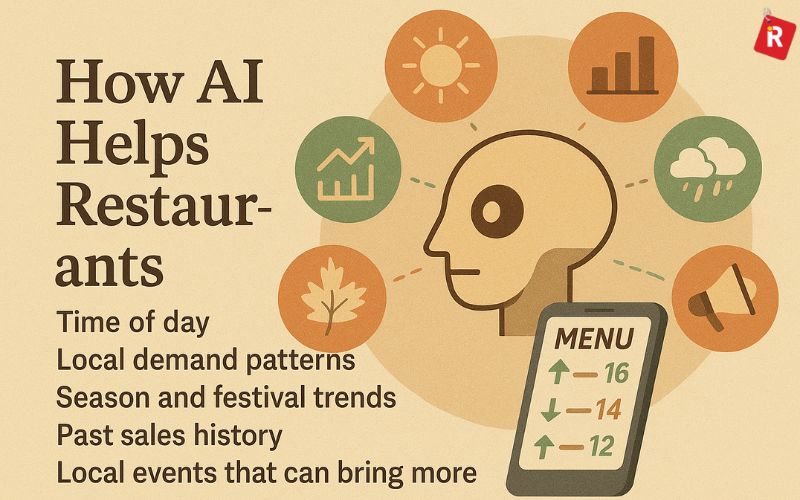
AI tools do more than just change prices. They study:
- Time of day
- Local demand patterns
- Season and festival trends
- Past sales history
- Weather and traffic
- Local events that can bring more diners
All these details allow restaurants to plan better. Busy hours are used to make more money. Slow hours are used to attract guests with lower prices or discounts.
Global adoption of dynamic pricing
Some fast-casual brands in the US, like Chipotle and Panera, have tested price changes at different times of day. In Asia-Pacific, several restaurants in Singapore and Japan are using dynamic pricing to match busy lunch rushes or weekend dinner peaks. These tests show that small price shifts can lead to higher table occupancy and less food waste.
Know more: Sustainable Restaurant Practices That Attract More Customers in 2025
Why does it work for restaurants
- More sales during peak hours
- More guests during slow hours
- Less food thrown away
- Better planning for staff and inventory
- Special offers for loyal customers
AI tools also make it easy to connect with digital menus and delivery apps. This means restaurants can change prices on dine‑in menus and online apps at the same time.
What about India?
In India, this trend has not picked up yet. Very few restaurants use data-driven pricing. It is also not widely discussed in trade magazines or conferences.
Why? There are a few reasons:
- Technology costs and lack of trained teams
- Concerns about how guests will react if prices keep changing
- Most restaurants still use fixed printed menus
But there is potential. In cities like Mumbai, Delhi, and Bengaluru, delivery apps and cloud kitchens are already using data to plan offers. Dynamic pricing could be the next step.
Also check: Plant-Based, Fermented & Functional: Healthy Menu Ideas That Sell in 2025
Points to consider before using dynamic pricing
- Be transparent – Tell guests why prices change.
- Start small – Test with one category like coffee or desserts.
- Use AI as an assistant – Let it suggest prices, but take the final call.
- Keep customer trust – Avoid sudden, big changes.
The Future Ahead
Dynamic pricing is expected to play a bigger role in how restaurants manage their earnings. In the coming years, smart systems may act like a partner to restaurant owners. These tools will not just suggest prices. They will also study sales and guide what items to stock. They will help managers decide the number of staff needed on busy days. They will even suggest the best time to run offers to bring more people in.
The restaurant industry is slowly moving towards decisions based on data rather than guesswork. Those who start to understand this now will have an advantage. When the market changes and more restaurants use this method, early learners will be ready. It is not just about higher prices. It is about planning better, saving costs, and using smart tools to grow a food business in the future.
Check more: Rapido Food Delivery Strategy: A New Game Plan to Beat Zomato & Swiggy
10 Best Commercial Food Processor Brands in India
The Bottom Line
AI-driven dynamic pricing is still a new idea for the food service industry. It is already changing how restaurants think about pricing and revenue. In many Western countries, restaurants are testing and using this system. They are learning how small price changes can make a big difference in sales.
In India, this method is still at an early stage. Very few places have tried it. This gives Indian restaurants a chance to learn and act before others. Dynamic pricing will not replace chefs or managers. It will only make decisions smarter. It will help owners plan prices in a better way. For restaurants that want to grow, this is a good time to explore the system. It could become an important step for future success.

Rooftop restaurants have become a favorite in every city. People enjoy food more when there is a view. The open sky, fresh air, and lights of the city make the place feel calm. A rooftop dinner feels like a small break from a busy day. However, only a good view is not enough today. People want something more. They look for a mood, a story, and an experience. A theme makes a restaurant special. It gives people a reason to return and talk about the place.
One strong idea is a Starlit Bohemian Escape. This theme mixes nature, art, and light. It has warm lights and lanterns hanging above. Cushions, low tables, and soft rugs make the place feel cozy. Natural décor like wood and plants adds to the charm. Soft music plays in the background. Guests feel like they are far away from the city even though they are on a rooftop. This setup is simple, but it feels dreamy and romantic. It is a place where people can eat, relax, and enjoy every moment.
Read more: Top 7 Food Safety Practices Every Restaurant Should Follow
Different Types of Bars to Explore in 2025: Where Drinks Meet Vibes
The Winning Concept: A Starlit Bohemian Escape
Soft fairy lights shine above the tables. Lanterns move slowly with the wind. Wooden tables are placed low with macramé on the walls. Cushions are soft and the colors are natural. Everything feels warm and close to nature. This theme brings the spirit of a boho lifestyle to a rooftop. It is not fancy but full of charm. Guests sit under the open sky while gentle music plays around them. At night the stars add to the beauty.
The feeling here is romantic and calm. It gives peace after a long day. It feels like a small holiday without leaving the city. People living in big cities often look for such a place. A quiet escape above the noise. It is also perfect for photos. Every corner looks good on camera. This theme makes a rooftop restaurant more than just a place to eat. It becomes an experience.
Why Themes Matter for Rooftop Restaurants

People now visit restaurants for more than food. They want to feel something new. They want a mix of taste, mood, and style. The place, the music, and the setting are just as important as the dishes. For rooftop restaurants, a theme has become very important. A good theme changes the way people see the place. It makes every visit special. Guests remember how it looked and how it made them feel.
A beautiful theme also helps to build a strong name. It makes people talk about the place and tell others. In today’s time, people love to take photos and videos. They share these moments on Instagram and Reels. When a rooftop looks good in every corner, guests promote it without being asked. Every post becomes free marketing. This is why a theme today is as important as food on the menu.
Décor Magic: Turning the Sky into a Canvas

This theme is all about raw, natural beauty. Think:
- Warm lights and lanterns
- Hanging flower baskets
- Handmade macramé wall hangings
- Rattan chairs, wooden floors, and recycled furniture
- Cozy fire pits or candles on tables
Use materials like jute, bamboo, and organic cotton. Choose local décor artists for a handmade touch. Go green wherever you can. The idea is to make it feel like you’re dining in a rooftop garden oasis.
Know more: Explore Different Types of Cafes: A Guide to the Coolest Café Concepts Around
Menu That Matches the Sky
Your food should match the feel of the place. Here’s what works well:
- Mediterranean platters with hummus, olives, and pita
- Light grilled dishes and fresh salads
- Herbal teas, artisanal cocktails, and mocktails
- Desserts with floral or fruit infusions
Use stone or clay serving bowls. Add edible flowers for color. Name your dishes with a boho twist, like "Sunset Skewers" or "Starlight Salad." This adds to the story and keeps the experience immersive.
Entertainment With a View
A rooftop is not only a place to sit and eat. It is a place where many moments can happen. The open air and the wide view make it perfect for more than food. Many restaurants now plan small events to make evenings special. They call indie artists to play soft music. Live acoustic nights create a calm mood. Guests enjoy songs under the open sky.Some rooftops also show films in the open air. People sit under the stars and watch movies together. Silent disco nights are another idea. Guests dance with headphones and enjoy music without loud noise.
On some evenings, stargazing can be planned. Telescopes and soft lights turn the space into something magical. These moments stay in the mind. Guests come back not only for dishes but for how the place feels. It becomes a place to enjoy life in simple ways.
Fairy Lights & Skyline Views
The evening on a rooftop has its own charm. As the sun sets, the sky changes color. Soft fairy lights glow and bring a warm touch. The city skyline starts to shine in the distance. Music slows down and the whole place feels calm.
This is the moment guests wait for. It feels peaceful and beautiful at the same time. The air is cool and the view is wide. Every corner looks perfect for a picture. This golden hour makes the rooftop stand out and gives people a reason to visit again and again.
Also check: Different Types of Restaurants: Complete Guide for Potential Owners
Boho Beats and Gourmet Treats
Good food and good music make a rooftop special. Both work together to set the mood. Guests enjoy more when the right music plays at the right time. It becomes a full experience, not just a meal.
Here are four simple ideas:
- Slow beats in the evening: Soft music with slow beats helps people relax as they enjoy the sunset.
- Soft jazz or indie folk: These styles create a warm and easy mood. They suit small groups and couples.
- World music for variety: A mix of global sounds keeps the playlist fresh and interesting.
- Match music with time: Brunch can have lively tunes, evenings soft beats, and late nights calm songs.
This balance of music through the day makes a rooftop restaurant feel alive. The sound becomes part of the place, just like the view and the food. Guests remember how it made them feel.
How to Make Every Table Feel Special
A rooftop can feel more special when small details are planned well. Couples like spaces that feel private. Small cozy corners make the place more personal. Light curtains or screens can be used to create a soft divide. It gives guests a quiet corner while still keeping the open view.
Handwritten menu cards or welcome notes can add a warm touch. Boards with short and kind messages also make guests smile. These small gestures make people feel noticed. Staff training is also very important. When the staff can suggest a drink for a cold night or a light dish for a warm day, it feels thoughtful. Guests like when someone pays attention to their mood. These small touches change a simple dinner into a pleasant memory. A little effort in design and service helps a rooftop stand out. People come back because they feel valued.
Check more: Sustainable Restaurant Practices That Attract More Customers in 2025
How to Plate Food Like a Chef: 10 Secrets Only Pros Know
Final Thoughts
The Starlit Bohemian Escape is more than a theme. It is a feeling. It is about giving people a space where they can slow down and breathe. A rooftop like this is not only for food. It is for moments. When guests leave such a place, they feel different. They feel like they have gone on a small trip without leaving the city. The lights, the open sky, the music, and the simple décor all come together to make that happen. This theme turns a normal rooftop into a destination. It becomes a place where people go to enjoy, to relax, and to create memories. For anyone planning a rooftop, this idea is a way to stand out. It gives the city a space that feels warm and far away at the same time.

In India's ever-growing hospitality sector, where magnificent hotels frequently serve as symbols of comfort and elegance, in-house restaurants face a particular challenge. They are frequently viewed as mere conveniences for hotel guests, who are there for lodging as travelers and visitors. So they struggle to establish a unique identity and compete with the dynamic, stand-alone food scene beyond their doors. Running a successful hotel restaurant requires negotiating unique obstacles, including various visitor expectations, complicated operational dynamics, and serious competition.
However, with the appropriate strategy, a hotel restaurant may move beyond its traditional position, becoming a separate profit center as well as a key selling point for the hotel. This article will look at the key tactics for mastering the art of hotel restaurant management, with a focus on the diverse and dynamic Indian market.
Read more: How to Leverage Self-Service Kiosks to Drive Restaurant Revenue Growth
Defining Your Identity & Concept
The first step towards making the hotel restaurant successful is to shed the "hotel restaurant" stereotype and create a different identity that is not fully associated with the hotel itself.
More Than Just a Hotel Service
To flourish, a hotel restaurant must function as a standalone, appealing food and beverage (F&B) establishment. It should not be a last-minute addition but rather a thoughtfully planned gourmet business that attracts both hotel visitors and locals. The idea is to create an experience that is worth visiting on its own terms, rather than just being a handy alternative for exhausted tourists.
Concept & Brand Identity
Creating a clear, interactive concept is essential. What type of cuisine will you serve? What ambiance will you create? Who is your main target audience? The concept should ideally fit the hotel's overall brand while yet being distinct enough to stand on its own.
- Indian Context: India's culinary environment is highly diversified. Consider concepts that are deeply rooted in local tastes and regional specialties, such as an authentic regional Indian restaurant (e.g., specializing in South Indian, Rajasthani, or Bengali cuisine), a contemporary Indian fusion bistro, a specialized vegetarian or vegan restaurant catering to the large vegetarian population, or a global cuisine offering tailored to diverse international and domestic travelers. Using local ingredients and traditional Indian cooking techniques to create a unique selling point is critical.
- Differentiation: How will your hotel restaurant differ from other hotel dining facilities and independent restaurants? This could be accomplished through a one-of-a-kind themed dining experience, a signature dish that becomes a local favorite, a famous chef in charge, live entertainment that represents local culture, or a distinct environment that provides a genuinely unforgettable vacation.
Target Audience
A really successful hotel restaurant skillfully combines the demands of two separate groups: temporary hotel guests (business travelers, leisure tourists, and delegates) and local walk-in customers. While hotel guests want convenience and consistent quality, locals want a one-of-a-kind dining experience, good value, and a compelling reason to choose your restaurant over the city's numerous other options. Your concept and marketing efforts should appeal to both.
Know more: 5 reasons to use a single equipment supplier for new restaurant openings
Operational Excellence Which Leads to Success

Behind every memorable dining experience is a perfectly run business. This section discusses the fundamentals of effective hotel F&B management.
Kitchen Efficiency & Menu Engineering
The kitchen is the heart of your restaurant. Optimizing its layout, ensuring high-quality, well-maintained equipment, and building smooth procedures are all crucial for maintaining constant food quality and service speed.
- Menu Strategy: Your menu should be properly designed to provide variety, appeal to those who are your target audience, and be profitable. This includes exact recipe costing, reducing food waste, and strategically pricing dishes to maximize business margins. Regularly evaluate sales data to find popular and profitable items, then alter the menu accordingly.
- Indian Context: Managing a diversified menu that frequently includes Indian regional cuisines and European and Asian products needs great organizational skills. Sourcing fresh, local products from Indian markets, adapting to seasonal availability, and efficiently handling the high volumes commonly involved with hotel breakfast buffets and banquet operations are all difficult but necessary for success.
Service Standards & Training
In the hospitality industry, providing excellent service is not optional. Create clear Standard Operating Procedures (SOPs) for all aspects of service, from a friendly greeting at the door to efficient order taking, timely delivery, and smooth billing. Consistent training is critical.
Indian Context: The emphasis must be on professional, attentive, and anticipatory service. Training staff to understand complex guest preferences (e.g., precise spice levels, dietary restrictions such as Jain, vegan, or gluten-free, or specific component allergies), handle unusual requests gracefully, and navigate cultural differences in visitor interactions is critical. Cross-training employees for different roles improves flexibility and service flow, especially during peak hours or for multi-cuisine offerings.
Inventory & Cost Control
Food and beverage expenses are crucial variables that can have a considerable impact on profits. Implementing strong inventory management solutions (preferably coupled with your POS) is critical. Negotiate favorable contracts with trusted suppliers and implement strict portion control throughout the kitchen and bar.
Indian Context: Managing the sometimes unpredictable costs of fresh produce and commodities, particularly in local markets, requires constant awareness and adaptable purchasing methods. Minimizing spoilage and waste, especially in India's diverse climatic conditions, and precisely tracking consumption for high-volume items are continuing problems that have a direct impact on the restaurant's profitability.
Hygiene & Safety
The strictest cleanliness and food safety standards must be followed at all times. This includes strictly adhering to FSSAI (Food Safety and Standards Authority of India) rules and, preferably, international food safety standards such as HACCP. Regular internal and external audits are required to maintain continuous obedience and increase visitor trust.
Indian Context: To prevent foodborne illnesses and preserve an outstanding reputation, large-scale hotel restaurant operations must implement strict water quality standards, proper food handling and storage in potentially high temperatures, and effective pest control.
Check out: 5 Ways to Optimize Digital Menus for Enhanced Profitability
Marketing & Brand Building
A hotel restaurant cannot rely exclusively on in-house visitors; therefore, active marketing to the local population and relevant corporate sectors is critical to long-term profitability.
Beyond Hotel Guests
The most successful hotel restaurants purposefully promote themselves as independent restaurants to locals, business customers, and event organizers. This expands their attractiveness and revenue base beyond temporary hotel guests.
- Strong Online Presence: Create a high-quality, visually appealing website for the restaurant that is separate from the hotel's main site if the concept is good enough. Maintain active and engaging profiles on key social media platforms (Instagram, Facebook, and Twitter) that feature attractive food photos, interesting videos, and consistent branding. Optimize your visibility on local discovery sites such as Zomato, Swiggy (for delivery), Google My Business, and TripAdvisor by providing up-to-date information, appealing images, and timely responses to reviews.
- Local SEO: To attract organic traffic from residents, optimize your digital content for relevant local search terms like "best restaurants near me," "fine dining hotels," or "family restaurants in [your city]."
- Strategic Partnerships: Work with local businesses, corporate offices, event planners, and tourism boards to provide customized dining packages, corporate tie-ins, and themed event meals.
- Promotions & Events: To generate buzz and attract local crowds, host engaging promotions such as themed food festivals, special discounts during off-peak hours, happy hours, or regular live music and entertainment evenings.
- Food Bloggers and Influencers: Invite influential food bloggers, vloggers, and social media personalities from the city and surrounding areas for exclusive tastings and reviews. Their testimonials can greatly increase your reach and credibility.
Internal Marketing
Don't miss opportunities for efficient marketing within the hotel. Promote your restaurant's offerings publicly in guest rooms (via menus and digital displays), the lobby, the registration desk, and all other guest communication channels before and throughout their stay. Highlight significant occasions or signature cuisine.
Read this: 10 Actionable Interior Design ideas for Restaurants
The Restaurant's Toolkit: Essential Apps, Resources, and Strategies to Organize Your Business
Utilizing Hotel Brand
The restaurant should capitalize on the hotel's reputation for excellence, luxury, or business facilities, in addition to creating its own brand. This dual marketing can provide a substantial benefit in terms of trust and early visibility when compared to wholly new standalone businesses.
Guest Experience & Loyalty

A great guest experience converts first-time diners into repeat customers and promotes favorable word-of-mouth. Focusing on these important areas will dramatically increase your restaurant's turnover rate.
- Personalized Service: Empower employees to anticipate and remember visitor preferences, such as tables and drinks. In India, acknowledging repeat guests by name, catering to dietary needs (Jain, allergies), and celebrating significant occasions builds strong loyalty.
- Ambiance & Design: Create an inviting atmosphere that complements your concept, focusing on lighting, music, and comfortable seating. In India, combining traditional aesthetics with modern design and providing private dining rooms for families or groups is highly prized.
- Feedback Mechanisms: Actively seek guest input through internet questionnaires, comment cards, or direct discussions. Importantly, respond to this input quickly and transparently to demonstrate concern, inspire continuous improvement, and develop trust.
- Loyalty Programs: Create hotel-wide or restaurant-specific loyalty programs to reward repeat customers with points, discounts, or special access. These programs stimulate repeat visitors and provide useful information for targeted marketing.
What's new: Indian Spice Blends from Restaurant Chefs: Recipes, Techniques & Regional Masalas
Financial Management & Profitability
Finally, a successful hotel restaurant must be financially sustainable and contribute significantly to the hotel's overall revenue.
- Cost-Benefit Analysis: Evaluate menu items, staffing decisions, and marketing efforts for their financial impact. Understand your operational costs down to the last rupee, including ingredients, labor, and utilities.
- Revenue Streams: Diversify your revenue streams beyond traditional à la carte eating. Explore chances in large-scale hotel banquet operations, event catering, efficient and appealing room service, one-of-a-kind pop-up dining experiences, themed culinary events, and even cooking classes for guests or local food enthusiasts.
- Pricing Strategy: Create a competitive and successful pricing plan. Examine market rates for comparable dining experiences in your area to ensure that your pricing represents the perceived value of your cuisine, service, and ambiance. Avoid underpricing, which can devalue your offering, and overpricing, which can turn off local customers.
- Pricing Strategy: Conduct regular, thorough financial audits. This includes a thorough review of food costs, diligent labor cost management, and regular audits of inventory and sales figures. This data-driven strategy aids in the identification of improvement opportunities, the reduction of inefficiencies, and the ongoing optimization of profitability.
Conclusion
Running a successful hotel restaurant in India is a complex but extremely rewarding endeavor. It's more than just serving meals; it's about developing an individual culinary identity, maintaining operational discipline, implementing effective marketing initiatives, and relentlessly focusing on providing an excellent guest experience. A hotel restaurant can be transformed from a mere facility to a beloved dining destination by operating as a distinct brand while wisely utilizing the parent property's robust infrastructure and reputation. The actual measure of success is not merely filling tables but also producing lasting memories that boost the hotel's prestige and add significantly to its overall financial prosperity, establishing it as a true landmark in India's rich culinary scene.

Restaurants do not get started when you just build a building on a plot of land and start cooking there. There are a lot of departments that need to be controlled and managed for a restaurant to function properly. It's not just about creating delicious dishes; it's also about ensuring smooth operations, effective administration, clever marketing, and staying ahead in a competitive marketplace. And for managing all these departments, the restaurant needs different resources or ideas. If we organize all the resources, apps, and strategies that are used to manage the restaurant, then a well-organized “toolkit” will be formed. And in today's digital age, a well-chosen "restaurant toolkit" of essential apps, robust resources, and strategic approaches can mean the difference between simply surviving and truly thriving.
This article will walk you through the critical digital and practical tools that any restaurant requires to streamline operations, improve customer experience, and increase profitability.
Read more: Unlocking Perfect Wine: The 20-Minute Rule Every Wine Lover Swears By
Technology—The Digital Backbone
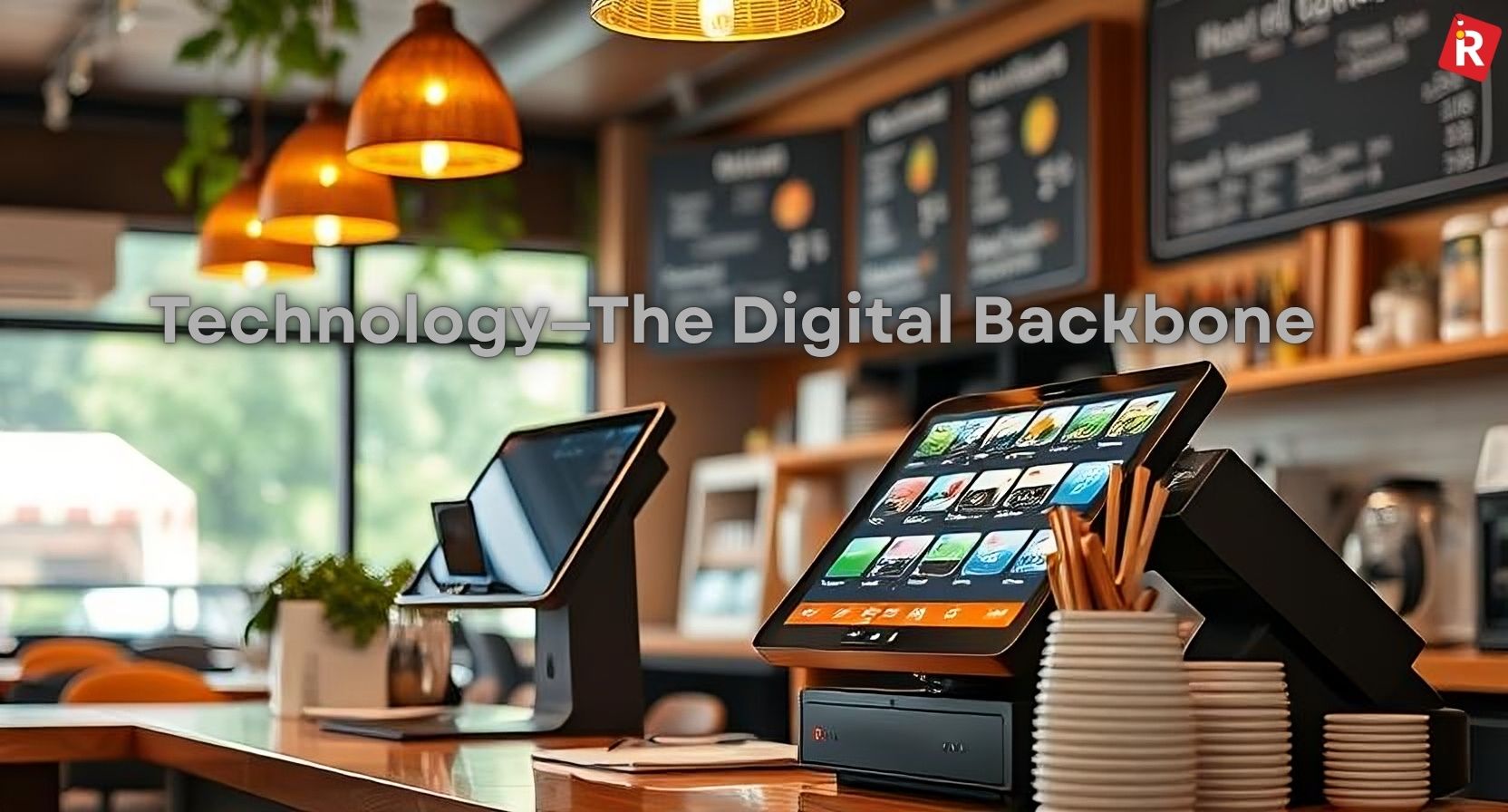
Technology helps regulate activities, reduce errors, and provide useful insights.
1. Point of Sale (POS) Systems:
An advanced POS system is much more than a cash register; it serves as your restaurant's core nervous system. A strong point-of-sale system is essential for numerous restaurants, which range from fast-casual restaurants to fine dining places in larger malls.
Key features: order management, billing, table management, inventory tracking, sales reporting, and, in many cases, integrated payment processing.
Benefits: faster order processing, reduced human error, real-time sales data, and simplified end-of-day reconciliation.
Recommended for India: Popular restaurant software options in India include Petpooja, POSist (formerly Restroworks), Toast, and Square. Petpooja and POSist are well-suited to the Indian market, as they include GST billing, regional language support, and local payment gateway interfaces.
Know this: "Everyday is a Chance to Build Something Bigger," says Sushaan Nath of Passion Cuisine
2. Inventory Management Software:
The most significant variable expense for a restaurant is food costs. Effective inventory management is critical for profitability and waste minimization, both of which are important considerations in sustainable practices.
Key features: Includes recipe costing, supplier management, purchase order production, real-time stock levels, waste tracking, and automated notifications for low inventory.
Benefits: Reduces food spoilage, improves ordering quantities, identifies profitable meals, and aids in appropriate pricing.
Recommended for India: MarketMan (global presence, excellent integrations) and local options, such as RESTOSOFTIN, provide comprehensive solutions. These technologies assist in monitoring pricing swings from suppliers and tracking consumption habits.
3. Online Ordering & Delivery Platforms:
With the rise of digital convenience, having an online presence has become mandatory. For restaurants, online ordering is critical for reaching clients all around the city.
Key features: customizable online menus, integrated payment gateways, order management, and client data collection.
Benefits: increased client reach, convenience, less dependency on phone orders, and valuable data on customer preferences.
Recommended for India: While direct platforms like GloriaFood (which provides a free online ordering system) and Foodiv (which is commission-free) allow you to create your own online ordering system, partnering with aggregators such as Zomato and Swiggy is critical for increased visibility. Balancing direct orders with aggregator presence is critical for managing commissions.
Know more: 7 Pizza Chains That Are Changing the Way We Eat on the Go
4. Employee Scheduling & HR Apps:
Your team is the foundation of your service. Effective scheduling, communication, and HR management are critical for employee morale and operational efficiency.
Key features: automated shift scheduling, time-off requests, shift swapping, internal communication tools, time tracking, and payroll integration.
Benefits: reduced schedule conflicts, saved management time, improved team communication, equitable workload distribution, and labor cost reduction.
Recommended for India: 7shifts, When I Work, and Homebase (which provides a good free plan for small businesses) are highly rated globally. These can be tailored to your employees' shift schedules, taking into account local holidays and peak hours.
Customer Relationships & Brand Presence

Beyond operations, attracting and keeping consumers requires strategic marketing and exceptional customer service.
1. Customer Relationship Management (CRM) Systems:
Understanding what customers want is essential for tailored service and efficient marketing. A CRM facilitates the development of long-term partnerships.
Key features: customer databases, preference tracking, loyalty program management, feedback collection, and tools for targeted marketing campaigns.
Benefits: Improves customer retention, allows for targeted offers, identifies VIP guests, and aids in the creation of more successful marketing programs.
Recommended for India: Global CRMs like Bitrix24 (which offers a free CRM plan) and specialized restaurant CRMs from providers like Netclues will assist you in managing customer data, particularly for your clients, separating them based on their preferences, frequency of visits, and average expenditure.
What's new: 10 Actionable Interior Design ideas for Restaurants
2. Social Media Management Tools:
In a place dominated by social media, your restaurant's online presence is critical. Effective social media management enhances your brand.
Key features: content scheduling, multi-platform posting, engagement tracking, analytics, and direct messaging options.
Benefits: Increases brand recognition and engagement, enables real-time customer interaction, and delivers insights into audience trends.
Recommended for India: Hootsuite and Buffer are popular options. Use these to highlight your signature meals, behind-the-scenes looks, and customer testimonials, focusing on local communities and food bloggers.
3. Online Review & Reputation Management Platforms:
Online reviews are the new word-of-mouth. Actively managing your online reputation is critical for attracting new customers and maintaining trust.
Key features: monitoring reviews across platforms (Google, Zomato, TripAdvisor), an established inbox for responses, sentiment analysis, and comparing competitors.
Benefits: Increases reputation, enables timely issue resolution, attracts new consumers, and provides useful feedback for improvement.
Recommended for India: Tools such as ReviewTrackers or diligent manual monitoring of Google My Business, Zomato for Business, and TripAdvisor are essential. Responding quickly and professionally to all reviews, favorable and negative, is critical to establishing a great reputation.
Essential Resources & Strategic Approaches

Technology is a tool, but its effectiveness depends on the strategies and resources supporting it.
1. Legal & Compliance Resources:
Running a restaurant in India requires navigating a complex web of licenses and rules. Keeping execution is non-negotiable.
Key Resources:
- FSSAI license: Required for all food businesses to ensure food safety and quality.
- Trade License: A document from the Municipal Corporation that validates your permission to operate in a given location.
- Health Trade License: Local health authorities provide a Health Trade License, which ensures adherence to health and hygiene requirements.
- Fire Safety License/NOC: Required for safety and issued by the local fire department.
- GST Registration: Required for tax compliance.
- Shop & Establishment Act License: Register your restaurant within 30 days of opening.
- Liquor License: If providing alcohol, you must get a liquor license (complicated and state-specific).
- Music License: If you're playing copyrighted music.
Strategy: Consult with legal specialists or business consultants who specialize in the hospitality industry to ensure that the important permissions are secured and updated regularly. Keep detailed records on all licenses and inspections.
2. Financial Planning & Accounting Tools:
A restaurant's long-term success depends on good financial management.
Key resources: accounting software, budgeting tools, and financial advisors.
Strategy: Use reliable accounting software (such as TallyPrime, which is commonly used in India, or cloud-based alternatives like QuickBooks Online) to track income, spending, payroll, and taxes. Maintain a regular examination of profit and loss statements, balance sheets, and cash flow reports. Set clear budgets for all divisions, from food to marketing, and regularly monitor inconsistencies. Understanding your break-even point and increasing profit margins are constant objectives.
3. Staff Training & Development Programs:
While apps can help with HR, human development is more about developing skills and creating a healthy work environment.
Key resources: online learning platforms, in-house training manuals, mentorship programs, and ongoing performance feedback systems.
Strategy: Create complete training programs for both FOH and BOH employees. For front-of-house, prioritize customer service excellence, product knowledge, upselling techniques, and POS system proficiency. For BOH, prioritize food safety, portion control, recipe consistency, and kitchen efficiency. Encourage constant learning and establish clear career routes. A well-trained, motivated crew is your most valuable asset in providing great customer service.
Check out: Oats vs. Muesli: Which Breakfast Option Is Better For Weight Loss?
Best Theme Cafes to Explore in 2025: Where Coffee Meets Imagination
4. Data Analytics & Business Intelligence:
Beyond simply gathering data through your POS and CRM, the true power is in evaluating it to make sound business decisions. Business intelligence technologies convert raw data into actionable insights.
Key resources: integrated POS reporting and customized BI dashboards.
Strategy: Analyze sales trends (peak hours, most popular meals), inventory turnover, labor costs, and customer demographics regularly. Identify patterns, predict demand, optimize staffing, and adjust your menu based on performance. For restaurants, this involves looking into local seasonal preferences, identifying profitable meals that appeal to the neighborhood, and optimizing delivery routes using order heat maps. This data-driven approach enables agile modifications and maximizes revenue.
Conclusion
In a competitive and vibrant restaurant sector, success is not taken lightly. It is the outcome of careful planning, strategic implementation, and effective use of available tools and resources. Restaurant owners may establish a durable and profitable business through the use of modern technology for operations, employing extensive systems for marketing and customer relations, and strictly following legal and financial best practices.
The "restaurant toolkit" described here is more than just a collection of apps; it is an organizational model based on business, data, and customer focus. Embrace these essential resources and strategies, and your restaurant will not only survive but thrive, becoming a beloved culinary landmark for years to come.

A restaurant is more than simply a place to eat; it is an exhilarating experience in the modern world. The interior design of the restaurant is one of the factors that contribute to its uniqueness. While delicious food is undoubtedly the foundation, a restaurant's interior design frequently creates the critical first and last impression. It is more than simply aesthetics; it is a silent marketer, an atmospheric starter, and a compelling storyteller who has a significant impact on the dining experience and, ultimately, your business success.
A well-designed location affects how long people stay, how they feel, and how likely they are to return and recommend your business. It creates a mood, increases comfort, and promotes your brand identity in ways that food alone cannot. This article looks into the philosophy of exceptional restaurant interior design and explores ten captivating, practical ideas for transforming your restaurant into a popular and memorable destination in your area.
Read more: 7 Pizza Chains That Are Changing the Way We Eat on the Go
The Philosophy of Restaurant Interior Design

Why is interior design so important? How does it help in the overall business of the restaurant? Before we get into specific ideas, it's important to grasp the fundamental principles that guide ideal restaurant design.
More Than Just Looks:
Restaurant interior design goes beyond simply visual appeal. It's a strategic investment that sets the tone, drives customer behavior, and shapes their overall impression of your business. A well-designed environment has a direct impact on the customer experience, from the moment they walk in to when they depart. It may make a small space appear larger, drive foot traffic, improve food presentation, and even gently encourage longer stay periods or faster table shifts, depending on your company model. Finally, effective design is about generating a mood, whether cozy, vibrant, luxurious, or quiet, that connects with your target audience and motivates them to return.
Defining Your Brand's Visual Story:
Every aspect of your restaurant's design should accurately reflect your brand's distinct story. This involves matching the interior with your cuisine, concept, and target customers. For example, a casual café offering traditional Haryanvi cuisine may favor rustic, earthy tones and local artisanal crafts, whereas a modern fusion restaurant in luxurious districts may prefer sleek lines, minimalist design, and sophisticated lighting. Consistency is essential: your menu design, staff clothing, and internet presence should all reflect the visual language created by your interior. This combined strategy maintains your restaurant's brand and leaves a strong, lasting impact on customers.
Finally, having a unique interior design for your restaurant establishes a brand identity that will help it stand out in the restaurant sector. It also provides customers with a unique experience that will help them remember your business and may even convert them into regular customers.
Know more: Oats vs. Muesli: Which Breakfast Option Is Better For Weight Loss?
10 Captivating Interior Design Ideas
These ideas provide a variety of ways to improve your restaurant's aesthetic and practical appeal, catering to a wide range of concepts and budgets.
1. Dynamic Art
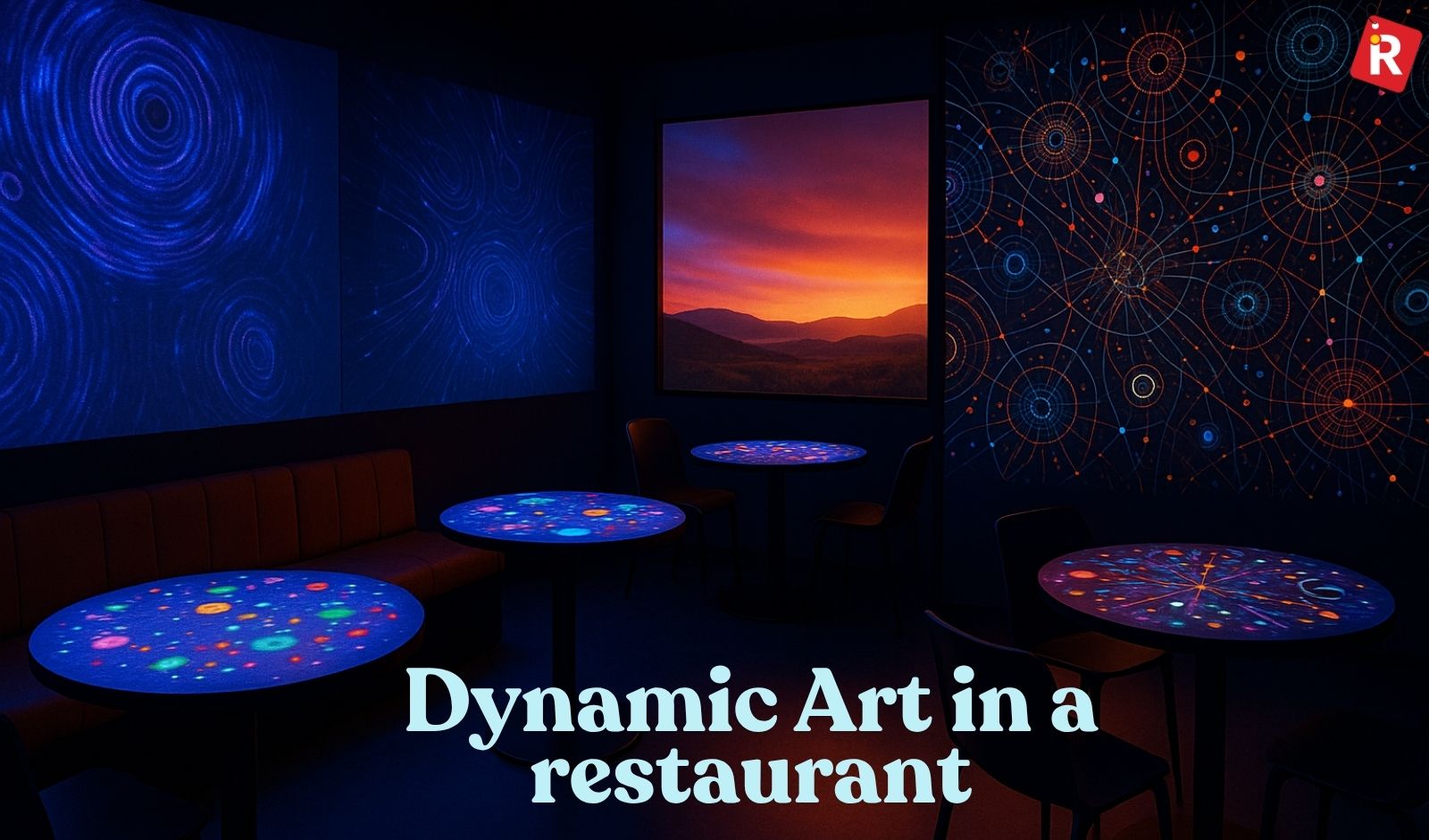
Consider walls with changing patterns, tables with small projected graphics, or digital "windows" that show altering landscapes. This design goes beyond static decor, using kinetic art and interactive computer displays that constantly change the atmosphere. The venue itself becomes a dynamic, breathing organism that continuously shapes the dining experience. Its distinct attraction stems from its multi-sensory, ever-changing nature, which captivates and surprises while providing limitless fresh visual aspects for repeat visits. This concept appeals to tech-savvy and experience-seeking customers, particularly those of the younger age groups. However, it requires a considerable upfront investment in technology, continual maintenance for digital information, and careful consideration of light levels to avoid distracting from the meal.
2. Sensory Overload
Rather than focusing exclusively on images, this design deliberately engages all senses. It features totally different textures such as velvet walls, rough stone, or polished wood; subtle, consistent ambient scents (think a delicate spice blend, fresh rain, or a hint of citrus—never overpowering); and a carefully chosen soundtrack that includes gentle nature sounds or a soothing urban hum. This strategy creates a complete and absorbing experience that is memorable, producing an original and extremely pleasant atmosphere. It provides a unique retreat from the typically hectic urban atmosphere. Meticulous preparation is required to ensure that sensory aspects are harmonic and do not overwhelm, and material choices must be strong for handling diverse textures.
3. Deconstructed & Exposed Aesthetic
This approach acknowledges a building's "bones" by intentionally displaying structural and functional aspects. Consider visible pipelines, pipes, raw concrete, exposed ventilation systems, and deconstructed furniture. It is an honest approach that reveals the underlying structure. Its particular appeal stems from its raw, industrial-chic appearance, which starkly contrasts with highly polished surfaces. This design emphasizes authenticity and produces a sophisticated, urban vibe that complements fast-rising industrial and commercial regions. Practical considerations include keeping exposed elements extremely clean and well-maintained, as well as using high-quality materials for components that will become design features.
What's new: Practical ways to train staff for better customer service
4. Stepping into a Storybook
The entire restaurant is converted into a perfectly detailed scenario from a certain novel, film, magical universe, or historical period. Guests are immersed in a story rather than simply dining. Consider an "Alice in Wonderland"-themed tea parlor, a "secret garden" dining room, or a bar hidden behind an ordinary bookshelf. This generates an unrivaled sensation of escape, wonder, and originality, making the restaurant extremely "Instagrammable" and generating a lot of attention. It provides entertainment much beyond the meals and can be a strong lure for families and younger populations looking for unusual experiences. This difficult concept requires significant investment in custom props, set design, and meticulous attention to theme continuity.
5. Modular & Transformable Space
This design includes extremely modular and changeable furniture, walls, and lighting systems, allowing the entire room to change throughout the day or for different events. Consider sliding partitions to create private dining areas, adjustable tables for intimate or social events, and lighting schemes that range from bright breakfast to cozy evening. Its distinguishing feature is its exceptional flexibility, which allows it to adapt to different times of day (e.g., café in the morning, bar at night) and accommodate a wide range of activities. This makes it suitable for multi-purpose venues or restaurants that want to maximize revenue streams. High-quality, long-lasting, and readily movable systems, as well as staff training, are required for efficient shifts.
6. Workshop Restaurant
This concept includes a visible, functional artisan's workshop right in the dining area. It could be a live bakery where bread is kneaded, a pasta-making station, a coffee roasting area, or a local craftsperson demonstrating pottery or weaving. This adds an attractive "show" element to the eating experience while also building trust via transparency and establishing a strong connection to craftsmanship and authenticity. It effectively emphasizes the authenticity of your ingredients or the talent involved, appealing to selective customers. It is critical to maintain high sanitary standards, provide sufficient ventilation for heat and smells, and keep noise levels under control.
Check out: How to start a restaurant blog and attract customers
7. The Historical Dining Experience:
This involves precisely copying a specific historical period, which extends beyond mere vintage décor. To completely transport guests to a bygone era, original furniture, design pieces, period-appropriate music, and possibly even staff costumes are required. Its distinct appeal stems from providing a really immersive and nostalgic experience that taps into a sense of tradition and curiosity. It operates as a living museum, with visitors actively participating in the atmosphere of another era. This challenging concept requires substantial research and investment in real or high-quality replica components, with consistency across all elements to avoid a "costume party" atmosphere.
8. The Minimalist & Hyper-Focused Sanctuary:
This design is a major departure from overcrowded aesthetics, removing any unnecessary features. The space focuses on negative space, single focal points (a gorgeous piece of art, a meticulously built table), and the purity of form, line, and high-quality materials (raw concrete, polished wood, and plain steel). The design disappears, making the meal the final "design element." This creates a quiet, refined, and uncluttered environment that promotes mindfulness and a greater appreciation for the food industry. It caters to a specific market looking for a quiet and elegant eating experience, but the main stars are excellent cleanliness, organization, and incredibly high-quality food and plating.
9. Interactive Walls & Surfaces:
Interactive design elements can be used to attract the diners. This can include giant chalkboard walls for sketching or writing, as well as erasable surfaces and tables with embedded digital screens for ordering, browsing menus, and playing light games. This invites direct guest participation and creativity and adds a playful, engaging element to the dining experience, resulting in unique photo opportunities and potentially increased dwell time for families or groups. It's ideal for family-friendly restaurants and tech-forward cafes looking to create a vibrant, engaging environment. Durable, easy-to-clean surfaces and solid, user-friendly digital connectivity are important considerations.
Read this: A CULINARY DEBUT: INDIA WELCOMES ITS FIRST MODERN CHINESE POP-UP AT ZEN!
10. Gallery Dining Experience:
The restaurant functions as both a revolving gallery and a permanent display area for a certain type of curated collection. This may include antique culinary equipment, rare plant prints, a revolving exhibition of photography, historic maps, or a diverse collection of foreign antiques. Its distinct appeal stems from combining meals with cultural research and artistic appreciation, providing ongoing mystery and curiosity that promotes repeat trips to discover new works. This approach requires a passion for collecting and curating, with displays that must be secure, well-lit, and consistent with the restaurant's brand to seem logical. It could appeal to art lovers and those looking for a culturally enhanced eating experience.
Conclusion
In the competitive restaurant market, a genuinely successful establishment goes beyond simply providing cuisine; it becomes an engaging experience, a one-of-a-kind destination. Interior design, when approached with creativity and strategic intent, can help define your brand, improve customer satisfaction, and drive long-term growth. By embracing one of these innovative ideas or combining pieces of them, you do more than just launch a restaurant; you create an amazing setting where every meal is transformed into a cherished experience, guaranteeing that your restaurant stands out and thrives as a renowned culinary icon.

In the culinary sector, one of the most important things, even before the food, is the service provided by the staff of the restaurant. A restaurant's service frequently sets it apart from the competition. A decent meal can become a memorable experience, a first-time visitor can become a regular, and even an otherwise bad evening can be saved by providing exceptional customer service. However, regardless of how good the food is, bad service can quickly damage a restaurant's reputation.
Investing in customer service training for employees is a strategic necessity for restaurant owners, particularly in a competitive market. Encouraging your staff to be the best representatives of your business will guarantee that each customer departs happy and excited to come back. This in-depth article will examine achievable, realistic strategies for preparing your restaurant employees to provide exceptional customer service, turning your service into a distinguishing feature of your business.
Read more: What Gen Z Really Eats: 10 High-Protein Indian Meals That Don’t Taste Boring
Creating the Foundation for Exceptional Service
Establishing a basic understanding of the importance of customer service and what excellent service actually means for your particular business is essential before any specialized training starts.
- The Undeniable Value of Service Excellence: Every team member must understand that providing exceptional service is far more than just being kind; it has a direct impact on the restaurant's profitability. An increase in repeat business, larger tips for employees, positive ratings on websites like Zomato and Google Maps, and a rise in priceless word-of-mouth recommendations are all direct results of investing in first-rate service. Employees are much more motivated to perform well when they recognize this concrete connection, which builds loyalty and enhances the restaurant's overall success. A strong internal drive for excellence is created by this focus on the return on investment of service training.
- Establishing Your Own Service Standards: Don't let "good service" be interpreted in any way. Establishing clear, defined customer service policies that are suited to their unique brand and operating style is necessary for restaurants. Every stage of the customer journey, from the time a customer enters the restaurant until they leave, should be carefully described in these restaurant service guidelines. Having encyclopedic menu knowledge, welcoming customers within a set timeline, maintaining consistent eye contact, addressing client complaints with elegance, and saying goodbye with warmth and sincerity are all examples of this. All employees, regardless of experience level, are guaranteed to be consistent thanks to these clearly stated benchmarks.
- Building a Genuine Service-First Culture: Providing outstanding customer service is a philosophy that gets into every part of your business, not just a set of chores. You are the main creator of this culture as the manager or owner. In each interaction, set an example of the desired conduct. Make it obvious that going above and beyond is appreciated by publicly praising and rewarding instances of exceptional service. Include client feedback as a learning tool rather than a punishing one in routine team interactions. Giving staff the freedom to address little problems immediately promotes a customer-centric mindset and results in prompt, attentive service that pleases customers.
What's new: How to start a restaurant blog and attract customers
Developing the Art of Teaching Skills: Adaptive Training Methods
There is much more to effective service training than a dry lecture. It calls for capturing approaches that boost self-assurance and practical skills.
- Role-playing Scenarios: Few strategies work as well for front-of-house employees as role-playing customer service scenarios. Hold engaging exercises in which employees pretend to be in typical and difficult customer service scenarios (such as greeting customers, taking orders, and addressing complaints). Give constructive criticism in a relaxed setting to boost self-esteem and improve abilities.
- Deep Menu Mastery: A waiter cannot deliver truly exceptional service unless they are intimately familiar with the menu. Provide frequent, practical menu training in which employees sample each meal. Ingredients, preparation techniques, common allergens, and the best combinations should all be taught to them. Employee motivation is improved through carrying out regular quizzes.
- Mentoring and shadowing: Assign new workers to seasoned, productive employees so they can watch service during peak hours. Encourage mentors to provide real-time advice and an explanation of their activities. "Reverse shadowing" is another tool that managers might use to find coaching opportunities. This provides critical on-the-job training, enforces best practices, and fosters a collaborative team culture in which knowledge is openly shared.
- Continuous Learning & Micro-Training: Training is not a one-time event; it is a continuous process. Make sure that your skills are continuously improved by holding brief, targeted refresher courses (15–30 minutes) or by "micro-learning" through brief movies, quizzes, or advice. This addresses particular areas for improvement and keeps skills sharp.
Know this: A CULINARY DEBUT: INDIA WELCOMES ITS FIRST MODERN CHINESE POP-UP AT ZEN!
Key Customer Service Skills
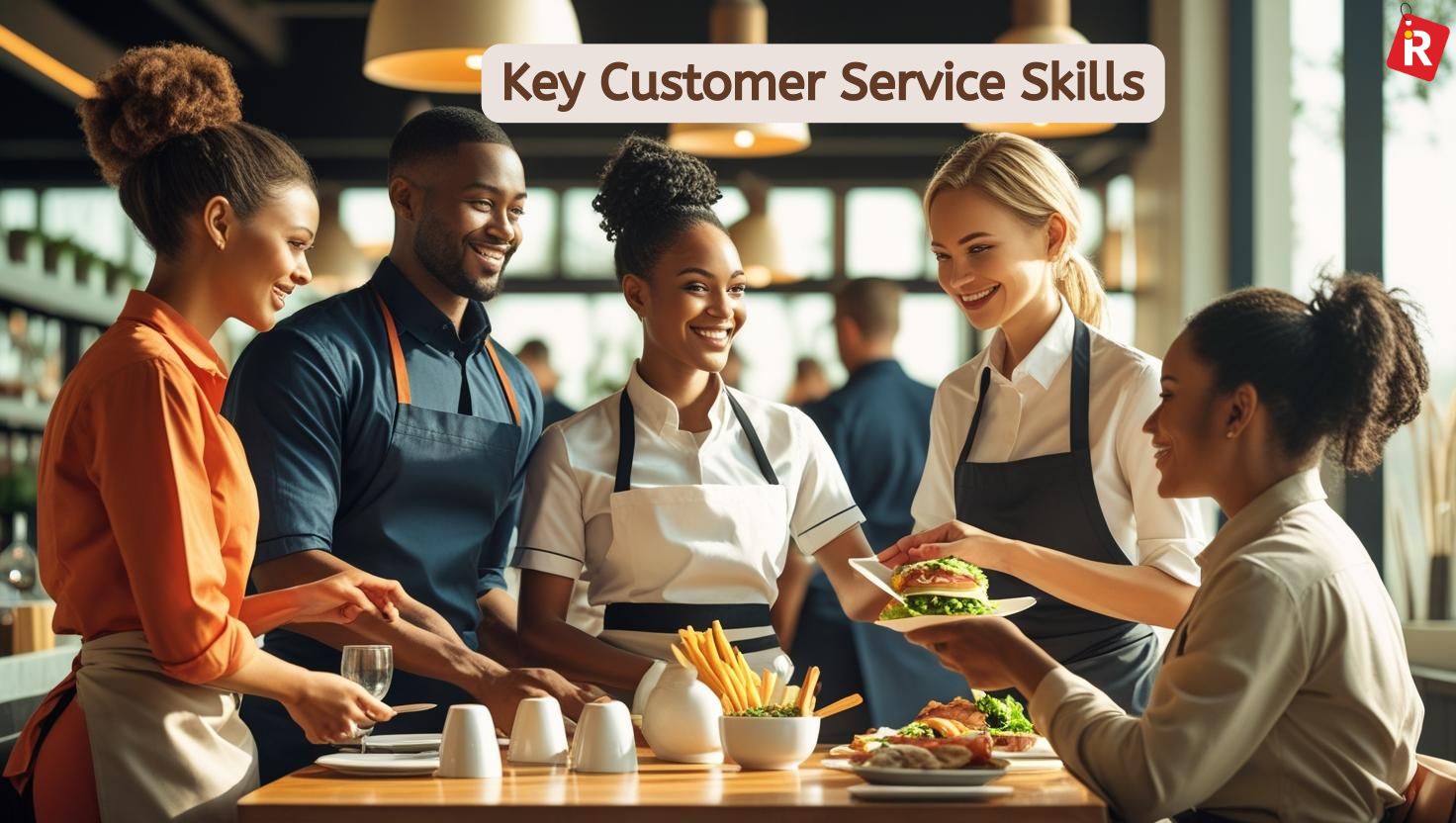
Good training focuses deeply on the particular, subtle abilities that come together to produce an incredibly amazing client experience.
- The Critical First and Last Impressions: A customer's impression is greatly influenced by the greeting and departure. Teach employees how to greet guests with a genuine smile and eye contact as soon as possible, maybe within 30 seconds of their arrival. The goodbye is just as crucial; it should be kind and thankful, maybe a sincere "Thank you for dining with us! We hope to see you again soon!" These first and last exchanges create a favorable impression that lasts throughout the dinner and greatly influences the possibility of return visits.
- Paying Attention and Predicting: Train employees to do more than just hear what customers have to say. Urge them to closely observe nonverbal clues and offer clarifying questions. In addition to ensuring proper order taking, this builds trust. More significantly, teach them to anticipate client demands by immediately refilling water glasses, offering additional drinks without being asked, quickly cleaning away empty dishes, and generally being one step ahead of the customer. This attentive service greatly improves the dining experience and makes guests feel truly valued.
- Overcoming Obstacles: Handling complaints expertly is arguably the most important service ability. Instruct employees on a clear, step-by-step process for addressing restaurant complaints: first, actively listen without interrupting; second, show empathy for the customer's annoyance; third, sincerely apologize (even if they weren't at fault); fourth, offer a solution; and fifth, follow up to make sure the customer is satisfied. Giving employees the freedom to resolve little problems immediately turns potentially negative situations into chances to demonstrate superior service recovery techniques, which frequently results in increased customer loyalty compared to when the problem had not occurred.
- Improving the Experience: Train employees to use suggestive selling as a legitimate approach to improve the eating experience for customers, rather than as a pushy sales technique. Their extensive menu knowledge serves as the direct reason for this. For instance, a waitress might suggest, "Would you like to begin with our popular Paneer Tikka, which pairs wonderfully with our fresh mint chutney?" rather than "Do you want a starter?" and "Our chef's special dessert, the Gulab Jamun with Rabri, is a perfect end to your meal." By gently encouraging servers to use upselling strategies, this strategy raises the average check amount while giving customers a sense of direction and introducing them to new favorites.
Check out: How to create a restaurant menu from scratch
Coffee Cocktail Drinks: 10 Must-Try Options to Follow in 2025
The Cycle: Feedback, Development, and Recognition
Excellent service is a continuous process of improvement driven by feedback and an appreciative culture rather than a final destination.
- The Vital Loop: Use a variety of channels to get feedback from customers. Traditional comment cards, electronic feedback forms that can be accessed through QR codes on tables, and constant observation of internet review sites like TripAdvisor, Google Maps, and Zomato are a few examples of this. Crucially, go over this feedback regularly in team meetings, addressing persistent problems head-on and praising favorable remarks to raise spirits. This shows how important customer feedback is and enables rapid corrections in the course based on practical experiences.
- Individual Growth: Conduct regular, individual performance reviews for your employees, with a strong emphasis on service standards. Provide detailed, actionable comments, praising concrete examples of great service while explicitly identifying areas for improvement. Provide constructive mentoring and further targeted training as needed. This ensures individual accountability, ongoing skill development, and reinforcement of desired behaviors that contribute to overall service excellence.
- Celebrate Excellence: Publicly recognize and praise employees who consistently provide excellent customer service. This could take various forms, including an award, bonuses based on great customer feedback, gift cards, or simply genuine vocal gratitude in front of their fellow employees. Creating a culture in which going the extra mile is celebrated boosts morale, promotes healthy competition, and reinforces the value of customer service. Employee appreciation programs are highly effective motivators.
Read this: How can a small restaurant double its customers in 6 months?
Conclusion
In the vibrant restaurant scene, where culinary creativity is plentiful, the quality of your customer service can genuinely differentiate you. It's the secret ingredient that improves every dish and turns an ordinary meal into an amazing experience. You're not just serving food; you're building relationships by implementing practical, ongoing training techniques, providing your employees with essential interaction skills, and cultivating a culture of continuous improvement.
Investing in your team's customer service skills benefits your restaurant's reputation, revenue, and long-term success. It ensures that each customer departs with a grin, becomes an ambassador for your business, and anxiously anticipates their next visit, transforming your restaurant into a beloved destination.

In the highly competitive cooking world of today, simply serving delicious food can often be insufficient. Diners have an astounding number of options, ranging from the quieter residential areas to the busy streets. Restaurants must use more than just traditional marketing if they want to stand out, engage their audience, and build a loyal customer base. This is where a well-written restaurant blog can be very effective.
With the rise of the digital age, lots of people are searching online for cafes or restaurants. They primarily use their website or Google reviews to determine which option to select. Therefore, it is crucial for a restaurant owner to adequately promote their business. Creating a blog for your restaurant is only one of several strategies to advertise your business. It is a novel approach to writing blogs on various subjects related to the restaurant. In this article, we will be discussing all the important elements related to restaurant blogs, like their need and how to create your restaurant’s blog to attract more customers.
Read more: A CULINARY DEBUT: INDIA WELCOMES ITS FIRST MODERN CHINESE POP-UP AT ZEN!
Why Your Restaurant Needs a Blog
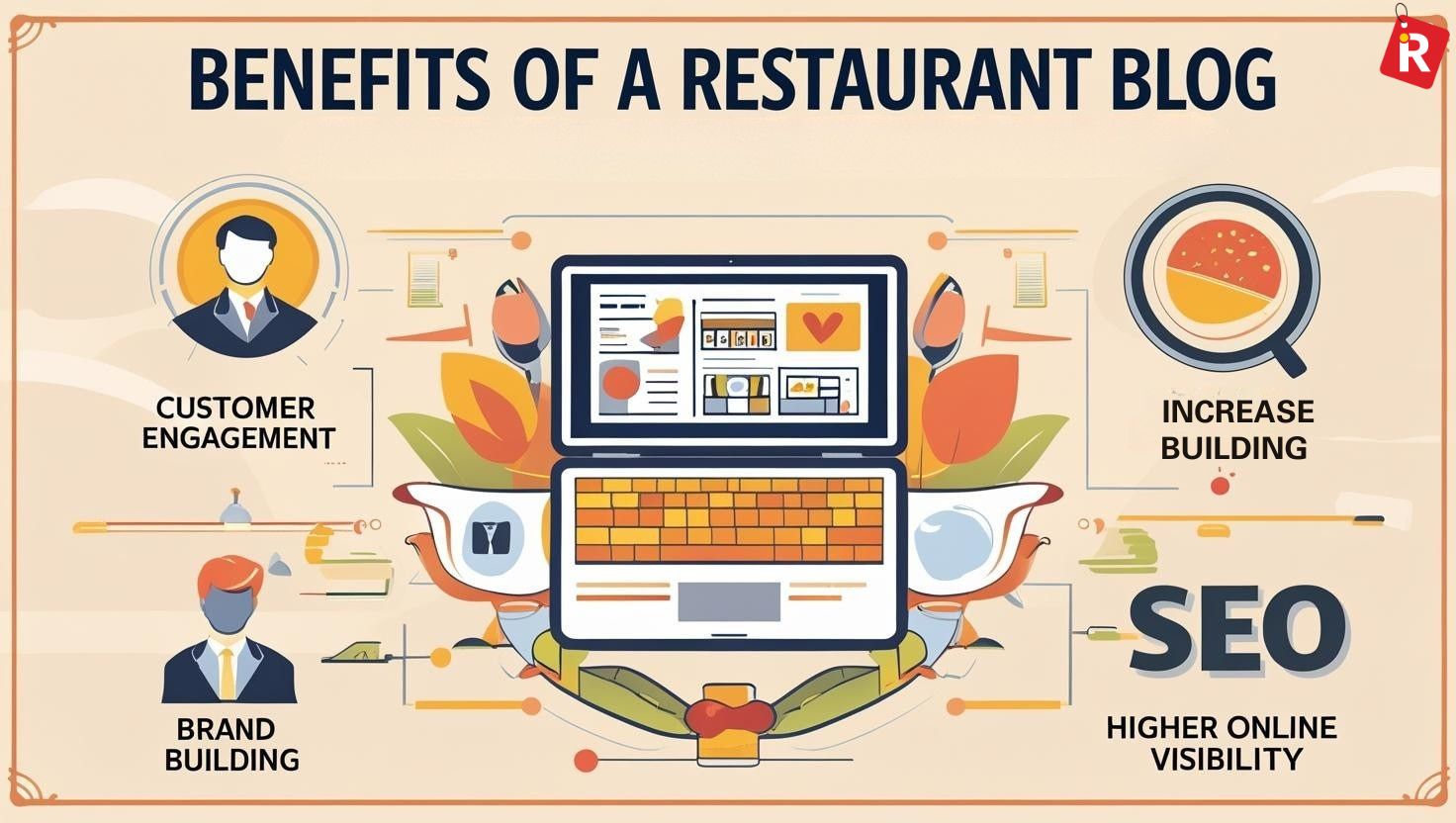
Before we look into how to create a blog, let’s talk about why a restaurant needs a blog.
1. Build Brand Authority & Trust
In an era of limitless options, customers favor brands they respect and trust. You can establish your restaurant as an authority in your niche or cuisine by using a blog. Explain your dedication to using high-quality ingredients, highlight your chef's skill, and share your cooking philosophy. This differentiates you and increases your credibility.
2. Enhance Local SEO (Search Engine Optimization):
In any area, if someone looks for "best Italian restaurant near me" or "family dining options in my area," you want to show up high on their search history. Google has more justification to rank your restaurant higher for these particular searches if it has a blog with important, locally useful data.
3. Forge Deeper Customer Connection:
A blog is your storytelling platform. Tell about the beginnings of your restaurant, the ideas behind your specialties, or even the difficulties and successes of managing a business. Customers can relate to you more emotionally as a result of showing your brand. It turns fans into devoted customers and strangers into fans.
4. Drive Foot Traffic & Reservations:
Getting customers into your restaurant is the ultimate goal of any marketing campaign. By attracting readers with appealing descriptions, announcing special events, and providing clear instructions on how to place an online order or reserve a table, a blog can directly help with this.
What's new: How to create a restaurant menu from scratch
5. Cost-Effective, Long-Term Marketing Asset:
A blog post is a long-term asset, in contrast to sponsored advertisements that stop producing results as soon as your budget expires. After being published, a blog can draw in natural traffic for months or even years, offering steady value without having to pay for each click.
Setting Up Your Restaurant Blog’s Technical Foundation
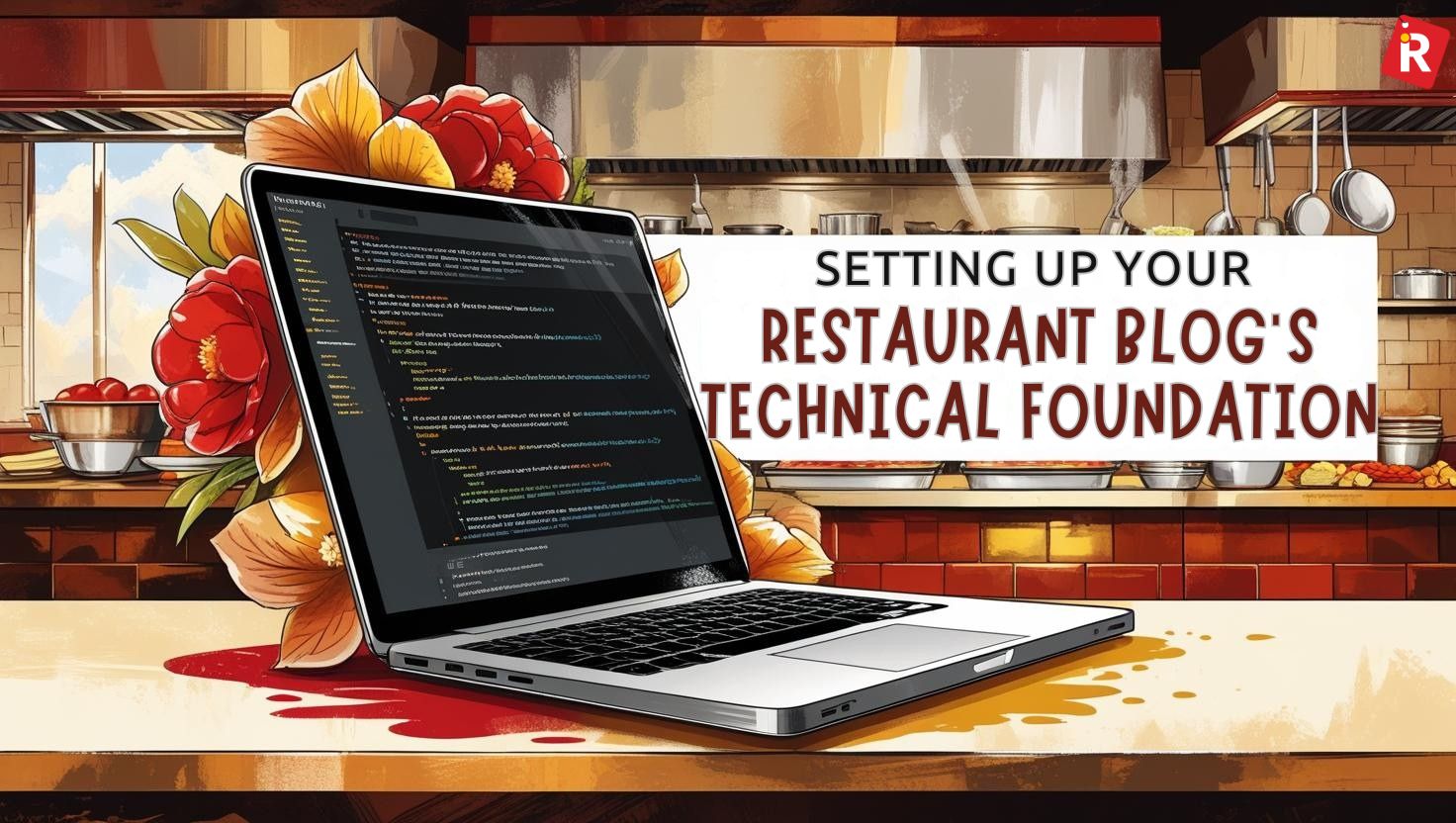
Before you start writing your content, you need to find a platform to publish it. Creating your restaurant’s official website is beneficial, as it will pop up as soon as people search for it.
1. Choose a Blogging Platform:
The first step is to choose a blogging platform. So, we need to find a host for the website. The most popular and safe choice for hosting is WordPress.org, which provides maximum flexibility and SEO control. With themes and plugins, it provides unmatched customization. You also need to purchase a domain name, which will be a part of your restaurant’s main website. Also, do not try to use any free hosting platforms if you're serious about professional appearance and long-term growth.
2. Essential Plugins & Tools:
Install essential plugins after logging into WordPress. For on-page SEO optimization, Yoast SEO or Rank Math are essential tools. Plugins for image optimization, such as Smush or Imagify, will make sure that your gorgeous food photographs don't cause your website to load slowly. Google Analytics is essential for monitoring user activity and website traffic. Remember to include social sharing plugins so that viewers can easily share your work.
3. Design & Branding:
The layout of your blog should reflect the style of the restaurant you run. Make use of the colors, fonts, and general design of your restaurant. Make sure the layout is clear, simple, and easy to use. The majority of users will access your information on smartphones, so your blog must be mobile-friendly. Having high-quality images is essential for a food blog. All these will help in enhancing brand identification, projecting a polished image, and guaranteeing a flawless user experience on all platforms.
Content Strategy To Decide What To Write In The Blog

The main job of drawing in clients begins here. First and foremost, we must create material that is both popular with readers and search engine optimized in order for them to find our website. You may write about topics related to your own restaurant. Customers may learn more about your restaurant as a result. If any potential customers would like to come to your restaurant, then they can research more on your official website.
Know more: What Gen Z Really Eats: 10 High-Protein Indian Meals That Don’t Taste Boring
What type of content can you write about?
By sharing behind-the-scenes stories, such as introducing your chef and their cooking journey, describing a typical day in your busy kitchen, or sharing the interesting origin story behind your signature dish—or even demonstrating how you source fresh produce from local markets—you can establish a genuine connection with people. This increases openness, cultivates confidence, and establishes a very intimate bond with your audience. Additionally, establish yourself as a food expert by providing helpful recipes and cooking advice. For example, you could highlight a special spice or seasonal produce, offer easy Indian comfort food recipes, or even teach a particular cooking technique without revealing your restaurant's trade secrets.
By emphasizing the best family-friendly locations close to your restaurant, demonstrating your dedication to helping local farmers, sharing your community projects, or even discovering best-kept cooking secrets, you can demonstrate your devotion to being an essential part of the community. By showcasing new items and menu highlights, diving further into the ingredients and inspiration behind new meals, celebrating seasonal treats, or experimenting with the ideal beverage pairings and your unique drink menu, you can keep your offers interesting. You can advertise theme evenings, holiday specials, your catering services for local events, or even give your blog readers access to special discounts. Your blog is a great way to advertise events and promotions.
Lastly, create a feeling of community and trust by showcasing your most loyal customers in customer spotlights (always with their consent!), responding to frequently asked questions about your restaurant, or sharing a little bit about your philosophy of customer care. By providing this wide variety of good content, your blog will develop into a thriving center that draws in, interacts with, and eventually turns readers into loyal clients.
Optimizing Your Blog for Search Engines (SEO for Restaurants)
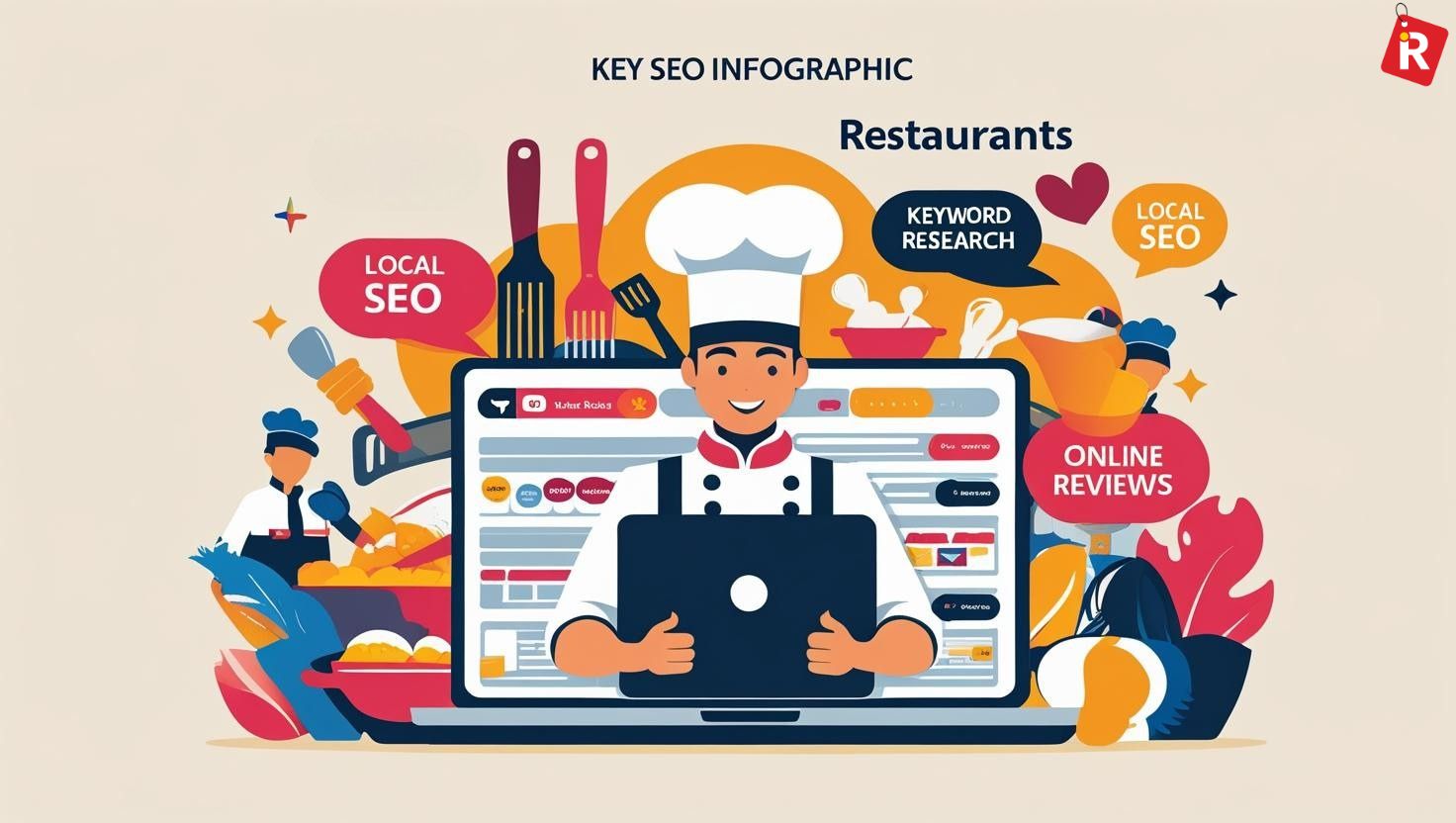
1. Research on Keywords: Determine the search terms that your target clients are really using. Use tools such as Google Keyword Planner or SEMrush to find terms such as "fine dining in my area," "family dinner places," "best [cuisine] restaurant (city)," or "vegan options near me."
2. On-Page SEO Best Practices: Add catchy headlines to your blog. Also, include your primary keyword naturally. There should be a proper summary under 160 characters that will appear in search results, attracting people to click on it. For SEO and accessibility, use eye-catching, appropriate photos with informative alt text. Additionally, provide links to your menu site, reservation page, or other relevant blog posts.
3. Content Quality & Readability: Compose posts that are interesting, educational, and simple to read. To break up text, use bullet points, concise paragraphs, subheadings, and clear headings. Stay clear of nonsense. A conversational tone is what you want. Google rewards important, well-written content.
4. Build Backlinks: Google perceives backlinks—links pointing to your website from other websites—as a powerful indicator of authority. Speak with local websites, local news sources, or food bloggers in your city. Provide guest posts or work together to create content that will attract people to return to your blog.
Check out: Coffee Cocktail Drinks: 10 Must-Try Options to Follow in 2025
Brewing Success: Why 2023 Will be an Year for Speciality Coffee
Attracting Customers Through Your Blog

No matter how many blogs you write, if they are not reaching the customers, then they do not serve any purpose. So, after creating the blog posts, you also need to promote them so that any potential customers can see them.
- Social Media Promotion: Post each new blog entry with attention-grabbing images, interesting captions, and requests for participation on all of your restaurant's social media platforms (Facebook, Instagram, etc.). Take into account targeted, tiny advertising to increase reach.
- Email marketing: Create an email list by signing up on your website or in-restaurant, then send out newsletters regularly that highlight your most recent blog entries, deals, and events.
- In-Restaurant Cross-Promotion: Put QR codes on menus and table tents, teach employees to bring up blog entries, and put up signs pointing existing customers to your web content.
- Google My Business Posts: To help local searchers find your content, link fresh blog posts straight from your GMB page.
- Giveaways & Contests: To increase traffic and engagement, run campaigns that call for viewing a particular blog post (for example, leaving a comment on it to enter a draw).
- Use clear calls to action (CTAs): Include direct instructions in your blog posts. For example, "Book a table now!" "View our menu!" or "Order online!" will encourage visitors to become clients.
Read this: Brewing business over a cup of coffee
A Digital Shop for Storytelling
The establishment of a restaurant blog is an investment in the authority of your brand, your internet presence, and your relationship with your customers. It's a path that calls for dedication, imagination, and a sincere desire to share your food tale. But the benefits are huge. Your restaurant blog will become a potent magnet if you continuously produce insightful, interesting, and SEO-optimized content. This will turn frequent readers into devoted customers, fill your tables, and establish your establishment as a cherished culinary icon.

This July, ZEN at The Leela Palace Bengaluru will transform into a vibrant canvas of flavours, hosting Chef Marvas Ng for an exclusive two-night event on July 25 and 26. A trailblazer in modern gastronomy, Chef Marvas masterfully intertwines his Chinese heritage with French culinary techniques, crafting a menu that promises to dance vividly upon your taste buds. As you approach ZEN, the air crackles with culinary promise, an electric hum that hints at something extraordinary just around the corner. Nestled in the opulence of The Leela Palace, ZEN is a sanctuary where ambiance meets artistry. It’s a realm where each dish tells a story and every ingredient is a character in this grand epic of taste. This is no ordinary pop-up; this is an invitation to explore an uncharted territory of modern Chinese cuisine led by the illustrious Chef Marvas Ng—a name that resonates like fine chime across the gastronomic globe.
THE MAESTRO: CHEF MARVAS NG
Chef Marvas is not just a chef; he is a culinary poet, weaving tales of tradition and innovation on the plate. Fresh off his triple triumph at the 2022 Culinary World Cup, where his artistry earned him two gold medals, Marvas is the proud helm of a Michelin Guide-listed restaurant that has set tongues wagging in Singapore and beyond. He embodies a spirit of collaboration, having joined forces with gourmet titans from around the world, continually refining his craft.
At this pop-up, expect a menu that reflects his travels, showcasing dishes that bridge the East and West with unparalleled finesse. Imagine delicate dumplings kissed by the whispers of French techniques, aromatic stir-fries that feel like a hearty embrace, tantalizing your palate with each exquisite bite. Marvas’s past sojourns, including a revered presentation at Singapore’s Food Festival—lend richness to his approach, promising a meal that is as much emulation of culture as it is gastronomic alchemy.
ZEN: WHERE LUXURY MEETS FLAVOUR
ZEN is not merely a restaurant; it is an odyssey crafted for those who seek elevated dining experiences. Awarded as the Best Pan Asian Premium Dining Restaurant, it sets the standard for contemporary Asian cuisine in India. Here, space, symmetry, and spice are elegantly intertwined, creating a setting that invites you to linger even as your senses are set ablaze. From the meticulously crafted interiors to the tantalizing dishes served with finesse, every aspect of ZEN speaks to a commitment to excellence. It is, quite literally, a sensory feast where luxury and flavour blend in unison, inviting you to savour each moment. The pop-up by Chef Marvas is surely a rare gem, an inspiring convergence of culinary histories that Indian gourmands simply cannot miss. Let’s not forget the masterminds behind this unique collaboration. The culinary curators, Rupali and Akanksha Dean of Dean With Us, are seasoned storytellers in their own right. With their nuanced understanding of culinary arts and culture, they’ve created an event that is not just a meal but a tapestry of flavours and experiences that binds us all. Mark your calendars, dear food enthusiasts! This is a once-in-a-lifetime opportunity to bask in the brilliance of Chef Marvas Ng and the enchanting ambiance of ZEN.
- Venue: ZEN, The Leela Palace Bengaluru
- Dates: July 25th & 26th, 2025
- Time: 7:00 p.m. to 11:00 p.m.
- Price: Rs. 7,000 plus taxes per person
- For reservations: Call 8951974424 | 9606583346
- Email: [email protected]
Copyright © 2009 - 2025 Restaurant India.




